

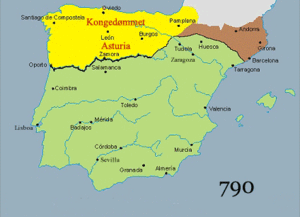


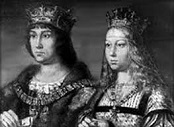
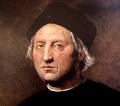



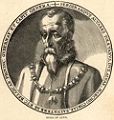
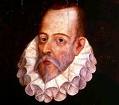
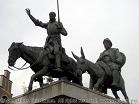























TLW's Spainscope™ (Spain Historyscope) |
By T.L. Winslow (TLW), the Historyscoper™ |
© Copyright by T.L. Winslow. All Rights Reserved. |
Original Pub. Date: July 23, 2017. Last Update: Aug. 11, 2025. |










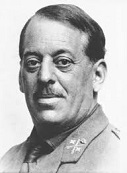





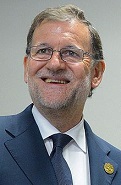
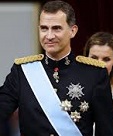
Westerners are not only known as history ignoramuses, but double dumbass history ignoramuses when it comes to the history of Spain. Since I'm the one-and-only Historyscoper (tm), let me quickly bring you up to speed before you dive into my Master Historyscope.
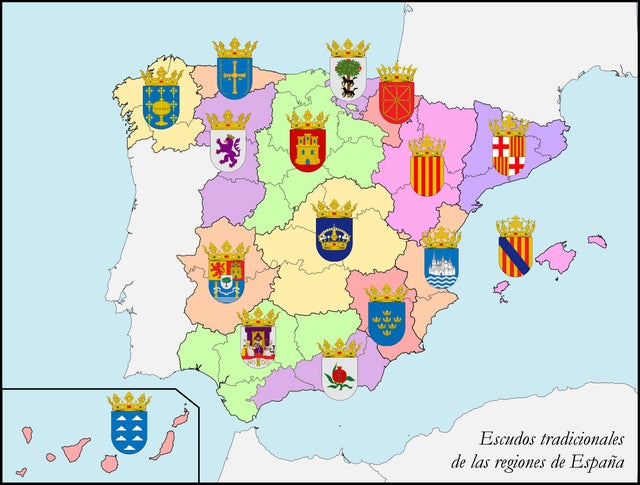
Spain is interesting from a modern perspective because it is situated at the N end of the Strait of Gibraltar, attaching it to N Africa, which allowed a massive Muslim invasion in 711 C.E. that took until 1492 C.E. to repel, during which time the Spaniards absorbed some Moorish blood and some of the cruel haughty supremacist Muslim attitudes, which they merged into their Roman Catholic faith and proceeded to inflict on the Americas, Philippines et al., creating a rich global sea empire that slowly broke down and came apart as Spain went republican then fascist then Communist, only to see the globalist anti-Roman Catholic Commies conspire to open the gates to Muslim immigration in the 21st century and start the hell all over again with modern weapons in the hopes that they will survive to clean up the mess and foist a One World Government, let's hope not.
Spain has always been part of the Wild West of Europe, so isolated that its monarchs got too inbred and regularly went mad. Of course that was centuries after the Muslim invasion of 711 C.E., when they began dosing on Arab and African blood, developing that proud cruel black-eyed black-haired line of models that ended in Zorro.
According to Bible-thumpers, the first inhabitants of Spain were descendants of Noah's son Japheth, who lived in SW Europe and Spain, which the Bible calls Tarshish - the original Tarship Enterprise?
About 40M B.C.E. the herbivorous Hyrax (Gk. "shrewmouse") (order Hyracoidea) (closest living relative to the elephant?) appears in Africa and the Middle East; later when the Phoenicians discover the Iberian Peninsula, they confuse rabbits with hyraxes and name it I-Shapan-im ("land of the hyraxes"), becoming Hispania.

About 12M B.C.E. hominid primate Anoiapithecus brevirostris, with a "modern" flat short face with high cheek bones, nasal aperture wide at the base, and deep palate is found in the Anola River region in Catalonia, Spain, starting with the fossil named "Lluc" in 2009.
About 5M B.C.E. according to evolutionists, the Gibraltar Dam keeping the Atlantic out of the Mediterranean breaks, causing the Zanclean Flood (Deluge), flooding the Mediterranean desert with 1 mi. of saltwater within 50 years, creating the 40-mi. x 9-24 mi. x 1K ft. deep Strait of Gibraltar, with entrance at the Pillars of Hercules incl. the Rock of Gibraltar (world's most famous rock?) on the S point of the Iberian Peninsula, and Mt. Abila (Abyla) (Sierra Bullones) (Monte Hacho) in Ceuta, N Africa, or Jebel Musa in Morocco, N Africa.
About 1.2M B.C.E. Pioneer Man (Homo antecessor) lives in Atapuerca in N Spain (until -800K), using stone tools; found in 2007; about 900K is the oldest evidence of cannibalism?
About 40K B.C.E. the Cave of El Castillo in Cantabria, Spain contains the oldest known cave art; handprints prove that most of the artists are women?
About 2500 B.C.E. the genetic composition of the first pan-European culture suddenly changes as the Yamna (Pit Grave) nomadic herders sweep into Europe from the steppes of Ukraine and Russia, bringing horses, wheeled carts, kurgan burial mounds, and the Proto-Indo-European language, along with marijuana, ending up dominating the gene pool.
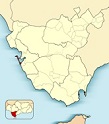
In 1104 B.C.E. the island city of Cadiz (Cádiz) in SW Spain (modern-day pop. 123K) is founded as Gadir (Agadir) ("wall", "compound") by the Phoenicians, becoming the oldest W Euro city to survive to modern times, trading with the city-state of Tartessos near the mouth of the Guadalquivir River until it is flooded out; a temple to the Phoenician god Melqart is built on the S end, later conflated by the Greeks and Romans with Hercules as Hercules Gaditanus and the Tyrian Hercules, becoming known for its oracle and wealth; later the Greeks claim that the city was founded by Hercules after his Tenth Labor, the slaying of 3-headed Geryon; the Herculeum (Temple of Melqart) is still standing in the 1st cent. C.E., giving rise to the myth of the Pillars of Hercules?; same as the Biblical city of Tarshish?
About 1100 B.C.E. the Phoenicians become totally independent of Egypt, and discover the Pillars of Hercules; the N one is Calpe (Aulibe) (later called the Rock of Gibraltar), and the S one is Abila (Sierra Bullones) at Ceuta on the N African coast (later called Jebel Musa); the Phoenicians crown them with silver columns to mark the limits of Mediterranean navigation; named for the labor of Hercules where he had to fetch the cattle of Geryon and bring them to Eurystheus, and smashes a hole in Mt. Atlas to reach the island of Erytheia, forming the Strait of Gibraltar (then narrows it to keep sea monsters out?).
About 1000 B.C.E. migrants from Iberia (Spain) bring their magnificent war horses to North Africa, which spread to Arabia.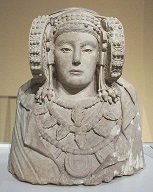
About 400 B.C.E. the Lady of Elche polychrome bust of a woman's head is made; discovered in 1897 in L'Alcudia, Valencia, Spain.
In the 3rd cent. B.C.E. the Romans establish a settlement called Matrice on the banks of the Manzanares River in Spain, which later becomes Madrid (modern-day pop. 3.1M/6.5M).
In 239 B.C.E. after Hanno quarrels openly with Hamilcar, the latter is promoted to CIC of the Carthaginian army, defeating an army of mercenaries sieging Carthage by driving them into a defile and massacring them, then reconciling with Hanno under pressure of the senate and sieging Tunis, defeating their leader Matho and reducing Utica; Hamicar forms a plan to conquer and found a new empire in Spain to use as a base for a final assault on Rome (begins -237).

In 238 B.C.E. after it revolts, a Roman fleet under plebeian consul Tiberius Sempronius Gracchus Major (the Elder) (first of the gens Sempronia to become consul) lays seige to the Carthaginian province of Sardinia (135 mi. W of the mouth of the Tiber River) and annexes it; he also scores a V over the Ligurians in NW Italy; in spring after receiving support from the senate to make up for the loss of Sicily and Sardinia, Carthaginian gen. Hamilcar Barca goes to Spain with his 9-y.-o. son Hannibal after making him swear eternal enmity against Rome, using the Phoenician colony of Gades as base to take on the Tartessians, Celts, and Iberians in S and W Spain.
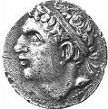
In 228 B.C.E. Hamilcar Barca (b. -275) is KIA in Spain in battle against the Vettones (drowns on the back of an elephant?), and his 2nd son Hasdrubal Barca ("lightning") (-245 to -207) (Hannibal's brother) takes command of the Carthaginian army in Spain, and finishes conquering it, founding the city of Carthago Nova (New Carthage) (Nova Cartagena), located on a peninsula with two excellent harbors and a nearby silver mine; the Romans forbid them to cross the Ebro River. Carthaginian gen. Hamilcar Barca died after allegedly founding the port of Barcelona (originally Barcino) in Spain in 218 B.C.E. (modern-day pop. 1.6M/5.3M).
In 221 B.C.E. Hasdrubal (b. -245) is assassinated, and the army chooses his 26-y.-o. lt. and brother-in-law Hannibal as CIC of the Carthaginian army, giving him the tools to implement his desire of revenge against the *!?!* Romans; first he has to finish subjugating Spain, which takes two years.
In 220 B.C.E. Hannibal assisted by 40 elephants captures the city of Helmantica (modern-day Salamanca) (pop. 5K) in NW Spain on the Tormes River (120 mi. W of modern-day Madrid) from the Celtic tribe of the Vettones.
In 219 B.C.E. Hannibal subjugates all Spain between the Tagus and Ebro (Iberus) Rivers, except for the pesky walled Greek colony of Saguntum (Sagunto) in E Spain (18 mi. N of Valencia) S of the Ebro River in the middle of his holdings, which had a "friendship" with Rome and used it to play politics with other Spanish cities, causing him to siege it for 8 mo. before taking it, during which he is severely wounded; using this as an excuse, the Romans eagerly void their agreement with Carthage not to interfere with affairs S of the Ebro River and demand that Hannibal be handed over; when they refuse, the Second Punic War (ends -201) between Rome and Carthage begins; Hannibal recruits Celtic tribesmen from Lacobriga (modern-day Lagos) and other towns in Spain and the Algarve to fight the Romans.
In 217 B.C.E. the first paid soldiers appear in Rome when troops are needed to be trained for invading Spain; the farmer-soldier begins to give way to the Roman legions? - the beginning of the end for the Celts, who don't keep up with the J uliuses and stay with amateur armies?
In 215 B.C.E. 30K Roman infantry and 2.8K cavalry under Scipio the Elder arrive in Spain and defeat 25K infantry, 4K cavalry, and 20 elephants under Hannibal's brother Hasdrubal Barca (-245 to -207) in the spring at the Battle of Dertosa (Ibera) on the S bank of the Ebro Riever conquering all of Spain and cutting off Hannibal's supply lines. Hiero II (b. -308) dies after a quarter cent. of peace, and his 15-y.-o. grandson Hieronymus (Hieronymos) (-231 to -214) becomes the last king of Syracuse, getting caught up in the intrigue between Rome and Carthage, allying with what he thinks is the winning team, Carthage, which proves to be the wrong one - where's your nature valley?
In 210 B.C.E. Publius Cornelius Scipio the Elder is made Roman cmdr. (gen. extraordinary) of Spain; until the Romans conquered it around 210 B.C.E., Spain is a hodgepodge of tribes from all over the region incl. Celts, Phoenicians, and Greeks.
In 209 B.C.E. Scipio the Elder suddenly invades and captures New Carthage (Carthago Nova), the Carthaginian capital of Spain.
In 208 B.C.E. Scipio the Elder defeats Hannibal's brother Hasdrubal Barca (-245 to -207) at the Battle of Baecula in Spain, but fails to stop him from crossing the Pyrenees.
In 206 B.C.E. Hannibal is bottled by the Romans into Calabria in Italy's heel; meanwhile Roman gen. Scipio the Elder wrests Spain from Hamilcar Barca of Carthage at the Battle of Ilipa (Silpia) 10 mi N of modern-day Seville in S Spain, using the new Reverse Cannae formation to outwit them, and conquers Cordoba (Kart-Juba = "city of Juba") (modern-day pop. 326K); Spain now becomes a cash and slave cow for the Barca family of Rome; Scipio founds the city of Italica (5 mi. N of modern-day Seville) nearby for his wounded Roman soldiers, later becoming the birthplace of oman emperors Trajan and Hadrian; the 8th cent. B.C.E. city Seville on the Guadalquivir River (modern-day pop. 703K/1.5M) is conquered and renamed Hispalis, becoming a market-industrial city, while Italica goes residential; the ancient city of Granada in Bastetania (modern-day pop. 237K) is conquered and renamed Municipium Florentinum Libertanum.
In 201 B.C.E. the Second Punic War (begun -219) ends with a total Roman V; Carthage agrees to allow Rome to annex Spain, to give up all of its naval fleet except 10 vessels, to pay 10K talents, and to agree not to wage war without Rome's permission; never-say-die Hannibal then immediately begins preparing to renew the struggle, amending the constitution, reducing govt. corruption, and fixing city finances; Salamanca becomes a Roman military station on the road from Augusta Emerita (Merida) to Asturica Augusta (Astorga).
In 197 B.C.E. the Romans establish the province of Hispania Citerior (Nearer Spain) along the E coast (modern-day Valencia, Catalonia, Aragon), with capital at Tarraco (modern-day Tarragona), and Hispania Ulterior (Further Spain) in the S (modern-day Andalusia), with capital at Curdoba (modern-day Cordoba), sparking the Iberian Revolt (ends -195); the Romans put down a revolt of the Celtic Turdetani tribe in the Baetis (modern-day Guadalquivir) River Valley in S Farther Spain (Hispania Ulterior), along with other rebel tribes in Nearer Spain (Hispania Citerior), giving them control of a band along the S and E coasts.

In 195 B.C.E. Marcus Porcius Cato the Elder (-234 to -149) becomes Roman consul, and is given command of the whole pesky Spanish peninsula, putting down a rebellion in the NW and lower Ebro River Valley before taking on the Turdetani and Celtiberian tribes in the S.
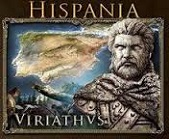
In 143 B.C.E. the Third Numantine War (ends -133) in Numantia (W Spain/Portugal) begins when Lusitanian leader (since -147) Viriathus (-180 to -139) leads a revolt against the Romans, scoring several Vs until his own men murder him in his sleep after the Romans under Macedonicus defeat the Arevaci in NC Hispania; "It seemed as if in that thoroughly prosaic age, one of the Homeric heroes had reappeared." (Theodor Mommsen)
About 60 B.C.E. the Romans make Helmantica (modern-day Salamanca) in the Roman province of Lusitania in NW Spain a civitas (political community) on the Via de la Plata (Silver Way) trade route, which connects with Emerita Augusta (modern-day Merida) to the S, and Asturica Augusta (modern-day Astorga) to the N, building it a large bridge over the Tormes River.
In 19 B.C.E. the Cantabri (Cantabrians) (modern-day (Basques) in NW Spain and SW France, known for car-door ears and their Euskera (Euskara) language unrelated to anything else known are defeated by the Romans under Marcus Agrippa, ending the Cantabrian Wars (begun -29), and NW Spain is completely conquered and absorbed into the Roman province of Hispania Tarraconensis (ends 459 C.E.) N of Hispania Lusitania (modern-day Portugal) and Hispania Baetica (modern-day Andalusia) - until they invent gunpowder and Coca-Cola to make kalimotxo AKA cold pussy?
On Oct. 12, 40 C.E. according to Catholic tradition, the Virgin Mary appears to St. James the Elder by the banks of the River Ebro in Spain, instructing him to build her a church, giving him a wood statue of herself along with a column of jasper wood; he eventually returns to Jerusalem and is executed by Herod Agrippa in 44, after which the chapel is destroyed, but the precious statue and pillar are protected by the people of Zaragoza.

In 64 C.E. poet Martial (Marcus Valerius Martialis) (38-103) comes to Rome from Spain and becomes a client of the Spanish house of Seneca Minor, through which he finds a patron in Lucius Calpurnius Piso, writing witty epigrams for money.
In 74 C.E. Roman emperor Vespasian gives Latin rights to all of Spain.
On Jan. 24, 75 C.E. Roman emperor #14 (117-38) Hadrian (Publius Aelius Hadriana) (d. 138) is born in Italica (near Seville), Spain, becoming the first bearded Roman emperor; his family comes from Hadria, Spain via Picenum; father Aelius Hadrianus Aferis is a 1st cousin of Trajan; mother Domitia Paulina comes from Cadiz, Spain; his father dies at age 9, and he is raised by his 2nd cousin Trajan, who takes him to Rome to get an education for five years, after which he returns to Italica to hunt until age 18, then returns to Rome to work for the govt.; tall, wears a comb in his hair, along with a full beard to cover blemishes on his face; cures his provincial accent by intensive study of Latin.

On Jan. 27, 98 C.E. Roman emperor (since 96) Nerva (b. 35) dies from apoplexy after ruling only a year and a half, and his hand-picked Spanish-born heir (#2 of the Five Good Emperors) Marcus Ulpius Trajanus (Trajan) (53-117) becomes lucky (to the Romans, but tragic to the Christians, Jews et al.?) Roman emperor #13 (until 117) at Colonia Agrippina (Cologne) in W Germany on the Rhine, becoming the first non-Italian-born (born in the provinces) Roman emperor; he had already been picked by Nerva, so succession was smooth for a change; Nerva becomes the last emperor to be buried in the Mausoleum of Augustus (no one else has the nerva?)
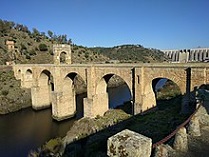
In 104-106 C.E. the Alcantara (Alcántara) Bridge is built in Alcantara (Arab. "the bridge"), Extremadura, Spain by order of Roman emperor Trajan.
In 193 C.E. Toledo, Spain is annexed by the Roman Empire.
Christianity spread to Spain early on. On Sept. 25, 303 C.E. bishop-martyr St. Fermin (b. 272) is beheaded in Amiens, France; starting in in 1591 the San Fermin Festival in Pamplona, Spain is founded, featuring eight 3/4-ton bulls chasing drunken revelers down a 900-yard cobblestone street corridor; originally held on Sept. 25, it begins running from noon on July 6 to midnight on July 14 starting in 1592; by the 20th cent. there are eight bull runs during the 9-day festival, one each morning at 8 a.m. - advice: stay in front? Too bad, anti-Semitism found a home in the Spanish Christian community early on too. In 306 the Synod (Council) of Elvira in Spain results in 89 canons, incl. the earliest ecclesiastical ordinance requiring celibacy for clergy, prohibiting images in churches, sexual intercourse and intermarriage between Christians and Jews, or even eating together - I've been celibate all year; I sell a bit, and give away some too?

In 312 C.E. Roman emperor (306-37) Constantine I (the Great) (Flavius Valerius Aurelius Constantinus) (271-337) had an alleged vision of Christ that caused him to legitimize the underground cult, then make it the official religion of Rome, triggering a giant civil war that lasted most of the cent., leaving the empire so weak that it was made short work of by the German Vandals and Goths, falling in 476. The civil war was not only with the pagans, but with the heretic Arians, esp. the Goths, who went for Christ but didn't go for the Trinity and the idea of the divinity of Christ. To this day there are Arians all around, incl. the Jehovah's Witnesses and the Muslims.
In the 5th cent. C.E. the Roman Catholic Church divides up the Roman Empire for admin. purposes: the Diocese of Gaul, with the Rhine River as the N boundary; the Diocese of Spain, incl. Portugal and Morocco; the Diocese of Britain, which excludes Scotia (modern Ireland) and Pictland (modern Scotland); the Prefecture of Italy, divided into the N Diocese of Italy, run by the Langobards, and the S Diocese of Rowe (Goth Italy), incl. Sicily, Corsica, Sardinia, and the Diocese of Africa; the Prefecture of Illyricum incl. Greece, Albania ("land of the eagle") and Yugoslavia W of the Danube; the Prefecture of the East incl. Turkey through Egypt.
In 409 C.E. the Vandals, led by Genseric leave Toulouse and overrun Aquitaine, then break into Spain through the Pyrenees, along with the Suevi and Alans, causing a civil war.
On Aug. 24-27, 410 C.E. after deposed emperor Honorius regains power, and Visigoth king Alaric I and his 40K-man army march down Italy yet one more time, and depose and imprison puppet Attalus, then stage a short siege marked by on-again-off-again negotiations, they enter through the Salarian Gate and sack Rome (say again?), leaving churches alone since they're still Christians, if heretic Arians, then after the emperor refuses to negotiate they head S towards Italy's granary in N Africa; Alaric I dies on the way to Sicily after losing his fleet and being turned back, and is buried in the bed of the Busento River; his brother-in-law Ataulf (Atawulf) (Athavulf) (Athaulf) (Ataulphus) (-415) from Narbonne in Gaul succeeds him, vowing to destroy the very name of Rome (home of the heretic Nicean Council crowd of bishops?), causing head bishop Pope Innocent I to leave the city until 412, while Ataulf invades Spain with his large Visigoth army by the end of the year; the woes of the prostrate city cause St. Augustine of Hippo (354-430) in North Africa to produce his 22-vol. escapist work (about a holy Augustus ruling an invincible holy city of Rome?) The City of God (De Civitate Dei Contra Paganos), as the real City of God is no longer able to protect what's left of the Roman Catholic Western Roman Empire from the heavy G.I. Joe and hairy Barbie-doll barbed Arians (barbarians)?; he at first claims "Behold, from Adam all the years have passed, and behold the 6,000 years are completed", but as the world shows no sign of ending he teaches that the Church should ditch the Book of Revelation because the Kingdom of God has actually arrived with its new political power, and imagines the Church as a worldwide empire acting as the instrument of the Holy Spirit to gradually transform the world, but preaches that the heavenly New Jerusalem should be the goal rather than the earthly one; he pushes the doctrine of "Totus Ubique" (the whole of God everywhere), invents the notion of the inner self, explores the inner relationship between the soul and God along with the idea of divine grace, and all with the cool language of a Roman-trained rhetorician, dissing the holier-than-thou Donatists by claiming that saints and sinners should all be part of the Catholic Church, and will be separated at the End of Time, with the mystical secret brotherhood of saints forming the City of God, and the sinners forming the Twin City of Hell; "That which man builds man destroys, but the city of God is built by God and cannot be destroyed by man", its role being "to inspire men and women to organize their communities in the image and likeness of the heavenly city"; the operational message is that Christians should get out and convert violent barbarians, with education relegated to survey courses on classical lit. (science and technology - fuggedaboutit), giving the Roman Catholic Church its Mission: Impossible for the next six cents.; too bad, his work is later used to justify persecution of heretics and Jews because membership in the Church is mandatory; in short, Da Dark Ages; Pope Innocent I laps it up and becomes a groupie? - duh, Jesus said be no part of this world (John 17:14-16)?
In 411 C.E. ahe Vandals make it to Seville in S Spain, giving the barbaric German Alan, Silingi, Suevi, and Vandal tribes possession of the Spanish (Pyrenean) Peninsula, causing the Roman province of Hispania to become kaput; the Suevi end up with the NW corner N of the Douri River, the Alans with the SW corner S of the Tagus River incl. Lusitania and Carthagena, the Silingi with Andalusia (Boetia), and the Vandals hang on in the center, leaving the Romans only in control in Catalonia, Aragon, and Navarre.
In 415 C.E. under Roman pressure the Visigoths under Ataulf invade Aquitania and burn Bordeaux, then cross the Pyrenees and invade the Iberian Peninsula, where the grateful Jews find protection under them from the Trinitarian Christians; Priscus Attalus is cut loose by the Visigoths, captured by gen. Constantius, then paraded, mutilated (forefinger and thumb cut off so he can't draw a bow), and exiled (he can still flog his bishop?); too bad, Ataulf is assassinated in Barcelona in his bath by a servant of his Gothic noble enemy Sarus, whom Ataulf had slain earlier; Sarus' clan the Amali immediately elect Sarus' brother Sigeric (-415) as king of the Visigoths, who murders Ataulf's six children from an earlier marriage "whom he tore, without pity, from the feeble arms of a venerable bishop", then treats his widow Galla Placidia (daughter of emperor Theodosius) "with cruel and wanton insult" by making her march 12 mi. on foot in a crowd of captives, pissing-off Ataulf's supporters, who assassinate him after only seven days and replace him with Ataulf's relative (member of the Balti clan) Wallia (Valia) (-419), who goes on to extend his domain over most of Spain and S Gaul (Aquitaine), and establish his capital in (don't say Holy) Toledo (Roman town of Toletum, "raised aloft") in very defensible C Spain, built on a hill and surrounded on three sides by the Tagus River, with the Roman praetorium called the Alcazar as fortress.
In 429 C.E. after receiving an appeal from Roman gov. of North Africa Gen. Bonifacius (Bonifatius) (Boniface), who is in revolt against Empress Galla Placidia and wants to set himself up as an independent ruler of Africa, Genseric leads his 80K Vandals (plus some Alans) from S Spain into North Africa - never invite a vandal into your home? In 430 the Vandals double-cross Gen. Bonifacius and begin sacking N Africa and sieging Hippo (until 431), causing him to accept the regency of Galla Placidia and defend Hippo with Gothic mercenaries; meanwhile the downtrodden indigenous pop. welcomes the Vandals as liberators from the Roman slave-master landowners. (St.) Augustine (Aurelius Augustinus) (354-430) is killed in the Vandal siege of Hippo. In 439 after a triumphal sack-happy progress through N Africa, the Vandals capture Carthage (until 534) while most of the pop. are watching the races at the hippodrome, make it their capital, and begin to master seamanship, creating a powerful navy that becomes a royal pain in the ass to the Roman govt., which is already disintegrating under the barbarian kingdoms of the West, going on to eagerly vandalize the soft underbelly of Europe; Geiseric makes Carthage his capital, and styles himself king of the Vandals and Alans after integrating the Alans of N Africa into his alliance.
In 466 C.E. Theoderic dies, and his son Euric (-484) becomes king #7 of the Visigoth kingdom of Toulouse, extending his rule from the Loire River to Gibraltar, and from the Rhone River to the Bay of Biscay (until 507); he Romanizes his kingdom, and draws up a law code combining Roman and German elements; meanwhile the kingship remains elective rather than hereditary, weakening it.

The Roman empire is suffering Seinfeldian shrinkage? In 475 C.E. a treaty is signed by Roman emperor Nepos with Euric, recognizing the Visigoths as masters of most of Gaul and Spain in exchange for restoring the Provence region of Gaul to imperial control; meanwhile Nepos appoints German tribesman (half-German and half-Roman?) Orestes Augustus (-476) (former asst. to Attila the Hun and husband of the daughter of Count Romulus of Petovio in Noricum) as master of soldiers (big mistake?), and after the Roman Senate abandons Nepos for his Eastern ties, Orestes stages a coup in Ravenna on Aug. 25, causing Nepos to flee to Dalmatia, where he rules with the backing of the Byzantine emperor and is recognized in Gaul; Orestes then gets his teenie son (by his Roman wife) (known only for his beauty) Romulus Augustus (Augustulus) (Momyllus) (b. 461) crowned as Western Roman emperor #94 (last) (until 476) on Oct. 31; "The appellations of the two great founders, of the city and of the monarchy, were thus strangely united in the last of their successors." (Gibbon, Ch. 36).

In Aug. 476 C.E. Flavius Odoacer (Odovacer) (435-93), Herulian (Visigoth) leader (chief gen.) of the Germanic tribes in the Roman army leads a revolt over a baksheesh matter (free homes in Italy), captures Ravenna, and kills Orestes in Pavia; on Sept. 4 (Sept. 7 Gregorian) (Mon.) Romulus Augustus (461-77?) (AKA Augustulus), the boy emperor of Rome at Ravenna becomes the Last Roman Emperor of the West as he is deposed and exiled to the castle of Lucullus in Campania in S Italy (with 6K pieces of gold per annum allowance) by Odoacer, who proclaims himself Roman emperor of the West, petitioning Emperor Zeno to recognize him as a patrician and ruler of Italy on behalf of the Eastern empire; Zeno accepts on the last part, but insists that exiled Julian Nepos (d. 480) remain Roman emperor, which he does, on coins; 753 + 476 - 1 = 1228?; the Dark Ages begin as 1.2K years of progress of civilization becomes kaput in Europe thanks to barbarians and Christian hostility to paganism, which to them incl. all pagan scientific, literary, historical, and cultural works, making all scientists forever suspect of being in league with the Devil by the Christian masses, an impediment that ends in ?, and the very idea of wanting to live for "the world" when the Kingdom of Heaven is dangled in front of your eyes to seem pointless?; "So it was in utter social decay and collapse that the great slave-holding 'world-ascendency' of the god-Caesars and the rich men of Rome came to an end" (H.G. Wells, Ch. 37) - so who is the last emperor, Romulus Augustus or Nepos?
In 486 C.E. Euric's son Alaric II (-507) becomes king #8 of the Visigoths in Spain, with dominion over Gallia Aquitania and Gallia Narbonensis, giving him the entire W end of the Mediterranean.
In the 6th cent. C.E. the Carthaginians give Spain its name, from "Spania", meaning "land of rabbits" - the habits in the land of rabbits fall mainly on the laps of abbots?
In 507 C.E. Arian Visigoth King Alaric II, jealous of Athanasian Frankish King Clovis I meets with him on a small island in the Loire near Amboise to settle their boundary, and they separate with kisses and hugs, then get on with the real business of fox and hare; Clovis holds an assembly of his princes at his capital in Paris, where he gives a speech, saying, "It grieves me to see that the Arians still possess the fairest portion of Gaul. Let us march against them with the aid of God, and having vanquished the heretics, we will possess and divide their fertile provinces", causing his hearers to vow not to shave their beards till they kick Visigoth butt; after his wife Clothilde suggests that he build a church to give some mojo to the expedition, he tosses his Francisca (battle axe), and orders the Church of the Holy Apostles (later the Abbey of St. Genevieve) built where it lands, making him the new Joshua and Gideon put together to his fans?; Ostrogoth king Theodoric of Italy tries to mediate, then sends troops to aid his rash Arian Visigoth kinsman Alaric II, whose troops, which incl. armed slaves outnumber those of up-and-comer Clovis I and his Franks, but are soft from a long period of peace, while the Franks are supported by the orthodox Gallo-Roman pop. and clergy, who are whipped up by exiled bishop of Rodez (since 506) (St.) Quintianus (Quinctianus) (-525), and after Clovis I visits the Shrine of St. Martin and gets a favorable omen from a Psalm being read mentioning the champions of heaven, and being led to the White Hart Ford over the Loire 40 mi. from Poitiers by a white hart (locals?), and receiving yet another divine omen in a flaming meteor suspended over the Cathedral of Poitiers, the Franks surprise and defeat the Visigoths at the Battle of Vouille (Vouillé) (10 mi. from Poitiers), and King David, er, Sampson, er, Clovis kills Alaric in single combat, then fights off two mad Goths trying to avenge him?; the victorious Franks capture Aquitania and turn it into the semiautonomous Duchy of Aquitaine (ends 768), then take Angouleme after the walls supposedly fall to the ground like Jericho in the Bible, and take control of SW Gaul, then siege Arles before the Ostrogoths finally arrive and rescue their Visigoth brothers with the loss of 30K German Franks and Burgundian allies, causing Clovis to sign a peace treaty, allowing the Visigoths to permanently withdraw over the Pyrenees, retaining only Septimania (a narrow coastal area in W Gallia Narbonensis from the Rhone River to the Pyrenees); Byzantine emperor Anastasius grants Clovis an honorary (pro) consulship, legitimizing his Roman Catholic rulership of France, and causing him to stage a big coronation at the Church of St. Martin complete with the diadem and purple, and call himself Augustus, later causing some to claim that the French monarchy is of Roman origin; Theodoric becomes regent of Alaric II's son Amalaric (until 526), making him king of the united splendid-noble Ostro-Visigoths; too bad, the blonde-blue Norse-German Arian Visigoths are a small minority of the pop. in Spain, and are rapidly Romanized, converted to Roman Catholicism, contained, isolated, and finally crushed and absorbed by the invading Muslims by 713.
In 560 C.E. the king of the Suevi in Spain flops from Arianism to swell the ranks of Trinitarian Roman Catholicism, causing the Visigoths to become the last Arians in the Iberian Peninsula.

In Jan. 587 C.E. new (since 586) Spanish Visigoth king Reccared (Recared) I (559-601) is converted to Roman Catholic orthodoxy by Bishop Leander of Seville, and officially renounces Arianism, causing most nobles and ecclesiastics to follow suit, merging with the majority of Hispano-Romans in Spain; it takes 111 years, but the pope gets his way and de-Arianizes the pesky Spanish Visigoths.
In June 638 the Sixth (6th) Council of Toledo outlaws non-Roman Catholics in the Visigoth kingdom of Spain, causing many forced conversions, many of them fake, esp. Jews - giving them a reason to not get mad but get even?

On Apr. 30, 642 C.E. after Tulga is overthrown by 79-y.-o. warlord Chindasuinth (Chindaswinth) (563-653) (cmdr. of the Basque frontier known for putting down pesky holdout Arians), he is elected king by a convention in Pampalica (modern-day Pampliega), and becomes king of Visigoth Spain, stopping any possible revolt by executing 200 noble and 500 petty noble Goths and banishing and confiscating property from a bunch of others without a trial; during his reign Muslims first begin ravaging the coast of Andalusia; with the assistance of Zaragoza bishop (St.) Braulio (Braulius) of Zaragoza (590-651) he draws up the Roman-like Liber Ludiciorum law code that supersedes the Breviary of Alaric used by the Hispano-Roman pop. and the Code of Leovigild used by the Gothic pop.; his son Recceswinth finishes it in 654.

On Jan. 20, 648 C.E. tough but old king Chindasuinth has his son (by wife Recciberga) Recceswinth (Reccesuinth) (-672) crowned co-king in an attempt to make the monarchy hereditary again, and he becomes the real ruler while his old fart daddy rummages for the cole slaw and founds the Monastery of San Roman de la Hornija near Toro by the Douro River for his bones to rest in, then dies in 653, a typical Christian hypocrite, "impious, unjust and immoral" (Bishop Eugene II of Toledo); during Recceswinth's reign the bishops take over the govt. and dominate the nobles, setting themselves up to pick the king and hold him to their policies.

In 672 C.E. Reccesuinth dies, and his son Wamba (Gothic "big belly") (d. 687) becomes Visigoth king of Spain (until 680), immediately facing a revolt by Hilderic, gov. of Nimes, who is supported by Bishop Gunhild of Maguelonne and the Spanish Jewish pop., causing Wamba to send a force under Hispano-Roman duke Flavius Paulus, who arrives in Narbonne, then flops and converts to Judaism and proclaims himself king, with Hilderic backing him, going on to send emissaries to the Basques to join up, pissing off Wamba, who personally leads his army to the W Pyrenees and kicks Basque butt; meanwhile Flavius Paulus is crowned with a golden crown given by late king Retarded, er, Reccared to the Church of Gerona, causing the Visigoth cities in Gaul and most of NE Spain to join his side, while Jewish hit men begin assassinating nobles loyal to Wamba, who regroups, marches into Narbonensis and Tarraconensis, and wins back most of the rebel cities.

In 672 C.E. Reccesuinth dies, and his son Wamba (Gothic "big belly") (643-87) becomes Visigoth king of Spain (until 680), immediately facing a revolt by Count Hilderic of Nimes, gov. of Nimes, who is supported by Bishop Gunhild of Maguelonne and the Spanish Jewish pop., causing Wamba to send a force under Hispano-Roman duke Flavius Paulus, who arrives in Narbonne, then flops and converts to Judaism and proclaims himself king, with Hilderic backing him, going on to send emissaries to the Basques to join up, pissing-off Wamba, who personally leads his army to the W Pyrenees and kicks Basque butt; meanwhile Flavius Paulus is crowned with a golden crown given by late king Retarded, er, Reccared to the Church of Gerona, causing the Visigoth cities in Gaul and most of NE Spain to join his side, while Jewish hit men begin assassinating nobles loyal to Wamba, who regroups, marches into Narbonensis and Tarraconensis, and wins back most of the rebel cities.
In 680 C.E. after he tries to reform the military and triggers a civil war, and is poisoned in Pampliega (near Burgos) under the orders of Ervig (Erwig) (Ervigio) (Euric) (643-87) (son of Ardabast from Constantinople and Chindasuinth's niece) (why does his name make me think of an earwig?), sick Wamba retires to a monastic habit and appoints Ervig his successor, and he is crowned as king of Visigoth Spain in Toledo on Oct. 31 (until 687), rewarding his co-conspirator Julian of Toledo (642-90) with the job of bishop of Toledo, who covers it all up in his Historia Wambae Regis (History of King Wamba); when the public doesn't buy the coverup, Ervig goes on to become a complete puppet of the bishops and nobles, giving them the keys to the cash register while his kingdom goes into decline and near civil war, and the pop. becomes immoral, setting it up for plucking like a ripe apple by the Muslims in 711?
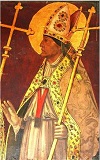
Pull over and let me drive? In 686 C.E. virulently anti-Semitic Spanish Roman Catholic #1 bishop Julian of Toledo (642-90) (of Jewish descent?) writes De Comprobatione Aetatis Sextae Contra Judaeos, expounding on the Messianic prophecies in the Bible with the intention of converting Jews while defending against Jewish arguments that Jesus is not the Messiah; it seems the Jews were converting Christians, despite the dire penalties? In 688 C.E. he writes Prognosticum Futuri Saeculi (3 vols.), a dissertation on death, the situation of souls before the final Parousia of Christ, and the resurrection of the dead, becoming a Medieval bestseller, with up to 2K mss. made by the 12th cent.

On Nov. 14, 687 C.E. after growing gravely ill (deja vu?), Ervig proclaims his son-in-law (husband of his daughter Cixilo) Egica (Egicca) (Ergica) (610-702) (an Aryan?) as king of Visigoth Spain (until 702), and retires to a monastery then kicks off to be with Christ; Egica goes on to be a mean king, punishing homosexuals with castration, prohibiting Jews from conducting business with Christians, passing laws treating fugitive slaves harshly, and upstaging Draco by amending a law requiring anybody accused of theft of goods worth 300 solidi or more to be tried via the caldaria (boiling alive in water) to anybody accused of theft however small (even a cabbage?) to get the govt.-provided parboiling.
On Nov. 9, 694 C.E. Spanish king Egica accuses the Jews of collaborating with the Moroccan Muslims, and orders them enslaved and their property confiscated - Jews don't get mad they get even, so the imminent takeover of Spain by Muslims is assured?
In 701 C.E. a plague that broke out in Constantinople in 698 reaches Spain, causing co-kings Ergica and Wittiza to move out of their capital Toledo, with Wittiza sends to Tui capital of the province of Gallaecia (modern-day Galicia, Asturias, Leon, and N Portugal) in NW Spain, building the Palas de Rei.
Late in 702 C.E. mean king Egica (b. 610) dies in his sleep, and his son (by Cixilo, daughter of King Erwig) Wittiza (Witiza) (Witiges) (686-710) (co-ruler since 694, and anointed when he reached 14 on Nov. 15/24, 700) becomes king of crumbling Visigoth Spain (until 710), starting out good by reversing some of daddy's exile and confiscation of nobles, causing the people to love him, then go bad and "indulge in a plurality of wives and concubines, encouraging his subjects to do the same", while recalling from exile and surrounding himself with Jewish advisers, who (obviously in league with fellow Jews of N Africa, to make the coming invasion a cakewalk?) successfully counsel him to break down the defenses of cities, demolish castlem, and turn spears into harrows in order to stop potential traitors, causing the clergy to hate him; he executes Duke Favila of Cantabria (son of Chinasuinth and father of Don Pelayo) and blinds and imprisons Duke Theodofred the Visigoth of Cordoba (b. 645), but Duke Favila's son Don Pelayo and Duke Theodofred's son Duke Roderic of Baetica escape to Italy to plan revenge.
In 703 C.E. the Eighteenth (18th) Council of Toledo in Spain, convened by king Wittiza forces the clergy (at Wittiza's orders) to marry, pissing off the Church, which later gets all of its acts suppressed and destroyed under Asturias king (757-68) Fruela (Froila) I (the Cruel); meanwhile, whatever the laws, fornication is king in crumbling Christian Spain?
In 710 C.E. after "tumultuously invading the kingdom with the encouragement of the Senate" with an army from Italy, exiled Roderic (Ruderic) (Roderick) (Roderik) (Ruderigus) (-711) defeats and captures Wittiza "the Wicked", then blinds and imprisons him in Cordoba, and is crowned the last king of Visigoth Spain by next year after usurping the throne from Wittiza's two sons Evan and Siseburto (who escape to Tangier); he then splits the kingdom with (Wittiza's 3rd son?) Achila (Aquila) (Agila) (Akhila) II (-714), with the SW (Lusitania and W Carthaginiensis incl. Toledo and Egitania, AKA Idanha-a-Velha) going to Roderic, and the NE (Tarraconensis and Narbonensis) to Achila II (nobody gets Gallaecia and Baetica?), which gives the Muslims their big opening; meanwhile Wittiza's family flees to Ceuta on the N shore of the Maghreb, allying with Jews and Arian Christians who hate the Roman Catholic bishops of the Visigoth monarchy.
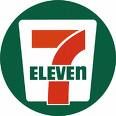


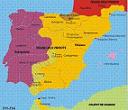


On Apr. 29, 711 C.E. after Visigoth Count Julian (Ilyan) betrays his post at Ceuta into the hands of the Muslims and flops to their side to get even with Visigoth king Roderic for dishonoring (knocking up?) his daughter Lady Florinda, and sends four boats for them, a recon army of 1.7K Muslim Moors (mainly Berbers and slaves, plus a few Arabs) under lame Berber Muslim Umayyad Gen. Tariq (Tarik) ibn Ziyad (Zeyad) ibn Abdillah (-720) (AKA Tariq the One-Eyed) (of the Berber Nefzaoua tribe?) (a native of Hamdan, Persia?) (who was a slave of North African gov. Musa ibn Nusayr before being freed) (known for a prominent forehead and a black hairy mole on his left shoulder?) cross the Strait of Gibraltar (Jabal al-Tariq) (Gabel al-Tariq) (mountain of Tariq) from Mauretania on a Sat. in the Muslim month of Shaban and Muslim year 92 (24th of Rejeb, June 19?), and invade Spain (al-Andalus), sending the boats back and forth several times until their entire army of 7K is over, then burning them so it's do or die; he obtains help from the Jewish community of Elvira (Ilbira) ("white", "trustworthy", "alert") in a suburb of Granada; after Visigoth king Roderic spots them and swears an oath to throw them back into the sea and begins approaching, Tariq gives his Famous Do-or-Die Speech, featuring the immortal soundbyte: "Remember that if you suffer a few moments in patience, you will afterward enjoy supreme delight", after which the pumped-up Allah Akbars charge the Spanish army, causing them to flee?; they then march to Cartagena and Cordoba before being driven back and regrouping and receiving reinforcements; on July 19 (Sun.) (two days before the end of Ramadan) King Roderic, who has holed-up in his castle in Cordoba and sent men to gather an army of 100K blonde Goths (mostly serfs?) attacks the puny 10K-to-18K man Muslim army (incl. Arabs and Syrians, but mostly kinky-haired blacks?) at the Battle of Guadalete (Rio Barbute) on the Jerez (Xeres) de la Frontera in SW Spain NE of Cadiz (later home of the fortified wine sherry), and is defeated after eight days after Wittiza's sons Evan and Siseburto make a deal and flop over to the Muslim side in exchange for keeping their "royal portion" of 3K farms, and Tariq personally kills Roderic, who is mounted on a litter between two mules with a jewel-encrusted silk awning (either that or he drowns in the river, as his body is never found, just his white horse), after which his relatives Sisbert and Osbert flee, causing the confused Visigoth army to flee in all directions, most N to Ecija near Seville; "Never was there in the West a more bloody battle than this, for the Muslims did not withdraw their scimitars from [the Christians] for three days", after which the Muslims fight northward, "not passing a place without reducing it, and getting possession of its wealth, for Allah Almighty had struck with terror the hearts of the infidels" (Al-Hakam); Cadiz remains in Muslim hands until 1264; the Muslims then take Toledo, and execute the nobles of the city for assisting in the flight of Egica's son Oppa (Oppas), who had been declared king, and flees to Seville, where he becomes bishop?; after the dead rich Goth princes are stripped of their bling, which is distributed among the 9K remaining Muslims, the news causes Muslims in N Africa to flock on over for the fun and games, after which they begin to outnumber the quaking Goths; meanwhile Achila succeeds as the positively last king of the Spanish Visigoths (until 714) (although he probably was already a rival co-king to Roderic), holding on in Zaragoza, Tarragona, and Gerona, plus the province of Narbonne (Narbonensis) (Septimania) in SE France, the last safe base on the far side of the Truth Booth (Pyrenees), which (too bad?) has a large Jewish pop.
In 712 C.E. Gen. Tariq's master Musa bin Nusayr lands in Spain, and the Moors go on to conquer Cordoba, Malaga, Granada, and the Visigoth capital of Toledo, being greeted as liberators by the oppressed masses, esp. the Jews, and executing many of the hated nobles; the Church of St. Acisclus successfully shelters the remaining Christian refugees, who are allowed to live with the usual restrictions; they also mop up Medina Sidonia, Seville, Merida and Saragossa, renaming the area Andalusia (Andaluz) (Arab. "land of the Vandals") (Vandalusia?); the S tip of Portugal is called Al-Gharb (Algarve) (Arab. "the west"), which is not reconquered until 1251; they also conquer Ebora (Evora) (Évora) (Gael. "of the yew trees") in C Portugal (until 1166); by 718 all of Spain (except Asturias in the Cantabrian Mts. in NW Spain) is conquered, and becomes a Muslim state with Tariq as gov., who builds a fortified castle along the NW slope of Gibraltar, which the Muslims hold until 1309; under the command of his master Musa ben Nusayr (a Berber recognized by Jews as of the tribe of Simeon) the Jews are freed, and a period of prosperity for them begins in Spain, along with Christians, who are treated generously and protected from excesses by the new govt., making it one happy haven in a dark Christian Europe?; too bad, just as they are getting ready to cross the Pyrenees and take the rest of Europe, the jealous caliph summons Musa and Tariq to Damascus, where Tariq dies? - the whole invasion was a Jewish conspiracy to wrest control of Europe from the papacy, but if so, too bad the caliph messed it up for them? The Muslims in Spain begin creating the Duero Desert on the Christian (N) side of the Duero River, which becomes a permanent rabat (Muslim frontier fort); "To keep the [northern] Christians in their place it did not suffice to surround them with a zone of famine and destruction. It was necessary also to go and sow terror and massacre among them... If one bears in mind that this brigandage was almost continual, and that this fury of destruction and extermination was regarded as a work of piety—it was a holy war [jihad] against infidels - it is not surprising that whole regions of Spain should have been made irremediably sterile. This was one of the capital causes of the deforestation from which the Peninsula still suffers. With what savage satisfaction and in what pious accents do the Arab annalists tell us of those at least bi-annual raids [across the ribat]. A typical phrase for praising the devotion of a Caliph is this: 'He penetrated into Christian territory, where he wrought devastation, devoted himself to pillage, and took prisoners." ... At the same time as they were devastated, whole regions were depopulated... The prolonged presence of the Musulmans, therefore, was a calamity for this unhappy country of Spain. By their system of continual raids they kept her for centuries in a condition of brigandage and devastation." (Louis Bertrand)
On Apr. 5, 713 C.E. after holding out for two years before being defeated, Visigoth count Theudimer (Theodemir) (-743) of SE Spain signs a treaty with Muslim emir Abd al-Aziz ibn Musa, submitting to Muslim rule ("the patronage of Allah"), with the right to keep worshiping at their Catholic churches, while having to pay a per capita tribute of one dinar in cash, four jugs of wheat, barley, grape juice, and vinegar, two jugs of honey and oil, and half this for slaves; all enemies of the Muslim conquerors are to be handed over and not sheltered; the Muslims begin calling the region Tudmir; meanwhile the Moors begin the conquest of the Ebro River Valley, and take Zaragoza (ancient Caesaraugusta).
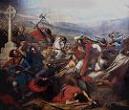
On Dec. 16, 714 C.E. Pepin II of Herstal (b. 635) dies at the wrong time after his legitimate 2nd son (by 1st wife Plectrude) Grimoald (Grimaud) II the Younger (mayor of the palace of Neustria since 695) is assassinated by orders of king (since 680) Radbod of Frisia (father of Grimoald's wife) while en route to visit the tomb of St. Lambert in Liege, and he names his illegitimate son (by Theodelinda or Theudesinda of Frisia) Theudoald (Theodald) (706-41) as his heir, with the kid's plucky grandmother Plectrude (Plectrudis) (652-718) (1st wife of Pepin II of Herstal) as regent, but doesn't have time to install him in power; seeing their chance, Grimoald's illegitimate (we try harder?) brother (by concubine Alphaida) Charles Martel "the Hammer" (686-741) seizes his lands and offices, while Dagobert III ignores Theudoald's claims and appoints Ragenfrid (Ragenfried) (ON "beautiful advice") (-731) as mayor of the palace of Neustria and Burgundy, after which he is proclaimed by the nobles (until 718).
In 714 C.E. the Moors capture the Spanish (earlier Roman) town of Arriaca (Caraca) in C Spain on the Henares River 35 mi. ENE of Madrid (until 1081), changing its name to Guadalajara (Arab. Wad-al-hajarah = "valley of the stones"); meanwhile Visigoth king Achila II dies in battle, and Ardo (Ardonus) (Ardabastus) (-720) becomes the definitely last Visigoth king of he-said-she-said Christian Spain (until 720), which has shrunk to the NE corner plus Narbonensis province on the far side of the Pyrenees, and soon, only Narbonensis.
In 714 C.E. Visigoth nobleman Count Cassius (Casius) converts to Islam under the name Banu Qasi, and after swearing personal allegiance to caliph Al-Walid I in Damascus he is allowed to keep his county in the Upper Ebro River Valley (Logorno and Southern Navarra) as an autonomous hereditary principality due S of Pamplona and the Bay of Biscay.

In 718 C.E. the Roman Catholic kingdom of Asturias (Asturia) in NW Spain S of the Bay of Biscay with capital at Cangas de Onis is founded in the inaccessible Pyrenees by Visigoths fleeing the Moors, led by former royal bodyguard (of Roderic) Pelayo (Pelagius) (681-737) (son of Count Favila of Cantabria), throwing the Moors back when they reach it next year; "A vital spark was still alive. Some invincible fugitives preferred a life of poverty and freedom in the Asturian valleys; the hardy mountaineers repulsed the slaves of the caliph." - Edward Gibbon.

In summer 722 C.E. the Battle of Covadonga sees 300 Christian soldiers of Asturias under Pelayo score their first V in Spain against the Moors since the 711 invasion after the Muslims who got their butts kicked last year in France under Anbasa ibn Suhaym al-Kalbi make the mistake of trying to save their reps by assisting N Iberian gov. (since 720) Munuza and fellow Berber Al-Kama in taking on the pesky rebel Christian stronghold of Asturias called Covadonga (protected by a narrow valley), and used traitor Bishop Oppas of Seville (son of Egica) to try and talk them into surrendering, which just pissed them off, after which the Muslims tried a frontal attack and were ambushed by some of Pelayo's men hidden in a cave, after which they tried to leave Asturias and were greeted by the pissed-off Christian pop., who emerged from their villages with hidden weapons and killed hundreds of Allah Akbars. Munuza (who kidnapped and married Pelayo's sister Ormesinda, who poisoned herself on her wedding day, pissing Pelayo off more) fled, and was killed personally by Pelayo in Proaza, Trubia or La Felguera, after which the stragglers reported back that Pelayo only had "thirty infidels left, what can they do", but never tried attacking them again. This V was later taken to mark the start of the Spanish Christian Reconquista (reconquest of Spain) by 12th cent. Christian propagandists. One of the first reconquered cities was the seaport of Gijon (Gijón) (ancient Roman town of Gigia or Gijia) on the Bay of Biscay (20 mi. NE of Oviedo), way later figuring big in the Siege of Gijon in the Spanish Civil War on July 19-Aug. 16, 1936. Meanwhile the madass Arabs sans Tariq bypassed them and decided to cross the Pyrenees. Did you figure out yet that modern-day Muslims who act outraged at horrible Zionist Jews who want to reclaim little ole Israel because they were there first and their god Jehovah promised it to them, are descendants of Muslims whose god Allah promised the entire Earth to them, all they had to do was go out and kill, fuck, and brainwash their way as they went, and play dumb afterwards, no need for history lessons, we got it, you take it and we'll declare jihad again?

In 732 C.E. after invading France in the spring, advancing rapidly down the Garonne River Valley, and sieging and burning Bordeaux, then defeating Duke Odo the Great of Aquitaine and destroying the basilica of St. Hilary at Poitiers, then spreading out through Orleans, Auxerre, and Sens until their chief recalls them to concentrate on the rich abbey of St. Martin of Tours, tall, agile, 46-y.-o. French hero (mayor of the palace) Charles Martel "the Hammer" (686-741) (who had not intervened because the kingdom of Aquitaine was not his problemo?) stops 90K lightly clad (no winter clothing) Umayyad troops, which Martel makes use of by delaying battle for a week, and whose cavalry have the technological breakthrough of the stirrup, led by Yemenite emir (gov.-gen. of al-Andalus) Abdul Rahman (Abd al-Rahman) (ar-Rahman) ibn Abdullah al-Ghafiqi (-732) on Oct. 10 at the Battle of Poitiers (Tours) (Battle of the Palace of the Martyrs) between Poitiers and Tours, and kills Rahman and captures their plunder, killing vast numbers of Saracens while losing only 1.5K Franks, breaking their spirit and causing them to retreat permanently behind the Pyrenees by 759, becoming the start of the Spanish March (Marca Hispanica), the military buffer beyond the province of Septimania (founded in 795 by Charlemagne) that acts as a defensive barrier between the Frankish Carolinian Empire (Carolingian Septimania, Duchy of Gascony, Duchy of Aquitaine) and the Umayyad Moors of Al-Andalus; the Muslim cavalry have the ' technological breakthrough of the stirrup, while the Franks are mainly on foot, except for the Merovingian knights; on the Christian side this is one of the greatest battles short of Armageddon itself, but in Islamic accounts it is described only as a skirmish, and the troops are described as having lapsed from the faith and become greedy, falling into looting and rioting, giving Martel the chance to reform and counterattack, while Odo the Great gets them in a squeeze from the rear?; the Berber revolt in N Africa keeps them from sending another force?; Martel gains the nickname "the Hammer" for his big V - TiVo, TiVo, TiVo?
In 737 C.E. king (since 718) Pelagius of Asturias (b. 681) dies, and is succeeded by Pelagius' only son Favila (Fafila) (Favilac) (-739) becomes king #2 of Asturias (until 739), founding the Church of Santa Cruz in the capital of Cangas de Onis, housing the Cruz de la Victoria, an oak cross allegedly carried by Pelagius at the Battle of Covadonga, becoming the first Christian church built in spain after the Muslim invasion of 711.

In 739 C.E. king (since 737) Favila is killed by a bear while hunting, and is succeeded by his brother-in-law (husband of his sister Ermesinda) Alfonso (OG "ready for battle") I (the Catholic) (693-757) as king #3 of Asturias (until 757), who assigns generous shares of lands conquered from the Muslims to the Church, and uses the clergy as a counterweight to the aristocracy.
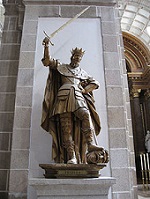
In 757 C.E. king (since 739) Alfonso I the Catholic (b. 693) in Cangas de Onis, and his eldest son Fruela (Froila) I (the Cruel) (722-68) becomes king #4 of (until Jan. 14, 768), going on to suppress an uprising of the Basques and marry trophy wife Basque babe Munia (Munina).
On Nov. 25, 761 C.E. the city of Oviedo (Ovetum) in Asturias, NW Spain is founded by Abbot Maximo and Fromestano, uncle of Fruela I the Cruel with the erection of a church to St. Vincent, becoming the capital of Asturias in the 9th-10th cents; the Sudarium is stored there for safekeeping.
On Jan. 14, 768 C.E. after king (since 757) Fruela I the Cruel (b. 722) assassinates his brother Vimerano and names Vimerano's son Bermudo as his successor (gaining him his nickname), he is in turn assassinated in Cangas de Onis, and his cousin Aurelius (Aurelio) (740-74) is chosen by the nobility as king #5 of Asturias until (774), and is crowned in Sama, going on to put down a rebellion of serfs, becoming the first anti-seignorial revolt in the Iberian Peninsula; he also negotiates a peace with the Muslims in S Spain via an exchange of bribes in San Martin del Rey Aurelio (part of Langreo), causing the place to become known as El Entrego.
In 774 C.E. king (since 768) Aurelius (b. 740) dies in his capital of Cangas de Onis, and his cousin-in-law Silo (-783), husband of Adosinda, daughter of Alfonso I becomes king #6 of Asturias in Spain (until 783), moving the capital from Cangas de Onis to Pravia in the Valle del Nalon at the terminus of the Roman Asturica Augusta, going on to extend his frontiers to Galicia and defeat a Galician revolt in Monte Cubeiro in Lugo province.
In 783 C.E. the Spanish Saracens (Moors) invade Madrid.
In 783 C.E. king (since 774) Silo dies, and gov. of the palace Alfonso II of Asturias (the Chaste) (759-842), son of Fruela I the Cruel and Munia the Basque, who was under the guardianship of his aunt Adosinda (Silo's husband) is elected king #7 of Asturias in Spain; too bad, with help from Abdur Rahman I, Alfonso I's illegitimate son (by a Moorish serf woman) Mauregatus the Usurper (-789), seizes the throne of Asturias from Alfonso II, forcing him to retreat to Alava and becoming king #8 of Asturias (until 789); Mauregatus secures peace with the Muslims by promising to pay an annual tribute of 100 white Christian virgins, half of noble and half of ignoble birth (until 791).
In 789 C.E. king (since 783) Mauregatus the Usurper dies in Pravia, and in 791 Alfonso II of Asturias is restored as king of Asturias (until 842), going on to discover the alleged tomb of Apostle Santiago (James, son of Zebedee) in Compostela, making it into a pilgrimage town.
In 797 C.E. after gov. Zeid of Barcelona rebels against Cordoba and fails, he hands Barcelona to Louis I the Pious of the Franks (until 799), who creates Visigoth nobleman Borrell (-820) as count #1 of Cerdanya, Urgell, and Osona on the iffy N border of Cordoba.
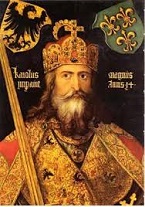
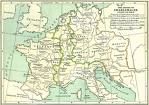
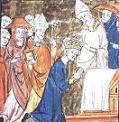
The Lion Trinity is born in Rome? On Dec. 23, 800 C.E. after being sent back to Rome by Charlemagne and kept in protective custody, Pope Leo III clears himself of Roman accusations of moral turpitude and is reinstated; on Dec. 25 (Christmas Day) Frankish king (since 768) Charlemagne (Carolus Magnus) (Karl der Grosse) (Charles the Great) (742-814) is crowned emperor of Rome by surprise as he is kneeling in prayer in the 4th cent. Church of St. Peter in Rome before St. Peter's tomb, and triple-threat Leo III pops up from the shadows and places a crown on his head, hailing him as Caesar and Augustus, with the rehearsed clergy and people shouting "Charles Augustus, crowned great and peace-loving emperor of the Romans, life and victory", causing Charlemagne to allegedly utter the soundbyte that he would never have entered the church that day if he had known the pope's intentions (he wanted to be crowned emperor in France sans the pope so he wouldn't owe him?); the First Reich begins (ends 1806); the term "Holy Empire" is used in 1157, and "Holy Roman Empire" in 1254; after trying to mollify the outraged Byzantines for stealing their imperial title by satisfying himself with "emperor, king of the Franks and Lombards", Charlemagne tries to erase the lost years since 476 C.E. and refound the Western Roman Empire (ends 1806), while his master the pope tries to make himself the supreme bishop of Christendom, reserving the title of Pope (Papa), and introducing azymes (unleavened bread) into the Eucharist; too bad, Leo III becomes the only pope in history to bow before an earthly king, but he later backtracks and asserts the right of popes to crown all emperors, who must bow before them, and later artists redraw the scene to make it PC; "... the only authentic nobility is the nobility of Visigothic/Merogingian origin. The Carolingians, then all others, are but usurpers. In effect, they were the functionaries of the king, charged with administering lands - who, after transmitting by heredity their right to govern these lands, then purely and simply seized power for themselves. In consecrating Charlemagne in the year 800, the Church perjured itself, for it had concluded, at the baptism of Clovis, an alliance with the Merovingians which had made France the eldest daughter of the Church" (Mathieu Paoli); too bad, after stirring up the Norse Vikings, the resurrected Western Empire lasts less than 30 years after Charlemagne's 814 death (until 843); at first the game is to challenge the Byzantine emperor's claim of universal temporal sovereignty and not get their butts kicked, and of course he refuses to recognize Charlemagne's newfangled imperial title, but Big C starts out to change their minds the tried and tested way with negotiations to marry Empress Irene and unite the two empires (by the power of Dick Almighty, oh those Slim Tips?); meanwhile new Roman emperor Charlemagne requires all males above age 12 to renew their oath of allegiance to both the empire and Christianity, making it a capital offense to refuse baptism, and tries to improve the admin. by dividing the empire into districts ruled by counts who defend the frontiers, while new missi dominici (imperial messengers) are hired to create a comm network; like any good emperor wanting to promote culture, he imports architects from Ravenna to Worms and Cologne to develop Romanesque Architecture (characterized by semi-circular arches, massive thick walls and symmetrical plan, sturdy pillars, groin vaults, large towers, and decorative arcading), and has poems sung to music at his court, which becomes a mecca for learned men from the empire, building up libraries of Greek and Roman mss., while Charlemagne sets an example by learning Latin and Greek (as well as German) and writing a grammar of his own language; his court has twelve peers called Paladins (from "palatine") (palace officers) (great knights) (douzepers) (actually a later fiction mixing up the old Roman Emperor and his Palatine Hill with King Arthur of Britain and his Knights of the Round Table); he also establishes a fleet to guard against Viking attacks in the Channel, causing them to invade Germany instead, discovering the Faroe (Sheep) Islands.
In 800 C.E. a Christian force led by Charlemagne's son Louis I the Pious of Aquitaine, Duke Sancho I of Gascony, Count Leibulf of Provence, and Count Bera of Barcelona marches over the Pyrenees and sieges Muslim-held Barcelona (until 801).
In 801 C.E. Charlemagne's forces conquer NE Spain as far as the Ebro River, and capture Barcelona after a 2-year siege, creating the county of Catalonia in NE Spain, with Barcelona as capital of the Spanish March, controlled by the Christian heirs of Charlemagne (until 987), which never becomes part of Muslim al-Andalus and thus doesn't get Muslimized or Arabized in its language or architecture.
In 803 C.E. Charlemagne's forces, led by Guillaume d'Orange ("Fierabrace") avenge the 793 Battle of Villedaigne by invading Spain, freeing Andorra from the Saracens, and capturing Barcelona, causing him to become a principal hero in French Chansons de Geste (OF "songs of heroic deeds or lineages"), incl. Chanson de Fierabras ("brave arm") (about a Saracen knight who is the son of king Balan of Spain, and who fights Roland and the Twelve Peers, converts to Christianity, and fights for Charlemagne), and Chanson de Aliscans (a fictional battle in Alescans, France between the pagans and Christians).
In 809 C.E. Aznar (Asnar) Galindez I (-839) is created count of Aragon and Conflent in Spain by Pepin I of Aquitaine (until 839).
In 814 C.E. speaking of making every day Christmas, the alleged tomb of St. James the Greater, brother of St. John the Evangelist is discovered by a shepherd at Santiago de Compostela (Compostella) (Sp. "St. James of the Field of the Star") in NW Spain when a star miraculously exposes it in the campus stella (field of the star); the first pilgrim is king Alfonso II of Asturias; the first money-making church is erected by 899, after which the town becomes the center of a Spanish nat. cult, and one of the great centers of pilgrimage in W Europe, raking in the bling and encouraging the Reconquista; St. James the Greater never preached in Spain, and the first mention of his mission there is in the 7th cent.

In 824 C.E. Frankish counts Aeblus (Ebalus) (Ebles) and Aznar Sanchez of Gascony (-836) lead a large force over the Pyrenees to establish control of Pamplona (Navarre), but are defeated by a Basque army on the way at the Second Battle of Roncesvalles (Roncevaux Pass) and taken captive, after which Aznar is released but Aeblus dies in captivity; Basque noble Inigo I Iniguez (Íñigo I Íñiguez) (Arista) (Aritza) (Aiza) (Basque "the oak", "resilient") (Basque "Eneko" = my little love) (781-852) is elected as Christian king #1 of Pamplona (Navarre) on the S slopes of the W Pyrenees (until 852) in Spain, allying with the Muslims inside his kingdom against outside enemies; his descendents are referred to as demons in the 11th-12th cent. Song of Roland, which calls Charlemagne's horse Tencendur (Tencendor) (Lat. "strife").
In 825 C.E. Alfonso II of Asturias takes Naron and Anceo in Galicia (NW Spain) from the Muslims, helping him repopulate parts of Galicia, Leon, and Castile with Christians.
In 825 C.E. Murcia (Arab. Mursiyah) in SE Spain is founded by emir Abd ar-Rahman II of Cordoba, becoming known as "Europe's orchard".
In 826 C.E. Frankish Duke Bernard (Bernat) of Septimania (795-844), son of William of Gellone becomes count of Barcelona (until 832, and 835-44); in 837 he becomes count of Carcassonne, becoming one of the main counselors of HRE Louis the Pious, fighting the Moors and the local Visigothic nobility.
In 834 C.E. Sunifred I (-848), son (in law?) of Count Bello of Carcassonne is appointed count of Urgell and Cerdanya by HRE Louis the Pious, causing him to conquer Cerdanya from Banu Qasi ally Aznar Galindez I next year, followed by Urgell in 838.
In 841 C.E. the Moors invade Barcelona and march through Cerdanya toward Narbonne, until they are stopped by Sunifred I, causing Charles II the Bald to appoint him count of Barcelona, Ausona, Besalu, Girona, Narbonne, Agde, Beziers, Lodeve and Nimes - he's registered at Big Balls and Beyond?
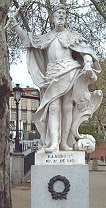
In 842 C.E. king (since 783) Alfonso II (b. 760) dies without an heir, and while designated successor Ramiro I (son of Bermudo I) is away in Vardulius marrying his 2nd wife Paterna, the impatient nobles elect his son-in-law Visigothic count Nepocian (Nepotian) of Asturias as king, pissing-off Ramiro I and causing him to raise an army in Galicia and defeat him at the Battle of the Bridge of Cornellana by the Narcea River, chasing down the fleeing whimp and blinding and putting him in a monastery, after which Ramiro I (790-850) becomes king of Asturias (until 850), eliminating the system of election of a king by nobles that caused the problem, giving up the S push against Cordoba and spending his reign dealing with pesky Moors and Vikings.

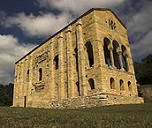
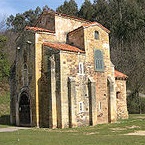
On Feb. 1, 850 C.E. king (since 842) Ramiro I (b. 790) dies after leaving a court of great splendor with its own unique Asturian architecture that prefigures Romanesque architecture, along with the Church of Santa Maria del Naranco on the S side of Mount Naranco 2 mi. from Oviedo, and the nearby Church of San Miguel de Lillo, and his son Ordono (Ordoño) I (821-66) becomes king of Asturias in NW Spain (until May 27, 866), becoming the first ascend hereditarily without an election by the nobles; he starts out by quashing a rebellion of the Basques, who are supported by Muslim gov. (banu qasi) Musa ibn Musa of Zaragoza, then stops an intended Moorish assault on Vardulas on the Ebro River.
In 850 C.E. Christian priest Perfectus tells a group of Muslims in Spain that Islam is not positive, and is arrested and executed.
In 851 C.E. the Cordoba Martyrs, 48 downtrodden Mozarabs (Arabic-speaking Christians) who are mad as Hell and just can't take it anymore and begin blaspheming Islam in order to protest their ninth-rate status begin being martyred under true-blue Muslim warrior and patron of the arts Abd ar-Rahman II of Cordoba (ends 859).
In 852 C.E. Inigo I Iniguez Arista (b. 781) dies, and his son Garcia Iniguez I becomes king of Pamplona (Navarre) (until 882), after which former ally Musa ibn Musa decides to go with Cordoban emir Muhammad I, causing him to look to Asturias as a new ally.
In 854 C.E. after the Muwalladun of Toledo revolts, aided by its large Mozarab and Muladi (mixed parentage) pop, and obtains the aid of Ordono I of Asturias, the Battle of Guadacelete is a V over the Moors, after which Ordono decides to repopulate the "Duero Desert" between Asturias and the Duero River, along with towns in Leon, Astorga, Tui, and Amaya.

On May 27, 866 C.E. Ordono I (b. 831) dies, and his son Alfonso III (the Great) (848-910) becomes king of Asturias (until 910), going on to consolidate his kingdom at the expense of the weakening Muslim Umayyad princedom of Cordoba in al-Andalus, and ordering three chronicles written that claim that his kingdom is the rightful successor to the old Visigoth kingdom of Spain; his kingdom begins to be called Galicia or Oviedo instead of Asturias.
On Aug. 11, 897 C.E. Count Wilfred the Hairy of Barcelona (b. ?) dies after creating the County of Osona (Ausona) and repopulating and restoring the bishopric in the depopulated Muslim-Christian borderland of Vic, which becomes the capital; he directs his sons Count Wifred (Guifre) II (Borrel I) (-911) of Barcelona, Count Miro II (878-927) of Cerdanya, and Count Sunifred (Sunyer) II (870-950) of Urgell to govern his counties of Barcelona, Urgell, and Cerdanya jointly, with eldest Wifred supposedly the first among equals; too bad, they soon split ranks, and Wifred takes Barcelona, Girona, and Ausona, Sunifred takes Urgell, and Miro takes Cerdanya, Conflent, and Berga; Sunifred II ends up going on the offensive against the pesky Moors to the S.
In the 10th cent. written Spanish is first made in La Rioja, NC Spain by monks in the margins of Latin texts.
In the 10th cent. the spiritual center of Judaism begins switching from Mesopotamia to Spain, where Muslim protection from Millennium Fever is a selling point.
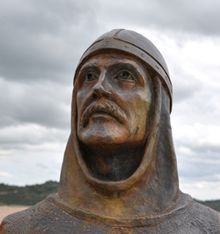
In 905 C.E. after a coup sponsored by Count Galindo Aznarez II of Aragon desposes his father Garcia Jimenez, Sancho Garces (Garcés) I (860-925) (nephew of the Count of Ribagorza) becomes king of the Kingdom of Pamplona on both sides of the W Pyrenees on the S end of the Bay of Biscay in Spain (between Asturias on the W and Gascony on the E) (until 925), ending the line of Inigo I Iniguez Arista (founded 824); the capital and main city is Pamplona (Iruña) in the Basin of Pamplona linking the Pyrenees Mts. with the Ebro River Valley; the county of Navarre in NC Spain becomes a kingdom after Sancho Garces I proclaims himself king and ends his alliance with the Emirate of Cordoba, going on to expand S along the Ega River to the Ebro River incl. Najera and Calahorra, shrinking the domains of the Banu Qasi family.
In 909 C.E. Alfonso III the Great of Spain moves his seat of govt. to Ociedo, but only lasts a year after surving a conspiracy by his sons Garcia, Ordono, Gonzalo, Fruela, and Ramiro backed by Garcia's father-in-law that causes him to briefly flee to Boiges.


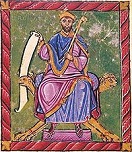
On Dec. 20, 910 C.E. king (since May 27, 866) Alfonso III the Great (b. 848) dies in Zamora after building the Church of Santo Adriano de Tunon (Tuñón) in Tunon, Asturias on Jan. 24, 891), and his kingdom is divided among his three sons by Jimena of Pamplona, with eldest son (by Jimena of Pamplona) Garcia I (871-914) becoming king of the new macho-sounding Kingdom of Leon (León) (Sp. "lion"), 2nd son Ordono (Ordoño) II (873-924) becoming king of the new Kingdom of Galicia (modern-day Portugal) (until 924) (also Leon after Garcia I dies in 914), and youngest son Fruela (Froila) II of Asturias (875-925) becoming king of tried-true Asturias based in Oviedo (until 925), which is still considered to have primacy, taking on the job of consolidating the region later called Castile and keeping its counts in check.
In 917 C.E. the Battle of San Esteban de Gormaz on the border of Castile and Leon is a V for Ordono II of Leon and Sancho Garces I of Navarre over Cordoba emir Abd-ar-Rahman III, allowing them to take Arnedo and Calahorra next year, causing him to organize a revenge tour called the Campaign of Muez in 920 against the County of Castile along the Duero River, which is Leon's S line of defense.
On July 26, 920 C.E. after emir Abad-ar-Rahman III of Cordoba recovers Osma and San Esteban de Gormaz from Leon, he invades Navarre and defeats Sancho Garces I of Navarre and Ordono II of Leon at the Battle of Valdejunquera, and takes the bishops of Tui and Salamanca captive; he has so much booty that he decides to leave Pamplona without crushing it, allowing Sancho Garces I to team with Bernard I of Ribagorza and Amrus ibn Muhammed (son of Muhammed al Tawil) and take Monzon, joining Basse-Navarre to his dominions and extending them to Najera; meanwhile Ordono II blames his D to the failure of the counts of Castile to come at his call, causing him to have them killed at Tejares, which causes Navarre to seize La Rioja and annex Najera and Viguera.
In 924 C.E. (since 910) Ordono II (b. 873) dies, and his eldest surviving brother Fruela II of Asturias (-925) becomes king of Leon (until July 925), assassinating Gebuldo and Aresindo (sons of Olmundo who claim descent from Wittiza) and exiling Olmundo's son Bishop Frunimio of Leon, alienating the nobility.
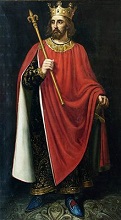
In July 925 C.E. king (since 910) Fruela II (b. 875) dies of leprosy, and his son Alfonso Froilaz (the Hunchback) (-926) succeeds, but the sons of Ordono II (Sancho Ordonez, Alfonso IV, and Ramiro II) make a comeback and depose him, and he flees to become king of Galicia (Portugal) (until 926), while they split the rest up, with Alfonso IV (the Monk) (890-933) becoming king of Leon and Asturias (until 931), and Sancho Ordonez (895-929) taking Froilaz down and becoming king of Galicia next year (until 929).

On Dec. 11, 925 C.E. king (since 905) Sancho Garces I (b. 860) dies, and since his 6-y.-o. son Garcia Sanchez I (919-70) is too young, his brother Jimeno II Garces (-931) becomes king of Pamplona (until 931).
On May 29, 931 C.E. Jimeno II Garces dies, and his 12-y.-o. nephew (Sancho I's son) Garcia Sanchez I (919-70) becomes king of Pamplona (until 970), with his mother Toda Aznarez as regent (until 934), fighting off usurpers until they make a deal with Cordoba caliph Abd-ar-Rahman III to allow his troops to pass through their territory on their way to invading Leon.

In 931 C.E. king (since 925) Alfonso IV the Monk abdicates and enters a monastery, and his brother (son of Ordono II) Ramiro II (900-51) becomes king of Leon, Asturias, and Galicia (until Jan. 1, 951); too bad, next year Alfonso changes his mind and tries a coup, and is defeated, blinded and sent back to his cloister in Sahugun, where he dies in 933.
In 936 C.E. Sunifred II of Barcelona campaigns against the Muslims (until 937), defeating the kingdom of Valencia incl. the Germanic Quadi tribe.
In 936 C.E. an army of rebel Mozarabs (Arabic-speaking Christians) led by Mutarraf is massacred by the Moors in their stronghold in Calatayud, Spain.
In 936 C.E. Abd ar-Rahman begins the new 112 hectare (0.43 sq. mi.) Medina Azahara (Madinat az-Zahra) (Al-Madina az-Zahira) ("shining city") Palace (named after his favorite wife) on the W outskirts of Cordoba as the de facto capital of al-Andalus, attempting to rival the Fatimids of Ifriqiya and the Abbasids of Baghdad; after the death of his son Al-Hakam II in 976 it ceases to be the main residence of the caliphs; in 1010 it is sacked during a civil war, and abandoned.
On July 19, 939 C.E. the 100K-man army of Abd-al-Rahman II of Cordoba arrives at Simancas and encounters an eclipse of the Sun, which spooks his troops and keeps them from fight for two days, after which they are defeated on July 21 by a coalition of Ramiro II of Leon, Ferdinand Gonzalez of Castile, and Garcia Sanchez I of Navarre in the Battle of Simancas (Alhandega) (al-Khandaq); the border of Leon on the Duero River advances to the Tormes River; the Muslims lose Madrid to the kingdom of Leon; Rahman blames the D on traitors in the Arabic part of his army and quits participating personally in military campaigns, turning into a lecher always lazing around in the harem.

In 948 SC.E. unifred II of Barcelona (-950) retires to a monastery, leaving the counties of Barcelona, Girona, and Ausona to his son Borrell II (-993), and the county of Urgell to his son Miro I (-966), who rules jointly.
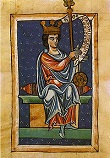
On Jan. 1, 951 C.E. king (since 931) Ramiro II (b. 900) dies, and his son Ordono (Ordoño) III (925-56) becomes king of Leon (until 956), dealing with the claims of his half-brother Sancho I the Fat of Castile (who is backed by Navarre and Castile), followed by an internal rebellion in Galicia, plus attacks from the Muslims of Al-Andalus, which end after raiding as far as Lisbon in 955 and capturing a load of booty, causing Abd-ar-Rahman III to decide to concentrate on the Fatimids of N Africa and signs a peace with him before launching an expedition against Tunis.
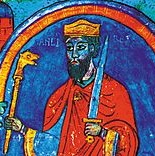
In 956 C.E. king (since 951) Ordono III (b. 926) dies, and his morbidly obese half-brother (son of Ramiro II) Sancho (Sp. "sacred") I (the Fat) (933-66) becomes king of Leon, only to be deposed in 958 by a group of nobles led by Fernan Gonzalez of Castile for being too obese, sending him into exile in Andalus, where he goes on a weight loss program under treatment by Hasdai ibn Shaprut while seeking help from his grandmother Toda to regain his throne, making a treaty with the Moors then taking Zamora in 959 with the help of nobles from Leon and Navarre, regaining his throne in 960, after which he reneges on his treaty with the Muslims and is raided several times, watching his Castilian and Galician nobles champ at the bit and go independent until he is finally poisoned in 966 - the original Sancho Panza or Sacred Belly?

On Dec. 19, 966 C.E. king (since 956) Sancho I the Fat (b. 932) is poisoned, and his 5-y.-o. son Ramiro III (961-85) becomes king of Leon (until 984), with mother Teresa Ansurez being put in a convent while his aunt Elvira Ramirez takes the title of queen-regent; after a peace treaty with caliph al-Hakam II expires, the Cordobans resume attacks on his realm; meanwhile when he reaches the age of majority and marries Sancha, daughter of Count Gomez of Saldana, he decides to become an absolutist monarch, pissing-off Galicia and Castile and causing them to fight for independence.

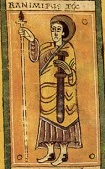
In 970 C.E. king (since 925) Garcia Sanchez I (b. 919) dies, and his son Sancho II Garces (Garcés) Abarca (Sp. "sandal") (936-94) becomes king of Aragon and Pamplona (until 994), going on to use the title of king of Navarre in 987 for the first time ever; on his succession he recognizes his younger brother Ramiro Garces (Garcés) (-981) as king of the new independent kingdom of Viguera in La Rioja (until 981); Viguera is reunited with Pamplona in 1005.
In 976 C.E. the Codex Vigilanus (Albeldensis) illuminated ms. is completed in the Monastery of Abelda in Pamplona, becoming the earliest known Western ms. containing the Arabic numerals 1-9 (no zero), along with the canons of the Councils of Toledo and a copy of the Liber Judiciorum.
In 978 C.E. Abu Aamir Mohammed ibn Abdullah ibn Abi Amir seizes power, making the new caliph Hisham II a prisoner in Medina Azahara, and becoming chief minister (caudillo) of the Umayyad caliphate of Cordoba (Al-Andalus) (until 1002) under the title of Hajib ("chancellor"), going on to carry out successful campaigns against the pesky Christians in Leon, Navarre, Pamplona in NW Spain, and Catalonia in NE Spain, while temporarily stopping the racial and religious separation plaguing Mauretania (W Africa).

In 981 C.E. Al-Mansur (Almanzor) (Abu Aamir Muhammad bin Abdullah ibn Abi Aamir, al-Hajib al-Mansur) of Cordoba (938-1002) crushes his last rival, his father-in-law Ghalib al-Nasiri, then assumes the title of "al-Mansur" (Almanzor) (Almansor), "the Victorious", and dedicates himself to crushing the Christians out of the Iberian Peninsula, eventually taking part in 57 campaigns, all victorious; too bad, he brings in Berber mercenaries, who get ideas and end up taking over; he starts out by destroying Zamora in Leon, deporting 4K POWs, after which Hisham II of Cordoba makes Leon a tributary; he then defeats Ramiro III of Leon, Garcia Fernandez of Castile, and Sancho II of Pamplona in the Battle of Rueda 7 mi. from Tordesillas, causing Ramiro III of Leon to abdicate, and Sancho II to travel personally to Cordoba bringing gifts to Mr. Victorious and arranging to marry his daughter Urraca the Basque (later called Abda) to him, after which she has son Abd al-Rahman Sanchuelo (983-1009), who becomes Caliph Hisham II's chief minister and later tries to usurp the Cordoban throne.
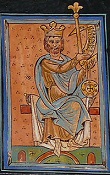
On Oct. 15, 982 C.E. after the nobles of Galicia rebel against weak tyrant Ramiro III of Leon and proclaim Ordono III's son Bermudo (Vermudo) II the Gouty (953-99) as king of Galicia (which later becomes Portugal) he is crowned in the Cathedral of Santiago de Compostela (until 999).

In Sept. 999 C.E. king (since 982) Bermudo II the Gouty (b. 953), who has been forced to travel by litter all year dies in Villanueva del Bierzo, "the poor king tormented in life by the sword of Almanzor and in death by the vengeful pen of a bishop" (Perez de Urbel); his 5-y.-o. son Alfonso V (the Noble) (994-1028) becomes king of Leon and Galicia (until Aug. 7, 1028), with his mother Elvira Garcia (978-1017) of Castile and Count Menendo Gonzales (Mendo Goncalves) (965-1008) as regents (until 1007).
On May 22, 1010 after fleeing to Toledo and obtaining the aid of Barcelona Count (since 992) Ramon Borrell (972-1017), his brother, Urgel (pr. ur-HELL) Count (since 992) Ermengol (Armengol) I (974-1010), and Count Bernard of Besalu (AKA Taillefer) (-1020), Muhammad II of Cordoba defeats the Berbers of Umayyad caliph #5 (since 1009) Sulayman (Sulaiman) II ibn al-Hakam al-Mustain (-1016) at the Battle of Aqabat al-Baqar, then defeats them again in June at the Battle of the Guadiaro River near Ronda, then reclaims Cordoba, supported by Slav Gen. Wadih; Catalonia is now safe from Moorish dominion; in July Muhammad II is assassinated, and Hisham II is restored as caliph by his followers (until 1013); on Sept. 1 Ermengol I dies after being wounded in Cordoba, and next year his 6-y.-o. son Ermengol (Armengol) II (the Pilgrim) (1004-38) becomes count #2 of Urgell (until 1038), with his uncle Ramon Borrell as regent (until 1018); never-say-die Sulayman II al-Mustain and his beaten Berbers encamp in Madinat al-Zahra and siege Cordoba for the next 2.5 years; meanwhile the city of Granada is destroyed.
In May 1013 Cordoba surrenders to the Berbers, who sack it and proclaim Sulayman II al-Mustain as caliph again (until 1016); Hisham II disappears soon after; during all the commotion there is a big slaughter of Jews in Cordoba, caused by their intervention in fights for the caliphate.

In 1013 Cordoba-born Muslim surgeon Abu al-Qasim Khalaf ibn al-Abbas al-Zahrawi (Albucasis) (b. 936) dies, after becoming the first to identity hemophilia as hereditary and describe an abdominal pregnancy; he leaves the 30-vol. Kitab al-Tasrif (The Method of Medicine), becoming the leading Euro medieval textbook on surgery until the Renaissance, causing him to be called "the Father of Surgery".
In 1021/2 Jewish Neo-Platonic philosopher Solomon ibn Gabirol (Solomon ben Judah) (AKA Avicebron) (d. 1050/1070) is born in Malaga, Cordoba, Spain, going on to originate the doctrine that all things incl. intellect and soul are composed of matter and form, emphasizing the divine will.
In 1025 Gipuzkoa Province is Basque Country in N Spain is first mentioned, becoming the province where the Basque language is most extensively used in modern times.

On Aug. 7, 1028 king (since 999) Alfonso V the Noble (b. 994) is killed by an arrow while sieging the Muslim-held town of Viseu in N Portugal, and his son Bermudo (Vermudo) III (1010-37) becomes king of Leon (until Sept. 4, 1037), becoming the last king of the Perez Dynasty founded by Peter of Cantabria; in 1025 he is called emperor in Galicia.

In 1029 Count Garcia Sanchez of Castile is murdered by some exiled Castilian nobleman as he tries to enter the Church of St. John the Baptist in the city of Leon to marry Sancha of Leon, sister of Bermudo III of Leon, causing Sancho III of Navarre to claim the county of Castile in his wife's forgettable name and install their son Ferdinand I (the Great) (1017-65) as the new count of Castile (until Dec. 24, 1065), then force Sancha to marry Ferdinand in 1032, with Castile as her dowry; daddy Sancho then acts as overlord with the goal of permanently uniting Castile and Leon under the dynasty of Navarre, starting by seizing the borderlands between the Cea and Pisuerga Rivers N of the city of Leon.
On Nov. 29, 1031 Abbasid caliph (since 991) Al-Qadir (b. 947) dies, and his son Al-Qa'im (1001-75) succeeds him (until Apr. 2, 1075); Hisham III dies, and the Umayyad Caliphate of Cordoba is abolished, causing 40+ Muslim-ruled petty Abbasid kingdoms known as taifas (run by emirs) to spring up in Moorish Spain, the main ones being Badajoz (1009-94), Toledo (1010-85), Valencia (1010-94), Almeria (1011-91), Zaragoza (1018-46), Cordoba (1031-91), Granada (1013-90), and Seville (1023-91); meanwhile the former situation where the Christian kingdoms of N Spain had to pay tribute to the all-powerful caliphate of Cordoba begins to be reversed, and the fractured taifas end up paying tribute (parias) to them; when they call on brother Muslims from N Africa to help them, the latter try to absorb their taifas into their N African kingdoms, causing them to finally hire Christian mercenaries such as El Cid.
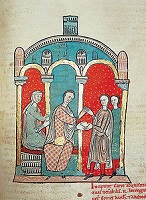
On May 26, 1035 Berenguer Ramon I the Crooked (b. 1005) dies, and his son Ramon Berenguer I "the Old" (1022-76) becomes count of Barcelona (until 1076), with his grandmother, manly woman Ermesinde of Carcassone as regent (until 1044); he goes on to make it #1 among the Spanish counties in Catalan, extending the borders W to Barbastro and N to Carcassonne and Razes (N of the Pyrenees), bldg. up a navy, and codifying Catalan feudal laws in the Ustages (Ustici) of Barcelona, the first full feudal law compilation in W Europe.

On Oct. 18, 1035 Imperator Totius Hispaniae Sancho III the Great of Navarre (b. 985) is murdered, causing the Jewish quarter of Castrojeriz to be slaughtered; although he had worked all his life to unite the Spanish Christian kingdoms, he divides his domains between his sons, after which it never becomes as powerful; Sancho III's eldest son Garcia VI Ramirez (the Restorer) of Navarre (1099-1150) gets Navarre incl. some territory of Old Castile, restoring the independence of Navarre from Aragon after 58 years; middle son Ramiro I of Aragon (1006-63) gets the split-off far-gone Kingdom of Aragon in NE Spain SE of Navarre, E of Old Castile, and NE of New Castile (with provinces Zaragoza, Huesca, and Teruel); youngest son Ferdinand (Fernando) (OG "bold voyager") (the Great) I of Castile (1017-65) gets the new kingdom of New Castile (old Moorish taifa of Toledo), with capital at Burgos (130 mi. N of Madrid) (capital of Castile-Leon until 1560), and continues his daddy's work of conquering Leon; meanwhile Bermudo III marches in and reclaims the crown of Leon, and works to recover the stolen territory between the Cea and Pisuerga Rivers.
On Sept. 4, 1037 the Battle of Tamaron (Tamarón) sees king (since 1028) Bermudo III of Leon (b. 1017) defeated and KIA by his brother-in-law Ferdinand I the Great of Castile (falls off his horse onto the spears of his own infantry?), and since Bermudo dies without an heir, his kingdom of Leon recognizes Ferdinand as king by right of his wife (Bermudo III's sister) Sancha, and he is crowned as king of Leon and Castile in the city of Leon next June 22 (until 1072), uniting Castile and Leon under the dynasty of Navarre, and making it #1 in Christian N Spain; after overrunning Moorish-held N Galicia, he sets up a vassal as count.
In 1039 Spanish king of Castile (since 1029) and Leon (since 1037) Ferdinand I the Great (1017-65) proclaims himself emperor of Hispania, which he claims is independent of the HRE.
In 1060 Ferdinand I of Leon and Castile imposes an annual tribute on Muslim Zaragoza; Zaragoza emir Al-Muktadir ibn Hud drives the Slavs from Tortosa after the pop. rises against their Slav ruler.
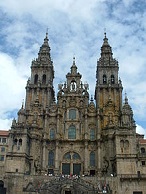
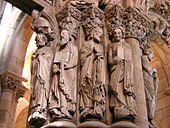
In 1060 the Romanesque Cathedral of Santiago de Compostela in Santigo de Compostela, Galicia, Spain is begun (finished in 1211), featuring the Portico of Glory (Portico da Gloria), commissioned by Ferdinand I of Leon and designed by architect-sculptor Master Mateo (1150-1217), finished in 1188; to the W is the Praza do Obradoiro (Port. "Square of the Workshop"). In 1075 St. James' Cathedral in Santiago de Compostela, Galicia, Spain is begun in the reign of Alfonso VI of Castile under new bishop Diego Pelaez after it becomes an episcopal see to house the alleged remains of you know who discovered in 814 on one of the main stops on the pilgrimage route (finished 1128).
In 1062 Ferdinand I the Great of Castile and Leon invades Muslim Toledo with a large army; emir Al-Mamun becomes a tributary of Castile; Ferdinand I invades Muslim Badajoz, and extracts tribute from emir Al-Mutadid of Seville, who steps down in favor of Abbad III al-Mu'tamid (1040-95), who becomes king #3 (last) of the Taifa of Seville (until 1091), the badass S section of Spain (except the SE corner); too bad, becoming vassals of Castile weakens Seville and softens it up for conquering by the Almoravids in 1091; al-Mudamid's soldiers fight under green flags with Islamic texts written on them, later becoming the green-white-green Arbonaida Flag of Andalusia.
In spring 1063 Ramiro I of Aragon sieges Graus in the Pyrenees in NE Spain at the confluence of the Esera and Isabena Rivers; emir Al-Muktadir of Zaragoza leads an army N accompanied by a Castilian contingent under Prince Sancho (future Sancho II); Rodrigo (Ruy) Díaz (Diaz) de Vivar (El Cid) ("the lord") is in the Castilian contingent; Ramiro I is KIA and the Aragonese flee on May 8; meanwhile Pope Alexander II sends an internat. force to Spain under his standard bearer William of Montreuil, which incl. Italian knights, Normans (Robert Crespin, Baron of Lower Normandy), Frenchmen (Wiliam, Count of Poitiers and Duke of Aquitaine), and Spaniards (Bishop of Vic, Count Ermengol II of Urgel); in early July the expedition sieges Barbastro in the Muslim Kingdom of Lerida; the emir of Lerida (the brother of Al-Muktadir of Zaragoza) makes no attempt to relieve the siege, and after 40 days the defenders are forced to surrender when a large stone falls from the walls and blocks the only water supply; 50K inhabitants are massacred or enslaved, and a large number of Muslim singing harem girls are taken back to France by William VIII of Aquitaine; Count Ermengol II of Urgel is left as gov. on behalf of Sancho Ramirez of Aragon; Seville feels obliged to pay the Christians tribute.
On Jan. 20, 1064 Ferdinand I of Leon and Castile sieges Coimbra, and takes it on July 9; the Muslim gov. who surrendered is allowed to leave with his family, but 5K inhabitants are taken captive, and all Muslims are forced out of Portuguese territory across the Mondego River; Ferdinand I retakes the area of Old Castile that had been annexed to Navarre by his father Sancho the Great.
In Apr. 1065 a civil war begins in Castile-Leon when Zaragoz emir Al-Muqtadir, aided by 500 knights from Seville sieges and captures Barbastro, killing the gov. Count Ermengol II of Urgel and putting the Spanish and French garrison to the sword; Pope Alexander II's crusade is kaput; meanwhile Al-Muqtadir breaks off relations with Castile, and Ferdinand I leads a punitive expedition into Zaragoza, taking Alquezar, then invading Valencia; despite being a Castilian tributary, Emir Mamun of Toledo leads a force in support of his son-in-law Emir Abd al-Malik; Mamun dethrones Abd al-Malik and incorporates Valencia into the Kingdom of Toledo in Nov.

On June 24, 1065 (Feast of St. John the Baptist) king (since 1037) Ferdinand I the Great (b. 1017) dies after falling dangerously ill and retiring, then dressing up as a monk and lying on an ash-covered bier in front of the altar of the Church of St. Isidore; his empire is divided between his three sons, with his provocative title of emperor of Spain retired, along with the title of count of Castile: eldest son Sancho II the Strong (1036-72) becomes king of Castile, middle son Alfonso VI the Brave (1037-1109) becomes king of Leon, and youngest son Garcia II (1042-90) becomes king of Garcia, er, Galicia (Portugal); he also gives the city of Toro to his daughter Elvira, and the city of Urraca to his other daughter Zamora; too bad, Sancho II wants it all, and the War of the Three Sanchos (Castile vs. Aragon and Navarre) (ends 1067) when Aragon severely mauls the Castilians at the Battle of Viana; the status quo is restored after the Zaragozan Vali of Huesca invades Aragon from the S.


On Dec. 30, 1066 the 1066 Granada Massacre sees a Muslim mob in Granada, Spain that was envious of his high position and inflamed by the anti-Semitic writings of Cordoban Muslim scholar Ibn Hazm (994-1064), storm the royal palace and murder Jewish vizier Joseph ibn Naghrela (ha-Nagid) (b. 1035), then massacre the Jewish pop. of the city, killing off 1.5K Jewish families, about 4K total, about the same as the Spanish Inquisition of 1478-1833 killed over several centuries (Islam is always light years ahead in the killing field?); poet Abu Ishaq, who helped to incite the pogrom composes a poem justifying it, with the soundbyte "Do not consider it a breach of faith to kill them, the breach of faith would be to let them carry on/ They have violated our covenant with them, so how can you be held guilty against the violators?"
In 1067 the Castilian army under Sancho II and Alferez Rodrigo Diaz de Vivar (El Cid) sieges Zaragoza, then lifts it after Emir Al-Muqtadir pays a large ransom and promises tribute.
On July 19, 1068 the Battle of Llantada (Llantadilla) on the banks of the Pisuerga River on the boundary between Leon and Castile sees the Castilians under Sancho II and El Cid defeat the Leonese; Alfonso VI of Leon flees, then leads a campaign against Badajoz, but withdraws when Emir Mamun ibn Dhi-I-Nun of Toledo intercedes; Badajoz becomes a tributary to Leon; the emir of Badajoz dies, and his two sons dispute the succession.
On Jan. 18, 1071 the Battle of Pedroso between Braga and the Cavado Riversees Garcia II of Galicia suppress the rebellion of his Portuguese subjects under Nuno II Mendes, who is KIA; in Apr. Garcia II is captured by his brother Sancho II of Castile, but purchases his release and retires to the court of his tributary Al-Mutamid of Seville, and Galicia is divided between his brothers Sancho II and Alfonso VI.

In early Jan. 1072 the Battle of Golpejera (Golpejar) sees Sancho II of Castile defeat and capture his brother Alfonso VI the Brave of Leon (1037-1109) near the Carrion River (25 mi. from Palencia), and imprison him in the Monastery of Sahagun, but he escapes and seeks refuge in Toledo with Almamun, whom he calls "a knight although a Moor"; on Oct. 7 Sancho II is assassinated while attacking Alfonso's men in Zamora, so Alfonso VI returns and inherits the joint kingdom of Leon-Castile (as Alfonso VI of Leon and Alfonso I of Castile) (until 1109), going on to reign 37 more years and become the most powerful Christian ruler in Spain, the self-proclaimed "emperor of all Spain", the stuff of which legends are made, protecting Muslims in his realm, minting coins with Arabic inscriptions, bedding refugee Muslim princess Zaida of Seville, marrying his daughters Urraca, Teresa, and Elvira to French princes, and pleasing the papacy by dumping the Mozarabic rite (missal of St. Isidore) for the Roman ritual; Alfonso VI donates the village of Valladolid to Count Pedro Ansurez (Ansúrez) (-1118), who becomes the first lord of Valladolid, ramping up its size starting with a palace, putting it on track to become the seat of the court of Castile and the capital of the Kingdom of Castile in 1469.
On July 19, 1074 El Cid marries Jimena (Ximena) Diaz (1046-1116), going on to have four children, one of whom dies with him on the battlefield. Philip I of France seizes Corbie,
In 1077 Alfonso VI the Brave of Leon and Castile bravely proclaims himself "emperor of all Hispania", and shocks his people shitless by importing 10K Arab-speaking and Arab-dressing Mozarab Christian settlers from al-Andalus into the Ebro Valley.
In 1079 the Battle of Cabra in S Spain sees Rodrigo Diaz (Díaz) (El Cid) defeat emir Abd Allah (Abdallah ibn Buluggin) (1056-91) of Granada, who is helped by Castilian Count García Ordonez (Ordoñez) (-1108) of Najera; El Cid is entrusted by Alfonso VI of Leon-Castile with collection of tribute from Seville and Cordoba.
In 1079 the Battle of Coria sees King Alfonso VI of Castile-Leon defeat Al-Mutawwakkil, Muslim emir of Badajoz, who renounces control of Toledo, allowing al-Qadir to be reinstated; a Leonese garrison is established at Zorita, E of Toledo.
In 1079 Alfonso VI and Queen Constance of Castile build the Monastery of Adelelmus in Burgos, Spain for St. Adelelmus (Aleaunie) (-1100), a rootin' tootin' military-trained Benedictine monk from Poitou, who becomes its abbot and helps with the fighting against the Moors on the side.
On Jan. 18, 1081 the Battle of Pedroso between Braga and the Cavado River sees Garcia II of Galicia suppress the rebellion of his Portuguese subjects under Nuno II Mendes, who is KIA; in Apr. Garcia II is captured by his brother Sancho II of Castile, but purchases his release and retires to the court of his tributary Al-Mutamid of Seville, and Galicia is divided between his brothers Sancho II and Alfonso VI.
In 1081 Rodrigo Diaz, Count of Vivar ("El Cid") (1043-99) (who is called El Campeador, from the Latin "campi doctus", meaning doctor of military arts) and his trusty warhorse Babieca (Bavieca) (Sp. "stupid") are exiled by Alfonso VI from Castile, and he enters the service of the Moorish ruler of Zaragoza.
In June-July the North Africa-based Almoravids ("al-Murabitun" = those who fight along the ribat of Muslim frontier fort) take Ceuta in N Africa on the S end of the Strait of Gibraltar, last outpost of the Zanata, and execute the ruler Al-Muizz ibn Suqut; during the summer Alfonso VI of Leon-Castile reaches Tarifa overlooking the Straits of Gibraltar, and partially reconciles with El Cid.
In fall 1084 after the Muslim Taifa kings ask his help in reconquering it from North African Muslim fundamentalist Morabitun (Almoravid) leader Yusuf ibn Tashfin (1061-1106), with the soundbyte "It's better to pasture camels than herd swine", the Castilians under king (since 1072) Alfonso VI the Brave (1037-1109) begin the Siege of Toledo in C Spain (ends May 25, 1085).
In 1084 the Muslim army of Zaragoza under El Cid defeats the Aragonese.
On May 25, 1085 Toledo is recaptured from the Muslims (who held it since 711) by Alfonso VI the Brave of Castile-Leon, who brings the Cistercian Order into Spain, with Gascon-born Bernard de Sedirac (d'Agen) (Le Sauvetat) (1050-1125) of France as the first archbishop of Toledo next year, and first primate of Spain in 1088, ending the isolation of the church of Leon-Castile from Sad Sack Rome; Muslims are allowed to remain and worship in their mosques, while Euros flock in to read books in their libraries; the capture immensely advances Christian knowledge of astronomy and revives the theory of the sphericity of the Earth, laying the foundations of the Renaissance; the Christians build a bizarre Hybrid Church of Toledo, with Arabic mosque architecture, complete with Arab inscriptions reading "Peace and Prosperity". '

The Almoravid Dynasty revives Muslim rule in Spain, only in a retro form? In spring 1086 the Castilians under Alfonso VI siege Zaragoza, but call it off when the backward black fundamentalist North African Berber Almoravids (Al-Murabitun) (Al-Morabiton) (those who fight along the ribat or Muslim frontier fort) (1040-1147) (backward horsemen from the W Sahara of the Lamtuna and Gudala tribes, known for riding to war wearing veils that only leave their eyes visible, who founded their capital of Marrakesh in 1062) heed a call from bi Abbadid (not Abbasid) ruler of Seville (1069-91) Al-Mutamid (Al-Mu'tamid) (1040-95) and land in the S; in June the 500-man Almoravid advance guard takes Algeciras, and the remaining 12K-20K soon follow, with al-Mutamid not realizing that their goal is to steal his kingdom until it's too late; the Castilians under Alvar Fanez (Fáñez) (Háñez) de Minaya (-1114) (El Cid's nephew and right-hand man) install Al-Qadir as emir of Valencia; on Oct. 23 the Almoravids under Yusuf ibn Tashfin defeat Alfonso VI at the Battle of Zalaca (Zallaqa) (Zagrajas) (Sagrajas) in Andalusia, killing 24K Christian soldiers and shipping their heads all over Andalusia and N Africa (Allah Akbar?); happy Tashfin returns to Morocco, while the Almoravids go on to conquer all of Spain between the Tagus and Ebro Rivers by 1090, thumping their Qurans and ending the Muslim high culture incl. science and art, descending Andalusia into pure retro science-hating head-lopping fundamentalist Muhammad darkness; in Dec. El Cid and Alfonso VI are finally reconciled; meanwhile 15-y.-o. William IX (the Troubador) (1071-1127), new duke of Aquitaine and Gascony and count of Poitou inherits some Muslim harem girls, finding out that they are like geishas and sing too, copying them and becoming the first troubadour - a Christian head is a Muslim tailfin?
In 1090 Rodrigo Diaz, Count of Vivar ("El Cid") and his trusty warhorse Babieca (Sp. "stupid") defeat Berenguer Ramon II for the 2nd time.
Early in 1091 after El Cid and Alfonso VI fail to reconcile at Granada, the Murabitun under Muhammad ibn al-Hajj take Cordoba
and the Guadalquivir Valley, then defeat a Castilian force under
In 1092 Ermengol IV (b. 1056) dies, and his son Ermengol (Armengol) V (Mollerussa) (1078-1102) becomes count of Urgell in Spain (until Sept. 14, 1102).

In May 1094 after a 20-mo. siege, El Cid (Rodrigo Diaz, Count of Vivar) (1043-99) captures Valencia, then defeats the Murabitun army of Muhammad ibn Ibrahim in Cuarte in a daring night attack; the Murabitun retreat to Jativa, and El Cid executes Ibn Jahhaf by burning him alive, then becomes ruler of Valencia, which incl. a large kingdom on the Mediterranean coast, striking an alliance with Sancho's son Pedro I of Aragon; El Cid claims to rule in the name of Alfonso VI, but is really independent, and both Christians and Moors serve in his govt. and army; meanwhile the Murabitun under Ibn Abi Bakr take Badajoz and Lisbon.
In 1097 El Cid allied with Peter I of Aragon defeats the Murabitun under Ali ibn al-Hajj at the Battle of Bairen (Bairén) S of Valencia; El Cid's son Diego is killed at the Aug. 15 Battle of Consuegra by the Almoravid forces of Muhammad ibn al-Hajj.
In 1097 the Murabitun under Muhammad ibn Aisha defeat the Castilians under Alvar Fanez (Fáñez) de Minaya (-1114) (El Cid's nephew and right-hand man) at the Battle of Cuenca before ravaging the lands of Valencia.
In 1098 El Cid conquers Almenara and Sagunto (Murviedro), and restores the bishopric of Valencia.
On July 10, 1099 El Cid (b. 1043) dies during a Berber siege of Valencia after being shot by a stray arrow while gathering supplies, leaving the kingdom of Valencia to his widow Jimena Diaz (1046-1116) (without knowing about the big V in Big J), and after she straps his body to his trusty warhorse Babieca to lead the troops for one last battle (which they win?), she flees with his body to Burgos, where he is later buried in Burgos Cathedral; one of her four children dies with daddy on the battlefield; she succeeds her hubby as ruler of Valencia (until 1102).
About 1100 the High Middle Ages begin in Europe (end 1350); Europeans begin adopting baptismal surnames; the origin of most surnames is either occupation, personal description, land/estate, geography, patrimonial/matrimonal ancestry, or patronage; by this time the toponym Martin is the most common one in Europe from Spain to Poland.
In 1100 Santiago de Compostela in Galicia in NW Spain, a major stop on the pilgrimage route is raised to an archiepiscopal see by the late Pope Urban II; the Cathedral of St. James has a golden mollusc shell on the altar which pilgrims get to kiss, spreading germs?
In 1101 Balaguer in Spain is reconquered from the Moors.
In Apr.-May 1102 the Christians, led by El Cid's widow Jimena evacuate Valencia; the Almoravids (Murabitun) under Mazdali, ibn Tilankan and Muhammad ibn Fatima occupy the city; of the Taifa states only Zaragoza, Mallorca, and Albarracin remain independent.
On Sept. 14, 1102 Count (since 1092) Ermengol V (b. 1078) dies of wounds from fighting Almoravid Moors at the Battle of Molerussa (Mollerusa) in S Urgell between Bellpuig and Lleida, and his Valladolid-born son Ermengol (Armengol) VI "Castilla" (1096-1154) becomes count of Urgell in Spain (until 1154).
In 1102 Raymond of Toulouse captures the Spanish city of Tortosa.
In 1102 Bishop Diego Gemirez (Gemírez) of Santiago de Compostela, Spain uses force to carry off the relics of St. Victor and St. Frucuosus from Braga, which was recently reinstated as a metropolitan see.
In 1103 Ali, brother of Muhammad ibn al-Hajj, Murabitun gov. of Granada is KIA in battle with the Castilians in the Battle of Talavera.

On Sept. 28, 1104 king (since 1094) Peter I of Aragon and Pamplona (b. 1068) dies, and his brother Alfonso I (the Battler) (the Warrior) (1073-1134) becomes king of Aragon and Pamplona (until Sept. 8, 1134); in 1109 he marries Queen Urraca of Castile, Leon, and Galicia, taking the title of emperor of Spain.
In 1106 Ibn Tashfin dies, and his son Ali becomes Almoravid emir of al-Andalus, leaving him 17K horsemen in the country, 4K in their capital of Seville, and 1K in Cordoba and Granada.
On May 29, 1108 after the Murabitun (Almoravids) under Yusuf ibn Tashfin's brother Tamim ibn Tashfin and Muhammad ibn Fatima (grandson of Ibn Abi Bakr) take the small town of Ucles (Uclés) S of the Tagus River E of Toledo, and a ridgetop fortress holds out, and Alfonso VI of Castile sends a relief army under Alvar Fanez (Fáñez) de Minaya (-1114) (El Cid's nephew and right-hand man), the Murabitun decisively defeat them at the Battle of Ucles (Uclés) S of the Tagus River; many Christian leaders are killed, incl. six counts and Sancho Alfonsez, Alfonso VI's only son and heir (by his Moorish mistress Zaida of Seville, daughter-in-law of Al-Mutamid); the Christians abandon Cuenca and Huete.

On June 29, 1109 (July 1?) Alfonso VI of Castile-Leon-Galicia (b. 1037) dies, and is succeeded by his daughter (by his 2nd wife Constance of Burgundy) Urraca I (1079-1126), who was married (since 1090) to Raymond of Burgundy until he died in 1107, and whom Alfonso was trying to fix up with her 2nd cousin Alfonso I of Aragon-Navarre (known for the soundbyte "A real soldier lives with men not women"); in Oct. they marry despite Archbishop Bernard of Toledo's objections on the grounds of consanguinity.
On July 1, 1109 the Silos Apocalypse illuminated ms. (begun Apr.. 18, 1091) is completed in the Monastery of Santo Domingo de Silos near Burgos, Spain for Spanish monk Beatus of Liebana (730-), who believed that the world would end in 800.
On Aug. 14, 1109 the Murabitun under Tamim ibn Yusuf ibn Tashfin have jihads of fun as they storm the areas around Toledo, starting with Talavera in the Tagus River Valley to the W of Toledo, then ravaging the country to the N and S of it, and finally sieging the city itself for 1 mo., with Alvar Fañez (Fanez) leading the defense; too bad, they fail to take it.
On Jan. 24, 1110 the Battle of Valtierra in Pamplona (Navarre) is a V for Alfonso I the Battler of Aragon over Al-Mustain of Zaragoza, who is KIA, after which on May 30 after his son Imad al-Din fails to establish his rule, the Murabitun under ibn al-Hajj take over.



On Oct. 26, 1110 king (since Sept. 28, 1104) Alfonso I the Battler (the Warrior) (1073-1134) of Aragon defeats the Castilian supporters of his estranged new wife (since Oct. 1109) Urraca I the Reckless (La Temeraria) of Castile-Leon (1079-1126) and her 5-y.-o. son (by a childhood marriage to Raymond of Burgundy) Alfonso VII "The Emperor" Raimundez (Raimúndez) (the Emperor) (1105-57), Castilian candidate for the throne at the Battle of Candespina, followed by the Battle of Viadangos (Fontedangos) (Fonte de Angos); Henry of Portugal unsuccessfully sieges Alfonso I the Battler in Penafiel (Peñafiel); Alfonso I the Battler utters the immortal soundbyte "A real soldier lives with men, not with women", and abuses Urraca, and their barren and virtually incestuous marriage is annulled in 1114.
In 1111 after she proves unable to conceive, Urraca of Castile (d. 1126) and Alfonso I of Aragon-Navarre are separated, and in 1114 the marriage is annulled, after which she never remarries, preferring pretty boy hunks like Count Gomez Gonzalez of Lara, who knocks her up, causing her to die in childbirth; she has her 6-y.-o. son Alfonso VII crowned as king of Galicia in Santo de Compostela to groom him for the succession; meanwhile Alfonso seizes her lands and allies with her brother-in-law Count Henrique I of Portugal (husband of her half-sister Teresa of Leon), but she fights back and wins back most of her domain.
On Feb. 3, 1112 Count Ramon Berenguer III of Barcelona marries Douce of Rouergue/Gevaudan (1090-1127) in Arles, obtaining the county of Provence, putting the counts of Barcelona in conflict with the counts of Toulouse.
By 1112 the Aragonese have taken Huesca; meanwhile the Murabitun under ibn al-Hajj raid into Aragonese territory and reach the foothills of the Pyrenees.
In 1114 a major Murabitun expedition under ibn al-Hajj from Zaragoza and Ibn Aisha of Valencia raids Catalonia, ravaging Christian territory, but is ambushed on its return, and both Murabitun generals are KIA; meanwhile the Catalans under Count Ramon Berengar III take over the Balearic Islands upon the death of emir Mubashir ibn Sulayman of Mallorca.
In 1115 new Murabitun gov. of Zaragoza Abu Bakr ibn Ibrahim ibn Tifilwit sieges Barcelona for 20 days, then withdraws when Count Ramon Berengar III returns from Mallorca. The Murabitun fleet takes the Balearic Islands. Murabitun gen. and gov. of Granada Mazdali ibn Tilankan is KIA along with his son Muhammad, gov. of Cordoba in battle this year against the Castilians.
In 1117 the Murabitun under Emir Ali ibn Yusuf ibn Tashfin take Coimbra, but abandon the city after a few days.
So fluffy, so soft, so used to being used? On May 22-Dec. 18, 1118 the Aragonese under Alfonso I the Battler siege Zaragoza (Saragossa) on the Ebro River in NE Spain while taking most of the C lands of the Ebro Valley; as a result of a plea for help on Dec. 3, the Murabitun gov. of Valencia sends a relief force, but it is too small to help; only Lerida remains in Muslim hands because it is tributary to Barcelona; Alfonso I makes Zaragoza his capital, turning the Moorish citadel of Aljaferia Palace (Castillo de la Aljaferia) into his royal residence.
On June 17, 1120 the Aragonese under king (since Sept. 28, 1104) Alfonso I the Battler (Warrior) (1073-1134) adided by Duke William IX the Troubadour of Aquitaine (1071-1127) decisively defeat a Murabitun army with Andalusian volunteers led by Ibrahim ibn Yusuf at the Battle of Cutanda near Calamocha (Teruel), after which they capture the fortified towns of Calatayud and Daroca.
The original K-Mart sucks? In 1121 Moroccan Arab Abu Abdullah Muhammad ibn Tumart (1078-1130) leads a Muslim Unitarian religious-based revolt against the Almoravids in N Africa, rejecting their Maliki school of law and realistic anthropomorphism and calling for a purification of the faith under the doctrine of the unity of God, and is proclaimed Al Mahdi ("the guided"); after fleeing to the mountains of Morroco, he converts Iranian Sufi Hintata tribal confederation chief Abu Hafs Umar al-Suhrawardi (1144-1234), and begins a victory tour, founding the Berber Almohad (al-Muwahhidun) (Benemerine) Dynasty in Morocco (ends 1236), which goes on to absorb Algeria (1151), Tunis and Tripolitania (1160), and Al-Andalus (Spain) (1172).
About 1125 thanks mainly to Duke William IX the Troubadour of Aquitaine (1071-1127), Trouvere and Troubadour musicians of aristocratic birth begin writing poems and performing music idealizing courtly love, Richard Lionheart becoming a famous one; starting in Occitania, France, they spread to Italy, Spain, England, and as far as Greece, becoming kaput with the Black Plague about 1350.

On Mar. 8, 1126 queen (since 1109) Urraca I (b. 1079) dies, and her son Alfonso VII (1105-57) (king of Galicia since 1111, who first used the title Emperor of All Spain incl. Christians and Muslims with her when she gave him the rule of Toledo in 1116) becomes king of Leon and Castile (until Aug. 21, 1157), and begins working to recover Castile from Alfonso I the Battler of Aragon and Navarre; Portugual defeats Leon, insuring its independence.
In 1127 Alfonso I the Battler of Aragon and Navarre signs the Peace of Tamara, recognizing new Spanish emperor Alfonso VII of Leon, who invades pesky Portugal to the S (ends 1128).
In 1128 St. James the Great's Cathedral in Santiago de Compostela, Galicia, Spain (begun 1060) is consecrated in the presence of its biggest backer Alfonso IX of Leon; it is not completed until 1211.
In 1129 the Aragonese under Alfonso I the Battler defeat a Murabitun army (which incl. many black slaves) led by Ali ibn Majjuz, gov. of Seville deep inside Valencian territory at the Battle of Alcira.
On July 17, 1134 after the Murabitun under Almoravid king #5 (1104-43) Ali ibn Yusuf (1084-1143) raid in the Caceres area, the Aragonese under king (since Sept. 28, 1104) Alfonso I the Battler (b. 1073) siege the small town of Fraga in Aragon until a Murabitun relief army under Yahya ibn Ali ibn Ghaniya defeats the overconfident Christian pricks, and Alfonso I is severely wounded and dies on Sept. 8; Arragonese rule of Navarre (begun 1076) ends, and the W kingdoms of Castile and Leon gain supremacy over the E kingdoms of Aragon and Navarre.
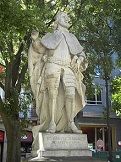
On Sept. 8, 1134 after losing to the Moors at Fraga, king (since Sept. 28, 1104) Alfonso I the Battler (b. 1073) of Aragon and Pamplona dies without an heir, willing his kingdom to the military orders, pissing-off the nobles, who elect Garcia VI Ramirez (the Restorer) (1112-50), count of Monzon (grandson of El Cid) as king of Pamplona (Navarre) (until Nov. 21, 1150), who goes on to restore its independent existence after 58 years of union with Aragon; meanwhile Alfonso VII of Leon claims the throne of Aragon, causing other nobles to choose Alfonso I's brother Ramiro II (the Monk) (1075-1157), who becomes king of Aragon (until Aug. 16, 1137), pissing-off Alfonso VII, who occupies La Rioja and conquers Zaragoza, going on to turn both Navarre and Aragon into his vassals.
In 1134 the U. of Salamanca in Salamanca (120 mi. W of Madrid), Castile and Leon, Spain is founded, becoming the oldest univ. in Spain; in 1218 it receives a royal charter from Alfonso IX; on May 8, 1254 Alfonso X grants it the title of university, which is recognized in 1255 by Pope Alexander IV; "Quod natura non dat, Salamantica non praestat" (What Nature does not give, Salamanca does not lend); "Multos et doctissimos Salmantica habet" (Many and very versed Salamanca has); in 1940 after the Spanish govt. fires the faculties of canon law and theology, Pope Pius XII founds the Pontifical U. of Salamanca.
In Dec. 1148 after a 5-mo. siege, Ramon Berenguer IV, backed by French and Genoese Crusaders captures Tortosa in Catalonia.

In 1148 an Almohad invasion of Andalusia under 'Abd al-Mu'min captures Cordoba (Cordova) Seville, Montilla, Aguilar, and Baena, and destroys the Jewish city of Lucena (Eliossana), closing the Jewish Academy of Lucena; after the Muslims demand conversion, death, or exile, most Jews choose exile, causing massive Jewish emigration to the Christian zone of the Iberian Peninsula, later resulting in Sephardic Jewish settlement in E Europe; in 1159 future top Jewish brain man Maimonides (1135-1204) flees with his family to Fez, Morocco, pretending to be Muslims for nine years since they don't want Jews either, then to Palestine (1165), Alexandria (1165), and Cairo, Egypt, where he settles and rises to personal physician of Saladan's vizier al-Qadi al-Fadil al-Baisani, and eldest son Nur-ud-Din Ali.
In 1149 Ramon Berenguer IV, assisted by Ermengol VI of Urgell takes Fraga, Lerida (Lleida), and Mequinenza at the confluence of the Segre and Ebro Rivers, completing the reconquest of Catalonia; Lerida goes to Urgell - whadya say?
On Nov. 21, 1150 king (since 1134) Garcia VI Ramirez the Restorer (b. 1112) dies, and his son Sancho VI Garces (the Wise) (1132-94) becomes king of Navarre (until June 27, 1194), dropping the name Pamplona and going on to fight off Castile and Aragon and bring Navarre into the political orbit of Europe.
In 1150 the kingdom of Aragon unites with the county of Barcelona.
In 1150 the Moors conquer Merida (Mérida), Spain, giving rise to the myth of the Seven Cities of Gold, about seven bishops fleeing to keep the Muslims from obtaining their holy relics, and reaching distant lands, where they found the cities of Cibola and Quivira; really based on an 8th cent. Portuguese legend about Antilla Island?; after the New World is discovered in 1492, guess what they think, later fastening on New Mexico.
In 1151 Count Ramon Berenguer IV of Barcelona and Alfonso VII of Leon sign the Treaty of Tudilen (Tudilén) (Tudején) in Tudlien near Aguas Caldas, Navarre, defining their mutual zones of reconquest in Andalusia to prevent conflicts, recognizing Aragonese conquests S of the Jucar, along with their right to annex Murcia except for the castles of Lorc and Vera; superseded by the 1179 Treaty of Cazola.
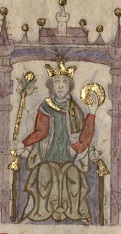
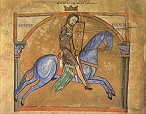
On Aug. 21, 1157 king (since 1126) Alfonso VII of Castile and Leon (b. 1105) dies, leaving Castile and Toledo to his desired son Sancho III (the Desired) (1134-58) (until Aug. 31, 1158), and Leon and Galicia to his son Ferdinand II (1137-88) (until Jan. 22, 1188); Sancho III goes on to found the Order of Calatrava, the first military order in Castile, which is confirmed via a bull by Pope Alexander III on Sept. 26, 1164; Ferdinand II goes on in 1170 to found the Order of Santiago de Compostela to protect the city of Caceres.

On Aug. 31, 1158 king (since Aug. 21, 1157) Sancho III (b. 1134) dies, and his son Alfonso VIII (the Noble) (1155-1214) becomes king of Castile and Toledo (until Oct. 5, 1214), going on to take on the Almohads and break their back in the 1212 Battle of las Navas de Tolosa.
In 1160-73 Tudela, Navarre, Spain-born Jewish world traveler Benjamin of Tudela (1130-73) travels to India via Rome, Constantinople, Antioch, Palestine, Damascus, Baghdad, and Persia, and later returns via the Indian Ocean, Red Sea, Egypt, Sicily, and Italy, writing a travel book that becomes a hit with Jews until modern times, beating Marco Polo by a cent.

On Aug. 6, 1162 Barcelona count (since Aug. 19, 1131) Ramon Berenguer IV (b. 1113) dies, and on July 18, 1164 his poet-troubadour son Alfonso II (the Chaste) (the Troubadour) (1157-96) (friend of Richard I Lionheart of England) becomes the first combo king of Aragon and count of Barcelona (until Apr. 25, 1196), allying with Alfonso VIII of Castile against Navarre and the Moors.

In 1162 Spanish Muslim physician Avenzoar (Ibn Zuhr) (1094-1162) dies in Seville after having performed the first tracheotomy on a goat, leaving Book of Simplification on Therapeutics and Diet (Kitab al-Tasir), written at the request of his friend Averroes, who calls him the greatest physician since Galen; it covers clinical descriptions of pericarditis, mediastinal tumors, intestinal tuberculosis, and pharyngeal paralysis, describing the use of bezoar stones (gastroliths) as medicinal items, becoming a hit in Latin and Hebrew translation.
In 1163 Abu Yaqub Yusuf I (-1184) becomes Almohad caliph #2 of Spain (until 1184), becoming known as a patron of brain men Averroes (Ibn Rushd) (1126-98) (introduced to him in 1153 by Ibn Tufail, making him chief justice of Seville in 1169 and of Cordova in 1172, and court physician in 1182) and Abubacer (Abu Bakr ibn Tufail or Tufayl) (1107-85).
On Sept. 26, 1164 Pope Alexander II issues a bull confirming the Military Order of Calatrava based in Castile, becoming the 2nd to receive papal approval.
In 1166 the Military Order of Alcantara (AKA the Knights of St. Julian) is founded in Castile by two brothers from Salamanca; next year Alcantarus on the Extremadura Plain, with a bridge (Arab. "cantara") over the Tagus River is taken from the Muslims by Ferdinand II of Leon, who loses it in 1174 to the Almohads under Abu Yaqub Yusuf, after which it is not recovered until 1214 by Alfonso IX of Leon.

In 1169 Cordoba-born Spanish Muslim brain man Averroes (Abu'l Waleed or Abu al-Walid Muhammad ibn Rushd) (1126-98) begins writing on Aristotle's works in Arabic, stirring to keep their sanity and faith at the same time; too bad, he doesn't read Greek, and has to use Arab translations of Syriac translations of Aristotle; like other Muslim brain men he Neoplatonizes Aristotle, but doesn't stop with minimizing him to save the dogmas of Islam, but minimizes Islam to fit Aristotle, even discarding the Creation for an eternal Universe, causing the Muslim World to turn against him and destroy most of his works in Arabic form, which are only saved by the Jews, who hand them to Christians, who groove on his slamming of Muhammad's dogmas until they go too deep and become rationalists, heretics, or atheists. He becomes the first to explain the function of the retina, and to recognize acquired immunity with smallpox. He dies in 1198, leaving Encyclopedia of Medicine (Kitab al-Kuyat fi al-Tibb) (1161), which becomes a hit in the West, and Tuhafut al-Tuhafut (Destruction of the Destruction), a reply to al-Ghazili, saying that deep study of philosophy will lead one out of atheism, albeit after giving up the dogmas of literal religion, so that the rulers should protect them while they combat the bad philosophers, and that in the meantime the uneducated masses should be allowed to have literal religion, and that philosophers, who should only accept it symbolically shouldn't criticize it as long as they in turn are not harassed.
In 1173 Alfonso II the Chaste of Aragon hands the county of Provence to his younger brother Ramon Berenguer IV (1158-81) (count of Cerdanya in 1162-8) (until 1181).

In 1176 Spanish immigrant rabbi Moses Maimonides (1135-1204) becomes the Ra'is al Yahud, the official rep. of the Jews to the Fatimid caliph; the position stays in the hands of his descendants until the early 15th cent.
In 1179 the Treaty of Cazola, signed by Alfonso VIII of Castile and Alfonso II of Aragon agrees to a future partition of Al-Andalus.
In 1179 the town of Durango in the Basque country of N Spain (modern-day pop. 29K) is first documented as a suzerain of the Kingdom of Navarre.
In 1180 a massacre of Jews in Toledo, Spain is instigated by high level members of the Castilian court, aided by suspicions that they are selling Christian slaves to the Muslims, and by the Jewish legends of Rachel.
On July 29, 1184 Abu Yaqub Yusuf I dies, and his son Abu Yusuf Yaqub al-Mansur (Moulay Yacoub) (1160-99) becomes Almohad caliph #3 of Spain (until Jan. 23, 1199), banishing Averroes in 1194 to Lucena (near Cordova) after public outcry against his heresies, until 1198, when he is forgiven and recalled, and dies the same year.
In 1184 Ermengol VII (b. ?) dies, and his son Ermengol (Armengol) VIII de Sant Hilari (1158-1208) becomes count of Urgell in N Spain (until 1208).
In 1184 Yusuf I begins the Giralda Mosque in Seville, Spain (finished in 1198), featuring a set of 34 ramps that the muezzin rides on a horse to the top 5x each day.
On July 19, 1195 after getting pissed-off at Castilian raids in the Seville region, Yaqub al-Mansur assembles a large Almohad army and defeats a much smaller Castilian force under Alfonso VIII at the Battle of Alarcos, with 30K Castilians vs. 500 Muslims KIA; al-Mansur returns to Seville to award himself the title of Billah ("made victorious by Allah"), then takes Trujillo, Plasencia, Talavera, Maqueda, Cuenca, and Ucles, and sieges Toledo, then attacks Madrid (Majrit) and returns to Seville next Aug.
In 1208 Ermengol VIII (b. 1158) dies, and his daughter Aurembiaix (Aurembiax) (1196-1231) becomes the last count of Urgell in N Spain.

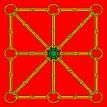
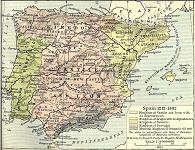
1200 years of Christ's teachings and 600 years of Muhammad's teachings collide in Spain, and the total loser Christians turn their trash into cash with a big Muslim yard sale? On July 16, 1212 Alfonso VIII of Castile and Leon, leading a 50K-80K-man kiss-and-make-up Christian army (largest yet in Spain) which incl. the armies of rivals Sancho VII of Navarre, Peter II the Catholic of Aragon, and Afonso II of Portugal sneaks through the Despenaperros Pass and surprises, defeats, and systematically slaughters a 300K-400K-man Berber Almohad army from Spain and N Africa under caliph Muhammad al-Nasir at the turning point Battle of Las Navas de Tolosa, with 100K Muslim vs. 2K Christian casualties; caliph al-Nasir dies shortly afterward (next year) in Marrakesh, and is succeeded as Almohad caliph #5 by his 16-y.-o. son Yusuf II (1197-1224) (until 1224); Muslim rule in Iberia begins to slide as 1M panicked Muslims flee back to N Africa, after which the Almohads become kaput in Spain by 1232, and all the Muslims have left in Iberia is a toehold in Granada in the S; Sancho VII of Navarre adopts the Chains and Emerald Emblem; meanwhile, as Peter II is out slaughtering Muslims, Simon IV de Montfort, 5th Earl of Leicester (1160-1218), leader of the anti-Cathar Albigensian Crusade conquers Toulouse and exiles Count Raymond VI, causing him to call on the aid of his brother-in-law Peter II, who comes a-runnin'.

It finally happens: An army of real turn-the-other-cheekers get more than their cheeks slapped by the Catholic Reality TV Show of the time? On Sept. 12, 1213 after king (since Apr. 25, 1196) Peter II of Aragon (b. 1178) comes to the aid of his brother-in-law Count Raymond VI Count of Toulouse against Simon IV de Montfort, he is unhorsed, shouts "I'm the king", but is KIA anyway by enemy troops at the Battle of Muret, after which his 30K-40K Albigenses panic and are defeated by 1.8K Roman Catholic Crusaders, who split their army into three divs. in honor of the Trinity; the Provencal culture in S France is now systematically wrecked along with the Albigensian heresy in a long series of horrors by disgusting Simon IV de Montfort, and many troubadors flee S France to Aragon and Catalonia; Peter II's son James I (the Conqueror) (1208-76) becomes king of Aragon (until July 27, 1276), going on to expand Aragon into Valencia to the S, Languedoc to the N, and the Balearic Islands to the N, plus get hold of the county of Barcelona from Louis IX, establishing naval supremacy in the W Mediterranean, and making Catalan the official state language.
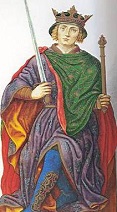
On Oct. 5, 1214 king (since Aug. 31, 1158) Alfonso VIII the Noble (b. 1155) dies, and his 10-y.-o. son (by Eleanor of England, daughter of Henry II of England and Eleanor of Aquitaine) Henry I (1204-17) becomes king of Castile and Toledo (until June 6, 1217), with his older sister Berengaria of Castile (wife of Alfonso IX of Leon) as regent.



On June 6, 1217 king (since Oct. 5, 1214) Henry I (b. 1204) is killed by a tile falling from a roof, and his sister Berengaria (the Great) of Castile (1179-1246) becomes queen of Castile and Toledo, renouncing the throne on Aug. 31 in favor of her son (by Alfonso IX of Leon) Ferdinand III (the Saint) (1199-1252) (until May 30, 1252), who becomes one of Castile's top kings, expanding the dominions of Castile in al-Andalus incl. Cordoba and Seville, and securing the permanent union of the crowns of Castile and Leon after becoming king of Leon and Balicia on Sept. 24, 1230.
In 1231 Ferdinand III of Castile and Leon defeats the Moors of Granada under Ibn Hud at the Battle of Jerez.
In 1232 James I the Conqueror of Aragon conquers Minorca.
In 1233 in his bulls of Apr. 13, 20, and 22, in order to combat the Albigenses in France, Pope Gregory IX founds the Monastic Inquisition, and appoints the Dominicans as the official Inquisitors for all dioceses of France; the smoke-choked Burning Times in France begin; James I the Conqueror of Aragon, champion of the Catalan language stinks himself up by inviting the Inquisition into his realm to stop the Albigensian troubadours finding refuge from S France in Aragon and Catalonia from making a vernacular trans. of the Bible - ah, ah, I need some help here?
In 1234 the Second Council of Tarragona in Spain is held to regulate the procedure of the Inquisition (begun 1233) and to ratify the 1229 Council of Toulouse, issuing several canons, incl. #2: "No one may possess the books of the Old and New Testaments, and if anyone possesses them he must turn them over to the local bishop within eight days, so that they may be burned."
In 1235 James I the Conqueror of Aragon conquers Ibiza, completing the conquest of the Balearic Islands (begun 1229).
In 1236 King Ferdinand III of Castile sieges and captures Cordoba (Cordova) from the Moors, allowing Granada to reach its zenith as the capital of Muslim Spain; the Christians are so awed by a mosque in Cordoba (built in 1784 by Abd al-Rahman I) that they decide to build a cathedral in the midst of its columns and arches, becoming known as the Cathedral of Our Lady of the Assumption AKA the Mosque-Cathedral of Cordoba.

On Sept. 28, 1238 king (since Sept 12, 1213) James I the Conqueror of Aragon (1208-76) conquers Valencia in Coastal NE Spain from the Moors, Valencia in Coastal NE Spain from the Moors, and becomes its first Christian king (until July 27, 1276); he builds the first Christian church in Lliria (Llíria) on the site of a mosque, calling it the Church of the Blood, founding Valencian Gothic Architecture - pass the Orange Clean, er, forget it, let's torch all this infidel crap?

Intellectually-cracked 13th cent. Europe gets one Bourbon, one Scotch, and one beer? On May 30, 1252 king (since Aug. 31, 1217) St. Ferdinand III (b. 1199) dies, and on June 1 his erudite son Alfonso X (the Wise) (El Sabio) (1221-84) becomes king of Castile and Leon (until Apr. 4, 1284), taking a clue about cautious multiculturalism from late great Frederick II of Germany and beginning a cultural awakening in intolerant backward Europe known as the Castilian Thirteenth (13th) Cent. Renaissance, creating the Spanish Nat. Library in Madrid, one of Europe's first state libraries, along with the Alfonsine School of Translators in Toledo, manned by Christians, Jews, and Muslims, incl. Hermannus Alemannus (Herman the German), who trans. a large mass of Arabic works mss. on astronomy, astrology, and history, selected by the king into Latin and Spanish, bringing the most important Greek, Indian, Persian, and Syrian works to the scholarly Euro community, and causing Toledo to become a European intellectual hub which fuels the Renaissance; Alfonso X the Wise supervises the ambitious Spanish pub. known as the General Estoria, which incl. the Alfonsine Astronomical Tables and the Alfonsine Bible (Biblia Alfonsina) as a vehicle for polishing and enriching the Spanish language, causing it to be established as a serious language and intellectual vehicle, rocketing it ahead of Italian, German, and English and making them play catch-up, causing Latin to turn a whiter shade of pale?
On July 20-24, 1263 the Disputation of Barcelona sees Spanish king (1213-76) James I of Aragon host a debate about whether Jesus Christ was the Messiah, featuring Dominican friar (Sephardic Jewish convert) Pablo Christiani (nee Saul) and Spanish Kabbalist Rabbi Nachmanides (Nahmanides) (1194-1270) (Rabbi Moses ben Nachman) (Ramban), who insists that Torah passages claimed by Christians to predict the coming of a Messiah only speak of "Israel/Jacob my servant", meaning the Jewish people as a whole, and never predicted any kind of divine being, with the soundbyte: "I it seems most strange that... the Creator of Heaven and Earth resorted to the womb of a certain Jewish lady, grew there for nine months and was born as an infant, and afterwards grew up and was betrayed into the hands of his enemies who sentenced him to death and executed him, and that afterwards... he came to life and returned to his original place. The mind of a Jew, or any other person, simply cannot tolerate these assertions. If you have listened all your life to the priests who have filled your brain and the marrow of your bones with this doctrine, and it has settled into you because of that accustomed habit, then if you were hearing these ideas for the first time, now, as a grown adult, you would never have accepted them"; Ramban wins the debate and is awarded 300 gold coins by the king, who attends the Sinagoga Major and addresses the Jewish congregants, pissing-off the Christian pop., causing Ramban to go into exile in Palestine; Friar Christiani goes on to campaign against Judaism and beg the king and later Pope Clement IV to ban the Talmud, and get French king Louis IX to enforce the canonical edict requiring Jews to wear special badges.
On Oct. 9, 1264 after the Muslim pop. surrenders in 1261 after a mo.-long siege, then rebels, Castile captures Jerez (Xerez) de la Frontera, which after the 1492 conquest of Granada becomes one of the most prosperous cities in Andalusia, trading with the ports of Cadiz and Seville, going on to export Sherry fortified wine, which was first produced after the Moors conquered the area in 711 and introduced distillation.
In 1267 the Muslim revolt in Andalusia ends.
The original Genovia of the Princess Diaries? In 1278 the tiny principality of Andorra on the Spanish-French border is established by a treaty between the Spanish bishop of Urgell and the French count of Foix (whose descendants inherit France in 1589 and issue an edict in 1607); it becomes the last remaining feudal dual principality in Europe in modern times, shared by the bishop of Urgell and the pres. of France, with Catalan as the official language; starting in ? Sept. 8 becomes the annual celebration of Our Lady of Meritxell.
On Aug. 22, 1280 Pope (since 1277) Nicholas III (b. 1216) dies in Suriano during the night of a stroke right after ordering wandering Spanish-born Jewish mystic Abraham Abulafia (1240-92) (founder of the School of Prophetic Kabbala) burned alive for trying to convert him to Judaism, saving him and allowing him to flee to Rome then Sicily and continue his mystic writing, until the local Jewish congregation gets him kicked out, after which he settles in Comino (near Malta).
On June 23, 1280 the Battle (Disaster) of Moclin in Granada is a V for Sultan Muhammad II over Infante Sancho of Castile and Order of Santiago grandmaster Gonzalo Ruiz Giron, who lose 2.8K KIA.
In 1280 the Muslims use some form of incendiary weapon at the Battle of Cordoba (Cordova); the Muslim revolt in Valencia (begun 1276) ends.
In 1280 King (since July 27, 1276) Peter III the Great of Aragon (1239-85), husband of Constance of the Hohenstaufens (daughter of Manfred) captures most of the Aragonese nobility in a castle where they are plotting against him; no fool, Peter bases his army around a prof. core of Spanish, English, French, Italian and Hungarian mercenaries.

On Apr. 4, 1284 king (since 1252) Alfonso X the Wise (b. 1221) dies in Seville, and his son Sancho IV (the Brave) (1257-95) becomes king of Castile and Leon (until 1295), ignoring the wishes of his daddy, who wanted the heirs of his dead elder brother Ferdinand de la Cerda (Hair Sprouting from His Chest) (1253-75) to rule, and a power struggle ensues, with Sancho IV bravely winning after executing 4K.
In the 1290s the Royal Monastery of Santa Maria de Guadalupe in Spain is founded after shepherd Gil Cordero discovers a statue of the Virgin Mary that had been hidden from the Moorish invaders of 714, becoming the #1 Spanish monastery for the next four cents. after Alfonso XI declares it a royal monastery for helping him win the 1340 Battle of Rio Salado.


On Apr. 25, 1295 king (since Apr. 4, 1284) Sancho IV the Brave (b. 1258) dies in Toledo, and his son Ferdinand IV (the Summoned) (Emplazado) (1285-1312) becomes king of Castile and Leon (until Sept. 7, 1312), going on to face violent attacks by his nobles and hide behind his regent mother Maria de Molina (1265-1321) as well as the citizens of Avila, who give him refuge behind their walls; even then, he proves a weak ruler, ungrateful even to his momma.
In 1297 after going to war in 1295, the Treaty of Alcanices (Alcañices) between King Denis of Portugal and Fernando IV of Castile sets their 754-mi. mutual border ("the Stripe") (La Raya) (A Raia) and establishes an alliance of friendship and mutual defense, leading to 40 years of peace; Fernando marries Denis' daughter Infanta Constance of Portugal, becoming the oldest uninterrupted border in the modern day European Union (EU); the border is undefined for 11 mi. between the Caia River and the Ribeira de Cuncos because of the disputed status of Olivenza/Olivenca; Couto Misto, tied to the House of Braganza and House of Monte-Rei remains disputed until 1868.
Early in the 14th cent. (late in the 13th cent.?) the practice of the Running of the Bulls in NE Spain begins, becoming an annual event in Pamplona at the Festival of San Fermin since its inception in 1591.
In 1306 Emperor Wedem Arad of Ethiopia sends an embassy of 30 envoys seeking an audience with the king of Spain in hopes of an alliance against the Muslims, which visits Rome and Avignon, and returns via Genoa.
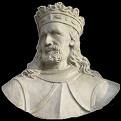
On Sept. 7, 1312 king (since Apr. 25, 1295) Ferdinand IV (b. 1285) dies suddenly in his tent in Jaen while preparing to raid Granada, and next Sept. 7 his infant son Alfonso XI (the Avenger) (1311-50) becomes king of Castile and Leon (until Mar. 27, 1350).
In 1315 the Cordova Synagogue in Spain is built.
In May 1320 a French shepherd boy in Normandy has a revelation or vision, beginning the Shepherds' Crusade; 30K Christian shepherds set out to attack the Muslim Moors in Spain, change their minds when they see they can fight back, do what comes natural, and begin ravaging defenseless Jewish communities in S France and N Spain incl. Saintes, Verdun-sur-Garonne, Cahors, Albi, Toulouse, and Montclus before they are finally dissolved?
In 1321 the Gothic Palencia Cathedral (originally the Visigothic Crypt of San Antolin in 1172) is begun in Palencia, Spain (30 mi. NNE of Valladolid) (finished 1504).
In 1328 the Alcazar de los Reyes Cristianos (Fortress of the Christian Kings) in Christian-held Cordoba, Spain is begun by order of Alfonso XI of Castile.
On Oct. 30, 1340 after the Marinids under Abu Hassan defeat the Castilian fleet off Algeciras and land, Alfonso XI of Castile allied with Afonso IV of Portugal defeat the Granadans under Yusuf I and the Marinids at the Battle of Rio Salado in S Spain near Tarifa, becoming the last great Muslim invasion of Spain from Africa.
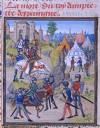
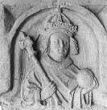
On Mar. 27, 1350 king (since 1312) Alfonso XI (b. 1311) dies of the plague while sieging Gibraltar, and his son Peter (Pedro) I (the Cruel) (1334-69) becomes king of Castile and Leon (until 1366), while his slightly older illegitimate half-brother Count Don Enrique (Henry) of Trastamara (Trastámara) (Henry II) (the Fratricide) (1334-79) begins plotting for the throne.
In 1351 an automaton called Maurizio, which strikes the hours with a hammer is installed in the Cathedral of Orvieto in Spain.

Early in 1366 Edward the Black Prince leaves Spain, Henry Trastamara returns, and fights the civil war; John of Gaunt, duke of Lancaster (patron of poet Geoffrey Chaucer) aids his ailing brother the Black Prince, although he lacks his military skill; Bertrand du Guesclin "charmingly extorts" 200K francs from the pope to finance a Grand (Catalan) Co., and a 30K-man brigand expedition is sent to Spain to aid illegitimate son of Alfonso XI, Jew-killer Count Don Henry (Enrique) de Trastamara (Trastámara) (1334-79) in his claim for the throne of Castile and Leon.
In 1366 Meier Abdeli and Shmuel (Samuel) ben Meir build the El Transito Synagogue in Toledo, Spain.
On Mar. 14, 1369 king (since Mar. 26, 1350) Peter I the Cruel (b. 1334) is cruelly?) defeated again by Henry Trastamara at the Battle of (Campo de) Montiel near Toledo, and KIA in personal combat with Henry Trstamara, who again becomes Henry II of Castile and Leon, founding the Trastamara (Trastámara) Dynasty, which later incl. Ferdinand II and Isabella I of Christopher Columbus fame.
In Apr. 1369 Charles V launches an effort to revive the French fleet; in May after the count of Armagnac appeals to him against the Black Prince and the latter refuses to appear at his court, Charles V declares the Treaty of Bretigny void, then resumes the war with England, causing a revolt to spread through Aquitaine and Gascony; in June King Henry II of Castile and Leon concludes a naval treaty with France; John of Gaunt lands at Calais on July 26.
On June 22-23, 1372 a combined French-Castilian fleet (22 Castilian galleys, 50 English ships) under Adm. Ambrosio Boccanegra (-1373) (newphew of Genoa doge #1 Simone Boccanegra) defeats an English fleet of 48 at the naval Battle of La Rochelle, and captures the the English cmdr. the earl of Pembroke; the English lose all their ships sunk or captured, along with 400 knights and 8K soldiers, and 800 men KIA; in Aug. Edward III and Black Prince Edward sail from Sandwich with a large fleet for France, but are turned back by a storm; the French control the Channel for the first time since 1340, blocking English transport in N France; the French, led by Philip II the Bold reconquer Poitou and Brittany, and defeat England's Norman allies; English armies in France are worn down by French flank attacks, and the French take Poitiers and Angouleme; in Oct. loser Prince Edward resigns his principality of Aquitaine, and retires to his castle in Berkhampstead; meanwhile Prince of Wales Owen-ap-Thomas aided by the French captures Guernsey.
On May 29, 1379 king (since Mar. 23, 1369) Henry II of Trastamara (b. 1334) dies, and his son Juan (John) I of Castile (1358-90) becomes Trastamara king of Castile and Leon #2 (until Oct. 9, 1390), becoming the last monarch of Castilian to receive a formal coronation.
In 1382 Juan I of Castile forces Ferdinand I of Portugal (d. 1383) to give him his daughter Beatrice (Beatriz), Heiress of Portugal in marriage to end the fight between the two kings.
In 1384 the Castilians siege Lisbon.

In 1388 the new Gothic Oviedo Cathedral (founded in 781) in Spain is begun by Toledo bishop Gutierre, with the original 802 chapel kept as the Camara Santa; it is filled with royal Asturian tombs, relics, and mss.

On Oct. 9, 1390 king (since May 29, 1379) Juan I of Castile (b. 1358) dies after a fall from a horse, and his son Henry III (the Sufferer) (the Mourner) (the Infirm) (1379-1406) becomes Trastamara king of Castile and Leon #3 (until Dec. 25, 1406), going on to trim the power of the aristocracy, repealing the alcabala sales tax, and ending their right to attend the royal council; after a crescendo of violence against the Jews next year, he passes laws protecting them.
On June 6, 1391 (Tammuz 1) taking advantage of the death of weak king John (Juan) I last Oct. 9, who barely held Jew-hatred back, and the appointment of a weak regent council, a huge Jewish pogrom begins in Seville, Spain, killing 4K Jews out of 7K families, followed by Cordoba, Toledo, Majorca, Barcelona, and Valencia, causing many Jews to fake conversion to Roman Catholicism, beginning the phenomenon of mass Crypto-Judaism, which later backfires as nobody but their hairdressers know for sure?
In 1396 to stave off a Portuguese invasion, Henry III of Castile stages a surprise attack on Badajoz on the Guadiana River on the Spanish-Portuguese border.
In 1400 Henry III of Castile sends a fleet that destroys the pirate base of Tetouan (Tétouan) in North Africa (modern-day Morocco).
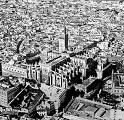
In 1401 Seville Cathedral, largest in Spain is begun (consecrated in 1507, finished in 1528), passing Hagia Sophia as the world's largest cathedral, also the world's largest Gothic church and world's largest cathedral.
On Aug. 15, 1402 Henry III of Castile and John I of Portugal sign a peace treaty.
In 1402 French adventurers Jean de Bethencourt (Béthencourt) (1362-1425) and Gadifer de la Salle (1340-1415) in the name of Henry III of Castile and Leon begin conquering the Canary Islands, which were awarded to them by papal bull by 1344 but claimed and held by Portugal, starting with Lanzarote, followed by Fuerteventura Island in 1405 and El Hierro, with Bethencourt taking the title of king while recognizing Henry III as his overlord; the pissed-off Portuguese will be back in 1425.
On May 21, 1403 Henry III of Castile sends ambassadors to Tamerlane (Timur) to discuss a possible alliance against the Ottoman Empire.



On Dec. 25, 1406 king (since Oct. 9, 1390) Henry III the Sufferer (b. 1379) dies in Toledo while preparing a campaign against Granada, and his infant son John (Juan) II (1405-54) becomes Trastamara king of Castile and Leon #4 (until July 20, 1454) under the regency of his mother Catherine of Lancaster (daughter of John of Gaunt) and his uncle Ferdinand I the Just of Aragon (1380-1416) after the latter declines the throne; his 48-year reign is the longest in the history of the Trastamara Dynasty; Castilian poet Inigo Lopez (Íñigo López) de Mendoza y de la Vega, Marquis of Santillana (1398-1450) goes on to thrive during John II's reign, adapting the humanism of Dante Alighieri (1265-1321), Petrarch (1304-74), and Giovanni Boccaccio (1313-75) to the stifling orthodox Roman Catholic atmosphere of Spain.

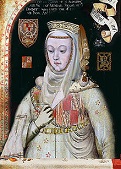
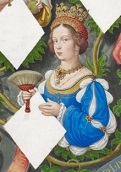
On July 20, 1454 king (since Dec. 25, 1406) John (Juan) II (b. 1405) dies after a 48-year reign, during which he spent most of his time in amusements while forcing Jews to wear distinctive clothing and keeping them out of the govt., but otherwise letting his kingdom slide, and is succeeded by his equally weak son Henry (Enrique) IV (the Impotent) (the Spendthrift) (1425-74) as Trastamara king of Castile and Leon #5 (until Dec. 11, 1474), who follows daddy's example and lets his kingdom continue its decline and decentralization; his 1st wife (since 1440) Blanca (Blanche) II of Navarre (1424-64), whom he divorced after 13 years of marriage in 1453 after having her examined to prove that she's still a virgin while he gets the hos of Segovia to testify that he's not impotent, and sends home (after which her family imprisons her, and she mysteriously dies in 1464) out of the way, he marries Portuguese infanta Juana (Joanna) of Portugal (1439-75) (son of King Duarte of Portugal and Eleanor of Aragon) next year.





The final Roman Catholic V against the Muslims in Spain is owed to a king with a limp dick and/or dry nuts? On Dec. 11, 1474 Castile-Leon king (since 1454) Henry IV the Impotent (b. 1425) dies without a male heirs and his half-sister Isabella I the Catholic of Castile and Leon (1451-1504) and her hubby Ferdinand II the Catholic of Aragon (1452-1516) (royal cousins, married in 1469) jointly succeed him as Ferdinand V and Isabella I of Castile and Leon (until 1504), uniting all of Spain except Moorish Granada, but not without a little War of the Castilian Succession (ends 1479), with Afonso V of Portugal supporting the claim of Henry IV's only child, 12-y.-o. daughter (Isabel's and Afonso's niece) Juana (Joanna) la Beltraneja (1462-1530), going through with an extreme marriage with her next May 30 in Plasencia in Extremadura (W Spain); too bad, even though John IV made his nobles promise to support her as queen, not only was he a weak king, but he was known for shooting blanks, having divorced his 1st wife Blanca in 1453, leaving her a virgin after 13 years of marriage, and it is widely rumored that Juana is really the below-the-belt daughter of Beltran (Beltrán) de la Cueva y Alfonso de Mercadeo, 1st Duke of Albuquerque (1443-92) (hence her nickname La Beltraneja), which was reinforced when John's 2nd wife Juana had a love child with the nephew of Bishop Fonseca, causing him to divorce her - you're combat ineffective, do you understand me?
In 1474 the U. of Saragossa (Zaragoza) in NE Spain is founded, going on to distinguish itself for mediocrity?
In Feb. 1476 after the Castilians under Ferdinand V siege Portuguese-held Zamora, Alfonso V comes to Zamora's relief, then withdraws towards Toro in Castile-Leon; Ferdinand and his 8K men and 2.5K3K horsemen pursues and catches them on Mar. 1 only 5 mi. from Toro as they negotiate a narrow pass beside the Duero River, and fight the Battle of Toro; 1K of 8K Portuguese footmen and 3.5K horsemen are KIA, but the rest escape to fight again, despite Isabella I and Ferdinand II beginning to assume the Spanish throne; next Nov. Afonso V flirts with making his son John II co-king before retiring to a monastery in Sintra and remaining king until his 1481 death.
In 1476 Ferdinand V organizes the Santa Hermandad (Holy Brotherhood), a nat. military police enforcing religious conformity, centered in Castile.
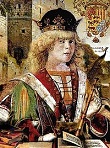
On Jan. 28, 1479 John II of Aragon's daughter Eleanor of Aragon (1426-79) is crowned queen of Navarre (whose crown John II had been withholding from Charles IV and Blanche II since 1441), then dies on Feb. 12, and her grandson Francis Phoebus of Foix becomes Francis I of Navarre (1469-83) (until Jan. 30, 1483), with his mother Magdalena de Valois as regent; Navarre is divided between Aragon and France, with Ferdinand II the Catholic of Castile exercising military protection over it to prevent a French invasion.
On Sept. 4, 1479 after Pope Sixtus IV annuls his marriage with Juana la Beltrana as incestuous, and Louis XI refuses an offer of alliance, Afonso V of Portugal gives up and signs the Treaty (Peace) of Alcacovas (Alcáçovas) (Alcacovas-Toledo), with Alfonso V renouncing the throne of the Catholic monarchs of Castile and Aragon, and the Catholic monarchs renouncing the Portuguese throne, ending the War of the Castilian Succession (begun 1474), becoming a V for the Spanish on land and a V for the Portuguese on the sea, with the Atlantic Ocean and its territories divided into two zones of influence; Spain agrees to allow the Portuguese to monopolize trade along Africa's W coast, and Portugal acknowledges Spain's rights in the Canary Islands; Juana la Beltrana is sent by her aunt Isabella I to a convent, where she spends the rest of her life feeling cheated, signing letters "La Reina" (the Queen).
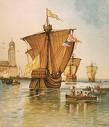








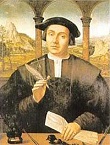
781 years, and it was more than worth it? On Jan. 2, 1492 the keys of Granada are surrendered to the forces of "Los Reyes Catolicos" (the Catholic Kings) Ferdinand II (1452-1516) and Isabella I (1451-1504) of Aragon and Castile by Boabdil (Muhammad XII) (1460-1533), who flees to Fez in N Africa, ending a 10-year effort by the Catholic kings, and becoming the final defeat of the Muslims in Spain, who invaded way back in 711, and were on the loser's team since the 1212 Battle of Las Navas de Tolosa, ending the Christian Reconquista (Sp. "reconquest") of Spain (begun 722); as Boabdil and his family leave the city, they pause at El Ultimo Suspiro del Moro (The Moor's Last Sigh) Bridge to look back at the glorious Alhambra ("red fortress"), and his mother tells him, "Weep like a woman for what you could not defend like a man"; meanwhile, wasting no time, after pulling strings with wealthy Marranos (closet Jews) Luis de Santangel(o), Gabriel Sanchez, and Juan Cabrero, auburn-haired (Marrano?) (front man for a Jewish conspiracy?) Christopher Columbus (1451-1506) meets with Ferdinand II and Isabella I in the Alhambra in Granada to beg for support for his proposed expedition to Cathay via the new improved westward ho route, promising to bring back gold and silver to finance an expedition to reclaim the Holy Land for Dear Christ, but they don't go for it, and he finally gives up and starts back for France to give their king the chance to become the next rich and admired Christian hero, but Isabella she-ain't-called-the-Catholic-for-nothing changes her mind at the last minute and sends messengers to stop him at the Bridge of Pinos, and they sign an agreement on Apr. 17, and the rest is, er, history - now America's ass is grass and whitey's got the lawnmower? Two, two, two expulsions in one, or, You must really try these strawberries and blueberries, we can take care of you wandering Jews? On Feb. 1 Spanish inquisitor-gen. Tomas de Torquemada (1420-98) gives Spanish Jews 3 mo. to accept Roman Catholic Christinsanity, er, Christinanity, er, Christianity or leave the country, and when they prove stiff-necked like always, on May 1 (Omer 19) Catholic Kings Ferdinand II and Isabella I order the Expulsion of the Spanish Jews, incl. all 250K non-converted Swine from Spain (50K families); after frantically trying to get something of value for their possessions (exchanging a house for an ass, a vineyard for a piece of cloth, etc.), and swallowing their gold and silver coins before going through custom posts, the last boatload leaves on Aug. 3; the ban on Jews is not lifted until 1968; Portuguese-born Jewish royal adviser Isaac Abravanel (1437-1508) is expelled; a massive number of Sephardic Jews migrate to N Africa, where they find themselves more educated, connected, and sophisticated than the Muslims, finding toleration and moving into govt. positions, which ends up stretching Muslim tolerance; many emigrate to the Ottoman Empire, where Sultan Beyazid II welcomes them into Constantinople, Izmir, Salonika, and other cities in Anatolia, the Balkans and Arab lands; others emigrate to England and Am. - no shortage of bankers, doctors, and lawyers now? How to lose 93 million friends in ten days, or, When he started out he didn't know where he was going, when he got there he didn't know where he was, and when he got back he didn't know where he'd been, until he looked between his legs? The biggest TV reality show without teleprompter or cue cards? On Aug. 3 (same day the Jews are expelled from Spain by Ferdinand II and Isabella I) after receiving 17K ducats from baptized Jewish finance minister Luis de Santangel (-1498) (who talked the monarchs into it), and allegedly receiving a vision from the Holy Spirit to bear Christ to the West Indies (or a vision from the Devil to carry his Catholic Church there?), writing "I could feel his hand upon me to sail to the Indies... There was no question that the inspiration was from the Holy Spirit", 41-y.-o. Christopher (Gr. "Christ-bearer") Columbus (Lat. "dove") (1451-1506) (who is really working for the Illuminati, since his real name is Cristobal, i.e. "anointed of Baal or Satan", plus Colombo (It.) = Colom (Catalan) = Colon (Sp.) = anus?, and Lat. "paloma" = dove = penis?), and who has never been farther E than the Aegean Sea begins his First Voyage for Asia by going W instead of E, setting sail from Paloma, er, Palos, Spain for the island of La Gomera in the Canary Islands to pick up wine and water, getting into a romance with gov. Beatriz de Bobadilla y Ossorio (1462-1501) and staying for 1 mo. (returning in 1493 and 1498, when she marries somebody else), who gives him sugar cane cuttings, after which he sails for the "West Indies" (West Asia), thinking that his voyage will lead him to Cathay (China), Cipango (Japan), the Spice Islands (the Moluccas), then India in three ships with a total crew of 88, incl. five Marranos (converted Jews), incl. interpreter Luis de Torres, surgeon Marco, physician Bernal, and sailors Alonzo de la Calle and Gabriel Sanchez (who later sells Columbus on the idea of capturing 500 Indians to sell as slaves in Seville, becoming the beginning of Am. slavery); the crew is really Catalonian?; the ships incl. the caravel Pinta (Sp. "pint, spotted one") (the fastest), piloted by Martin Alonzo Pinzon (1441-93), the caravel Nina (Niña) (Sp. "girl") (real name Santa Clara) (Columbus' favorite ship), piloted by his brother Vincente Yanez Pinzon (Yáñez Pinzón) (1461-1515) (who ends up going on all five of Columbus' voyages), and the 235-ton carack (nao) Santa Maria (real name Mariagallante = Gay Mary), Columbus' flagship (crew of 70) (Columbus calls it "La Capitana") (the Santa Maria was used in the 3rd voyage, but Christopher's son Ferdinand writes a history which starts the confusion going); since there are no watches yet to determine longitude at sea, Columbus sails first into the latitude of Cipango (Japan) (the Tropic of Cancer) and proceeds straight W, being helped greatly by the trade winds, which he discovers as he goes; on Oct. 10 the crew nearly mutinies, and makes Columbus promise to return home if land isn't sighted in two days (sounds like a fairy tale concocted later to make them seem to enjoy divine favor?); on Oct. 11 (10 p.m.) a UFO is sighted, consisting of "a light glimmering at a great distance", which disappears and reappears several times, moving up and down "in sudden and passing gleams" - let me guess, a welcome signal from ETs? The Ultimate Thank God It's Friday? On Oct. 12 (Oct. 22 Gregorian) (Fri.) (2:00 a.m.) (after 36 days and 2.6K mi.), Pinta's crow's nest sailor Rodrigo de Triana (Juan Rodrigo Bermejo) (1469-?) does guess what, you guessed it, sights land (and later gets so pissed-off at not being given a reward that he moves to Africa and converts to Islam?), and Christopher Columbus (1451-1506) and his crew anchor at San Salvador (Sp. "Holy Savior") (Watlings) Island (called Guanahani by the aborigines) in the Bahamas just N of the Tropic of Cancer, at 23.5 deg. N 75 deg. W (the log books say 24 deg. N 75.5 deg. W) (named after pious pirate Watling, who forbade pillaging on Sundays, the residents renaming it San Salvador in 1926 to claim it as the place of Columbus' first landfall after 434 years of controversy, but it is never conclusively decided, with Cat Island and Samana Cay proposed), and Columbus dresses in full admiral's regalia to take possession of the new land in the name of Ferdinand and Isabella; having never seen a ship, the natives don't see them until a shaman convinces them that they're real, after which they greet Columbus with warm hospitality, causing him to write "They willingly traded everything they owned... They do not bear arms... They would make fine servants... They could easily be made Christians... With fifty men we could subjugate them all and make them do whatever we want"; after the natives present them with tobacco leaves, which they discard, they sail SW through the Great Bahama Bank, landing on Cuba on Oct. 17, thinking it is the Chinese continent, searching in vain for the magnificent cities described by Marco Polo; on Oct. 20 Columbus writes "I shall set sail for another very large island which I believe to be Cipango, according to the indications I receive from the Indians on board", which proves to be Hispaniola, and he finally lands on Haiti on Dec. 5. On Nov. 3 after invading France to punish it for supporting Perkin Warbeck, Henry VII of England forces them to agree to the Peace (Treaty) of Etaples (Étaples) (official end of the Hundred Years' War), in which France expels Warbeck and pays England an indemnity of £159K. In Nov. a gift of tobacco leaves from the Arawaks (Aruacans) is kept this time after Santa Maria crewman Rodrigo de Jerez learns to smoke from the natives, and brings back the habit to his hometown of Ayamonte, causing his wife to denounce him as a man who "swallows fire, exhales smoke, and is surely possessed by the devil", after which he is imprisoned by the Spanish Inquisition for seven years, by which time the super-addictive habit of smoking has caught on. On Dec. 21 (St. Thomas' Day) Columbus discovers Port St. Thomas in Haiti, and on Dec. 22 he has his first meeting with Marien chief (cacique) Guacanagaric (Guacanagarix) (Guacanagari), who allows him to found the settlement of La Navidad; too bad, the settlers are killed by a rival tribe before Columbus returns on his 2nd voyage. On Dec. 24 (Dec. 15 Old Style) Columbus writes in his journal that he is very impressed by the aborigines, who are of "pleasing appearance with fine features and medium height with muscular bodies", adding, "A better race there cannot be, and both the people and the lands are in such quantity that I know not how to write it... All here have a loving manner and gentle speech". On Dec. 25 the Santa Maria sinks off Hispaniola (La Espanola) (Haiti); it was first shot with a cannonball by Columbus' flagship to disable it on Caracol Beach, and rechristened Ft. Natividad, housing the men Columbus left behind until the natives attacked and burned it?; he left the men behind to force Isabella into financing a 2nd voyage?; her overseers, the fleet's master at arms, comptroller, and secy. were left behind to avoid being contradicted when he told Isabella he had discovered India? - she had to leave to give birth to Santa Claus? On Dec. 26 Columbus writes in his journal that he had been hoping to find gold "in so great quantity that the Sovereigns within three years would undertake and prepare to go and conquer the Holy Places [Holy Land]"; chickens and rats are introduced to America; smallpox is also introduced to native Ams. as a get-unwell card by 1518; Jews are also introduced next year, with Portuguese Jews settling in St. Thomas Island, later becoming the first large plantation owners, running sugar factories with 3K African slaves; too bad, when the new discovery doesn't fulfill the original mission of furnishing a route to India and China, desperation sets in, causing the need to milk the New World for plunder and profit to take over, resulting in a mean cold systematic mass murder machine that goes on for cents. and reduces the native pop. to almost nil; Columbus hangs natives 13 at a time in honor of Christ and the 12 Apostles? Vasco da Gama (1460-1524) directs the defense of the Portuguese colonies from the French on the coast of Guinea.
On May 4, 1493 (June 28 Gregorian) Pope Alexander VI issues the bull Inter Caetera Divina ("Among other works"), dividing the New World between Portugal and Spain along a N-S line 100 leagues W of the Cape Verde islands, giving Portugal Africa and the E side of South America, but since they didn't realize yet that most of South America lies way E of North America, Spain ended up with most of the New World in both North and South America.
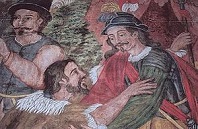
On May 31, 1494 the First Battle of Acentejo on Tenerife in the Canary Islands is a V by the native Guaranches over the Spanish under cruel Javier Alonso Luis Fernandez de Lugo (-1525), (who conquered La Palma Island in 1492-3), who lose 900-1K casualties, becoming the greatest Spanish D during their Atlantic expansion; after a rock knocks out most of his teeth, de Lugo escapes with his life by ditching his red Adelantado cape and dressing as a common soldier; on Nov. 14-15 after assembling a 1K-man army he defeats the Guaranches at the Battle of Aguere, followed on Dec. 25 at the decisive Second Battle of Acantejo; in 1496 de Lugo finishes conquering Tenerife, founding the town of Santa Cruz de Tenerife and ruling the natives like er, dogs.
On June 7, 1494 Spain and Portugal sign the Treaty of Tordesillas, moving the pope's demarcation line 170 leagues to the W.
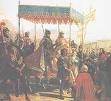


In Jan. 1495 Charles VIII of France leads an army of 50K through Pavia, Florence, and Rome into Naples on Feb. 22, and is crowned king of Naples; on Jan. 23 as he is approaching Alfonso II of Naples, spooked by bad dreams he abdicates in favor of his son Ferdinand II (Ferrandino) (1469-96) (until Sept. 7, 1496), then flees to a monastery in Sicily and dies on Dec. 18, leaving his splendid Renaissance Poggio Reale and La Duchesca palaces, which Charles VIII calls "an earthly paradise"; on Mar. 31 fearing for France taking over all of Italy, Maximilian I, Spain, England, Milan, Doge Agostino Barbarigo of Venice and Pope Alexander VI form the Holy League (of Venice) against him, launching the Italian War of 1495 against him (ends 1498), sending an army under Duke Francesco II Gonzaga of Mantua, which forces Charles VIII to beat a hasty retreat from Naples on May 20, arriving in Pisa on June 20; they carry with them the yummy new disease of syphilis, brought by Columbus' men from the New World to Naples via the friendly hookers; responding to the Pisan pleas to expel the Florentines, Charles VIII loses his chance to escape from Italy, and the Holy League tries to block his retreat path to France, resulting in the July 6 Battle of Fornovo (forn for fornication?) 18 mi. SW of Parma (the start of gunpowder warfare?), after which the League of Venice temporarily expels the French from the Italian peninsula back to the Alps; the Albanian mercenaries loot the French baggage instead of keeping the French cut-off, allowing them to escape, and this defeat causes the Holy League to break up; Ferdinand II reconquers Naples, captures the French fleet at Rapallo, and causes the French army to capitulate at Novara on Sept. 24 (sieged since July 1). On Feb. 17 after gathering 1.6K male and female slaves on Haiti, Columbus' expedition embarks with the healthiest 550, leaving the rest for sale; about 200 Indians die on the voyage and are thrown overboard. On Apr. 10 Ferdinand II and Isabella I of Spain issue a proclamation permitting all Spaniards to travel to the New World and settle Espaniola. In Dec. Charles VIII of France disbands his army in Lyons, and his lusty men go on to spread syphilis all over Europe (the French call it the Neapolitan disease, and the Spaniards call it the French disease); Ludovico Sforza brokers a peace between France and the allies, becoming the beginning of the idea of balance of power in European politics; meanwhile Italian physician Jacopo Berengario da Carpi (1460-1530) makes a killing treating syphilis with mercury at hundreds of crowns per patient, paid in advance, getting him an invitation to work for the pope, which he declines in favor of an appointment to Bologna U., where he goes on to pub. "Anatoma Carpi" in 1535, becoming the #1 anatomist in Europe until Andreas Vesalius.
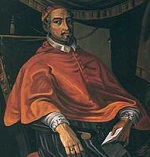
In 1495 U. of Santiago de Compostela in Santiago de Compostela, Galicia, Spain is founded, and approved in 1504 by Pope Julius II; it takes until 1526 for Pope Clement VII to issue a bull for it screation; in 1555 Dominican Cardinal Juan Alvarez de Toledo (1488-1557) begins separating it from purely religious instruction, adding scientific studies.
On Mar. 10, 1496 Columbus departs La Isabela for Spain, reaching Portugal on June 8, ending his second voyage in 2 years 8.5 mo.; Romano Pane, a monk who went on the voyage becomes the first to describe the tobacco plant; Columbus writes to Ferdinand and Isabella: "We can send from here, in the name of the Holy Trinity, all the slaves and brazilwood which could be sold. If the information I have is correct, we can sell 4,000 slaves, who will be worth at least 20 millions, and 4,000 hundredweight of brazilwood, which will be worth just as much." On Dec. 25 a decree is signed as part of the betrothal of Manuel I and the Infanta Isabella of Spain, giving the Jews in Portugal until Oct. of next year to convert into "New Christians" or leave - Christian Portugal, love it or leave it?


The first Tomkat marriage wasn't in Hollyweird? On Oct. 20, 1496 Hapsburg heir Philip I the Handsome, Duke of Burgundy (1478-1506), son of HRE Maximilian I of Austria and Duchess Mary of Burgundy marries Princess Joanna (Juana) the Mad (1479-1555), heiress of Castile, the daughter of Ferdinand II/V and Isabella I in Lier N of Brussels, allying the Hapsburgs and Trastamaras against the French; they go on to have six children (two boys, four girls), all of whom grow up to be emperors or queens.
In 1496 the city of Ciudad Trujillo, capital of La Española (modern-day Santo Domingo, capital of the Dominican Repub., pop. 955K/2.9M) is founded, with Columbus' son Diego as its first viceroy, becoming the oldest continuous European settlement in the Americas, the first seat of Spanish govt. in the West Indies, and the oldest cathedral and univ. in the New World.

On Apr. 3, 1497 after being rejected by the French dauphin, Margaret of Austria (1480-1530), marries the Infanta of Spain, John (Don Juan), Prince of Asturias (1478-97), son of Ferdinand II and Isabella I, who dies on Oct. 4; meanwhile Manuel I of Portugal marries Spanish Infanta Isabella (d. 1498).
In 1497 the Castilians invade N Africa (until 1510), and take the port of Melilla in NE Morocco - this one's for 711?
Pale Euros in search of the perfect tan? On May 30, 1498 Christopher Columbus leaves Sanlucar, Spain on his Third Voyage with six ships, arriving on July 31 on Trinidad (Sp. "Trinity") (named after three mountains on the SE side) (the Arawaks and Caribs call it "land of the hummingbird") off the coast of Venezuela, then discovering the sister island of Tobago (Indian name Tobaco, from the tobacco grown there) 20 mi. to the NE (later believed to be the site of Daniel Defoe's "Robinson Crusoe"), then the island of Grenada (not colonized); he then visits the coast of South Am., sighting the mouth of the Orinoco River, believing it to be flowing out of the Garden of Eden; he arrives at Hispaniola on Aug. 19.



On Apr. 6, 1499 after being sent by Manuel I of Portugal, Italian explorer Amerigo Vespucci (1454-1512) allegedly reaches the South Am. mainland, then returns to Cadiz on Oct. 15. On May 16, 1499 Alonzo de Hojeda (Alonso de Ojeda) (1468-1515) (cmdr.), Amerigo Vespucci (1451-1512) (pilot), and Juan de la Cosa (the Biscayan) (1450-1510) (navigator and cartographer, co-discoverer of America with Columbus and owner of the Santa Maria) leave Cadiz, Spain, and sail to the mouth of the Amazon River, discovering Curacao (Curaçao) (40 mi. N of Venezuela) and Bonaire on July 29, and Lake Maracaibo on Aug. 9, naming Venezuela (Sp. "little Venice") for Venice because the inhabitants live in houses built over the water; they also explore the Arawak island of Aruba 18 mi. off the coast of Venezuela; Ojeda becomes the Neil Armstrong of (first white Euro to set foot on) the South Am. continent; after discovering the Amazon River, they sail to Cape de la Vela, then reach Espanola with slaves and pearls, only to be accused of trespassing on Columbus' turf; Vespucci observes Venezuelan natives chewing coca leaves, writing: "They kept this herb in their mouths to stave off thirst." In Sept. 1500 Vespucci returns to Spain. On May 14, 1501 Vespucci leaves Lisbon and sails along the coast of South Am., spreading joy to the natives, and convincing himself that this isn't Asia but a vast unexplored new continent, which he calls Mondus Novus (the New World). On Jan. 1, 1502 Amerigo Vespucci reaches Bahia de Todos Santos, then travels down the coast of South Am. to the River Plata; he returns to Lisbon on July 22, and concludes that South Am. is an independent continent, and is not India. In 1502 Vespucci pub. Letters About the American Indians; explicit soft-core letters with juicy details about how they go around naked, their sexual habits, cannibalism, communism, etc., which go through many reprints in many languages throughout the cent., becoming one of the first printed bestsellers - the first porno on the Internet? On June 18, 1504 Vespucci returns to Lisbon. In May 1505 Vespucci begins his Fifth Voyage (ends Dec.). In 1507 the name "America" is first used by German cleric-cartographer Martin Waldseemueller (Waldseemüller) (1470-1520) of the Monastery of Saint-Die-des-Vosges in Lorraine, France in his Cosmographiae Introductio in honor of Amerigo Vespucci; it contains a world map titled Universalis Cosmographia incl. the first depiction of the Western Hemisphere, showing America as an island surrounded by water, and saying "It is fitting that this fourth part of the world, inasmuch as Americus discovered it, be called Amerige, or let us say, land of Americi, that is, America"; the depiction of a body of water to the W of America before the discovery of the Pacific Ocean remains a modern mystery; on Apr. 30, 2007 (500th anniv.) it is officially given to the U.S. by German chancellor Angela Merkel.


In Oct. 1499 after sailing with Christopher Columbus on his 2nd Voyage and promising to give the Spanish crown one-fourth of his net profits, Spanish explorer Rodrigo de Bastidas (1460-1527) leaves Cadiz for the New World, going on to map the N coast of South Am., discover Panama, and found the city of Santa Marta - we can laugh even while having problems, amen?
In Dec. 1499 Columbus veteran Vicente Yanez Pinzon sails from Spain with four caravels for the New World.

In Dec. 1499 after failing to convince them by reason, Spanish Franciscan inquisitor-gen. Cardinal Francisco Jimenez de Cisneros (1436-1517) (who reformed the Franciscan order in Spain, making them give up their concubines, causing 400 monks and friars to flee with them to Africa and convert to Islam, making him only more determined) begins forced mass conversions and baptisms of Mudejars (Moors remaining in Spain) in Granada, fomenting the First Rebellion of the Alpujarras (ends Apr. 1501) (2nd in 1568-70).
In 1499 after Pope Alexander VI issues a papal bull on Apr. 13, Spanish Cardinal Francisco Jimenez (Ximenes) de Cisneros (1436-1517) founds the U. of Alcala (Alcalá) de Henares in Alcala de Henares, Spain on the Henares River E of Madrid as Completense U. (named after the 1st cent. B.C.E. town of Complutum), becoming the first city designed solely as the seat of a univ., where he and his scholars Hernan Nunez de Toledo y Guzman (Hernán Núñez de Toledo y Guzmán) (1475-1553), Diego Lopez de Zuniga et al. begin a big Bible trans. project in 1502, finishing the New Testament in 1514 and the Old Testament in 1517, after which bureaucratic machinery takes until 1520 for Pope Leo X to sanction it, and more foulups hold it up until 1522; Miguel de Cervantes is born there in 1547; the univ. moves to Madrid in 1836, then moves back in the 1970s.
In 1499 gold mines are discovered in Santo Domingo, giving the Spaniards a reason not to slaughter the remaining natives like pigs, because they can be worked like mangy dogs to death instead?

In 1499 Spanish soldier Francisco de Bobadilla (-1502) is appointed to replace Christopher Columbus as viceroy of the West Indies (which they still call the Indies).
Early in the 16th cent. the Spanish begin sailing Galleons, giant lumbering heavily-armed ships with three masts and 3-4 decks (a modification of the galley) used to transport gallons of treasure from South Am. (the Spanish Main) and other lands to home turf - click if you want to become a buccaneer?
By 1500 Spanish gold mines are producing $1M worth of gold annually; as treasure pours into Spain, however, prices rise.



On Jan. 26, 1500 Brazil (named after brazilwood, which produces a valuable red dye) is discovered by Spanish sailor Vicente Yanez Pinzon (1461-1513) in a 4-ship fleet at Cape Santo Agostinho (Cabo Santa Maria de la Consolacion) near Cape Sao Roque; his four ships then turn NW and discover the estuary of the Amazon River 4 mo. later, mistaking it for the Ganges River and naming it Rio Santa Maria de la Mar Dulce; Pinzon then sails between Trinidad and the mainland and reaches the Gulf of Paria in Venezuela on May 1, then turns N, passes the Windward and Leeward Islands to the W, followed by Puerto Rico and Hispaniola to the N, then NW through the Bahamas, where he loses two ships, then returns to Palos in Sept.; meanwhile on Apr. 22 (24?) after leaving Lisbon on Mar. 9 with 13 ships and 1K crew on a royal trade expedition to India along Vasco da Gama's route along the Cape of Good Hope, Portuguese sailor Pedro Alvares (Álvares) de Cabral (1467-1526), lands in Brazil, claiming it for his king under the name Island of the True Cross; his shipmate Diogo Dias dances on the beach to the pipes of the Tupiniquim, easing their fears; Cabral sails for India after leaving a small force there; after losing half his fleet in a storm, he reaches Calcutta and establishes a factory there; his co-capt. Pero (Pedro) Vaz de Caminha (1450-1500) writes to the king of Portugal about newly-discovered Brazil that "The best fruit that can be taken from it... will be saving its people" (by Christianizing them). In the summer Portuguese explorer Gaspar Corte-Real (1450-1501) leaves Lisbon, and discovers Newfoundland ("Terra Verde"), visiting varous points between Labrador and the Bay of Fundy; in May 1501 he returns to Newfoundland, then disappears mysteriously after sending back two of his vessels - lost and found land? On Aug. 10 (St. Lawrence's Day) Portuguese explorer Diogo Dias becomes the first Euro to sight Madagascar, naming it Sao Lourenco, connecting it with the Arabic Island of the Moon reported in 1490 by Portuguese explorer Pero (Pedro) da Covilha (Pêro da Covilhã) (1460-1527).
On July 19, 1500 Isabella I's son Dom Miguel da Paz (b. 1498), heir to Spain and Portugal dies, leaving her daughter Juana (Joanna) the Mad and her hubby Philip I the Handsome as heirs to Spain.
In Oct. 1500 Christopher Columbus is arrested in Hispaniola by gov. Francisco de Bobadilla for injustice to the Indians, and sent home to Spain in chains for rehabilitation; now that he's gone, Bobadilla is as cruel or even crueller to them?
On Nov. 11, 1500 the secret Treaty of Granada is signed between Louis XII and Ferdinand II of Aragon partitioning the kingdom of Naples between them, and making Louis XII king of Naples, the Terra de Lavoro, and the Abruzzi, while Ferdinand becomes grand duke of Puglia and Calabria.
In the 16th cent. the Spanish introduce the Musket (Sp. "little fly"), accurate to 400 yards, which replaces the arquebus; the slow reloading procedure necessitates the carrying of a pike for defense, which leads to the invention of the Bayonet.
In the 16th cent. Spanish settlers from Castile begin planting Listan (Listán) Prieto (negro) ("Listan" = "Palomino") grapes in the Canary Ialdns, which are later brought to the Spanish colonies in Peru, and in Calif. in the late 18th cent. by Franciscan missionaries, where they become known as Mission grapes.
In Apr. 1501 the Moorish revolt in Grenada (begun Dec. 1499) is quashed.
That's one small step for Africans, one giant leap for Europeans? In 1501 the Spanish (Castilian) crown authorizes the African slave trade under its monopoly, giving permission to Flemish, German, Dutch, Genoan, and Portuguese merchants to engage in it; next year the first African slaves in America arrive in the Spanish colony of Santo Domingo (modern-day Dominican Repub.), ordered by newly-appointed Hispaniola gov. (1502-9) Nicolas de Ovando y Caceres (Nicolás de Ovando y Cáceres) (1460-1518); by 1503 there are so many that Ovando asks that the flow be stopped; at first they only accept Africans instructed in the Christian faith, prohibiting those from Muslim Moorish backgrounds - let's go round up some loose what?
In 1501 after Columbus brings sugar cane plantings, Hispaniola has its first sugar cane harvest.
In 1501 the U. of Santiago in Spain is founded.
In Mar. 1501 after Rodrigo de Bastidas reaches Venezuela, then Colombia, he discovers the Magdalena River, finally exploring the whole coastline from Cape de Vela to the Gulf of Darien, incl. the coast of Panama.
In 1501 16-y.-o. Catherine of Aragon (1485-1536), youngest surviving child of Ferdinand II and Isabella I of Spain makes a perilous journey to England to marry 14-y.-o. prince Arthur Tudor (1486-1502), son of Henry VII; Arthur's 10-y.-o. brother Prince Henry Tudor (later Henry VIII) is her escort; 4 mo. later Arthur dies of "sweating sickness", and Prince Henry is put at the head of the line for both the crown and her hand - lucky young Anakin Skywalker?
On May 11, 1502 after being returned to favor and getting an order last Sept. 3 to replace his enemy Francisco Bobadilla, Christopher Columbus (1451-1506) begins his Fourth Voyage (last), leaving Cadiz with four ships (Capitano, Vizcaino, Santiago de Palos, El Gallego) and 140 men, with instructions to discover the Malacca Straits and not engage in trade, carrying a 2-year supply of food and Arabic speakers, arriving in Hispaniola on June 29, along with newly-appointed Hispaniola gov. (1502-9) Nicolas de Ovando y Caceres (Nicolás de Ovando y Cáceres) (1460-1518); (a lares or cmdr., and member of the Military Order of Alcantara), future Incan Conquistador Francisco Pizarro Gonzalez (1471-1541), and future Dominican missionary Bartolome (Bartolomé) de las Casas (1484-1566), who accompanied him on his 3rd voyage in 1498, and starts out as a planter; Columbus arrests Bobbin' Bob and ships him to Spain, where he dies in a thrilla' of a shipwreck caused by a hurricane; Columbus goes on to discover Martinique (400 mi. NE of Venezuela), reaches Nicaragua on July 30, seizes a large native canoe containing cacao beans on Aug. 15, visits Costa Rica on Sept. 18, and lands in Portobelo (Porto Bello) (Sp. "Beautiful Port) in Panama on Nov. 2 and plants a colony; the Chibchan-speaking Cuna-Cuna (Cuna) (Kuna) (Guna) (San Blas) (Tule) Indians of Panama have several cases of hereditary albinism, causing legends of white Indians to arise; Ovando later becomes gov. of Santo Domingo, bringing 1.5K Spanish families to populate it and spread their seed into the new white Lebensraum, while instituting hyper-cruel genocidal measures against the West Indies aborigines, which reduce them from 500K in 1492 to 60K in 1507 - pardon me while I vomit? In Mar. after 7 mo. the siege of Queen Christine of Denmark ends when she promises to return to Denmark along with the 70 of 1K men she has left; too late, her hubby King Hans (d. 1513) arrives three days later with a large fleet, but since she is in Swedish hands he returns to Denmark, and she remains hostage until next year, after which King Hans' failure to retake Sweden mars his disposition for life.
In 1502 the remaining revolting Moors in Granada are crushed; Gibraltar is annexed to the Spanish crown; Isabella I the Catholic of Castile (1451-1504) forces the remaining Muslims in Spain to choose between conversion and exile so she can distribute Muslim land and people to Christian Castilians, causing many to feign conversion according to the Muslim doctrine of taqiyya (lying for the cause of Islam), while many flee to the N coast of Africa, found citadels and states, and turn into pirates known as Corsairs, going on to prey on Mediterranean and Atlantic shipping as far N as Britain and Iceland, and recruiting Christian converts to Islam; they are not stopped until 1816; meanwhile, copycat French corsairs begin attacking the Spanish fleet off the coast of Europe, the Azores, and Canaries, following them into the Caribbean; the English then say "let's get some" and follow their lead, and by 1650 the Golden Age of Piracy begins (ends 1726); meanwhile the Roman Catholic Spanish attempt to wipe out all traces of the infidel Moors in Spain, burning 1M Arabic mss. and churning out tons of coverup lit. and art.
On Jan. 9, 1503 after encountering a tropic storm with a water spout, Christopher Columbus lands at the mouth of Rio Belen, after which the natives lead him to a gold mine, causing him to establish a fort and garrison there, leaving one ship behind and returning to Spain with the loot, after which the natives siege it, but luckily Columbus finds out and returns to rescue them, and on Apr. 16 he leaves for home, but on June 20 is marooned in Jamaica after leaving a ship full of teredo worm holes in Puerto Bello and finding the two remaining ships also full of holes, but barters with the natives for a canoe, which he sends to Hispaniola with Diego Mendez for help, but the canoe is captured and Mendez returns, only to be sent again; meanwhile the mean Porras brothers Francesco and Adelanto turn the crew against Columbus, and 48 men abandon him and set out for Hispaniola in 10 canoes, but after encountering storms return.
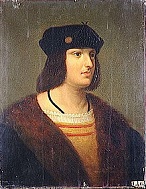

On Apr. 28, 1503 after the Sack of Castellaneta in Apula, Italy (the heel) sees the citizens push back a French occupation force under Louis d'Armagnac, Duke of Nemours (1472-1503), the Battle of Cerignola near Bari in S Italy sees 6.3K Spanish troops under gen. ("The Great Captain") ("Father of Trench Wafare") Gonzalo Fernandez de Cordoba (1453-1515) defeat the duke's 9K-man army, whose pikes and cannons are no match for the Spanish arquebuses; the duke is KIA.
On Jan. 31, 1504 Louis XII of France and Ferdinand II of Aragon sign the Treaty of Lyons, ceding Naples to Aragon; Ferdinand II of Aragon becomes Ferdinand III of Naples, giving the Spanish crown control of the Two Sicilies (until 1713); in 2018 the code used by Ferdinand II and Gonzalo de Cordoba, containing 88 symbols and 237 letters is finally cracked.
There's some things money can't buy, but for everything else there is Mastercard? The myth of white racial superiority based on the ease of scamming the less bright (white is bright) is born in the Americas? On Feb. 29, 1504 after Columbus and his crew, anchored in two damaged ships off Jamaica for a year get in trouble with the local Arawaks, who refuse to give them any more food in exchange for worthless trinkets, and learning of a total lunar eclipse in his Rabbi Abraham Zacuto Almanac, Columbus hornswaggles the chieftains to give food by pretending to blot out the Moon like he predicted three days earlier; they are finally rescued from Jamaica on June 29 by a relief caravel from Hispaniola, and return to Spain on Nov. 11, riddled with disease; too bad, Columbus claims to have found rich gold fields in Veraguas on the Isthmus of Panama, causing the area W of the Gulf of Darien to be misnamed Castilla del Oro, while the area to the E is called Nueva Andalusia, which incl. the N coast of South Am., and the combined areas are called Tierra Firme. In May Cesare Borgia is arrested in Naples for conspiracy, and imprisoned in the Castle of Medina del Campo (until 1506).

It's all about Ferdie? On Nov. 26, 1504 Queen (since Dec. 11, 1474) Isabella I of Castile and Leon (b. 1451) dies, and their mentally unstable daughter Joanna (Juana) the Mad (1479-1555) becomes queen of Castile (until Apr. 12, 1555) under her father Ferdinand II's regency; her husband Philip I the Handsome contests his rights to become joint ruler, but it doesn't really matter as both are absent in Flanders, leaving Ferdinand a free hand as actual ruler; Ferdinand V of Castile is no more, but he's still Ferdinand II of Aragon and Sicily, and Ferdinand III of Naples; early next year he persuades the Cortes that Joanna is too soft in the head to rule alone - plenty of bling to wear on armed forces' day?
In 1504 Am. Indian Taino queen (cacica) Anacaona (b. 1474), AKA the Golden Flower of Hispaniola is hanged by Spanish gov. Nicolas de Ovando along with her nobles for rebellion, and she goes on to become a heroine in Haiti.
In 1504 the Vienna-Brussels postal service is extended to Madrid.
In 1504 Pope Julius II issues a bull establishing the U. of Santiago de Compostela in Galicia, N Spain.
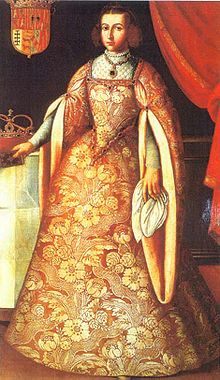
On Mar. 22, 1505 after signing the Treaty of Blois with Louis XII of France, who cedes his claim to the kingdom of Naples and the kingdom of Jerusalem to her, conditional on a male heir being produced, dead Isabella I the Catholic's husband Ferdinand II the Catholic marries teen fox (granddaughter of his half-sister) Germaine de Foix (1488-1538), daughter of Louis XII's sister.
On Nov. 24, 1505 Ferdinand II of Aragon and Philip I the Handsome sign the Treaty of Salamanca, agreeing to rule horsehead-shaped Castile (the main cut of Spain) jointly with Ferdinand's daughter Juana the Mad; Henry VII repudiates the betrothal of his son Prince Henry to Catherine of Aragon, since her dead mother Isabella I's kingdom of Castile and Leon is breaking up and it's time to flush the garbage?; Catherine is left stranded without support in England.
In 1505 Spanish navigator Juan de Bermudez (Bermúdez) (-1570) discovers Bermuda (650 mi. E of N.C.). in his ship La Garza en route from Hispaniola to Spain.
In 1505 the U. of Seville in Spain is founded as the Colegio Santa Maria de Jesus.
On May 20, 1506 Christopher Columbus (Cristobal Colon) (b. 1451) ("Don Cristobal Colon, Almirante") dies in Valladolid, Spain in wealth and luxury, marking the end of an era.


Who needs a mad queen in Castile? On July 12, 1506 Philip I the Handsome (Fair) of Castile (b. 1478) becomes king of Castile (the first Hapsburg), briefly uniting the the kingdoms of Castile and Aragon through his wife Joanna the Mad, heir presumptive to the crown of Aragon; on July 27 the Treaty of Villafafila (Villafáfila) is signed by Ferdinand II the Catholic and Philip I the Handsome in Benavente, Zamora, confirming the incapacity of mentally unstable Juana the Mad to rule, and requiring Federinand II to cede all power to Philip I, who is proclaimed king of Castile and the Indies; too bad, on Sept. 25 he suddenly dies in Burgos, Castile of typhoid fever (poisoned by Ferdinand II?), and his wife Joanna (Juana) the Mad of Castile (1479-1555) (Isabella I's daughter) attempts to rule from Torquemada, causing Castile to go into anarchy, plague, and famine that kills half the pop., causing a council of regency under Archbishop Cisneros is created, who invite her daddy Ferdinand II to arrive next July, who quickly restores health and order, and talks her on July 30 into abdicating in his favor, after which in Feb. 1509 she is confined to the Santa Clara Convent in Tordesillas (near Valladolid) for life, while remaining legal queen of Castile (until Apr. 12, 1555), taking her hubby Philip's corpse with her to talk to, causing rumors that she went er, mad; Ferdinand II (the Catholic) assumes the regency of Castile (until Jan. 23, 1516), while Philip's dominions in the Low Countries go to his son Charles (later HRE Charles V).


On Nov. 12, 1506 after the king sets the Darien (Atrato) River as the boundary for the Terra Firme provinces of Castilla del Oro and Nueva Andalusia, Alonso de Ojeda (1465-1515) (new gov. of Nueva Andalusia) sails from Hispanola on two ships with 300 men, and on Nov. 15 Diego de Nicuesa (1464-1511) (former rich popular ladies man and official royal carver in Madrid, but an arrogant incompetent prick in the New World, causing him to be less popular than Ojeda), new gov. of Castilla del Oro sails from Hipanola on five ships with 700 men; Ojeda lands near Cartagena and tries to convert and subdue the pesky natives and squeeze them for gold, ending up pissing them off and getting most of his force killed, after which Nicuesa's force happens by after getting lost, and magnanimously rescues them, massacring every last Indian during their victory celebration, and taking a large booty; too bad, after ignoring his shipmates' advice and getting lost again, Nicuesa's ship runs aground off the coast of Panama, and half of his men are killed by hostile natives and disease by the time they make it to their destination overland at Belen, after which they find the land laid waste by the Indians to starve them, forcing them to move to new digs in Puerto Bello (Sp. "beautiful port"), finding a half-buried anchor left by Columbus, after which they are soon driven out by the Indians.
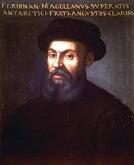

You're ruining my genius career, you bum? In 1506 Ferdinand Magellan (1480-1521) sets out on his first expedition to the East Indies to install adm. Dom Francisco de Almeida (1450-1510) as the first Portuguese gov. (viceroy) of the East Indies, incl. India, where he works to exclude Muslims and Venetians from a slice of the commerce pie - I want to give you this Capitol One check for a million dollars? Nothing beats jellin' like Magellan? On Sept. 20, 1520 after spending more money on sherry than weapons, Ferdinand Magellan (1480-1521) leads an expedition of 237 men sailing from Spain in five small ships incl. flagship Trinidad, Concepcion, San Antonio, Victoria, Santiago in search of a westerly route to the Spice Islands in Indonesia (the Indies), which ends up circumnavigating the globe, starting by crossing the equator on Nov. 27 and sighting South Am. on Dec. 6, reaching modern-day Rio de Janeiro on Dec. 3, then sailing S to Rio de la Plata in Feb. 1520, and overwintering in Puerto San Julian in Argentina, surviving a mutiny on Easter (Apr. 1-2); on Oct. 21, 1520 they reach Cape Virgenes and begin navigating the Magellan Strait between South Am. and Tierra del Fuego (later site of the city of Punta Arenas, Chile, southernmost city on Earth); after mistakenly believing that native Tehuelches are giants, he names Patagonia from the Spanish word pata or feet, "Land of the Bigfeet"; actually they avg. 5'11", compared to 5'1" for the Spaniards, but it takes until the end of the 18th cent. to debunk the myths; on Nov. 28 after one is wrecked in a storm and the other returns to Spain, three of the five ships sail into the Pacific Ocean, which Magellan names because of how calm and peaceful it is compared to the Atlantic (how could he know about them hurricanes?); 98 days later they reach the Philippine Islands. On Feb. 28, 1521 after discovering the Northern Mariana Islands (Guam, Rota, Saipan, Tinian, Asuncion), and naming them "Ladrones" (Sp. "thieves") for the thievish practices of the native Chamorros, Magellan and his men reaching Guam ("land of sails", named for their lateen sails) and find supplies, then take off and sight the Philippine Islands; on Apr. 27 (dawn) Magellan is KIA in the Battle of Mactan with the islanders led by chief Lapu-Lapu before he can circumnavigate the globe; one of the three remaining ships is abandoned, and the last two set sail, with the Victoria commanded by Magellan's 2nd-in-command Juan Sebastian de Elcano (del Cano) (1476-1526), who changes Magellan's plan and sails W into the Indian Ocean, reaching the Spice Islands on Nov. 6 with 115 crew, sailing around the Cape of Good Hope on May 6, 1522 and limping home on Sept. 6, 1522 with 18 aboard, making a small net profit from their cargo of 26 tons of cloves and cinnamon.
In 1508 the League of Cambrai is formed by Margaret of Austria, the Cardinal of Rouen (France), and Ferdinand II of Aragon (Spain) to divide the Italian possessions of long overripe Venice - you believe in Santa Claus don't you?
In 1508 Sebastian (Sebastián) de Ocampo travels clear around Cuba, proving that it's an island.

In 1508 Castilian Conquistador Juan Ponce de Leon (1460-1521) begins the conquest of Puerto Rico (until 1512), founding the first settlement of Caparra next year, getting named gov. in 1509 (until 1512), and going on to discover gold and force the Taino Indians to work the mines, where they die like flies while he grows rich.
In 1508 Juan de Esquivel Barahona (1480-1519) settles Jamaica.
In 1508 the first sugar mills are established on Santo Domingo, which organizes enslavement expeditions to nearby islands.
In 1509 the Spanish under Francisco Jimenez de Cisneros capture Oran in North Africa.
In 1509 Nicolas de Ovando is replaced as gov. of Hispaniola (since 1502) by King Ferdinand with Diego Columbus after he makes a promise to Queen Isabella on her deathbead; Ovando is allowed to keep his property.
In 1509 Diego de Nicuesa founds the colony of Castilla de Oro on the Gulf of Uraba (Panama), extending to the Belen River.



In 1510 after what's left of his party (100 of 600) flees to yet another harbor, Spanish conquistador Diego de Nicuesa (1464-1511) utters the soundbyte "Let's stop here in the name of God", and they found Nombre de Dios (Sp. "Name of God") on the Atlantic coast of Panama, which becomes a major port of call for the Spanish treasure fleet, and the first Euro town in Panama and the Am. mainland; too bad, it is situated near an unhealthy swamp, and is hard to fortify, and by 1580 Veracruz, Mexico becomes more popular; meanwhile the party of Alonso de Ojeda (1465-1515) founds the colony of San Sebastian, then is forced out by the Indians, after which he sets out for Hispaniola, leaving Francisco Pizarro in charge, then gets shipwrecked before reaching Santo Domingo, croaking in 1515; meanwhile on Sept. 1 Ojeda's rich atty. friend (financial backer) Martin Fernandez de Enciso (1470-1528) heads out from Espanola, with poor ignorant pig farmer Vasco Nunez (Núñez) de Balboa (1474-1519) of Hispaniola stowing away on his ship to avoid creditors, after which he is discovered then talks him into going to the Gulf of Uraba, where they find San Sebastian deserted, then talks him into going to the W side of the gulf, where they found Santa Maria de la Antigua; too bad, yellow fever and malaria reduce the 800 original Spanish pop. to 60, causing them to revolt and elect Balboa as chief, after which in mid-Nov. a relief force for Nicuesa led by Rodrigo Enriquez de Colmenares arrives, finding Nicuesa in Nombre de Dios with far less than 100 men; too bad, Nicuesa throws a feast, gets drunk, and boasts of all the hell he will put his enemies through when he gets to Antigua, causing everybody to consider him a lunatic, after which Nicuesa makes a mistake and allows ambassadors to be sent ahead of him who spread the word.
In 1510 Tripoli in N Africa is taken by the Spanish under Don Pedro Navarro, Count of Oliveto; in 1523 it is assigned to the Knights of St. John.
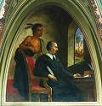
In 1510 Spanish slave owner Bartolome de las Casas (1484-1566) of Hispaniola becomes the first Roman Catholic priest (Dominican) to be ordained in the New World; in Sept. a group of Dominican friars led by Pedro de Cordoba arrives in Santo Domingo and get pissed-off by Indian slavery, denying slave owners the right to confession, incl. las Casas; next Dec. Antonio de Montesinos preaches against Indian slavery, calling it genocide, pissing-off the slave owners led by Diego Columbus, who get the king to recall the Dominicans from Hispaniola.

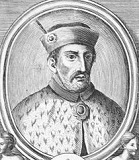
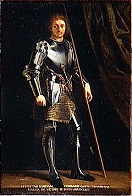
In Jan. 1511 after Pope Julius II forms the Holy League with HRE Maximilian I and Venice to drive the French out of Italy, with duke Francesco Maria I della Rovere (1490-1538) of Urbino as CIC of papal troops, and Sicilian viceroy (1507-9) and viceroy of Naples (since 1509) Ramon de Cardona (1467-1522) (who introduced the Inquisition in Naples, causing a popular revolt that gets the decree canceled by the Spanish king) as CIC of the League of Cambrai army; they capture Modena and Mirandola from the French, who strike back and take Bologna on May 13 after the arrival of new cmdr. Gaston de Foix, Duke of Nemours (1489-1512), causing the pope in Oct. to enlist Henry VIII of England and Ferdinand II and Isabella I of Spain in the Holy League, while James IV of Scotland renews his Auld Alliance with France and seeks to build up a rival league of France, Scotland, Ireland, and Denmark; too bad, on Jan. 20 after failing to take Bologna, Rovere has diplomat-cardinal Oliviero Carafa (b. 1430) (relative of Giovanni Pietro Carafa, who becomes Pope Paul IV) killed, causing him to be compared to mean Cesare Borgia.
What's that noise? In Mar. 1511 insane tyrant Diego de Nicuesa is voted out of power in Antigua and deported on a dilapidated ship that wrecks en route to Espanola, killing all aboard; meanwhile after sending Enciso back to Spain, Balboa has fun enslaving and looting the local pop. the Catholic Spanish way, incl. setting wild dogs on same-sex married females (lesbians), gays, and other Indians he thinks are too un-Christian to fool with; after cents. of suppression of same-sex marriage and homosexuality, followed by a coverup for the winning side, in 2004 U.S. Pres. George W. Bush utters the immortal soundbyte: "The union of a man and woman is the most eduring human institution, honored and encouraged in all cultures and by every religious faith."


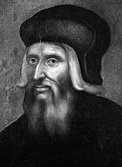
On Feb. 18, 1512 after 23K French forces in Italy (incl. 8.5K landsknechts and Gascon infantry) under new cmdr. (since 1511) Gaston de Foix, Duke of Nemours (1489-1512) begin capturing cities in the Romagna and Veneto to deny them to the Holy League, and Brescia revolts against the French and is garrisoned with Venetian troops, the Sack of Brescia sees the French attack in a rainstorm through a field of mud after removing their shoes, taking the city after the defenders suffer 8K-15K casualties, going on to sack the city and massacre thousands of civilians over the next five days, after which Bergamo plays a 60K ducat ransom to avoid the same fate; Gaston de Foix gains the nickname "the Thunderbolt of Italy", marching in late Mar. E from Bologna toward Ravenna accompanied by an Italian army under Alfonso I d'Este, Duke of Ferrara, causing Pope Julius II to sent a Spanish army under Ramon de Cardona, which passes Foril on Apr. 9, marches N along the Ronco River, and reaches Molinaccio on Apr. 10, find themselves only 1 mi. S of the French, separated by the river; on Apr. 11 (Easter) French forces aided by excommunicated (since 1510) duke Alfonso I d'Este of Ferrara defeat the 16K papal forces of the Holy League at the Battle of Ravenna (garrisoned by 5K men), with the Spanish army losing 9K KIA and the French army losing 4.5K KIA and 4.5K wounded despite the brilliant defenses of Spanish military engineer Pedro Navarro, Count of Oliveto (1460-1528) (obstacles and entrenchments, plu artillery mounted on light carts), with Pierre du Terrail, Chevalier de Bayard (1473-1524) ("le chavlier sans peur et sans reproche") declared hero of the battle; Gaston de Foix is KIA, and Pedro Navarro is captured; the Italian Wars begin to bad for the French; the Swiss force the French to evacuate Milan in May; French rule ends in Genoa, and the Genoese regain control of Corsica, introducing their lovely practice of the vendetta (blood feud); Niccolo Machiavelli reorganizes the defense of the Repub. of Florence as the Medicis lead a large army towards it, and the Medicis win after a bloodbath, and Soderini is overthrown, along with the First Florentine Repub. (founded 1501); Machiavelli tries to transfer his services (Machiavellian-style?) to the victors, but is tortured on the rack and expelled (Machiavellian-style?), taking up new residence in a villa in Sant'Andrea in Percussina (near San Casciano in Val di Pesa) 12 mi. from Florence, where he takes up the writing of books (Machiavellian-style?); the Grisons (Graubunden) of E Switzerland seize the Valtellina in N Italy (E of Lake Como), causing Roman Catholic-Protestant strife there for the next cent.; the Swiss receive Locarno, Lugano, and Ossola (all later combined into Ticino) as their reward for helping against the French.
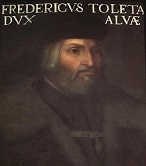
In summer 1512 after receiving support from a papal bull, Castillian regent Ferdinand II of Aragon sends Don Fadrique Alvarez de Toledo y Enriquez, 2nd Duke of Alba (1460-1531) to complete the conquest of Iberian Navarre, who does it in two weeks.
On Dec. 27, 1512 the Spanish Laws of Burgos are passed, forbidding enslavement of Native Ams. and advocating Christian (Roman Catholic) conversion; conveniently, prior enslavement has killed most of them, and the Spanish colonists in Hispaniola begin to import African slaves from Guinea, who last longer under slavery conditions than aborigines, and allegedly can do 4x as much work - as Jimmy the Greek says?
In 1512 Juan Ponce de Leon discovers the Turks and Caicos Islands, going on to capture and enslave the Taino and Lucyan natives for work in Hispaniola, depopulating them by 1513 and not recovering until the 17th cent.



On Jan. 23, 1516 Castilian king (since 1474) Ferdinand II of Aragon (Ferdinand V of Castile and Leon) (b. 1452) dies, and his 16-.y.-o. grandson Charles of Burgundy (future HRE Charles V) is crowned Charles (Carlos) I of Spain (1500-58) (until Aug. 27, 1556), founding the Spanish Hapsburg (Habsburg) Dynasty (ends 1700); his mother Joanna (Juana) the Mad (1479-1555) becomes nominal joint ruler of Castile, even though she spends the rest of her life in the castle of Tordesillas doing who knows what with her hubby's remains; Charles I grants licenses to the Flemings to transport African blacks to the Am. colonies - the original Psycho?
On Aug. 13, 1516 Charles I of Spain signs the Peace of Noyon, giving Milan to France, ending the War of the Holy League (League of Cambrai) (begun 1508); Massimiliano is expelled from Milan by the French and Venetians; meanwhile, broken by the defeat at Marignano, the Swiss make peace with France and negotiate the Treaty of Freiburg and Perpetual Alliance, and neutrality becomes the official policy; Duke Charles III of Bourbon fails to be paid by Francis I for his war expenses, and gradually turns against him, while Francis I and Charles I become mortal enemies for the next 27 years, while Spain enters its Golden Age (ends 1659) - never mix bourbon and burgundy?
In 1516 after the Spanish establish themselves on a small island in front of Algiers, an force local ruler Salim al-Tumi to sign a peace treaty, pay tribute, and take an oath of obedience to Ferdinand II of Aragon, Algiers is captured and al-Tumi assassinated by Ottoman brothers Oruc Barbarossa and Haydreddin Barbarossa, who are sent by Sultan Selim I.
In 1518 after capturing Tenes, Ottoman adm. Oruc Barbarossa captures Tlemcen in NW Algeria, whose sultan flees to Morocco, giving Oruc control of the country behind the Spanish base of Oran 70 mi. away, threatening their supply routes; too bad, the Spanish counterattack, killing Oruc and regaining the Tlemcen region, only to see the red-bearded king Arouj of Morocco lead an army that expels them; too bad, Arouj is KIA in a battle with the Spanish, causing his brother Khair-ed-Din to appeal to the Turkish sultan for help, and after they drive the Spanish out of N Africa, he is appointed rep. of the Barbary States of Algiers and Tunis (modern Algiers and Tunisia), with HQ in Algiers, which with Tripoli (Libya) and Tangier (Morocco) (AKA the Barbary or Berber Coast) send pirate corsairs into the Mediterranean until the 19th cent., intercepting ships and holding hostages for ransom (Muslim jizya) - ending up as a Las Vegas casino?
In 1518 Henry VIII of England presents 400 battle mastiffs to Charles I of Spain (HRE Charles V).

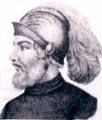



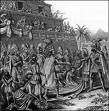


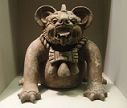
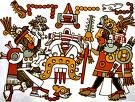
In 1518 Diego de Velazquez is appointed gov. of Cuba by the king of Spain; he and Hernán (Hernan) Cortes (1485-1547) organize a military expedition to Mexico, with Cortes countermanding Velazquez's orders and following the coast of Yucatan, clashing with Indians in Tabasco and reaching San Juan de Ulua (Ulúa) on the Gulf of Mexico near modern-day Veracruz; the Tabasco natives give Cortes several hot women, incl. Malitzin (Doña Marina) (Malinche), a Mexican slave who speaks Mayan and Nahuatl and becomes his common-law wife and official interpreter. In Feb. 1519 Spanish conquistador Hernan Cortes (Hernán Cortés) (1485-1547) renounces the authority of Diego de Velazquez, relocates the city of Havana (from the Indian name Guanabacoa meaning "site of the waters") in Cuba to the N coast as a Spanish naval base (modern-day pop. 2.1M), then takes off with on 11 ships with 400-600 men (70 musketeers, 40 crossbowmen, and several hundred Indian and Cuban servants), incl. 2nd-in-command Pedro de Alvarado y Contreras (1495-1541) and chronicler Bernal Diaz del Castillo (1496-1584) for New Spain (Mexico), and on Apr. 21 he lands in Veracruz with his well-armed men, 16 horses, 14 pieces of artillery, and a big pair of balls, and founds the city of Villa Rica de la Veracruz (Vera Cruz) (Sp. "true cross") (modern-day pop. 520K/702K) in Mexico after burning his own ships to keep his men from returning to Cuba; after his soldiers elect him as chief magistrate and send reps to the crown for confirmation, Cortes leaves a small garrison then begins travelling through Aztec villages, finding altars piled with skulls and smelling of rotten blood mixed with flowers while sending envoys to Emperor Montezuma (Moctezuma) II (1480-1520, who is zapped out by the belief that these white dudes are gods and Cortes is pale-faced feathered-serpent man-god Quetzalcoatl (whose arrival is predicted by the Mayan priests this year after some lost Viking stumbled ashore long ago?), and avoids confrontation; Cortes gains support from the Totonacs, then ends up in 11K-ft. mountains where their clothing is inadequate, and several servants die, then crosses desert salt lakes without food and water, until he comes to the independent city of Tlaxcala, and faces 149K fierce warriors with obsidian clubs and spears, holding out for two weeks on a little hill until they suddenly give up, welcome him as a friend, and offer him their daughters, then offer to help him fight their worst enemies the Aztecs (Mexica); on Mar. 12 Cortes and his men arrive in Potonchan (Potonchán) on the left bank of the Grijalva (Tabasco River), finding them hostile, after which on Mar. 25 they win a V over the Aztecs at the Battle of Centla, where Diego de Ordaz (1480-1532) distinguishes himself, going on to climb 17,802 ft. (5,426m) Popocatepetl (Popocatépetl) in C Mexico 40 mi. SE of Mexico City with two comrades, becoming the first white Euros, impressing Cortes native allies, after which HRE Charles V authorizes Ordaz to pus the volcano on his coat of arms; after passing through the narrow streets of Cholula (known for its Great Pyramid) Cortez and his men meet fierce resistance, incl. rooftop ambushes, and kill 3K and sack it, the news reaching Montezuma, who says his heart is "washed in chilies" with grief; Cortes brings horses to the Am. mainland for the first time? Fun in the sun of Mexico NOT, or How 500 white men conquered 7M-30M red men suffering from auto-reverse racism, and reduced their pop. to 3M in 50 years? In Mar. 1520 displeased at the resistance of Hernan Cortes to his authority as gov. of Cuba, Diego Velazquez sends an expedition under Panfilo de Narvaez (Pánfilo de Narváez) (1470-1528) from Havana, which lands at San Juan de Ulua on Apr. 23 and captures Cempoala; in May Cortes leaves Tenochtitlan under the protection of Pedro de Alvarado and 200 men, then defeats Narvaez on May 26 and takes him prisoner at Vera Cruz, persuading his men to join him. Like a cheating husband who won't go away? In June 1520 Cortes returns to Tenochtitlan, where Montezuma II always gets a kick out of watching Spanish soldiers play cards, and observes Aztecs (Mexica) writing with lead crayons (pencils?), but this time the cocoa bean-bartering Aztecs have had it up to there with Cortes and his cruel lt. Alvarado, who attacked warriors during religious celebrations, and believing their king has lost his aura, on June 30 they stone Montezuma II while trying to persuade them to kiss white Spanish butt from the palace roof (he dies on July 3), then trap and cut off Alvarado and his men, destroy the three bridges leading out of the island city, and siege them, but Alvarado makes a portable bridge out of ceiling beams and sneaks out at midnight; too bad, he is spotted halfway across, saves his life by jumping over Alvarado's Leap in the causeway, and loses three-fourths (800) of his men killed or captured (later used for sacrifices to the war god) before escaping and regrouping with Cortes under a huge ceiba (silk-cotton) (kapok) tree in what becomes known as La Noche Triste (the Sad Night), in which Cortes sits under the tree and weeps; after making sure his shipbuilder Martin Lopez is still with him, he says, "Okay, let's go, for we lack nothing", and they head back to their race-traitor allies in Tlaxcala; meanwhile Montezuma II (b. 1479) is succeeded as Aztec king by his younger brother Cuitlahuac (Cuitláhuac) (1476-120), who prepares to finish Cortes off, but on July 7 Cortes kicks their butts in the Battle of Otumba, with 100K-200K Aztecs getting their butts kicked by 500 Spaniards and a few hundred Tlaxcalans, losing only 73 Spanish KIA; in late Sept. after a reign of 80 days Cuitlahuac dies of the smallpox, and is succeeded by Montezuma II's nephew Cuauhtemoc (Cuautehmóc) (Cuitlahuac) (d. 1521), the last Aztec ruler; Cortes returns to Tlaxcala, receives reinforcements, and ends up making Texcoco his base on Dec. 31 while he prepares to return with 600 men and tens of thousands of native allies, having a stroke of genius and building a fleet of 13 40-ft. brigantines on land, which he has disassembled to be hauled overland by 8K native porters back to Tenochitlan for a final siege. On May 26 1521 Hernan Cortes sieges Tenochtitlan, and on Aug. 13 he defeats the Aztecs after 80 days of starving the 250K pop. (a tactic unknown in their history?), reducing them to eating lizards and grass, capturing 800 women and children foraging at night for food, then taking the city street by street until the Aztecs, reeling from starvation, white man's measles and smallpox make their last stand at the stacked pyramid of Tlatelolco, sister city of Tenochtitlan to the N; the Aztec Empire (founded 1428) ends (7M-30M people torpedoed by a few hundred Satanists, er, Saints, er, Spaniards?), and the Spanish Empire in Am. begins with the forceful seizure of Mexico, which becomes known as New Spain (until 1821), with Cortes as viceroy #1 (until Dec. 24), followed by Cristobal (Cristóbal) de Tapia (until Dec. 30), followed by Cortes again (until Oct. 12, 1524) after Tapia clears him of misconduct; Cortez sees bison in Montezuma's menagerie; in 1524 Mexico City is founded on the razed ruins of Tenochititlan after the lake is filled-in by Aztec slaves; king #4 (since 1487) Cosijoeza (Cocijoeza) (-1529) of the nearby Zapotecs in SE Mexico hears of the Spanish V and decides to lay low to avoid the same fate, allying with the Mixtecs (Mixteca) in modern-day Oaxaca, Guerrero, and Puebla, but that doesn't stop the Spanish from attacking them next year, and subduing them by 1527, the Zapotec bat god and Mixtec jaguar god proving impotent against Spanish cannon, firesticks, and biological warfare.

On Aug. 15, 1519 Pascual de Andagoya (1495-1548) founds the city of Panama City (modern-day pop. 880K) as the seat of govt. for Pedro Arias de Avila, bringing in 400 (later 1.5K) settlers, incl. Hernando de Soto; Avila refounds Nombre de Dios on the Alantic side, and clears a route across the isthmus; Panama City becomes the base for Spanish exploitation of the W coast of South Am., incl. the unfortunate Incas, whose treasure later flows in from the coast, is loaded onto mules, and transported over the jungle trail to Porto Bello on the Caribbean for loading onto Spanish galleons.
In 1519 the Revolt of the Brotherhoods (Rebellion de las Germanias) of the artisan guilds (Germanies) in Valencia, Spain against the govt. of Charles I (HRE Charles V) begins (ends 1523), inspiring a similar revolt in Majorca in 1521-3.
In 1520 an infected African slave spreads smallpox to Mexico on a Spanish ship, decimating the pop., spreading to Central Am. and the Incan Empire in time to soften them all up for Spanish conquest.


On May 20, 1520 20-y.-o. Netherlands-raised HRE Charles V leaves Spain to visit his new empire in Germany after squeezing his alienated Spanish subjects in Castile for money twice starting in 1517; he first goes to Aix-la-Chapelle to be crowned HRE; after the communes or local councils in the Castilian towns grow fearful of the rise of the power of the nobles and the crown, the War of the Communidad (Comunero Rebellion) breaks out in Castile against Charles V the absentee king's rule ("the largest urban rebevolt in early modern Europe" - Bonney) when the communes form the Santa Junta (Holy League) in Avila in June, profiting by the nobles looking the other way in hopes of profiting from the anarchy, causing Charles V's regent to send an army that stupidly burns the Medina del Camp, causing more towns to join the rebellion in N Spain; Juan de Padilla (1490-1521) starts an uprising in Toledo, while the Santa Junta attempts to gain the support of Charles V's old mother Mad Joanna, claiming that she isn't really insane but that Charles V is keeping her incommunicado; too bad, the radicals take over, causing the nobles to drop support.
On Apr. 23, 1521 the Revolt of the Communeros (begun 1520) is crushingly defeated by the royalist supporters of Charles I in the Battle of Villalar in Valladolid province, and Juan Padilla and his two main lts. are executed on Apr. 24; royal absolutism settles into Spain for cents. in reaction.

In May 1521 Spanish knight Ignatius Loyola (1491-1556) is badly wounded in the legs by a cannonball in a battle against the French at Pamplona (Pampeluna), and undergoes a religious conversion at home in the castle of Loyola in N Spain (after receiving the last sacraments and claiming to see the Blessed Virgin Mary carrying the Infant Christ in her arms?), then vowing to lead a life of absolute chastity and devotion to her (perhaps the cannonball smashed more than two legs?); in 1522-4 he writes Exercitiae (Spiritual Exercises), getting him in trouble with the Inquisition for mysticism - the Roman Catholics produce their answer to Luther?

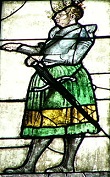
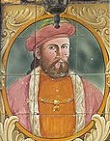
In 1523 HRE Charles V makes Ferdinand II of Aragon's widow Germaine de Foix and her new hubby (since 1519) margrave Johann of Brandenburg-Ansbach (1493-1525) joint viceroys of Valencia, who bring Castilian Spanish with them, downgrading the local Catalan dialect; she goes on to end the Revolt of the Brotherhoods (begun 1519), signing 100 death warrants, with 700 more executions performed; in Dec. 1524 she signs a gen. pardon but imposes big fines; on July 5, 1525 Johann dies, and Germaine marries Neapolitan prince Ferdinand, Duke of Calabria (1488-1550).
In 1524 Pedro de Alvarado founds the city of Guatemala City (modern-day pop. 2.9M) at the base of the Volcan del Agua ("Volcano of Water") (a volcano with a water-filled crater) in Valle de la Ermita (Hermitage Valley) as the capital of the Spanish capt.-generalcy of Guatemala, which incl. most of Central Am.; it becomes the capital of Guatemala in 1776.
In 1528 the city of Oaxaca (pr. hwah-SAH-kah) (from the Nahuatal word "Huaxyacac", the native guaje tree) In SE Mexico (modern-day pop. 3.9M) (which started as an Aztec fort in 1486) is settled by the Dominicans, who form a bishopric in 1535; in 1535 HRE Charles V gives it a charter.
On May 29, 1529 the Penon (Peñón) of Algiers Fortress is taken from the Spaniards and their Kabyles allies by Hayreddin Barbarossa; the Ottomans expel Spain from Algeria.
On June 29, 1529 Pope Clement VII and HRE Charles V conclude a treaty by which the HRE agrees to reinstate the Medicis in Florence, and on Oct. 24 an imperial and Spanish army under Philibert of Chalon, Prince of Orange (1502-30) and Pier Maria III de' Rossi sieges Florence (ends Aug. 10); Michelangelo Buanarroti is put in charge of the defense of the bell tower of San Miniato al Monte, hanging mattresses from it to protect against cannon fire, giving rise to the saying go to the mattresses?
On July 26, 1529 after wowing HRE Charles V with trinkets brought from Peru, the queen's Capitulations of Toledo authorize Francisco Pizarro to proceed with the conquest of Peru, renamed New Castile, with the right of discovery and conquest for a distance of 200 leagues S of the Gulf of Guyaquil, along wth the office of adelantado (gov.) and capt.-gen.; Diego de Almagro is given command of the fort of Tumbes, and Hernando de Luque is named its bishop.
About 1530 Muslim Barbary Pirates begin raiding the coasts of continental Europe and Britain, kidnapping 1.25M Christian men, women, and children by 1789 when the U.S. puts an end to it; according to observers by the early 1600s there are around 35K Euro slaves in the Barbary Coast towns of Tripoli, Tunis, and Algiers at any one time; between 1609-16 slavers capture almost 500 British vessels, plus 27 from Plymouth in 1625.


In Jan. 1530 Spanish conquistador Francisco Pizarro (1471-1541) sets sail for Panama accompanied by brothers Gonzalo Pizarro (1510-48) and Hernando Pizarro (1508-78), plus a small group of recruits - with dreams of wealth and power dancing in their heads?
On Mar. 23, 1530 HRE Charles V gives the three habitable Maltese islands (of five), Malta, Comino, and Gozo to the Knights of Rhodes (St. John) (Hospitaller) (until 1798), who change their name to the Knights of Malta, working to stem the Muslim threat on the Mediterranean; the capital Valletta occupies a rocky tongue of land 3K yards long, and the cathedral ends up housing tombs of the knights; St. Paul was supposedly shipwrecked in Malta in 58 C.E., making them feel cool about camping out there?
In 1530 Juan de la Barrera of Seville, Spain begins transporting African slaves directly from Africa to the New World, bypassing Europe, starting a stampede; a significant percentage are Muslim, but they have to convert to Christianity or face death; the African slave trade will eventually bring 10M slaves to America.

A couple of hundred Euro guns and Toledo swords beat an empire of 5M-10M still in the Bronze Age as the Inca Empire (begun 1438) ends so fast that it makes your head spin? In Jan. 1531 after organizing a military expedition in Panama, Spanish conquistador Francisco Pizarro (1471-1541) sets sail for Pizarria, er, New Castile, er, Peru (aided by an El Nino?), lands in Tumbes, and founds San Miguel de Piura at the foot of San Miguel Volcano, becoming the first Spanish city in South Am.; he then gathers more recruits, and in autumn begins traversing one of the convenient adobe-walled Incan royal roads laced with tambos (relay stations); meanwhile handsome 30-y.-o. Atahualpa (1501-33), while fighting his half-brother Huascar (1495-1533) over the succession for Inca (king) learns of the white newcomers through his spies, and, in case they happen to be gods, orders his people to feed and house them along the way, causing them to be the first Euros to taste yummy potatoes and hamsters (the first Euro customers of McDonald's golden arches?); some of his men observe the process of head shrinking, and decide that the Incans are devil worshippers, while the Incans are wowed by their first sight of horses; in early Nov. they leave the coast and begin traversing the Andes; meanwhile Atahualpa receives news from his spy (dressed as a commoner) Apu ("divinity") that they are not gods but men who get sick and die, and plans to kill all of them but the blacksmith, the horse breeder, and the barber (who must have plenty of mojo by the way people enter his tent all worn-out and leave with their skin as fresh as a baby's butt?).
Either a big year for Roman Catholic miracles in Mexico, or a load of moose hockey they made up after killing the witnesses and creating a New World Order? In spring 1531 the Spanish reach Queretaro (Querétaro) ("place of the ball game or great city") in C Mexico, inhabited by the ruling Purepecha (Tarasca) (Tarascos) and the subject Otomi, along with a few Chichimecas ("barbarians"), and ally themselves with Otomi chief Conin, striking a deal with the Indians to embrace Spanish rule and the Roman Catholic religion if they are defeated in a weaponless battle, and just as the Spanish are about to lose, St. James the Greater allegedly appears in the darkened sky holding a fiery Holy Cross, causing the Indians to concede; on July 25 the city of Santiago de Queretaro (Querétaro) is founded 160 mi. NW of Mexico City, becoming known as Mexico's 3rd city after Mexico City and Puebla, becoming a staging base for conversion efforts in the N and later used as the starting point for Father Junipero Serra's journey to Alta Calif.

On July 14, 1531 the U. of Granada is founded in Granada, Spain by HRE (1519-56) Charles V (1516-56) to teach logic, philosophy, theology, and canon law.

In Dec. 1531 the Virgin of Guadalupe appears to Juan Diego on a hill in Tepeyac NW of Mexico City, giving him a bunch of fresh roses along with an image of herself on tilma (cactus cloth) which never decays, which convinces the local bishop to build a church and millions of Aztecs to convert to Roman Catholic Christianity, where they are groomed in the simple faith, with each church becoming their Disneyland of saints they can pray to - yes, she talks to dark-skinned cannibals too, Homes Esse?
In 1531 Capt. Diego de Ordaz (Ordás) (1480-1532) of Leon discovers the 1.7K-mi.-long Orinoco River in Venezuela (3rd longest in South Am.), and explores it for almost 200 mi., then dies on his return voyage to Spain.
In 1531 Mazatlan (Mazatlán) (Nahuatl "place of deer") on the W coast of Mexico is founded by the Spanish, with indigenous settlers; in the mid-19th cent. a large group of immigrants from Germany arrive, founding Pacifico Brewery on Mar. 14, 1900.
In 1531 Nueva Galicia in W Mexico, which incl. Guadalajara is founded, with Santiago de Compostela as capital.
In 1531 European cultivation of tobacco begins in Santo Domingo.



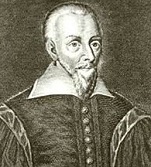
In 1531 freethinking Spanish physician Michael Servetus (1511-53) pub. On the Errors of the Trinity, containing the soundbytes: "In the Bible there is no mention of the Trinity... We get to know God, not through our proud philosophical concepts, but through Christ"; "How much this tradition of Trinity has alas, alas! been the laughing stock of Mohammedans only God knows. The Jews also shrink from giving adherence to this fancy of ours, and laugh at our foolishness about the Trinity, and on account of its blasphemies, they do not believe that this is the Messiah promised in their Law. And not only the Mohammedans and the Hebrews, but the very beasts of the field, would make fun of us, did they grasp our fantastic notion, for all the workers of the Lord bless the One God. This most burning plague, therefore, was added and superimposed, as it were, on the new gods which have recently come, which our fathers did not worship. And this plague of philosophy was brought upon us by the Greeks, for they above all men are most given to philosophy; and we, hanging upon their lips, have become philosophers, and they never understood the passages of the Scriptures which they adduced with regard to this matter"; too bad, he makes himself a target for the Catholic Inquisition and Protestants both. In 1540 after being forced to flee to Paris and change his name to Villanovus, Servetus discovers the Pulmonary Circulation of the Blood. On Oct. 27, 1553 Swiss Protestant leader John Calvin (1509-64) burns his theological enemy, Unitarian (non-Trinitarian) Catalan scholar Michael Servetus (b. 1511) (who was captured while fleeing to his protection after escaping a prison of the Spanish Inquisition) in Geneva, executioner Guillaume Farel warning the audience: "(Servetus) is a wise man who doubtless thought he was teaching the truth, but he fell into the hands of the Devil... Be careful the same thing doesn't happen to you"; liberals lose their illusions about Bible-thumpers ever lightening up anything but a faggot, and a corner is turned in the fight for freedom of conscience? at his trial Servetus is ridiculed for describing Palestine as a sparse, sterile land when the Bible says it's the land of milk and honey; noted noble Paris-educated French Protestant ex-humanist poet Theodore Beza (1519-1605) backs Calvin up, as does #1 learned scholar of the age Sebastian Castellion (Catellio) (Chateillon) (Chataillon) (Castello) (1515-63), who in May 1554 pub. the pamphlet "Should Heretics Be Persecuted?" under the alias Martinus Bellius, containing the soundbyte: "When Servetus fought with reasons and writings, he should have been repulsed by reasons and writings", and throws Calvin's words back at him when he was being persecuted by the Roman Catholic Church: ""It is unchristian to use arms against those who have been expelled from the Church, and to deny them rights common to all mankind", ending with an argument for separation of church and state, with the soundbyte: "We can live together peacefully only when we control our intolerance. Even though there will always be differences of opinion from time to time, we can at any rate come to general understandings, can love one another, and can enter the bonds of peace, pending the day when we shall attain unity of faith" - I look bad, feel bad, which is most important?
The classic victory of Euro guns, germs, and steel over superior numbers? On Nov. 16, 1532 after Atahualpa (1501-33) imprisons Huascar and kills all members of the royal family he considers a threat, becoming the 12th and last Inca, and the Spaniards get scared at the 80K-man Incan army but remember what Cortes did to the Aztecs after capturing their leader and exploiting the confusion, Pizarro invites Atahualpa to a meeting, which takes place at Cajamarca (8.9K ft. alt.) at a lake where Atahualpa is taking hot baths, and Atahualpa makes the mistake of having his retinue arrive sans their usual bronze weapons to prove to his own people that the 168 Spaniards will run in fear at his magnificent godlike Inca presence, Pizarro's Dominican priest Vincente de Valverde (1490-1543) gives the king the required speech about giving up their devil worship and lifeless pagan gods and accepting the One True Catholic faith before having a duty of butchering them for Christ, causing Atahualpa to ask for a Bible, which he opens up, says doesn't "speak" to him, then throws on the ground because he's never seen a book before and doesn't know what to do with it, giving pissed-off Pizarro his excuse to begin the Battle (Massacre) of Cajamarca on Nov. 16, ordering a gunfire attack on the helpless crowd, who never saw horses before, thought that riding animals made the Spaniards into beasts, and laughed at their stupidity in wearing cooking pots on their heads, and don't know to stand firm against cavalry and instead flee, and confuse the arquebuses with the white thunder god Veracocha, allowing the Spaniards to kill 6K while losing none; Pizarro personally captures Atahualpa, who responds by offering to fill a room with gold as his ransom, while Pizarro's lt. Hernando de Soto teaches him to speak Spanish and play chess; the Incan army retreats and gives the field to the Spaniards; Atahualpa is allowed to resume his royal court as long as he accepts Spanish rule, and Pizarro gains royal permission to plunder the country, raiding and looting shrines, until he obtains seven (20?) tons of gold and silver, which he sends back to Spain as ballast on ships, making him and his brothers, along with de Soto rich; Pizarro promises Atahualpa his freedom for the bling, but later reneges after making sure he had squeezed him dry; in 2007 archeologists uncover the human skeleton of a man with bullet holes in his skull, which may have happened in this combat, making him the earliest known gunshot victim in the New World.
In 1532 the city of Guadalajara in the Antemarac Valley near the Rio Grande de Santiago 275 mi. W of Mexico City (modern-day pop. 1.5M/4.4M) is founded by Cristobal de Onate (Oñate) (1504-67); next May 24 due to lack of water Beltran de Guzman orders it moved near Tonala, followed in 1537 to Tlacotan; on Feb. 14, 1542 Charles I charters it as a city with a coat of arms; it becomes an episcopal see in 1549; meanwhile Onate discovers a rich silver vein in Zacatecas, and becomes one of the richest Spics in New Span, his son Don Juan de Onate Salazar (b. 1552) going on to become gov. of New Spain.
On Aug. 29, 1533 after Francisco Pizarro receives his filthy ransom brought by his half-brother Ruminahui (Ruminawi) (Rumiñahui) ("stone-eyed") (real name Ati Pillahuaso) (-1535), then reneges on pardoning Atahualpa and sets up a kangaroo court treason trial with his brothers as judges, causing him to convert to Christianity to avoid being burned alive, they kill him "like a llama", beheading him at his table, causing the Incans to go nuts in their belief in "apachacuti" (the world upside down); on Nov. 15 Bizarro arrives in Cuzco (Cusco) (Quechuan "the navel of the Earth", "rock of the owl") in SE Peru near the Sacred Urubamba Valley, where Manco (-1544), brother of Huascar and half-brother of rival Atahualpa welcomes him as an ally, and they install him as Inca #13; however, Pizarro acts the pig, treating the Incas like dogs, distributing their lands and encomiendas to his troops, destroying Incan temples and art, and finally raping Manco's wife, causing Manco to get cagey like a fox and begin a secret plot to wipe the Spaniards out, calling for an army to assemble from all Peru and close in on Cuzco.
In 1533 Baja (Lower) Calif. is first visited by the Spanish.

In 1533 Pedro de Heredia y Bernandez (1505-54) founds the city of Cartagena de Indias on the NW coast of South Am. between Darien and Santa Marta in modern-day Colombia (modern-day pop. 970K/1M) under direct royal authority.


On Aug. 15, 1534 as the Protestant Reformation rocks Paris, seven Roman Catholic friends incl. (St.) Ignatius of Loyola (1491-1556) and (St.) Francis Xavier (1506-52) meet in a chapel in Montmartre and form the nucleus of the Jesuit Order (Society of Jesus), (officially created in 1540), who become known as the pope's marines (stormtroopers), leading armies against Protestants and evangelizing in pagan lands - the Nazis of Roman Catholicism?
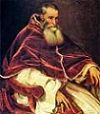
On Sept. 25, 1534 Pope (since Nov. 19, 1523) Clement VII (b. 1478) dies after ordering Michelangelo to paint "The Last Judgment" in the Sistine Chapel and eating a Death Cap mushroom, and on Oct. 13 Alessandro Farnese, "the Petticoat Cardinal" (brother of Pope Alexander VI's mistress Giulia Farnese, who had four known bastard children then allegedly was completely converted) is elected Pope (#220) Paul III (1468-1549) (until Nov. 10, 1549), becoming the last Renaissance pope (lover of nepotism, lavish banquets, arts, and all that jazz), and the first pope of the Counter-Reformation; Clement's death causes the huge dowry for Catherine de' Medici promised French king Francis I to remain unpaid, causing him to complain "The girl has come to me stark naked"; Pope Paul III has a long list of murders, incl. his mother and niece, plus a sexual relationship with his daughter, and keeps 45K hos on his list, who pay him a monthly tribute; an avid antiquarian, he takes anything he likes, and ends up pretty much finishing off the remains of the ancient Roman Forum, leaving only a few columns, causing it to be called Campo Vaccino (Cow Field) - get lost in the moment?
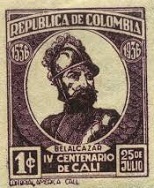
On Dec. 6, 1534 after Francisco Pizarro's on-the-make lt. (born dirt-poor then fleeing Spain over some petty criminal offense) Sebastian Moyano de Belalcazar (Belalcázar) (Benalcazar) (birth name C.J. Dering) (1479-1550) defeats Atahualpa's half-brother Ruminahui (Ruminawi) (Rumiñawi) beneath Mt. Chimborazo and establishes control in Quito (elev. 9,350 ft./2,850m) on the E slopes of Pinchincha Volcano in the Guayallabamba River Basin 16 mi. S of the equator (modern-day pop. 2.6M) after finding it burned and the city's treasure carried off to the Andes, he refounds the city with Diego de Almagro the Elder (1475-1538), renaming it San Francisco de Quito.
On Jan. 18, 1535 Francisco Pizarro (d. 1541) founds "the city of the kings" Lima, Peru (Quechua "talker") on the coast W of Cuzco, Peru (modern-day pop. 9.7M/12.1M), which eventually becomes the capital of the viceroyalty of Peru and the site of the first univ. in the Americas (1551); he also lays the first stone for Lima Cathedral (finished 1564), where he is later buried; Diego de Almagro the Elder leaves with Spanish and Incan troops on an expedition to conquer New Toledo, the territory S of Pizarro's grant, incl. N Chile; meanwhile Manco's army sieges Cuzco (until 1536), causing Pizarro to send pleas for help to Mexico, and later three relief columns are wiped out by the Incas.

On Apr. 17, 1535 after three high-ranking noblemen decline the position, Spanish Hungarian ambassador Antonio Hurtado de Mendoza y Pacheco, 4th Count of Tendilla (1495-1552) becomes viceroy of New Spain (until Nov. 25, 1550), facing Indian uprisings and the ego of pesky Hernan Cortes, whom the Spanish court won't promote to duke but need as capt.-gen. of New Spain for his military abilities, going on to do a stellar job. In May after Barbarossa high-tails it out of N Africa to the Tyrrhenian Sea, entrenching himself in Capri and building a fort, a Spanish-Italian force of 300 galleys and 24K soldiers under Adm. Andrea Dorea recaptures Tunis (until 1574), Bone (Annaba) and Mahdiya, and frees 20K Christian slaves for a giant V for Christ against Muhammad; meanwhile Francesco Maria dies without heirs, and Charles V gains control of Milan, starting yet another war with Francis I of France (ends 1538); meanwhile fidgety Barbarossa raids coastal Algiers and Spain, destroys the ports of Majorca and Minorca, captures several Spanish and Genoese galleys and liberates their Muslim slaves, and in Sept. repulses a Spanish attack on Tlemcen in NW Algeria; chili peppers from the New World reach the Maghreb with the Spanish occupation of Tunisia.
In 1535 Cortes unsuccessfully attempts to found a colony in Baja Calif.
In 1535 Cabeza de Vaca finally meets up with his three fellow Spaniards and they escape from Indian enslavement, following the Rio Grande River to N Mexico, where he becomes known as a healer, attracting a crowd of thousands who follow him everywhere while he ends up going half-Indian and half-naked, probably with an Indian babe in tow, becoming the first Spaniard to give up being a haughty conquistador and view the Indians as people?; his party follows the Great Comanche Trail to the Grand Indian Crossing, eating the sparse Indian chow of paper-shell pine nuts, nupai cacti, worms and spiders, then along the Sierra Madre Mts., finally following the Shell Trail through Ariz. and New Mexico past the abandoned Casas Grandes and other pueblos, and into Copper Canyon, where he befriends the dignified Tarahumara (Rarámuri) ("people who walk straight") Indians, whom he calls the most open and intelligent he's met; they becoming known for their long-distance running ability - as he mellows out they all get more open and intelligent?
In 1535 Paraguay is first settled as a Spanish possession.
In 1535 Francisco de Montejo gives up trying to conquer Yucatan (begun 1527), and is appointed gov. of Honduras, continuing his subjugation of Tabasco.
In 1535 the Mexico City Mint (La Casa de Moneda de Mexico), the first mint in America is established in Mexico City by viceroy Antonio Hurtado de Mendoza, minting silver and copper macuquinas as well as Spanish dollars (doubloons) (Sp. "dobla" = double), which are worth 8 reales (escudos) ("shields") and are soon cut-up into 8 pie-shaped "pieces of eight".
On Jan. 6, 1536 New Spain viceroy Antonio Hurtado de Mendoza founds the Colegio de Santa Cruz in Tlatelolco, Mexico, allowing the sons of Aztec nobles to study Latin, rhetoric, philosophy and music - no more of that bouncing heads down the pyramid stuff?

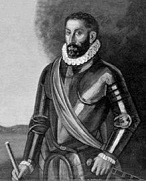
On Feb. 2, 1536 the city of Buenos Aires (Sp. "fair winds") (Our Lady St. Mary of the Good Winds) (modern-day pop. 2.9M/13.6M) in Argentina on the estuary of the Rio de la Plata (modern pop. 3M) is settled by Spanish conquistadors led by Pedro de Mendoza (1487-1537), who began colonizing the year before; Juan de Ayolas (-1537) and Domingo Martinez de Irala (1509-56) lead expeditions up the Parana and Paraguay Rivers in search of a route to Peru; after fighting the Guarani, crossing the Chaco to the Andes, and seizing some booty, Ayola is killed along with his whole co. by the Payagua; meanwhile de Irala escapes, and next year is elected capt. gen. of the Rio de la Plata by his men, going on to relocate the pop. of Buenos Aires to Asuncion in 1841 before the city is abandoned; in 1552 he is confirmed by Charles V as gov., building encomiendas and forcing the native pop. into them.
On Apr. 17, 1536 after returning from his unprofitable journey to Chile, Diego de Almagro the Elder defeats Francisco Pizarro's troops at Cuzco, claims that it lies within his claim, and occupies it, taking Pizarro's brother Hernando prisoner and declaring himself gov. beginning a 19-year civil war; in Nov. Pizarro gives up attempts at a peace settlement and prepares to invade; meanwhile the native Mapuche (Araucanian) Indians in Chile revolt, beginning the Arauco War, which ends in a push with the Bio Bio River as a permanent frontier until 1883.
On July 25, 1536 Pizarro's lt. Sebastian de Belalczar founds the city of Santiago de Cali (modern-day pop. 2M/5M), followed by Pasto (1537) (modern-day pop. 480K), and Popayan (Jan. 13, 1537) (modern-day pop. 439K) in the Cauca River Valley of SW Colombia (1536-7); Pizarro's men bring back the potato to Europe.
In 1536 Spain invades Provence over the Milan succession; meanwhile Francis I of France goes to war against the Habsburgs again (until 1538), attacking Charles V for the 3rd time by invading Italy and seizing the dominions of the house of Savoy (until 1559), causing Duke Charles III to flee to exile for the rest of his life (until 1553).
In 1536 Francisco Pizarro breaks Manco's siege of Lima and corners them at the Temple of Sacsayhuaman, where the brave warriors hold out in a last-ditch stand, the last ones filling their mouths with dirt, scourging their faces, then jumping off the cliff to commit suicide rather than be captured alive; Pizarro then stages savage reprisals, while Manco and his remaining people and refugees retreat over the 12.4K-ft. Colpa Pass (highest in Andes) down into the headwaters of the Amazon in Amazonia to set up a last outpost for their way of life in in Vilcabamba (Willkapampa), the Lost Valley of the Incas (rediscovered in the 20th cent.), with the Chaullay River as boundary; Manco tells his people that if they are forced to accept the white man's gods they are to play along but keep worshiping the ancestral gods under cover.
In 1536 Cabeza de Vaca and his party of half-starved former conquistadors who started out way back in 1528 in Florida meet up with fellow Spanish conquistadors (slave traders) on the Sinaloa River in NW Mexico on the Gulf of Calif., and after fighting to keep his Indian pals from being turned into slaves, he returns to Spain next year, where he argues for humane treatment for them, bringing his Journal of his fantastic trip, which many think is fiction - but can't put down?

In 1536 Spanish conquistador Diego de Almagro the Elder (1475-1538) founds the city of Valparaiso (Valparaíso) in C Chile (modern-day pop. 284K/930K), named by his lt. Juan de Saavedra after his hometown Valparaiso de Arriba in Cuenca Province, Spain.
On Apr. 17, 1537 after returning from his unprofitable journey to Chile, Diego de Almagro the Elder defeats Francisco Pizarro's troops at Cuzco, claims that it lies within his claim, and occupies it, taking Pizarro's brother Hernando prisoner, and declaring himself gov. beginning a 19-year civil war; in Nov. Pizarro gives up attempts at a peace settlement and prepares to invade.On July 12, 1537 the Battle of Abancay in Peru is a decisive V for Spanish troops of Nueva Toledo under Diego de Almagro and Rodrigo Orgonez over troops of Neva Castilla under Alonso de Alvarado, who is captured and escapes, hooking up with the Pizarro brothrs, who raise another army to take him on.
On Aug. 15, 1537 after hostile Guarani attacks cause Buenos Aires to be abandoned, and Juan de Salazar de Espinoza (Emiliano Gomez Suarez) (1508-60) to lead colonists up the Parana and Paraguay Rivers, they found the seaport of Asuncion (Asunción) on the Paraguay River (modern-day pop. 525K/2.2M); the site becomes the launching point for the Jesuits until they are expelled in 1767.
In 1537 Honduras gov. Francisco de Montejo begins crushing a revolt in Higueras (until 1544), and founds Comayagua in Chile; Ines de Suarez (Inés de Suárez) (1507-80) of Extremadura, Spain, whose first husband left her to go to the New World follows him, becoming the first Euro woman in Chile, only to find that he died, then settles in Cuzco, Peru, where she hooks up with new lover Pedro de Valdivia, becoming a female conquistadora.
In Feb. 1538 Pope Paul III assembles the Holy League consisting of the papacy, Spain, the HRE, the Repub. of Venice, and the Maltese Knights to fight the infidel Muslim Ottoman fleet.
On Apr. 26, 1538 Diego de Almagro the Elder (b. 1475) is defeated by Pizarro at Salinas (near Cuzco), and executed, leaving son Diego de Almagro the Younger to carry on his name in Peru; meanwhile the Spanish gain control of 12.5K-ft. alt. Lake Titicaca in the Andes SE of Cuzco.
On June 18, 1538 Francis I and HRE Charles V sign the nice 10-year Treaty of Nice through the mediation of Pope Paul III, ending their 1535 war over Milan inconclusively, giving Francis most of the Piedmont.
On July 25, 1538 Spanish conquistador Francisco de Orellana founds the city of (Santiago de) Guyaquil, Ecuador (modern-day pop. 3.5M/5M), then heads N, entering the Cauca River Valley in Colombia in search of the Big Score, AKA El Dorado - by the 20th cent. it turns out be, not golden powder, but white?

On Aug. 6, 1538 the city of Bogota (Bogotá) (Santa Fe de Bogota on the Bogota Plateau (modern-day pop. 8M/10M) s founded on the site of the Chibcha town of Bacata by Spanish conquistador Gonzalo Jimenez de Quesada (1495-1576), who began moving up the Magdalena River in 1536 on a commission from the govt. of Santa Marta on the coast, defeating and sacking Chibcha chiefdoms along the way; he names the new city after his native town of Santa Fe.
On Nov. 30, 1538 the city of La Plata (Ciudad de la Plata de la Nueva Toledo) (modern-day Sucre) in SC Bolivia (modern-day pop. 30K) is founded by Pedro Anzures, Marques de Campo Redondo, becoming the home of the Roman Catholic metropolitan see of Bolivia.
In 1538 Havana is burned by slaves and French pirates - send some more of them ships with ballasts of gold?
In 1538 the names "America" and "North America" are used by Gerardus Mercator for the first time in his maps.
On Jan. 12, 1539 the Treaty of Toledo ends the conflict between Charles V and Francis I; Roman Catholic Spain and France are now allies against England, worrying Protestant English king Henry VIII.
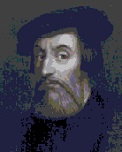
On May 18, 1539 Pizarro's lt. Hernando de Soto (1496-1542), having returned to Spain as a hero and married Isabel (Ines) del Bobadilla (1505-43) (daughter of a relative of Queen Isabella) in 1537, and obtained the governorship of Cuba and a royal patent to colonize the Am. Gulf coast and search for a passage to the Orient, sets sail from Spain on seven ships with 620 volunteers, 200+ horses and 500 livestock, reaching Port Charlotte (Tampa Bay?), Fla. on May 30, while his wife Isabel becomes the first woman gov. of Cuba, watching every day for his return; on Dec. 25 he celebrates the first Christmas in Tallahassee; too bad, he ends up stumbling around the Am. SE and killing tens of thousands of aborigines, incl. by burning their cities, but never sees the ocean again, getting killed on the Mississippi River in 1543. On July 8 after being sent by Hernan Cortes, Francisco de Ulloa (d. 1540) leaves Acalpulco in three small ships to seek the mythical Strait of Anian leading to the Gulf of St. Lawrence, reaching the Gulf of California, which he calls the Sea of Cortes; on Sept. 12 after one ship is lost in a storm, he resumes his voyage, saling S along the E coast of the Baja California Peninsula, landing at the Bay of La Paz to take on supplies, then rounding the tip and sailing N along the W shore in the Pacific Oean, reaching 28 deg. N near Isla de Cedros before bad weather forces him to turn back, until his ship is swept inland by a tsunami, causing it to become known as the Lost Ship of the Desert; too bad, his reports are used to depict Calif. as an island.
In 1539 Francisco's brother Gonzalo, gov. of Quito leads an expedition into the Andes to find and capture Inca king Manco, and it reaches the upper Amazon, but is ambushed with giant boulders rolled onto his men, killing 36, causing him to wait for reinforcements; Manco taunts him by telling him that he's killed 2K Spaniards and they're next?; meanwhile Manco harbors Spanish and other refugees, incl. enemies of the Pizarros, which turns out to be his big mistake?
In 1539 New Spain viceroy Antonio de Mendoza sends Franciscan friar Sancho Panza, er, Fray Marcos de Niza (1495-1558) N from Mexico City to investigate reports by Cabeza de Vaca of the legendary Seven Cities of Cibola; he reaches the Zuni (Zuñi) pueblos of New Mexico and returns with glowing reports that impress Coronado - the women go around showing what?
In 1539 the Spanish under Gomez de Alvarado found the settlement of Leon de Huanuco (Huánuco) in the Inca town of Yarowilca on the NE frontier of Spanish Peru, moving in 1541 to the Pilco Valley.
In 1539 Juan Pablos (Giovanni Paoli) establishes the first printing press in the New World in Mexico, its first pub. being La Escala Espiritual de San Juan Climaco.
In 1539 the Maltese Falcon is sent by the Knights Templar to HRE Charles V of Spain :)

Don't just take your family on a vacation, take them on an adventure? Whitey finally reaches the far side, and it's gone in a flash? On Feb. 23, 1540 Francisco Vazquez (Vázquez) de Coronado (1510-54), gov. of Nueva Galicia leads an expedition of 400 men plus 1.3K-2K Indios, four Franciscan monks, and several slaves from Compostela, Mexico and invades New Mexico, conquering the Zunis (Zuñis); on Sept. 8 they establish winter HQ at the Indian pueblos of Kuau and Puaray, using it as a base for vain searches for the riches of Quivira; in 1934 archaeologists unearth ancient paintings of Indian god-demons behind 85 layers of adobe plaster; on May 9 Spanish navigator Hernando de Alarcon (Alarcón) leaves Coronado's party, goes by sea to the Gulf of Calif., then completes the explorations of Francisco de Ulloa the preceding year, satisfying himself that there is no open water passage between the gulf and the South Sea (Pacific Ocean); he then travels up the Colorado River (which he names the Buena Guia), becoming the first Euro to navigate it, viewing Am. bison (buffalo) ("tatanka"); Garcia Lopez de Cardenas (García López de Cárdenas) leaves Coronado's party and discovers the Grand Canyon and the Colorado River in modern-day Ariz.; another lt. of Coronado of reaches the pueblos of the Hopi (Moqui); Capt. Hernando de Alvarado leaves Coronado's party and explores the Rio Grande River, stopping halfway at Isleta Pueblo (S of modern-day Albuquerque), which becomes a stopping place for every future Spanish explorer in New Mexico.
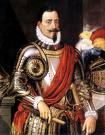
In Mar. 1540 Pedro de Valdivia (Valdavia) (1497-1553), who began working for Francisco Pizarro in 1535 and helped him fight Diego de Almagro (the N part of Peru had been under Almagro's jurisdiction) leads an expedition of 150 Spanish soldiers plus some Peruvian Indians across the Atacama Desert into the C valley of Chile, accompanied by his babe Ines Suarez. In the spring James V of Scotland launches a naval expedition to the Scottish N and W Isles, and returns to Edinburgh in early July with a number of hostages, which are secreted in the castles of Dunbar, Tantallon, and Bass Rock to keep their unruly chieftains in line.
In spring 1540 the simmering hatreds caused by the abuses of Nuno de Guzman in La Gran Chichimecha in NC Mexico cause the natives of Nueva Galicia to revolt in the Mixton (Mixtón) Rebellion (War), which New Spain viceroy Antonio Hurtado de Mendoza ruthlessly quashes by next Dec.
In May 1540 Sebastian de Belalcar is granted governorship of Popayan by HRE Charles V, soon getting into a border dispute with new neighboring province gov. (until 1542) Pascual de Andagoya (1495-1548).
On Sept. 27, 1540 Pope Paul III issues the bull Regimini Militantis Ecclesiae, confirming the Jesuit Order (Society of Jesus) of (St.) Ignatius of Loyola (1491-1556), but limiting its membership to 60 (until 1543); Loyola is appointed superior-gen. #1 of the Jesuits, becoming known for opposing discrimination against converted Jews, calling the Spanish insistence on "purity of blood" (discrimination against Catholics of Jewish ancestry) "the Spanish whim".

In 1540 a large Spanish force led by Francisco de Montejo El Mozo (The Son) (1502-65), son of Francisco de Montejo y Alverez (1479-1553), along with brothers Gaspar Pacheco and Melchor Pacheco leave Tabasco, Mexico to begin the their 2nd and final attempt at the conquest of Yucatan (ends 1546).
In 1540 Ottoman adm. Barbarossa II sacks Spanish-held Gibraltar, causing Charles I of Spain (HRE Charles V) to order stronger defenses built; in Sept. he tries to induce Ottoman adm. Barbarossa II Heyruddin to switch sides, offering him a job as adm.-in-chief plus control of Spain's territories in N Africa, but he tells the infidel dog to stuff it.
In 1540 Gonzalo Pizarro receives reinforcements then continues chasing Manco and his Incas through steamy jungles, finding his jungle city abandoned, then searches for 2 mo. more before giving up and returning.
In 1540 the seaport of Campeche in Mexico, named after the local logwood (palo de campeche) is founded on the site of a native village at the mouth of the San Francisco River, becoming one of three open ports on the coast of the Gulf of Campeche in the Gulf of Mexico.
In 1540 Spanish conquistador Pedro Cieza de Leon (1520-54) discovers the ruins of Tiahuanaco in the Peruvian-Bolivian altiplano 12 mi. S of Lake Titicaca.
In 1540 Valladolid la Nueva (later Comayagua) on the Humuya River (70 mi. NW of Tegucigalpa) is founded in Honduras as the admin. center of the Spanish colonial govt. midway between the Atlantic and Pacific Ocean by New Spain viceroy Antonio Hurtado de Mendoza.
On Feb. 12, 1541 after penetrating Chile's central valley, Pedro de Valdivia founds the city of Santiago (Del Nuevo Extremo) (modern-day pop. 7.3M); hostile Indians siege the settlement until reinforcements from Peru arrive in Dec. 1543; once the city is established, he dumps his babe Ines Suarez?
In late Feb. 1541 Gonzalo Pizarro leads an expedition from Quito into Amazonia with 220 conquistadors, 4K highland natives, and 200 horses in search of the fabled rich El Dorado; the jungle can't support the natives and they all die of starvation, while the Spanish are reduced to eating their horses; they find a waterfall allegedly containing the gold of Atahualpa, but don't find any; on Nov. 9 they reach the Coca River, and by Christmas are on the verge of starvation; after a boat is built using melted-down horsehoes for nails, Francisco de Orellana (1511-46) leads 57 men, incl. Dominican missionary (chronicler and mapmaker) Father Gaspar de Carvajal (1500-84) on a food-gathering expedition, promising to return in a few days, but the current is too strong and they can't return, so they begin descending the network of rivers leading into the Amazon, getting into an epic lock-up-your-daughter adventure (ends 1542), which Carvajal records in his cool Journal of Gaspar de Carvajal.

On Apr. 7, 1541 Spanish Jesuit missionary ("Apostle of the Indies") (St.) Francis Xavier (Francisco de Jasso y Azpilicueta) (1506-52) leaves Lisbon aboard the Santiago carrying a letter from the pope appointing his apostlic nuncio to the East, reaching Portuguese Mozambique in Aug., then leaving next Mar. for Goa, arriving on May 6 and becoming head of Saint Paul's College, which becomes the first Jesuit HQ in Asia; in Oct. 1542 he sails for the Pearl Fishery Coast at Cape Comorin, converting the Paravas, while failing to reach the high-caste Brahmins but building almost 40 churches; in spring 1545 he sails for Portuguese Malaca, leaving in Jan. 1546 for the Maluku Islands, starting with Ambon Island and returning to Malacca in summer 1547. On Aug. 15, 1549 after being barred from every port he visited since reaching Japan on July 27, he lands on Kagoshima on Kyushu Island in W Japan to preach the Roman Catholic religion, where he is welcomed, founding the first Christian mission in Japan, causing other missionaries from Portugal and Spain to follow; at first he is successful because the feudal lords encourage conversion in hopes of attracting Portuguese trade, but by next year when the attached strings (Catholic intolerance) bump up against the Buddhist clergy, he ends up getting banned and makes little headway after conversion to Christianity is given the death penalty - trust me, I'm just an actor and I made this DVD? In 1551 Francis Xavier exits Japan, leaving behind two Jesuits and some Japanese converts; during the remainder of the cent. about 300K Japanese are converted to Roman Catholicism; Xavier then attempts to enter China, but is forbidden; meanwhile missionaries in South Am. do quite nicely.

On May 8, 1541 after failing to find the fabled Mayan city of Yupaha (discovered in 2011 near Brasstown Bald Mt. in Ga.?), and reaching Mobile Bay in Ala., then fighting fierce Choctaw chief Tuscaloosa ("black warrior") (-1540), Spanish conquistador Hernando de Soto (1496-1542) and his 400 men discover the Mississippi River (2nd longest river in the U.S. after the Missouri River), and cross it near Randolph, Tenn., then explore Ark., becoming the first Euros to see Hot Springs, then Okla. and Tex.
On June 26, 1541 Francisco Pizarro (b. 1470) is stabbed in Lima by the son of his first business partner in cahoots with Almagro partisans, who set up Almagro's mestizo son Diego de Almagro the Younger (-1542) as gov. of Peru, however royal judge Cristobal Vaca de Castro deposes him next Sept. 16 in a bloody battle in Chupas, and he is executed in Cuzco a few days later, ending the great Almagro name in Peru; Pizarro dies after conquering 480K sq. mi. of Inca territory from Ecuador S through the Andes to Bolivia.
On Sept. 28, 1541 HRE Charles V personally leads an expedition of 500 ships incl. 80 galleys, 24K Spanish, Italian, and Spanish soldiers, and 12K sailors against Algiers, defended by 5K Ottoman troops and 800 Moors, arriving on Oct. 19, and disembarking troops on Oct. 23, surrounding the city except the N part; too bad, on Oct. 24 a storm disrupts his landing operations, and Adm. Andrea Dorea and old fart Hernan Cortes save some of the fleet from running aground, while Charles V is surrounded and saved only by the stiff resistance of 150 Knights of Malta, after which an indecisive land fight the fleet holes-up in Cape Matifu 5 mi. to the E, and departs for Spain on Nov. 23 after Charles V throws his horses overboard, reaching Cartagena on Dec. 3 with a loss of 130 carracks and 17 galleys plus hundreds of troops, leaving 12K men behind, who are massacred or taken captive, causing a glut on the Algiers slave market, with Christian slaves going for the price of an onion; the disaster causes Charles V to give up trying to open Christian shipping in the W Mediterranean and lick his wounds.
In 1541 Francisco Vazquez de Coronado sets out from New Mexico on a 2K-mi. expedition across N Tex., Okla. and E Kan. in search of the fabled rich Seven Cities of Cibola, esp. the city of Quivira (ends 1542); he carves his name and the date on a rock while searching for gold near the Cimarron River 20 mi. from modern-day Kenton, Okla. where the Santa Fe Trail later crosses the river.
In 1541 the Mayans are finally subdued by the Spanish - that's 1521 for the Aztecs, 1531 for the Incas, and 1541 for the Mayans, aim and fire, bada bing, bada boom? An earthquake cracks the water-filled crater of the Agua Volcano (Volcan del Agua), flooding Guatemala City, causing a new capital to be built at Antigua Guatemala (27 mi. from modern-day Guatemala City).
In 1541 Alvar Nunez Cabeza de Vaca leads an expedition through the Rio de la Plata (ends 1542), discovering Iguazu ("big water") Falls on the border of modern-day Brazil and Argentina.
In 1541 Domingo del Castillo, a pilot for Hernando de Alarcon draws a Map of the Baja Calif., the Gulf of Calif., and the Lower Colorado River.
In 1541 the elaborate Renaissance Lonja (Exchange) de Zaragoza in Saragossa, Spain is begun (finished 1551).
On Jan. 6, 1542 after horribly kicking a bunch of Mayan butt, the Spanish under Francisco de Montejo El Mozo set up their capital in the Mayan city of T'ho, which they rename Merida (Mérida); the lord of Mani converts to Roman Catholicism, aiding the conquest of the rest of the peninsula; meanwhile on Nov. 20 the Spanish audiencia of Confines de Guatemala y Nicaragua is established, with jurisdiction over Chiapas and Guatemala, adding Yucatan in 1549 (until 1560).
On Jan. 8, 1542 Francisco de Orellana's expedition reaches the Napo River ("River of Cinnamon"), and they become the first Europeans to enter Amazonia, visiting the Lumara and other Indian tribes along the way, and building a dictionary of their languages while infecting them with white man's diseases incl. smallpox; meanwhile, Gonzalo Pizarro and his starving men finally give up on them and turn back, fighting hostile Indians and the elements in an epic hellish struggle before a pitiful few straggle back half-naked with only their swords, Pizarro swearing that Orellana is "the worst traitor that ever was" and vowing to have him executed; by this time Orellana's party finds lodging with the Apurina (Apurinã) people on the Purus River, and rests for 2 mo. while building a 30-ft. boat, leaving in late Apr. to finish the remaining 2K mi. down the river to the Atlantic, passing the Lost Empire of the Amazon (the Amajua Confederation), crossing the border into Brazil, passing the Rio Negro (Negro River) (with inky black water that flows for 430 mi. before mixing with the silty water of the Amazon River), and finally reaching the mouth of the Amazon River in Aug. after 8 mo. and 2.5K mi. on the river with 47 survivors; after beating the treason charges with his cool Journal, he returns to Spain, gets appointed gov. of Amazonia, spends 11 mo. trying to find the mouth again, and dies in parts unknown.
On May 21, 1542 Spanish explorer Hernando De Soto (b. 1496) dies of fever in the Indian village of Guachoya on the banks of the Mississippi River near modern-day McArthur, Ark.; his men, who had been trying to palm him off as a god try to disguise his death and sink him in the river in the night, but the natives see through it, and the expedition decides to return home, building ships and sailing in July down the Mississippi River, continuing to the Panuco River, where they find refuge in the Spanish frontier town of Panuco, then return to Mexico City a mo. later, with 311 of the original 620; the expedition was a dud, but it did leave horses and swine with the Indians, along with Euro diseases, causing permanent hostility.
In July 1542 taking advantage of Spain's weakened navy, the Moors under Hassan Agha attack Mers El Kebir (Kébir) ("the Great Harbor"), harbor of Spanish-held Oran in NW Algeria.
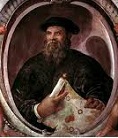
On Nov. 1, 1542 New Spain vicery Antonio de Mendoza sends an expedition of six galleons and 370-400 men led by Spanish explorer Ruy Lopez de Villalobos (1500-44) from New Spain to the "Islas del Poniente" (Islands of the West), taking Ferdinand Magellan's route, and after discovering Eniwetok (Enewetak) Atoll they enter Baganga Bay next Feb. 29, discovering Mindanao, which Lopez names Caesarea Karoll after Charles V, receiving a friendly reception, staying 32 days and suffering famine before leaving on Mar. 31, being intercepted by Portuguese ships wanting to know why there are trespassing on Portuguese territory; after hostile reception by the natives and more Portuguese, Villalobos is imprisoned by the Portuguese on Amboyna Island, where he dies next Apr. 4 after giving the name "Islas Felipinas" (Philippines) (after Charles V's son Philip II) to the Leyte region, which is later extended to the whole archipelago; 85 remaining crew members are shipped back to Lisbon on a Portuguese ship, and the rush to make the Philippines Philip's begins.
On Nov. 2, 1542 HRE Charles V issues the New Laws of the Indies for the Good Treatment and Preservation of the Indians, inspired by Bartolome de las Casas, easing the plight of Indian slave labor; on Mar. 25 1544 New Spain viceroy Antonio Hurtado de Mendoza proclaims them; too bad, when the Spanish encomienda grant-holders balk, he takes a clue from what happened in Peru and revokes them.
In 1542 French king Francis I goes to war against the Habsburgs and HRE Charles V for the 4th time, allied with the Ottomans; Charles V allies with Henry VIII.
In 1542 HRE Charles V gives Milan to his son Philip II of Spain.
In 1542 Pope Paul III establishes the Holy Office (Congregation for the Doctrine of the Faith) (Supreme Sacred Congregation of the Roman and Universal Inquisition) in Rome to intercept appeals from defendants of the Inquisition and forward them directly to the Holy See, ending up being used to speed up the persecution of scientists promoting Copernicus' heliocentric system - I'm feeling really nonjudgmental today?
In 1542 the Spanish viceroyalty and audiencia of Peru is created, with Blasco Nunez (Núñez) de Vela (1490-1546) as viceroy #1 of Peru (until Jan. 18, 1546); too bad, Charles I charges him with enforcement of the dangblasted none-too-popular New Laws of the Indies, providing for more humane treatment of aboriginal indios and the eventual abolition of the encomiendas, causing the Spanish conquistadors, led by Gonzalo Pizarro to calculate the odds of an independent Peru - the Ten What?
In 1542 after traveling 1K mi. through S Brazil, Alvar Nunez Cabeza de Vaca arrives in Asuncion, Paraguay with colonists and a Spanish royal commission to become gov., but Domingo de Irala challenges him and gains royal confirmation instead in 1544. Cochabamba Valley (Quecha "cocha" + "pampa" = lake + plain) in C Bolivia is first settled by Garcia Ruiz de Orellana.
In 1542 San Miguel El Grande on the altiplano in Mexico between Sierra Madre Occidental and Sierra Madre Oriental in modern-day E Guanajuato, Oaxaca is founded by Franciscan monk Frey Juan de San Miguel, becoming an important stop on the Old Camino Real silver route from Zacatecas; renamed San Miguel de Allende in 1826 after Spanish gen. Ignacio Allende (1769-1821).
On Mar. 14, 1543 Pope Paul III issues the bull Injunctum Nobis, removing the 1540 membership limitation on the Jesuits.


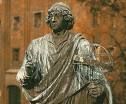

The original Coppertone Baby kept his ass out of the Sun on purpose? On May 24, 1543 (May 14 Old Style) (Mon.) Nicolaus Copernicus (Lat. "copper worker") (b. 1473) dies in Frombork, Poland after allegedly awakening from a stroke-induced coma long enough to view the first printed copy of his magnum opus Six Books on the Revolutions of the Celestial Orbits (De Revolutionibus Orbium Coelestium), advancing the Heliocentric Theory (which he had shelved, claiming it to be incomplete or even erroneous, but more likely afraid of Catholic reprisals?), which was pushed through the press by his one and only pupil Georg Joachim Rheticus (Rhaeticus) (von Lauchen) (1514-74) (a Lutheran math prof. whose father had been executed for heresy), and is pub. posth. in safe Protestant Nuremberg; it is (fawningly?) dedicated to Pope Paul III, and incl. a cautious (mendacious?) Preface by Andreas Osiander (1498-1552) of Konigsberg, stating that the revolution of the Earth is a mere mathematical convenience and not necessarily a physical fact (although Coppertone Baby had considered it otherwise?); "There have already been widespread reports about the novel hypotheses of this work, which declares that the Earth moves whereas the Sun is at rest in the center of the Universe. Hence certain scholars, I have no doubt, are deeply offended and believe that the liberal arts, which were established long ago on a sound basis, should not be thrown into confusion. But if these men are willing to examine the matter closely, they will find that the author of this work has done nothing blameworthy. For it is the duty of an astronomer to compose the history of the celestial motions through careful and expert study. Then he must conceive and devise the causes of these motions or hypotheses about them. Since he cannot in any way attain to the true causes, he will adopt whatever suppositions enable the motions to be computed correctly from the principles of geometry for the future as well as for the past. The present author has performed both these duties excellently. For these hypotheses need not be true nor even probable. On the contrary, if they provide a calculus consistent with the observations, that alone is enough. Perhaps there is someone who is so ignorant of geometry and optics that he regards the epicyclc of Venus as probable, or thinks that it is the reason why Venus sometimes precedes and sometimes follows the Sun by forty degrees and even more. Is there anyone who is not aware that from this assumption it necessarily follows that the diameter of the planet at perigee should appear more than four times, and the body of the planet more than sixteen times, as great as at apogee?"; the kind of reception awaiting Copernicus' followers is shown right away, when the first Auto da Fe, AKA Act of Faith, or burning alive of heretics (Protestants) by the Spanish Inquisition dressed in weird sinister hoods takes place in the island of Goa in SW India (goa to Hell, you heretics?), and Pope Paul III issues his first Index Librorum Prohibitorum (Index of Prohibited Books); each lucky heretic gets to wear a black sanbenito painted with flames and devils to his own BBQ - toast them marshmallows on a stick, hooray for Christ?
In 1543 Turkish adm. Barbarossa II cruises toward Marseille with 210 ships and 30K troops to assist his ally Francis I of France, captures Reggio Calabria, lands on the coasts of Campania and Lazio, threatens Rome from the mouth of Tiber until Francis I intervenes to tell him to cool lit, then satisfies himself with raiding several Italian and Spanish settlements, then sieges Nice, which holds them off a long time but gives up on Aug. 5, after which Barbarossa takes 2.5K captives and pillages the city; he then lands at Antibes and Ile Sainte-Marguerite near Cannes, sacks San Remo, Monaco, and La Turbie, then winters in Toulon while sending occasional ships to bombard Spanish costal cities.
In 1544 after assisting their brother Gonzalo Jimenez de Quesada in conquering Colombia and founding Bogota, Spanish conquistador Hernan Perez de Quesada (1500-44) and his brother Francisco flee for political reasons, and are killed by lightning while sailing to Cuba; the Colombian natives call it divine retribution for killing the last of the Chibcha kings.
In 1544 the silver mines of Potosi, Bolivia (highest city in the world, alt. 13,420 ft. or 4,090m) are discovered by Diego Huallpa, becoming the most important Peruvian mining center until 1585; the city of Potosi is founded at the foot of the Cerro Rich (rich hill) on Apr. 10, 1545 as Carlos V City; the port of Nombre de Dios in Panama becomes the major port of call for the Spanish treasure fleet, reaching 200K pop. until the rise of Veracruz, Mexico in 1580.
In 1544 Inca chief Manco is assassinated in Vilcabamba by seven exiled Almagro partisans who trick him into playing a game of quoits on the plaza then stab him to death for the price on his head; his 9-y.-o. son Titu Cusi is wounded but escapes; Sayri Tupac (-1561) becomes Inca (chief) of what's left of the exiled Incan civilization.
In 1544 Bartolome de las Casas becomes Roman Catholic bishop of Chiapas in S Mexico (until 1547), later returning to Spain, where he writes about his experiences and preaches the Indians' case.
In 1544 newly-appointed royal viceroy Blasco Nunez Vela arrives in Peru (New Castile), only to be expelled to Panama in chains by Gonzalo Pizarro, who claims rulership of Peru, causing him to gather an army for a comeback in 1546.
On Jan. 18, 1546 the Battle of Anaquito (Añaquito) near Quito sees 700 Spanish conquistador rebels in Peru led by Gonzalo Pizarro defeat 200-300 soldiers loyal to Spanish viceroy of Peru #1 (since May 15, 1544) Blasco Nunez de Vela (b. 1490) at Anaquito, kill him, then parade his head around on a pike, and declare their man Gonzalo Pizarro as gov., causing the Spanish govt., fearing loss of the colony to back down and water down their New Laws protecting indios and restore the encomiendas.
In 1546 Spain's "New Laws" (1542) barring enslavement of Indians are repealed at the insistence of New World colonists; meanwhile the brutality of the German Welsers in Venezuela, combined with protests in Spain against granting land to "foreigners" causes the crown to revoke their concession and send Spanish troops to conquer Venezuela (finished 1556), which an Indian confederation resists for 10 years until smallpox softens them up for the kill.
In 1546 Pedro de Valdivia penetrates into S Chile, fighting the hostile Mapuches.

In 1546 after Mayan slaves, led by native priests revolt against their encomiendas in E Yucatan, the Spanish and their Catholic traitor Mayan allies finish conquering Yucatan, founding Valladolid (in modern-day Morelia) and Salamanca de Bacalar, and enslaving Mayans and distributing them to encomiendas, where they are treated like, er, shit, while Yucatan's first Roman Catholic bishop, Franciscan monk Diego de Landa Calderon (Calderón) (1524-79) burns all of the Mayan books he can find, uttering the soundbyte: "They contain nothing but the lies of the Devil", finally being recalled to Spain for overzealousness; only the area of Peten (Petén) in modern-day N Guatemala and Campeche, SE Mexico remains unconquered (until 1700).
In 1546 Pedro de Alvarado arrives with 500 men to seize land from Sebastian de Belalcazar, claiming that it had not been part of the grant made to Pizarro, but Pizarro's men cause him to abandon his claims and turn back in exchange for a large indemnity; too bad, Belalcazar orders the execution of neighboring province gov. Jorge Robledo, and gets convicted and condemned to death in absentia in Spain for murder in 1550, then dies in 1551 on his voyage to Spain to appeal the verdict.
In 1547 New Spain viceroy Antonio Hurtado de Mendoza convenes an ecclesiastical conference attended by Bartolome de las Casas, and passes regulations requiring Indian slave laborers to be paid, fixing the max number of hours they can work, and protecting Indians lands from exploitation - Curb Cereal's new crunch is different?
By 1548 the number of Caribbean (from the word cannibal) aborigines has fallen from 1M in 1492 to less than 1K (about 500); African slaves are now brought in to work the mines and fields.
On Apr. 9, 1548 after Pedro de Valdivia returns from Chile to Peru to support viceroy Pedro de la Gasca, Francisco Pizarro's son Gonzalo Pizarro is defeated at the Battle of Xaquixaguana (Jaquijahuana), then executed; even though La Gasca redistributes some encomiendas, some conquistadors remain discontented.
On Oct. 20, 1548 the city of La Paz (La Ciudad de Nuestra Senora de La Paz) (The City of Our Lady of Peace) in W Bolivia (modern-day pop. 877K/2.3M) is founded by Spanish conquistadors on the site of an earlier settlement.
In 1549 the Audiencia of Nueva (New) Granada is created in N South Am., incl. Santa Marta, Cartagena, and Popayan, with capital at rhombus-shaped Santa Fe de Bogota in the Bogota Plateau, which becomes known as "the Athens of South America".
In 1549 the city of Bahia (modern-day Cidade do Sao Salvador da Bahia de Todos os Santos) (City of Holy Savior of All Saints Bay) (modern-day pop. 15M) in Brazil is founded by Thome de Souza (-1560); Brazil is made a royal colony by Portugal; a Roman Catholic see is founded there by Pope Julius III in 1551.
In the 1550s after five decades of war the Muzo Indians of Columbia, who occupy the emerald-rich area of the E ridge of the Andes Mts. in Columbia are conquered by the Spanish, who force them into slave labor in the mines, causing Colombia to become the world's #1 producer of emeralds.

In 1550 Don Francisco de Urdinola (Urdiñola) the Elder (1498-), who later strikes it rich with the Bonanza Mine founds San Luis Potosi (Potosí) in C Mexico (modern-day pop. 2.7M) (see 1583); in 1592 gold and silver are discovered, and the town is named in honor of silver-rich Potosi, Bolivia.
In the late 16th cent. Spanish writers begin developing the picaresque novel, the Moorish novel (chivalric tales of fighting the Moors), and the pastoral novel (idealized shepherds, stolen from Italy and Portugal); the first Moorish novel is the anon. El Abencerraje.
On Feb. 6, 1550 (night) the Battle of Andalien near the Andalien River in Chile is a V for 200 Spanish soldiers under Pedro de Valdivia and 300 Mapochoes auxiliaries under former enemy Michimalonco ("michima" + "lonco" = foreigner + chief) over 20K Mapuche under their chief (toqui) Ainavillo (Aynabillo) (Aillavilu) ("aila" + "filu" = nine snake), who try a surprise night attack on their camp, after which Ainavillo gathers a new 6K-to-60K-man army to attack the new Spanish fort at the Battle of Penco on Mar. 12, losing 4K KIA and 200 taken POW.
So much for the Renaissance, let's start this half-century with blood and fire? Talk about mentally unstable sadists? In Apr. 1550 HRE Charles V issues the Eternal Edict Against Heresy of 1550, to be "published forever, once in every six months, in every city and village of the Netherlands", forbidding all meetings in homes for the purpose of religious worship, all reading of the Bible, and all discussion of controversial religious matters; punishment is burning alive, unless one repents, in which case if they are male they are to be beheaded, and if female to be buried alive; death can be escaped only by feeding others to the flames by betraying them; officials showing leniency or mercy are to be removed from office and punished likewise; during Charles V's 40-year rule 50K-100K Netherlanders perish in his cheery little Inquisition.

On Aug. 23, 1550 Luis de Velasco (1511-64) arrives in New Spain to become its 2nd viceroy, and takes office in Mexico City on Nov. 25 (until 1564).
On Oct. 5, 1550 the seaport-river city of Concepcion (Concepción) Concepción de la Madre Santísima de la Luz (Conception of the Blessed Mother of Light) (modern-day pop. 292K/1.3M) is founded in the Bio-Bio region of SC Chile by Pedro de la Gasca and Pedro de Valdivia.
In 1550 Spanish viceroy (since 1546) Father Pedro de la Gasca returns to Spain after pacifying the region and ameliorating the condition of slaves, which pisses-off the Spanish, and New Spain viceroy (since 1535) Antonio Hurtado de Mendoza becomes Spanish viceroy #2 of Peru next Sept. 23 after a long overland trip from Mexico, followed by a boat trip from Panama, soon facing a Spanish revolt led by Francisco Giron (Girón) (-1554) (ends 1554); when Mendoza takes sick and dies on July 21, 1552, the audiencia exercises interim authority to fight the revolt.

In 1550 Don Francisco de Urdinola (Urdiñola) the Elder (1498-), who later strikes it rich with the Bonanza Mine founds San Luis Potosi (Potosí) in C Mexico (modern pop. 1.4M/200K) (see 1583); in 1592 gold and silver are discovered, and the town is named in honor of silver-rich Potosi, Bolivia.

In 1550 Spanish viceroy (since 1546) Father Pedro de la Gasca returns to Spain after pacifying the region and ameliorating the condition of slaves, which pisses-off the Spanish, and New Spain viceroy (since Apr. 17, 1535) Antonio Hurtado de Mendoza quits on Nov. 25, becoming Spanish viceroy #3 of Peru next Sept. 23 (until July 21, 1552), after a long overland trip from Mexico, followed by a boat trip from Panama, soon facing a Spanish revolt led by Francisco Giron (Girón) (-1554) (ends 1554); when Mendoza takes sick and dies on July 21, 1552, the audiencia exercises interim authority to fight the revolt.
In 1550 the first Jesuits reach Brazil.

In 1550 the epic Valladolid Debate in Spain between pro-slavery Dominican Juan Gines (Ginés) de Sepulveda (Sepúlveda) (1494-1573) and anti-slavery Dominican Bartoleme (Bartolomé) de las Casas (1484-1566), bishop of Chiapas over the plight of the Am. aborigines begins, and after a 5-day speech backed up with armloads of his 40-year research, Casas persuades the king to forbid new expeditions against the Indians and to order that they be treated as humans, although nobody really heeds him and the ban on expeditions expires in 10 years?; meanwhile there is little interest in the New World in Europe, and only in this decade when Spain and England form closer ties does it begin to develop, and until now stupid readers are handed illustrations of Turkish life and don't know the difference, but the development of copper-plate engraving in this half-cent. finally allows accurate reproduction of original drawings, wising them up?
In 1550 Spanish conquistador Pedro de Cieza de Leon (León) (1520-54) pub. Journal of Travels, becoming the first to give the avocado the Spanish name aguacate, from the Aztec word "ahuacatl" for testicle - no wonder the English prudes changed it to alligator pears? In 1553 he pub. Chronicle of Peru (vol. 1 of 4), which becomes the first Euro pub. to mention the potato; the last 3 vols. are pub. in the 19th and 20th cents.
On May 2, 1551 the U. of Lima (Nat. U. of San Marcos) in Lima, Peru is chartered by HRE Charles V, becoming the oldest univ. in the Americas to survive to modern times.
On Sept. 22, 1551 the Royal and Pontifical U. of Mexico, founded by Luis de Velasco to train young men for the Church (modeled after the U. of Salamanca) is chartered by crown prince Philip on behalf of HRE Charles V; in 1865 anti-clerical Maximilian I of Mexico closes it.
In 1551 Alvar Nunez Cabeza de Vaca is recalled from Paraguay to Spain under arrest and sentenced to banishment in Africa until 1556, when he gets a pardon along with a high judicial office in Seville.
In July 1553 the Spanish capture and sack Hesdin in Pas de Calais in N France on the Canche River.



On Oct. 27, 1553 Swiss Protestant leader John Calvin (1509-64) burns his theological enemy, Unitarian (non-Trinitarian) Catalan scholar Michael Servetus (b. 1511) (who was captured while fleeing to his protection after escaping a prison of the Spanish Inquisition) in Geneva, executioner Guillaume Farel warning the audience: "(Servetus) is a wise man who doubtless thought he was teaching the truth, but he fell into the hands of the Devil... Be careful the same thing doesn't happen to you"; liberals lose their illusions about Bible-thumpers ever lightening up anything but a faggot, and a corner is turned in the fight for freedom of conscience? at his trial Servetus is ridiculed for describing Palestine as a sparse, sterile land when the Bible says it's the land of milk and honey; noted noble Paris-educated French Protestant ex-humanist poet Theodore Beza (1519-1605) backs Calvin up - I look bad, feel bad, which is most important?

On Dec. 25, 1553 Chilean gov. #1 (1540-7, 1549-) Pedro de Valdivia (b. 1497) is KIA in the Battle (Disaster) of Tucapel near Ft. Tucapel in a revolt of the Mapuche (Araucanian) Indians (captured then executed?), led by Lautaro ("swift hawk") (1534-7) (his former servant, who escaped and taught the Mapuches how to ride horses), stopping the Spanish advance; too bad, Mapuches have to have a lengthy V celebration, which allows the Spaniards to regroup in Concepcion.
On Jan. 25, 1554 Sao Paulo in SE Brazil (modern-day pop. 12M/21.2M) is founded by Jesuit missionaries Manuel da Nobrega and Jose de Anchieta on an Indian campsite 45 mi. from the coast.
On Feb. 23, 1554 5K Mapuch warriors under chief (toqui) Lautaro battle 180 Spanish soldiers and 1.4K-2.1K Indian auxiliaries under Francisco de Villagra (1511-63) at the Marihueno (Marihueñu) Hill, and score a V, killing 84 Spaniards and most of the auxiliaries, and capturing all the artillery, but the lengthy V celeb allows the Spaniards to regroup in Santiago, by which time the Mapuches catch smallpox from them.
On July 26, 1554 38-y.-o. Queen Bloody Mary the Catholic of England marries 27-y.-o. Spanish king (1556-98) Philip II (the Prudent) (1527-98), son of Inquisition-loving HRE Charles V (his 2nd wife after Mary of Portugal, mother of Don Carlos de Austria), who is made king of Naples by his father as a wedding gift, and together they officially restore the Roman Catholic Church in England, reviving the 1401 De Heretico Comburendo act so they can burn heretics (300+ total starting in Feb. 1555, some getting bags of gunpowder tied to their legs to finish them off quickly); Philip II is now king of England, and Mary falls madly in love with him; Mary's popularity in England at first soars when she announces that she's preggers, and therefore her Catholic dynasty is here to stay, then plummets after it turns out to be a fantasy in 1555 and they joke about her being pregnant with a lapdog; meanwhile she imprisons her half-sister and heir presumptive Elizabeth Tudor on false charges of participating in Wyatt's Rebellion, along with Sir John Harrington and his wife Isabella Markham, who are rewarded in 1561 by Liz by standing godmother to their eldest son John (she is later released, after professing to be Catholic); Robert Dudley is released from the Tower after Philip II intercedes.
Ow? Ow? Augsburg? On Sept. 25, 1555 after HRE Ferdinand I attends the Diet of Augsburg to force the 225 German princes to agree, the Peace of Augsburg (Augsburg Settlement) is signed by HRE Charles V, giving imperial recognition to the 1530 Confession of Augsburg, granting Lutheran (not Calvinist) states equal rights with Roman Catholic states, and establishing the principle "cuius regio ejus religio" (the confession of the subject is dependent on that of the territorial prince), incl. the right to introduce the Lutheran faith (jus reformandi), although no provision is made for the Calvinist faith; by imperial decree Roman Catholic bishops and abbots who go Lutheran lose their offices and incomes; the Holy Roman Empire (and the idea of world imperialism?) begins to decay, leading to a bunch of personal one-valley monarchies, and eventually to the Thirty Years' War (1618-48).
In Dec. 1555 Pope Paul IV forms a new league to kick the Spanish out of the Papal States, with the French agreeing to ally with the pope and Ferrara to conquer Milan and Naples, then to set up French princes to rule with the pope as suzerain, and also to kick the Medici out of Florence and restore the repub.; Charles of Guise, cardinal of Lorraine signs for France.

In 1555 an army of 4K Chilean Mapuches under Lautaro ("swift hawk") (1534-57) siege Concepcion, and only 38 Spaniards escape; too bad, the Mapuches, thinking they've kicked Spanish butt break up, and Lautaro's army dwindles to 600, while the Spaniards regroup in Santiago.

In 1555 Spanish soldier Alonso de Ercilla y Zuniga (Zúñiga) (1533-94) sails with a royal Spanish squadron to South Am. and fights the Araucanian Indians of Chile, later writing the epic poem La Araucana, where he notes the heroism of both Indians and Spanish; of course, for this transgression he gets accused of treason, and is about to be executed when his sentence is commuted, and after being vindicated he returns to Spain in 1562, and is made a duke in 1564.
On Feb. 5, 1556 after Guise rival Anne de Montmorency (1493-1567), constable of France arranges it, Henri II of France and Philip II of Spain sign the Treaty (Truce) of Vaucelles with Spain, frustrating Guise plans in Italy.
On July 31, 1556 Jesuit Order (Society of Jesus) founder (St.) Ignatius of Loyola (b. 1491) dies in Rome; the order is established in Prague; by now it has about 1K members worldwide - bon appetit?


On Aug. 27, 1556 after his brother Ferdinand I's work at Augsburg restores good relations, which had grown icy after he designated the imperial crown for his Valladolid-born Hapsburg son Philip II (the Prudent) (1527-98) instead of him on Jan. 16, gout-suffering HRE Charles V (Charles I of Spain) gets religion and officially abdicates at Brussels, designating Ferdinand I as king of Germany (reserving his title of HRE until 1558) and Philip II as "Most Catholic King" of Spain (until Sept. 13, 1598), although his "advice" remains a command; under Philip II Spain reaches the height of its grate wealth and powah, entering its Golden Age as "the empire on which the Sun never sets", although Spain declares bankruptcy in 1557, 1560, 1569, 1575, and 1596, allowing the Dutch Repub. to declare independence in 1581; the war with France continues; Charles V retires to a luxurious life in the monastery of Yuste N of the Tagus Valley as a private individual not a monk, with 150 attendants (who are forever busy digging up fishy delicacies for his table), giving official control of the Hapsburg lands to Ferdinand I, while Philip II gets Spain, its overseas colonies, the Spanish islands in the Mediterranean (incl. Sicily), the Italian possessions (incl. Naples, Milan), Franche-Comte, and the Netherlands, causing speculation that there will be a winner-take-all war later; daddy "advises" Philip II to be "cutting out the root of heresy with rigor and rude chastisement", causing him to order the duke of Alva to give up his attacks on the Papal States in the Italian campaign so he can go toast some Dutch butt; Philip II speaks only Spanish but now rules the Netherlands along with his 2nd wife Bloody Mary Tudor of England, and reenacts Charles V's Edict of 1550, beginning "the longest, the darkest, the bloodiest, the most important episode in the history of the religious reformation in Europe"; he appoints inquisitor-gens. who send out a dozen inquisition officers throughout the Netherlands (Peter Titelmann et al.) to arrest people and burn them at the stake for offenses incl. reading the Bible, joking as they writhe in the flames; meanwhile during his reign Spain enters its Golden Age, reaching the height of its wealth and powah, becoming known as "the empire on which the Sun never sets" - yes I've seen it before, just little bits of history repeating?
In Sept. 1556 the duke of Alva is ordered to move against Rome to stop persecution of the pro-Spanish clique by Pope Paul IV.
In Oct. 1556 Lautaro and his reduced force move N to the Mataquito River, are attacked by the Spanish, and retreat S to the Itara River, planning a sneak attack of Santiago; too bad, a traitor tips the Spanish off.
In 1556 the Spanish finish conquering Venezuela.
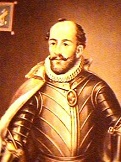

On Mar. 30, 1557 Andres Hurtado de Mendoza (Andrés Hurtado de Mendoza, 3rd Marquis of Cañete) (1495-61) becomes viceroy #5 of Peru (until Mar. 30, 1561), finally establishing Spanish authority, while his son Garcia Hurtado de Mendoza (1535-1609) resumes the Spanish conquest of Chile, with special permission to enslave rebel Indians, and goes after Lautaro.
On Apr. 29, 1557 the Spanish stage a surprise attack on Lautaro (b. 1534) from the Caune Hills and kill him.
In 1557 the Double Default of 1557 sees the Spanish and the French default on their debts.

In Mar. 1558 HRE Charles V (b. 1500) formally abdicates at the Monastery of Yuste in Spain, then dies on Sept. 21; he recognizes his illegitimate son Don Juan of Austria (b. 1547) in his will, and entrusts him to the care of Philip II, who grants him the rank of a prince of the House of Austria with a residence in Madrid next year; on Mar. 14 handsome goateed Ferdinand I (1503-64) is crowned HRE in Frankfurt (until 1564), working to effect a Catholic-Protestant reunion, which ultimately flops because of his insistence that bishops retain their secular authority.
On Dec. 13, 1558 the Battle of Quiapo in Arauco Province, Chile is another V for 200 Spaniards under Garcia Hurtado de Mendoza over 7K-8K Mapuchi under chief (toqui) Lemucaguin or Caupolican (Caupolicán) the Younger.
In 1559 Philip II of Spain establishes the Roman Catholic U. of Douai (Douay) in Douai, N France; lectures begin in 1562; it goes on to become the 2nd largest univ. in France in the late 17th and 18th cents., becoming a main center of neo-Latin lit. along with math and physics esp. ballistics; it is closed in 1795-1808; in 1887 it is transferred 27 km. away, becoming the U. of Lille.
Between 1560 and 1600 240K Spaniards emigrate to the Americas, incl. a number of conversos (Spaniards of Jewish ancestry); meanwhile the lucky few, incl. a brother of St. Teresa of Avila return with fortunes.



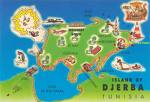
On May 9-14, 1560 the naval Battle of Djerba sees the Turks under adm. Piyale (Piali) Pasha (1515-78) and the corsair Dragut Reis (1485-1565) defeat the mainly Spanish Holy League fleet under old fart Giovanni Andrea Doria (1466-1560) et al. near Djerba Island off Tunisia, sinking half its ships, then taking the Spanish fort at Djerba after 3-mo. siege; all 5K POWs are massacred, the bones forming 20-ft.-high Skull Fort, which lasts three cents.
In 1560 the village of San Luis de Tampico in Tex. is founded by Spanish Franciscan Father Andres de Olmos, later becoming Tampico in Tamaulipas, Mexico.

In Jan. 1561 Capt. Pedro de Urzua is killed by his own men, who mutiny under the leadership of Basque-descent conquistador Lope "El Loco" (the Madman) de Aguirre (1510-61) after they despair of finding El Dorado in the Amazon Basin and renounce allegiance to Spain, seeking to return to Peru and establish an independent kingdom; on Mar. 23 Aguirre makes his 186 men sign a statement acknowledging him as "Prince of Peru, Tierra Firme and Chile"; while marching through Venezuela, the Spanish defeat them and kill Aguirre in Barquisimeto on Oct. 27 after he murders his daughter Elvira for being "bedded by uncouth people", after which he is beheaded and his body quartered and sent to nearby towns; the story is depicted in the 1973 film Aguirre, Wrath of God.
On Mar. 2, 1561 the Spaniards under Pedro del Castillo reach Cuyo, Chile and found the city of Mendoza (Ciudad de Mendoza del Nuevo Valle de La Rioja) in W Argentina (modern-day pop. 115K/1M), named after Chile gov. Garcia Hurtado de Mendoza, utilizing the old Huarpe irrigation system.
In 1561 Valladolid burns down, and Philip II declares his hometown of Madrid the capital of Spain.
On July 12, 1562 Yucatan Roman Catholic Bishop Diego de Landa holds an auto da fe, burning thousands of Mayan codices (books) and 5K Mayan religious images; he later admits to only 27 books; in 2014 a treasure trove of thousands of codices is discovered near Uxmal in the Yucatan Peninsula; Roman Catholic apologists call this book burning story part of the Black Legend, an alleged false attempt to smear Holy Mother Church - black as in soot?

In 1562 English profiteer Sir John Hawkins (Hawkyns) (1532-95) (2nd cousin of Sir Francis Drake, who starts out as his apprentice) sails to the New World along with three ships, kidnapping 301 African slaves from a Portuguese slave ship in Sierre Leone before reaching Borbuta, Venezuela, then Rio Hacha in Colombia, selling the slaves for sugar, ginger, and pearls in Santo Domingo after flaunting the Spanish, who try to impose taxes, which he laughs off with a threat of burning them down, causing them to ban all English ships from trading in the West Indies; he then returns to England via the French colony in Fla., arriving next Sept., giving his backers a tidy 60% profit, becoming the first to run the Triangular Trade to the Spanish colonies in the Americas and make a profit, interesting Queen Elizabeth I, who takes shares in his expeditions in 1564 and 1567, during which he makes improvements to English ships that help them win against the Spanish Armada in 1588, for which he is promoted to rear adm., while he introduces tobacco smoking to English sailors, along with sweet potatoes; thanks to Hawkins late in this cent. the Transatlantic Triangular Slave Trade is developed between W Africa, the Caribbean, and Europe (ends early 19th cent.).
In 1562 Spanish capt.-gen. Francisco de Ibarra (1539-75) becomes gov. of Nueva Vizcaya in New Spain, and begins its subjugation (ends 1570).
In 1562 HRE Maximilian II brings a Spanish horse to Austria and founds the court stud at Kladrub; in 1572 the Spanish Riding School is founded in Vienna, becoming the oldest classical dressage riding school to survive to modern times; in 1580 his brother Archduke Charles II founds another court stud at Lippiza (Lipca) in Slovenia, from which the Lipizzaner Stallions descend, which are later adopted by the Spanish Riding School - confusing Gen. George S. Patton Jr.?

In 1563 the city of Durango in NW Mexico (first settled in 1556) (modern-day pop. 1.75M) is founded by silver-seeking Basque explorer Capt. Francisco de Ibarra (1534-75), who names it after his native town in Biscay, Spain, facing immediate challenges from the indigenous pop., who make it difficult to settle there.
On Mar. 25, 1564 the Battle of Angol near Los Infantes, Chile is a V for 60 Spaniards with 12 arqubusiers and a field gun and 500 Indian auxiliaries under Lorenzo Bernal del Mercado over 4K Mapuches under chief (toqui) Illangulien (Illangulién), who lose 1K KIA.
In June 1564 Philip II of Spain sends Don Diego de Guzman de Silva as his new ambassador to England to replace the Bishop de Quadra, who died last Aug. of the plague.
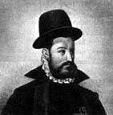
On July 31, 1564 New Spain viceroy (since 1550) Luis de Velasco (b. 1511) dies after going into debt to help the poor Indians, and on Oct. 16, 1566 Gaston Carrillo de Peralta y Bosquette, 3rd Marquis of Falces (1510-87) succeeds him (until Mar. 10, 1568), and immediately deals with a revolt of the Spanish nobles by Hernan Cortes' sons Luis and Martin, sending them back to Spain, his leniency toward the rebels getting him recalled, put on trial, and acquitted.


On Feb. 13, 1565 Spanish conquistador Miguel Lopez de Legazpi (1502-72) and his navigator (Augustinian friar) Andres de Urdaneta (1498-1568) arrive from Acapulco, New Spain (Mexico) in the Philippines and on June 24, 1571 found the city of Manila on Manila Bay in the South China Sea (modern pop. 1.8M/12.8M); in July they discover a good route back to Acapulco, which becomes known as Urdaneta's Route, and Legazpi returns as royal gov. of the Philippines to establish the "China route" through the "Spice Islands"; Augustinian friars follow and become a force in the islands, later joined by other orders, incl. Franciscans, Jesuits, Dominicans, and Recollects; tequila (distilled agave nectar) begins to be exported from Mexico via the Camino Real through the Sierra Madre Mts.; galleons are built in Barra de Navidad for the route from Veracruz to Spain.
On Mar. 1, 1565 the city of Rio de Janeiro ("January River") (Sao Sebastiao do Rio de Janeiro) (modern-day pop. 6.4M/12.3M) in Brazil is founded, becoming a favorite target for French buccaneers and pirates; on Jan. 27, 1763 the colonial admin. of Portuguese Am. is moved there from Salvador, after which in 1808 the Portuguese royal family and nobles flee Napoleon's invasion of Portugal there.
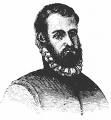
On Aug. 28, 1565 after Florida (Fla.) is settled by French Huguenots, troops sent by Spanish King Philip II, led by adelantado adm. Pedro Menendez de Aviles (Menéndez de Avilés) (1519-74) found the Spanish city of St. Augustine (San Augustin) (modern-day pop. 14K), with the parish church run by Padre Lopez, and build the massive coastal fort Castillo de San Marcos, designed by Ignacio Daza; on Sept. 20 they capture Huguenot-held Ft. Caroline, and in Oct. wipe out a Huguenot relief force under Jean Ribault in the Mantanzas Inlet, hanging their bodies with the legend "Not as Frenchmen but Lutherans"; the Spanish go on to build presidios and posts across the area and support the establishment of missions by Jesuits and Franciscans as far N as Va.

In 1567 Caracas (Santiago de Leon de Caracas) (modern-day pop. 1.9M/2.9M) in Venezuela is founded on July 25 by Diego de Losada (1611-69) in a fertile Caracas Valley 3K ft. above sea level (6 mi. SE of the Caribbean port of La Guaira) (in the crack of the valley's what?), becoming the first important settlement in Venezuela.



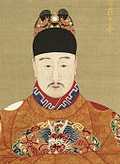

Be nice to Dutch Protestants, yes, and or duh, my bad? In 1567 the Dutch Protestant revolt against Spain and its Roman Catholic inquisitors (ends 1648) heats up when oh-so-bloody Catholic Spanish "Iron Duke" Fernando Alvarez de Toledo y Pimentel, 3rd Duke of Alva (Alba) (1507-82) (whited sepulcher?) is dispatched from Spain with 24K soldiers (incl. 10K of Europe's best soldiers), 6K horses, and 2K hos with orders to stamp out the heretical rebels, causing Calvinists and Lutherans to flee, incl. Flemish prince William I the Silent of Orange (1533-84), who up till now had been a tolerant Catholic, HRE Charles V's favorite in his teens, who had been awarded governorship of three N Netherlands provinces, but is financially involved with several rebels; in Aug. Alva arrives, and on Sept. 9 founds the Council of Troubles (Blood Council), a kangaroo star chamber without legal status which often convicts people just for being wealthy so they can rob them, and goes on to become such a mean ass that he whips the Dutch into a full-scale war of independence after summoning 10K to the Blood Council, incl. William I the Silent, who fails to appear, is declared an outlaw and forfeited, turning him into the rebels' leader, financing the Watergeuzen (Sea Beggars) (coastal corsairs), and organizing an army of German Protestant mercenaries; meanwhile Alva arrests Flemish statesmen Count Lamoral of Egmont (1522-68) and Count Philip de Montmorency Hoorn (1518-68), condemns them and confiscates their property, becoming his biggest fish-kills; Margaret of Parma resigns her regency in his favor and returns to Italy; if you're caught with a Bible or Protestant lit. in the Low Countries your ass is grass and Alva's got the lawnmower; "Alva's six-year reign was to be an unforgettable reign of terror in which the Spanish government attemped forcibly to uproot the now firmly entrenched Protestantism of the Northern provinces" (New Catholic Encyclopedia); to help him Pope Pius V's Holy Office condemns all 3M Netherlanders to death as heretics, a decree confirmed by his boss Philip II of Spain.
In 1568 the 2nd Rebellion of the Alpujarras (first in 1499-1501) in the mountainous Alpujarra region of Granada, Spain of Moriscos (Muslim Moors who had been faking Christian conversion) begins (ends 1571), and is viciously put down by HRE Charles V's bastard son Don John of Austria.

On Aug. 21, 1569 duke of Florence (since Jan. 6, 1537) Cosimo I the Great de' Medici (1519-74) is crowned grand duke of Tuscany by Pope Pius V (until Apr. 21, 1574), adding Siena to his territories; the gift binds the Medicis to Spain for the next two cents.
In 1569 Roman Catholic bishop Diego de Landa, called back to Spain for his practices of torturing Mayans during interrogation is cleared by a "committee of doctors", and sent back to become official bishop of Yucatan in 1571.
In July 1570 the Ottomans under Selim II invade Cyprus and capture Nicosia, then siege Famagusta in Aug. (until 1571), and declare war on Venice (ends 1573); meanwhile the Algerians retake Tunis from the Hapsburgs for the Ottoman Empire (until 1573), and siege Cyprus, causing Pope Pius V to form the Holy League next year with Spain and Venice against the Muslims; in 1569-74 Selimiye Mosque is built over St. Sofia Church in Nicosia.
In 1570 the 2nd Rebellion of the Alpujarras in Granada, Spain (begun 1568) is quashed.
On June 24, 1571 the Spanish under conquistador Miguel Lopez de Legazpi capture the Muslim-controlled city of Manila (modern-day pop. 1.8M/12.8M), and make it their new Philippine capital. ]






On Aug. 3, 1571 after an 11-mo. siege, 70K Turks capture Famagusta, capital and chief city of Cyprus, and massacre its pop.; on Oct. 7 after Pope (1566-72) Pius V (Antonio Michele Ghislieri) (1504-72) signs the Holy League Alliance with Spain and Venice, 200 Spanish and Venetian galleys under 24-y.-o. Don John (Juan) of Austria (1547-78) (half-brother of Philip II of Spain, and illegitimate son of HRE Charles V) defeat the 230-galley Turkish fleet at the 6-hour Battle of Lepanto (Naupactos) in a bay at the mouth of the Gulf of Patras (entrance to the Gulf of Corinth) off Lepanto in W Greece (biggest naval battle in Mediterranean history?) (last major naval battle fought exclusively by rowing vessels?) just before 5 p.m., with 12K Christian casualties vs. 6K Muslim POWs taken and 30K of 56K KIA, incl. Turkish fleet grand adm. Muezzinzade Ali Pasha aboard his ship, becoming the first defeat of Muslims by Christians on the sea, a big V for Western military technology, and the beginning of the end of the Ottoman naval threat in the C Mediterranean, destroying the myth of their invicibility, although both fleets are heavily damaged and the Ottomans speedily rebuild their fleet and restore their supremacy on the W and E sides; Spanish writer Miguel de Cervantes Saavedra (1547-1616) is wounded in the battle, calling it "the most noble and memorable event that past centuries have seen or future generations can ever hope to witness"; Italian-born Muslim convert Ottoman adm. Uluj Ali Reis (Giovanni Diongini Galeni) (1519-87) captures the flagship of the Maltese Knights along with its great banner before gathering the fleet's remaining 87 ships and returning to Constantinople, getting promoted on Oct. 29 to grand adm.; since most of the Ottoman sailors had been sent home for winter and the rest were involved in political squabbles, and the Christians outnumbered them, it was an overrated V for Christ?; the failures of war galleys cause their use to decline as better designs are sought and bigger vessels built; many Muslim POWs are taken and used to man Christian oars; bald, white-bearded future saint Pope Pius V allegedly sees the V in a vision in Rome at the exact moment it happens, ascribing it to intercession by Our Lady the Virgin Mary, even though he isn't informed of it officially until Oct. 21? - Playtex, who knows you like we do?
On Apr. 19, 1572 hoping to isolate Spain, England, and France conclude the Treaty of Blois, promising to provide each other with military-naval assistance against their common enemies, incl. Spain and the Netherlands, which ends England's isolation along with French support of Mary Stuart; Elizabeth I also hopes this will prevent France from invading Flanders; meanwhile Catherine de' Medici pushes her teenie son Duke Francois of Alencon on Elizabeth I harder.
In 1572 mercury is discovered in Peru, which is used to refine silver, leading to a flood of silver into Spain, causing happy Philip II to increase military expenditures using galleon futures to get credit from Genoese bankers.
In Mar. 1573 the English trade embargo on Spain is lifted.
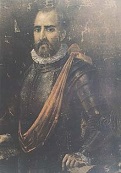
In Apr. 1573 the gov. of Asuncion sends Spanish conquistador Juan de Garay (1528-83) with 80 men on an expedition up the Parana River, founding the city of Santa Fe de la Vera Cruz (modern-day pop. 450K) in modern-day NE Argentina near the junction with the Cayasa River, later moving after constant flooding to the junction near the Salado River 106 mi. N of modern-day Rosario. In 1576 Garay is appointed gov. of Asuncion, and on June 11, 1580 he refounds Buenos Aires under the name Ciudad de la Trinidad and Port Santa Maria de Buenos Aires.
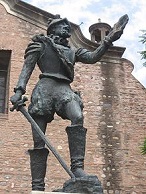
On July 6, 1573 after being appointed corregidor of Potosi, Peru in 1571, and commissioned by the gov. of Tucuman Province to explore NW Argentina, leaving Santiago del Estero last year with 100 men and 40 supply wagons, the city of Cordoba (Córdoba), Argentina on the Suquia River in the foothills of the Sierras Chicas Mts. 250 mi. S of Santiago de Estero and 435 mi. NW of Buenos Aires (modern-day pop. 1.3M/1.5M) is founded by Spanish conquistador Jeronimo (Jerónimo) Luis de Cabrera (1528-74), who names it after his wife's birthplace of Cordoba, Spain.
In 1573 After galleons began arriving there from Asia in 1550, causing 30 Spanish families to move there to establish a permanent base, building a port and a road to Mexico City in 1531, and the Marques Wharf between Bruja Point and Diamond Point in 1533, Spanish king Philip II declares the port city of Acapulco, Mexico (Nahuatl "Acapolco" = where the reeds are washed away) (modern-day pop. 687K) the official trading port of the Manila galleons in America, with a trading monopoly; the W end of the route in the Philippines is named Capul.
In 1573 Spanish viceroy Francisco de Toledo draws up rules for creation of reducciones (reductions) in South Am., self-sufficient Jesuit frontier settlements of a few thousand people each with their own churches and a barter-based economy, which become a bastion against Portuguese encroachment while stirring the jealousy of other Spanish settlers; 1.4M Indios of the former Inca Empire are resettled into 840 communities.
On Aug. 17, 1574 after establishing good relations with the native Comechingones and leaving Cordoba going E and reaching the Parana River 200 mi. away and founding the Fort of San Luis near modern-day Santa Fe, Argentina, becoming the viceroyalty of Peru's first usable beachhead towards the Atlantic Ocean, jealous Capt. Juan de Garay (1528-83) from Asuncion gets Jeronimo Luis de Cabrera condemned by arbitrer Gonzalo de Abreu for insubordination, with his sentence of garoting commuted to decapitation on Aug. 17 in Lima (Santiago del Estero?).
In 1574 Viceroy Toledo organizes the mita (forced Indian labor) system in Peru for the silver mines at Potosi (Potosí) in modern-day Bolivia (which end up producing 45K tons of pure silver) and the mercury mines of Huancavelica (discovered in 1563-4, and founded on Aug. 5, 1572) - Baby Doe Toledo? Burgos, Spain, capital of Castile at the edge of the C Iberian plateau becomes an archiepiscopal see.
On May 21, 1577 after Queen Joan tries in vain to stop it, the law forbidding pesky Jews from emigrating to the Spanish colonies in Am. is repealed - let the profits roll?
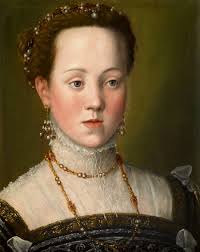
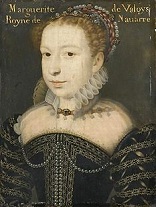

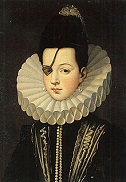
In July 1577 after taking care of his scandalously loose low-class widowed mother Barbara Blomberg (1527-97) (former mistress of HRE Charles V) by promising to send her to Italy to meet Margaret of Parma but actually shipping her off to Spain, Don John of Austria meets Margaret (Marguerite) of Valois, Queen of Navarre (1553-1615), daughter of Henry II and Catherine de' Medici, and sister of Frances II, Charles IX, Henry III, and Elizabeth of Valois, and after she leaves he seizes Namur, after which rumors spread of a love tryst; meanwhile he sends his secy. Juan de Escobedo (1530-78) to plead with Philip II to send his so-called mutinous troops back so he can finish off the Protestants, and the states-gen. figure him out and declare war on him; meanwhile when Escobedo gets to Spain, he ends up blabbing about a love affair between Philip II's chief secy. (since 1543) Antonio Perez (1540-1611) of Aragon (former friend and now mortal enemy, who had got Escobedo his job to spy on Don Juan, only to find him become loyal) and the widowed (since 1573) eyepatched Ana Mendoza de la Cerda (1540-92), princess of Eboli, which, combined with a bunch of lies concocted by Perez, causes pissed-off Philip II to order his assassination, which after three attempts is finally done on Easter Monday night, Mar. 31, 1578 in an alley outside the Church of St. Maria in Madrid (demolished 1868); too bad for Perez, Philip II finally becomes suspicious of him and gets him in legal and criminal hot water for years, getting the princess put under house arrest for life, while he escapes one jail after another until fleeing to France on Nov. 23, 1591 disguised as a shepherd in a snowstorm, spending the last 20 years of his life selling all his state secrets and painting Philip II as a cruel, intolerant, fanatical, er, never mind.

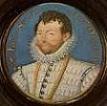
On Nov. 11, 1577 Elizabeth I appoints anti-Puritan Sir Christopher Hatton (1540-91) to her Privy Council, knights him, and makes him vice-chamberlain of her household; he also becomes her lover (does he do it with his hat on?); meanwhile in Nov. not-yet-sir Francis Drake (1543-96), after being presented to the queen and sponsored by Hatton sets out from England with five ships to circumnavigate (not circumcize?) the world via Cape Horn while sacking Spanish towns and harrying Spanish ships that had been attacking English ships ("So it is that I would be revenged on the king of Spain for divers injuries that I have received" - Elizabeth I); his own ship is the Pelican, which he renames the Golden Hind (Hinde) as he enters the Strait of Magellan in honor of Hatton, whose coat of arms is a golden female deer; he completes his epedition in 1580, and is knighted in 1581.

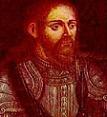
Rocking the suburbs, just like Michael did? Pushy Portugual goes too far, tries to reverse 7/11, and ends up zonking itself, letting Spain take it over? On Aug. 4, 1578 after ambitious king (since June 11, 1557) Sebastian I of Portugal (b. 1554) leads an expedition to Morocco to Christianize the Muslim Moors in alliance with deposed sultan al-Mutawakkil, his 20K-man army is drowned and he is KIA along with al-Mutawakkil at the Battle of the Three Kings (Alcacer Quibir) in Alcazar; since his body is never found, his subjects keep hoping for his return, calling him "the Desired"; Portugal begins its decline after his death; his regent and great-uncle Cardinal Henrique, the penultimate male prince of the legitimate line of the House of Braganza (Braganca) (founded 1442) becomes Henry (Henrique) I (1512-80), king #17 of zonked Portugal, which on his watch falls under Spanish control for 60 years; Abd al-Malik dies, and his brother Ahmad I al-Mansur the Victorious (El-Mansour Eddahbi) (1549-1603) becomes emir of Morocco (until Aug. 25, 1603), building the El Badi ("Marvelous") Grand Palace in Marrakesh and claiming the caliphate; Philip II of Spain orders the aged Duke of Alva on his last mission for the House of Hapsburg to conquer Portugal.




On Jan. 31, 1580 King-Cardinal Henry (Henrique) I (b. 1512) dies, leaving no heir (he wants to admit to?), and the Avis (Aviz) Dynasty in Portugal (founded 1385) ends (in with a Henrique, out with a Henrique?), causing the Portuguese secession crisis of 1580; in June old fart "Iron Duke" Fernando Alvarez (Álvarez) de Toledo y Pimentel, 3rd Duke of Alva (Alba) (1507-82) and a 40K-man army of Spanish troops along with German and Italian mercenaries land in Portugal, meeting a ragtag 8.5K-man Portuguese army along with 3K African slaves at the Aug. 25 Battle of Alcantara near Lisbon, which is captured on Aug. 27, after which Henry I is succeeded by Philip II (the Prudent) of Spain (1527-98) after six other less rich claimants are dealt with, esp. Duke John of Braganza (1543-83) (grandfather of Joao IV), and crowned next Mar. 25, founding the House of Hapsburg (Philippine Dynasty) in Portugal (ends Dec. 1, 1640), ruled by three Spanish Hapsburg kings named Philip, while the Spanish under the cruel-is-cool pain-no-problemo Duke of Alva crush all opposition; Philip II now rules the original empire in which the Sun never sets, taking the title of richest ruler in history (there's a crime in every fortune, to the nth power?); Ceuta reverts from Portugal to Spain; the annexation of Portugal vastly increases Spain's already formidable naval fleet.
On June 11, 1580 Spanish conquistador Juan de Garay (b. 1528) (who got his rival Jeronimo Luis de Cabrera executed in 1574) leads an expedition from Asuncion and refounds Buenos Aires (1st time 1536); too bad, on Mar. 20, 1583 he is ambushed and killed on the banks of the Carcarana River by Querandi (Querandí) natives, inventors of the bola.
In 1581 Spanish Capt. Ivan Sabala leads 100 soldiers and their families to Cagayan in NE Philippines to explore the Cagayan Valley, convert the natives to Roman Catholicism, and settle; in 1583 the entire NE are of Luzon Island is organized into the Province of Cagayan.
In 1581 the seven Dutch provinces within the Union of Utrecht (Guelders, Holand, Zeeland, Utrecht, Overijssel, Frisia, Groningen and Ommelanden) proclaim their independence from Spain, founding the Repub. of the Seven United Netherlands (Provinces) AKA the Dutch Repub., United Provinces, Federated Dutch Provinces, and Dutch Federation (ends 1795).
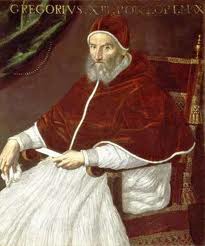
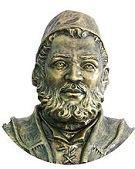



On Feb. 24, 1582 upon the recommendation of German Jesuit astronomer Christopher Clavius (1538-1612), Pope (since May 13, 1572) Gregory XIII (1502-85) issues the bull Inter Gravissimas, decreeing a changeover from the Julian Calendar to the Gregorian Calendar; 10 days (lost since Jan. 1, -46, when the Julian Calendar began) are to be dropped, so that Oct. 15 (Fri.) immediately follows Oct. 4, or Dec. 20 (Mon.) follows Dec. 9; the Papal States, Spain, Portugal, and Poland change in Oct., France, Holland, Belgium, and Scandinavia in Dec.; the Roman Catholic states of Germany and Switzerland adopt it in 1584, followed by Hungary in 1587; too bad, Protestant countries suspect a rat and refuse to change, and the Continental Protestant states hold out until 1700, and England and its colonies till 1752; Russia holds out until 1918, Greece until 1924, and non-Euro states don't adopt it until the 19th and 20th cents., Japan in 1873, Egypt in 1875, Turkey in 1926, and China in 1949; the figure for the length of the year from Copernicus' De Revolutionibus Orbium Coelestium is proposed but not used as the basis of the reform calendar; after a suggestion by Vatican librarian Topo Gigio, er, Aloysius Lilius (Luigi Lilio or Giglio) (1510-76), only century years (1600, 1700, etc.) with the century part itself evenly divisible by four (1600 but not 1700) are leap years, which causes three leap years to be taken out of each 400, trimming the avg. calendar year down quite fortunately to only about 26 sec. longer than the Earth's real orbital period, which will take 3,323 years to become 1 day out of synch; too bad, there should have been a 13-day discrepancy, not a 10-day one, causing the Phantom Time Hypothesis to be developed by Herbert Illig (1947-), Anatoly Fomenko (1945-), Uwe Topper (1940-) et al., that phony phantom centuries were manufactured during the Renaissance to create a nonexistent Dark Ages; Pope Gregory's new calendar for the Christian world changes the date of the new year from Apr. 1 to Jan. 1, and those who still celebrate New Year's Day on Apr. 1 begin to be known as April Fools.
In May 1582 a Roman Catholic plot to overthrow Elizabeth I and put Mary Stuart on the English throne is hatched in Paris by the Guises, Pope Gregory XIII, Philip II of Spain, and the Jesuits; on May 30 after being tortured on the Scavenger's Daughter, English Roman Catholic priest Thomas Cottam (b. 1549) is hanged in Tyburn for high treason, and his mutilated corpse boiled in water to prevent Roman Catholics from using it for relics; the Jesuits in England gain one of their top martyrs.


In July 1584 the Spanish army under Spanish Netherlands gov. (1578-92) Alessandro Farnese, Duke of Parma and Piacenza (1545-92) begins the Siege of Antwerp (ends Aug. 1585), defended by Philip (Philips) van Marnix, Lord of St. Aldegonde (1540-98); Farnese cuts off sea access with a boat bridge across the Scheldt from Calloo to Oordam; the siege becomes the first time a bomb is used; too bad, the porous lines of the siege allow smugglers to bring in grain, until the city decides to set a maximum price on it, making them not want to bother, causing starvation.

On Aug. 9, 1584 Philip II of Spain appoints the most Catholic Alvaro de Bazan (Álvaro de Bazán), 1st Marquis of Santa Cruz (1526-88) as Capt.-Gen. of the Ocean Sea to kick pesky Protestant British naval butt; known for never having lost a battle and for his personal galley La Loba (the She-Wolf) (named after its golden figurhead), he is given orders to plan an invasion of England after assembling a Spanish Armada, but the ineptness of the king and his administrators keeps him from getting very far before his premature death in Lisbon on Feb. 9, 1588.
In May 1585 Philip II orders the seizure of all English ships in Spanish ports, to be added to his Lisbon fleet; meanwhile Elizabeth I shocks Roman Catholic Europe by corresponding with Sultan Murad III in hopes of a miltiary alliance against Spain, writing that Islam and Protestantism have "much more in common than either did with Roman Catholicism, as both rejected the worship of idols" - which doesn't mean that Islam doesn't want to exterminate both?
On Aug. 15, 1585 Antwerp capitulates due to famine, after which it starts to fall behind Rotterdam and Amsterdam as an internat. port; Philip van Marnix is dissed by the English and Dutch for surrending, causing him to retire from public service and begin a translation of the Bible; the Spanish go on to reconquer practically all of S Netherlands; meanwhile after both Henry II of France and Elizabeth I of England decline sovereignty of the Netherlands, in Aug. Elizabeth makes a treaty taking them under her protection, and on Sept. 17 sends English troops to their aid, led by the earl of Leicester, with Sir Thomas Fludd (1530-1607) (Robert Fludd's father) as treasurer; in Sept. she makes Sir Francis Drake an admiral with a fleet of 22 ships, and sends him to capture Spanish bases Santo Domingo, Havana, and Cartagena in the Caribbean; he does so after first capturing Vigo on the coast of Spain; Martin Frobisher accompanies him as vice-adm. on the Primrose.
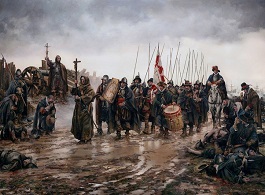
On Dec. 8, 1585 the Battle (Miracle) of Empel in the Netherlands sees 3K-4K Spanish soldiers under Juan de Aguila surrounded by 100 Dutch heretic ships under Adm. Philip of Hohenlohe-Neuenstein, causing the Spanish to be resigned to die rather than surrender until a soldier digs up a painting of the Virgin Mary and an unexpected night freeze allows them to burn the ships and kill hundreds of heretics, scoring a big V that they give to Mary, who is proclaimed the patroness of the Spanish Tercios of Flanders and Italy; after the battle, the Dutch adm. utters the soundbyte: "It seems that God is Spanish to work such a miracle for them."
In Apr.-June 1587 the English under Sir Francis Drake attack the Spanish Armada at Cadiz and Lisbon, delaying it for more than a year; at Cape St. Vincent he destroys their food and water barrels, and captures a huge haul of Spanish treasure in the Azores, incl. 2.9K barrels of sherry, making it popular in Britain.
On July 20, 1587 the pope signs a treaty with Spain, calling for a Roman Catholic crusade for the invasion of England, and consenting to Philip II nominating whomever he pleases to rule England, as long as the Roman Catholic faith is restored; Philip choses his daughter the Infanta Isabella Clara Eugenia.
In Aug. 1587 after taking Otend, Alessandro Farnese takes Sluis in Zeeland, the planned staging point for the invasion of England, and waits a year for the Armada to come - what's going through your head?

In Sept. 1587 the die having been cast when Mary's head fell, Philip II orders the Duke of Parma to assemble an invasion force of barges in the Netherlands to finish English Protestantism off; on Dec. 21 Charles Howard, 2nd Baron Howard of Effingham, 1st Earl of Nottingham (1536-1624) is appointed lord high adm. and cmdr. of the English fleet, which is mobilized effinghamly at jet speed; his flagship is the galleon Ark Royal, built this year in Deptford on the Thames River.

In 1587 after his younger brother Duke Francis of Anjou dies in 1584, and it becomes apparent that he won't produce an heir, Henry III of France fights in the War of the Three Henrys with the Holy League, headed by Henry of Lorraine, 3rd Duke of Guise (1550-88) and the Guise Family against Huguenot leader Henry of Navarre (Henry III's distant cousin), started by Philip II of Spain to keep France from interfeing with his Spanish army in the Netherlands and the planned invasion of England; it ends in 1589 when Henry of Navarre outlives the other two and becomes king Henry IV of France.

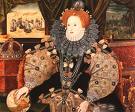

It's getting to be a habit with me? Another big V for Protestantism? The future of the English is so bright they need to wear shades? In Feb. 1588 the Marquis of Santa Cruz dies, and is replaced by Don Juan Alonso Perez de Guzman el Bueno, Duke of Medina-Sidonia (1502-58) as cmdr. of the Invincible Spanish Armada (130 galleon ships carrying 19K-27K men), whose plan is to land in Sandwich-Deal and support an invasion of England through Kent by the Duke of Parma's professional soldiers coming from Flanders (reinforced through the Spanish Road from N Italy), capturing it for the Roman Catholic faith, with exiled English Cardinal William Allen (1522-94) waiting in the wings; it sets sail from Lisbon on May 30, the very day that peace commissioners sent by both sides meet in Parma; after stopping at Corunna for supplies, it sets sail again, then is scattered by a storm from the Bay of Biscay; in early July it leaves La Coruna; on July 19 it is sighted off the The Lizard (Peninsula) by the 197-ship English navy (34 royal warships, 163 armed merchant vessels); on July 21 there is a skirmish off Eddystone, Plymouth, and another on July 23 off Portland, Dorset; on July 27 the Armada anchors off Gravelines between France and Spanish Netherlands to await for communications from Parma's army, the stench from its filthy galleys rowed by slaves chained to their benches carrying for miles on the wind; on Aug. 7-8 (July 28-29 Old Style) (Sun.-Mon.) English "hell-burners" (fire ships) are sent into the 130-ship (22 galleon and 108 armed merchant vessels) Spanish Armada (known for its powerful crescent formation) at the Battle of Gravelines, causing it to break ranks, after which it is defeated by the English guns at close quarters, losing five ships, with the rest badly damaged, and 600 KIA, 800 wounded, and 397 POWs taken; it then makes for Scotland without Parma's army, where it is broken up by a great "Protestant wind" off the coast on July 30, then forced onto the N and W Irish coasts, where 24+ ships are wrecked; the Spanish warship La Girona fires a broadside at the Chimney Tops in the Giant's Causeway on the N coast of Ireland (60 mi. NW of Belfast) after believing them to be an enemy fortress, ending up wrecked on Oct. 26, losing all but nine of 1.3K aboard; on Aug. 19 (Aug. 9 Old Style) glammed and glowing queen (since Nov. 17, 1558) Elizabeth I (1533-1603) rides down to Ft. Tilbury in Essex to cheer up the troops and see the Armada, and rides out with a 6-man bodyguard, giving her big Tilbury Speech while mounted on a grey gelding and dressed in white with a silver cuirass (metal breastplate), with the immortal soundbyte: "I have the body but of a weak and feeble woman, but I have the heart and stomach of a king"; after waiting two more days for a possible invasion by Parma's army from Dunkirk, the English troops disperse and party hearty; meanwhile the remaining 53 intact Spanish ships, having lost two-thirds of their men (15K-20K of the 11K sailors and 19K soldiers) straggle back to Spain by Oct. 14; the English lose eight ships, 50-100 killed, and 400 wounded, although 6K-8K later die of disease; Drake's co-admirals Martin Frobisher and John Hawkins are knighted for their role in the big British V; Elizabeth I hands out medals with the inscription "God breathed and they were scattered"; on Sept. 29 Spanish warship San Esteban is wrecked on the W coast of Ireland, with all survivors killed or taken POW and hanged after reaching shore; 10K English troops were equipped with firearms as an experiment, while the Spanish relied on archers, and the English success convinces military experts to give up on archery; the Armada Portrait of Elizabeth I, by an unknown artist shows her resting her hand on a globe over America; English Roman Catholic Charles Neville, 6th Earl of Westmorland (1542-1601), who commanded a 700-man army of English fugitives from Flanders flees to the Continent, and is attainted by Parliament, living on a small pension from the Spanish king until he dies broke on Nov. 16, 1601; British sea supremacy begins, along with increasing nationalism in England, helping secure Protestantism as England's state religion, and being white and not olive-skinned or some other shade of red, brown or black as the metareligion; Spain's officer class is wiped out, the Duke of Medina-Sidonia never recovers from the humiliation, the Duke of Parma's rep. remains under a cloud, but the Spanish keep hoping for a miracle from God to defeat the infidels, sending four more armadas until 1601; the Dutch are greatly helped in their battle for independence from the Spanish, going on to clear them from the territories of the Seven United Provinces by the end of the cent.
In Oct. 1590 Spanish forces allied with the French land in Brittany; Drake, Hawkins, and Frobisher return to England from their unsuccessful expedition to the Spanish coast; the war between England and Spain reaches an uneasy stalemate which lasts several years.
In 1590 James VI of Scotland reendorses the Nat. Covenant; meanwhile in this decade his Lutheran-raised wife Anne of Denmark converts to Roman Catholicism, adding to the friction between James and the Scottish churchmen, who criticize them for drinking, feasting, and dancing and being lenient to the Roman Catholic nobles of Scotland, esp. after the Spanish Blanks Plot of late 1592, where cipher letters from Catholic earls of N Scotland to the king of Spain are intercepted.
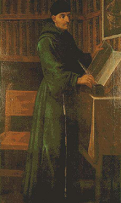
On Oct. 23, 1590 Spanish Franciscan friar Bernardino de Sahagun (Sahagún) (b. 1499) dies in the Convent of San Francisco, Mexico of grippe, leaving the 12-vol. Gen. History of the Things of New Spain (Codex Florentine), a picture encyclopedia of the Aztec culture, which shows too much respect for the cannibalistic pagans, causing Philip II to prohibit its pub. (it takes 240 years to be pub.); although acknowledging that Satan controlled them, de Sahagun claims that the Aztecs showed "more signs of virtue and Christianity than are found in many in our own nation."

In 1592 Spanish historian Juan de Mariana (1536-1624) pub. Historiae de Rebus Hispaniae (20 vols.) (Toledo), the history of the Iberian Peninsula since 1243, becoming a std. work; 10 more vols. pub. in 1605; it incl. De Rege et Regis Institutione (3 vols.) (1598), written at the request of Philip II and dedicated to his son Philip III, concluding that it is lawful for an individual or group to overthrow and kill a monarch who is a tyrant, the definition incl. violating the laws of religion, imposing taxes without consent, or preventing a dem. parliament from meeting, which makes it easier to point the finger at all Jesuits after the 1610 assassination of Henri IV of France?; some of his vols. get him imprisoned by the Inquisition, during which time they find another of his writings criticising the Jesuits themselves, later used by Charles III to ban them all from Spain.
In Jan. 1595 France declares war on Spain; in June Spain takes Doullens, followed in Oct. by Cambrai.
On July 21, 1595 after the earl of Tyrone tries to emulate Scotland's Auld Alliance by forming a similar alliance with Spain (but with less success because of the distances involved), four Spanish vessels are spotted off the coast of Cornwall, and on July 23 they land in Mount's (St. Michael's Mount) Bay (between Lizard Point and Gwennap Head), burn Penzance and sack Mousehole, but return to sea upon the arrival of English vessels, becoming the last Spanish landing in Cornwall.

On Nov. 5, 1595 Gaspar de Zuniga (Zúñiga) y Acevedo, 5th Count of Monterrey (1560-1606) becomes viceroy #9 of New Spain (until Oct. 26, 1603).
In 1595 Spain begins granting the asiento, a permit for a foreign trader to ship a certain number of slaves to its Am. colonies, causing the slave trade to blossom.
On Sept. 20, 1596 the city of Monterrey (Ciudad Metropolitana de Nuestra Señora de Monterrey) in the foothills of the Sierra Madre Mts. in NE Mexico (modern-day pop. 1.1M) is founded by new gov. #1 Diego de Montemayor (1530-1610) as the capital of the state of Nuevo Leon (Sp. "New Lion").
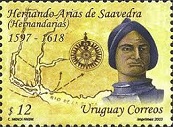
In 1597 Asuncion, Paraguay-born Hernando Arias (Hernandarias) de Saavedra (1561-1634) becomes gov. of Rio de la Plata (until 1599, then 1602-9), becoming the first person born in the Americas to become govt. of a New World Euro colony; in 1615-17 he becomes gov. of Paraguay.

You Anglos can take Plymouth Rock and? Early in 1598 Zacatecas, Mexico-born Spanish conquistador Don Juan de Onate (Oñate) Salazar (1550-1626) leads a Spanish expedition of 400 colonists under royal patent to subjugate New Mexico and establish a permanent colony on the Rio Grande River; after five waterless days crossing the desert, he finds the Rio Grande Valley near present-day San Elizario, Tex. (20 mi. SE of El Paso), calling it "the Elysian field of happiness", and on Apr. 30 claims the land drained by the Rio Grande River in the name of King Philip II, holding a Mass and celebration which becomes known as the "First Thanksgiving in the U.S."; an 83-wagon train with 7K livestock then continues upriver, crossing at the site of modern-day El Paso; on May 21 they bury Pedro Robledo at the site of modern-day Mt. Robledo, then explore the 90-mi. Jornada del Muerto (Dead Man's Route) to the N, running out of water and losing many colonists, until they see a dog with a wet muzzle and follow him to modern-day Perillo (Los Charcos del Perillo) ("The Pools of the Little Dog"); he stops at a Piro Indian pueblo N of San Antonio, receiving corn from them, causing him to name the pueblo Socorro (Sp. "help") (alt. 4,579 ft.), and two priests are dropped off, who raise the first grapes in New Mexico; on July 11 Onate reaches modern-day Espanola, an Indian pueblo N of modern-day Santa Fe, and founds San Gabriel del Yunque, which becomes the first capital of New Mexico, with himself as gov. of Santa Fe de Nuevo Mexico; next Jan. 22-24 the Acoma Uprising (Massacre) (Battle of Acoma Pueblo) is caused by his troops demanding supplies they need to survive the winter, which causes them to kill 13 Spaniards, and in retaliation next Jan. 22-24 Onate orders the murder of 800 villagers, and amputates the left foot of each of the remaining 80 men over age 25, then enslaves the remaining 500 women and children.
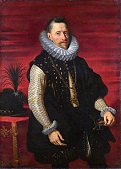
On May 2, 1598 the Treaty (Peace) of Vervins (Aisne) ends the 8th and last French War of Religion with Spain (begun 1592), with withdrawal of Spanish troops from France; Philip II resigns his claim to the French crown before croaking on Sept. 13 in Madrid, and France is united under Henri IV; on May 6 Roman Catholic archbishop Albert VII of Austria (1559-1621) (son of HRE Maximilian II) becomes Hapsburg gov. of the Netherlands (until July 13, 1621).


On Sept. 13, 1598 to the great relief of the English and the Huguenots, after 50 days of intense pain Spanish king (since Jan. 16, 1556) Philip II (b. 1527) dies, covered with stinking, putrefying sores and with a lead coffin placed by his orders at his bedside, and his 20-y.-o. son Philip III (the Pious) (1578-1621) becomes king of Spain, plus (as Philip II) king of Portugal, Naples, Sicily, and the Netherlands (until Mar. 31, 1621); a weak pious whimp, he entrusts the conduct of public affairs to Francisco Gomez (Gómez) de Sandoval y Rojas, 1st Duke of Lerma (1553-1625) while he has fun with religious observances and court festivities and stays away from realities; meanwhile his ministers try to get Spain out of the European wars while it licks its stinking, putrefying wounds; the glory of Spain is never again what it once was, but the Spanish do a good job of hiding it for some time because it's only been a cent. since Columbus?
In 1599 there is plague outbreak in Spain.

In 1603 Hernando Arias (Hernandarias) de Saavedra (1561-1634), Spanish gov. of Rio de la Plata in 1597-9 and 1602-9 ships some cattle and horses downstream to Asuncion, Paraguay, and they end up running wild, growing into large herds and becoming game for gauchos from Buenos Aires; meanwhile drought-stricken NE Brazil receives relief food from Philip III.

In 1605 after working as a chamber asst. to a cardinal in Rome, joining the Spanish navy and getting captured by Algerian corsairs in 1575, then released in 1580 after his parents paid the ransom, becoming a purchasing agent for the Spanish Armada, then a tax collector in 1597, getting him jailed in Seville for embezzlement (innocent accounting mistakes?), ending up in Valladolid, Alcala de Henares-born Miguel de Cervantes Saavedra (1547-1616) pub. The Ingenious Gentleman Don Quixote of La Mancha, Pt. 1 (El Ingenioso Hidalgo Don Quixote de la Mancha, Pt. 1) (Madrid) (pt. 2 in 1615); the first modern novel, founding modern Spanish; written in prison?; "An invective against books of chivalry... to diminish the authority and acceptance that books on chivalry have in the world and among the vulgar"; an old fart on an old nag (Rocinante), accompanied by credulous peasant Sancho Panza (a joke for "sacred belly"), thinking himself a knight and his servant a squire, attempts to take on the world to prove his love for Dulcinea, and tilts with a windmill after mistaking it for a giant, and mistakes a flock of sheep for an army; English trans. by Thomas Shelton pub. in 1612; "In a village of La Mancha the name of which have no desire to recall, there lived not so long ago one of those gentlemen who always have a lance in the rack, an ancient buckler, a skinny nag, and a greyhound for the chase." (opening line)
On July 3, 1620 the German Catholic League (founded 1609) and the German Protestant Union (founded 1608) kiss and make up and sign the Treaty of Ulm, under the terms of which the Protestant Union declares neutrality and drops its support of Frederick V of Bohemia, stabbing him in the back and allowing the Catholic League to throw all its forces at him, starting by relocating to Upper Austria; meanwhile the truce between the Netherlands and Roman Catholic Spain ends (making the English Separatists in Holland who had not gone with the Pilgrims itchy?), and Spain sends troops to the Rhenish Palatinate, which is devastated by Count Tilly despite Maximilian I's treaty with the Protestant Union; England fails to help the Protestant League, although English volunteers join Frederick's army; Lower Austria submits to HRE Ferdinand II, and Bohemia is next on the list.


On Mar. 31, 1621 Spanish king (since Sept 13, 1598) Philip III the Pious (b. 1578) dies in Madrid, and his son Philip (Felipe) IV (1605-65) succeeds him as king of Spain, Naples, Sicily and Netherlands (until Sept. 17, 1665), becoming as weak a king as his daddy, soon appointing Gaspar de Guzman y Pimentel, Count of Olivares and Duke of Sanlucar (1587-1645) as Spain's first PM, relinquishing rule to him; Olivar goes on to reform the court and reverse the no-war policy of Spain, which is too late to stop Spain's decline; meanwhile carefree Philip becomes a patron of the arts, backing painter Diego Velazquez (1599-1660), dramatist Lope de Vega (1562-1635), poet Pedro Calderon de la Barca (1600-81) et al. in a desperate attempt to keep up with the heretic English?
In 1621 the 12-year truce between Holland and Spain ends, and war resumes.
In 1621 Peter Paul Rubens (1577-1640), known as "the prince of painters and the painter of princes" is hired as a confidential agent by Spain to seek peace with Flanders and the Dutch Repub.
On Sept. 4, 1622 a Spanish Treasure Fleet of 28 ships leaves Havana en route to Spain, and runs into a hurricane off the Fla. Keys; the survivors try to salvage some of the treasure, only to be hit by another hurricane on Oct. 5; Spanish galleon Nuestra Senora de Atocha is located in 1985 by treasure hunter, er, commercial archeologist Mel Fisher (1922-98), who retrieves $450M in coins and loot - the ultimate chalupa?
In 1622 Spanish (papal) troops occupy the Valtellina in N Italy, bringing war with France.
In 1622 former Mexico viceroy Fernandez de Cordoba becomes viceroy of Peru, and repels coastal attacks by a Dutch squadron - eastern boys and western girls?

Rock me gently, rock me slowly, take it easy, baby, baby? In May 1623 the Spanish Match sees James I create his favorite George Villiers as the 1st duke of Buckingham, making the highest ranking subject outside the royal family, and he accompanies his pal Prince Charles to Spain to try and arrange a marriage to the Spanish infanta Donna Maria Anna (1606-46), daughter of Philip III and Margaret of Austriia, whom Charles finds to be a foxy babe and falls in love with; after traveling incognito through France and reaching Madrid, Philip IV presents him with 18 Spanish genets, six barberies, six breeding mares, 20 foals and more, then betrothes them, and they depart for the Escorial, where they go on a hunt, enter Segovia, enjoy a trout banquet, a 32-knight masque, a Latin oration by Almansa y Mendoza, then go to Valladolid, view paintings by Raphael and Michelango, then go to St. Andera; too bad, despite every trick in the book, prince dress-to-impress is finally rebuffed after the runt refuses to convert to Roman Catholicism and Buckingham schmucks it up, and departs on Sept. 9 after viewing a bullfight, then returns to England aboard the 55-gun Prince Royal and two other ships on Oct. 5, having spent a fortune; when he reaches London his daddy comforts the lovestruck prick while the people dance in the streets; daddy thought it would only be fair to have his son marry a Roman Catholic after his daughter Elizabeth married a Protestant, but both the English and Scottish pop. hate the idea?

In 1623 Spanish poet Francisco Gomez Quevedo y Villegas (1580-1645) returns to Madrid after getting out of prison in Naples, where he had been viceroy under the duke of Ossuna until his 1619 fall; he then makes the mistake of pub. polemics against govt. corruption (govt. by favorites), ending with his enemy Olivares getting him imprisoned in a dungeon in Leon in 1630-43, leaving broken in health and poor.
In Dec. 1634 the HRE, king of Spain, and Roman Catholic princes of Germany agree to jointly attack France, which Louis XIII learns about, causing him to plan a preemptive strike.
In 1634 a Spanish decree declares Havana the "key to the New World and bulwark of the West Indies".
In Feb. 1635 French minister Cardinal Richelieu supplies the Dutch with 20K men, cuts off the Valtellina in Mar., then declares war on the Spanish Hapsburgs on May 19 after the latter march into French-protected (since 1631) Trier and capture the elector archbishop, freaking him out abut French territory being surrounded by Hapsburg territories, reviving the War of the Mantuan Succession (1628-31) and launching the Franco-Spanish War (ends Nov. 7, 1659).
In 1635 the Spanish fort of Zamboanga is established on Mindanao in the S Philippines, causing Magindanao and Sulu to fight with Spain for dominance in the region; it is abandoned in 1663.
In 1635 Spanish slave ships from Nigeria sink off the coast of St. Vincent; the survivors intermarry with the native Caribs, creating the Black Caribs.
In 1635 the island of Martinique in the Lesser Antilles (Windward Islands) 400 mi. NE of Venezuela is claimed by France, and owned by a private French co. established to colonize America (until 1674).
On July 6, 1640 Spanish ship ? from Macao arrives in Nagasaki, Japan with a delegation of 61 people; on Aug. 9 after Empress Meisho orders it, they are all decapitated and their heads stuck on poles - welcome to the Japans, filthy barbarian suckahs?
On Mar. 11, 1641 the Battle of Mborore (Mbororé) near modern-day Panambi sees a combined force of Guarani Indians and Jesuits defeat slave-raiding Paulistas (mamelucos) (bandeirantes) from Sao Paulo in a battle on the Uruguay River.
On June 6, 1641 Spain officially loses Portugal.
In 1642 Spain suffers from inflation.


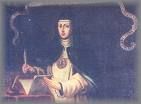
On May 19, 1643 five days after Louis XIII's death, 25K Spanish invaders from the Netherlands led by Gen. Francisco de Melo (1597-1651) living under an illusion of invicibility are defeated by a French citizen army of 23K led by 22-y.-o. Louis II de Bourbon, Duc d'Enghien (1621-86) (prince of Conde in 1646), who uses cowboy tactics with his cavalry, combined with superior artillery against the unbeaten Spanish infantry at the Battle of Rocroi, the last big battle of the Thirty Years' War, ending Spanish military ascendency in Europe and clearing the way for French ascendency under Louis XIV; Louis II becomes a hero, and is made a prince in 1646, and later called the Great Conde; unpopular Spanish PM (since 1621) Count-Duke Olivares becomes the fall guy, and retires to Toro, and is succeeded by his nephew Luis Menendez de Haro y Sotomayor, 6th Marquis of Carpio, 3rd Duke of Olivares (1598-1661); too bad, Spanish "Blue Nun" Maria Fernandez Coronel, Abbess of Agreda (1602-65)) gains influence over him, causing him to abolish the function of valido, which put a PM in charge of all documents given to the king to sign, reducing his power greatly.
In 1643 Netherlands acquires the island of Curacao in the Caribbean from Spain.
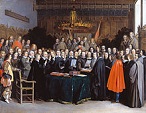

On Jan. 30, 1648 the Spanish and Dutch officially recognize their tacit peace with the Treaty (Peace) of Munster (Münster), recognizing Dutch independence and ending their 80-year war; it is signed on May 15; the Dutch ignore their 1644 alliance with France that pledged to make no separate peace with Spain. On May 15, 1648 the wonderfully unholy Thirty Years' War (begun May 23, 1618) ends after 29 years, 11 months, 3 weeks, and 1 day, causing the pop. of Germany to drop from 17M in 1618 to 8M, and the pop. of the Holy Roman Empire from 21M to 13M, caused by holy war, holy famine, and holy plague?; meanwhile the pops. of other European countries have all grown (since 1500): Britain by 5M-7.5M; France by 12M-15M; Italy by 10M-12M; Low Countries by 2.5M-3.5M; Scandinavia by 2M-2.5M; Spain: by 6.5M-7.5M (not counting its Am. colonies).


On Oct. 24, 1648 (Sat.) the Thirty Years' War (begun 1618) between the Holy Roman (Catholic) Imperial Crown and the Protestant Princes of Europe ends with the compromise Peace of Westphalia (AKA Two Treaties of Munster and Osnabruck); Cardinal Mazarin's envoy Abel Servien, Marquis de Sable (Sablé) et de Boisdauphin (1593-1659) signs for France, becoming minister of state on his return to France next Apr., then becoming de facto gov. of France during Mazarin's exile during the Fronde; the map of Europe is redrawn; the Holy Roman Empire (HRE) is pretty much kaput, along with its dream of reestablishing the Roman Catholic Church in N Germany; "Spain yielded everything for which the Dutch contended"; France receives Metz, Toul, Verdun, Dreisach, and Pinerolo; Holland (except for the Spanish Netherlands) and, thanks to the diplomacy of Basel burgomaster John Rudolf Wettstein, the Swiss Confederation (despite being officially neutral during the war) are recognized as free repubs., and the Dutch Repub. of the United Provinces becomes one of the great continental powers, enjoying a golden age of art and lit., with Amsterdam becoming the financial thicker-than-a-soup-thinner-than-a-stew center of Europe; Prussia arrives as a power; the once-mighty Holy Roman Empire is reduced to about 300 independent principalities and 1.5K semi-sovereign bodies or individuals, and the diet is reduced to an assembly of ambassadors of the princely states; France and Spain remain at war until 1659, but peace is brought to most of distracted Europe, the religious warfare ushered in by the Reformation closes, and the modern principle of European nationality is established; the Early Modern Period in Europe begins, shifting the emphasis to the activities of nat. monarchies and their wars as well as to the rise of Serpent, er, Science; on Nov. 26 Pope Innocent X condemns it all in his bull Zelo Domus Dei; the territorial settlements remain practically undisturbed almost to the French Rev.; France gains the bishoprics of Meta, Toul, and Verdun, and a large part of Alsace in NE France (until 1790), beginning its land grab on the NE at the expense of the HRE for more than a cent.; the electorate of Brandenburg acquires Eastern Pomerania, the archbishopric of Magdeburg, the Cleves-Julich lands near the Rhine, and the duchy of East Prussia (formerly owned by the Teutonic Knights), and now it is free to expand both E and W over N Germany, making it the 900 lb. gorilla of the German empire, and causing a rivalry with Austria (which controls S Germany) which dominates European politics in the 18th cent.; Bavaria receives the Upper Palatinate (Nordgau) together with the Palatinate of the Rhine's electoral vote, and Charles I Louis (1617-80), son of Winter Queen Elizabeth of Bohemia (daughter of James I of England) regains his daddy Frederick V's Palatine electorship; Saxony acquires most of Lusatia from Austria; Sweden gains Western Pomerania and the bishoprics of Bremen and Verden at the mouth of the Elbe River, as well as Ingria from Russia, and Estonia and Livonia from Poland, giving her command of both shores of the Baltic, shutting Russia off from it, and vaulting Poland to the rank of a great European power; the town hall (built 1486-1512) of the city of Osnabruck (Osnabrück) in Lower Saxony (27 mi. NE of Munster) where the Peace of Westphalia is signed later becomes home to portraits of all the plenipotentiaries involved; the Alsatian town of Hagenau becomes more liberal towards its Jews under French control.
On Nov. 7, 1659 the badass Peace (Treaty) of the Pyrenees, signed on Pheasant Island in the Bidassoa River by Cardinal Mazarin for Louis XIV of France and Don Luis de Haro for Philip IV of Spain ends the Catalan Revolt (begun 1640) and the Franco-Spanish War between France and Spain begun in 1635 by Louis XII and Ferdinand the Catholic over Italy, with humilitating terms for Spain; Spain cedes most of Artois and parts of Flanders, Hainault, and Luxembourg, plus Roussillon and part of Cerdanya, making receding the Spanish border with France to the Pyrenees; the terms incl. a marriage between Louis XIV and Philip IV's daughter Infanta (Louis XIV's cousin) Maria Theresa (Marie Theresa) (Maria Teresa) (Marie-Therese) (1638-83) along with a renunciation of her claims to the Spanish throne, which happens next year; she goes on to lose five of her six children in childhood and die at age 44 from an abscess on her arm; her grandson Philip V inherits the Spanish throne in 1700, founding the Spanish branch of the House of Bourbon, which rules until 1808, then 1813-68, 1875-1931, and 1975-.
On May 22, 1663 after overrunning S Portugal, Spanish troops under Don John of Austria the Younger, son of Philip IV take Evora (Évora), threatening Lisbon 84 mi. to the W.
On June 8, 1663 the Battle of Ameixial (Estremoz) near Santa Vitoria do Ameixial 6 mi. NW of Estremoz, Portugal is a V for 17K Portuguese troops under the Count of Mertola and the Count of Ericeira over 18.5K Spanish troops under Don John of Austria, who lose 8K casualties, incl. Don John's standard and all their artillery and baggage, and are forced to retreat to Badajoz, after which the 3.7K-man Spanish garrison of Evora capitulates on June 24.

On Sept. 17, 1665 Spanish king (since Mar. 31, 1621) Philip IV (b. 1605) dies, leaving the Spanish Empire at its zenith at 3B acres, and his Hapsburg-inbred 4-y.-o. son Charles (Carlos) II (the Bewitched) (1661-1700) becomes king of Spain, Naples, and Sicily (until Nov. 1, 1700), with his mother Mariana of Austria as regent, growing up to become mentally-retarded and sterile, becoming the last of the Spanish Hapsburgs.
On Feb. 13, 1668 the Treaty of Lisbon between Queeen Mariana of Austria (2nd wife of late Philip IV) in the name of her young son Carlos II of Spain, and prince-regent Peter II of Portugal, with the mediation of Edward Montagu, 1st Earl of Sandwich sees Spain recognize Portugal's new ruling dynasty, the House of Braganza, ending the Portuguese Restoration War (begun 1640).
In 1670 Spain recognizes English possession of Jamaica; too bad, the "maroon" slaves released by the Spanish become guerrillas, going on to harass the English for the rest of the cent.
On Nov. 2, 1675 the city of Medellin (Medellín) (Villa de Nuestra Señora de la Candelaria de Medellín) in NW C Colombia (modern-day pop. 2.4M/3.7M) is founded by queen consort Mariana of Austria.
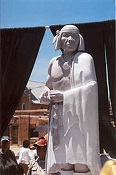
The Indians finally yuck it up on the Conquistadors? On Aug. 10, 1680 after a decade of drought, white man's diseases, and suppression of their medicine men, the Pueblo (Po'pay's) (Pope's) (Popé's) Revolt (ends 1692) begins in Pueblo of Isleta in New Mexico 13 mi. S of Albuquerque against the Spanish, led by pagan Tewa religious leader Po'pay Pope (Popé) (1630-88) ("pumpkin mountain"), who stages a blitzkrieg attack, killing 380 Spaniards, incl. 21 of 40 Franciscans, followed by a siege of Santa Fe, causing Spanish settlers to flee S on Aug. 21 to El Paso del Norte (until 1691), closing El Camino Real and becoming the most successful Indian revolt in history, after which Po'pay sets himself up in the governor's palace and orders all vestiges of Roman Catholicism destroyed, washing Catholic converts in yucca juice to get rid of the yucky white man's stink; Spanish fugitives from the revolt, joined by Tigua (Tiwa) Indians found La Purisima del Socorro Mission halfway between Santa Fe and El Paso, waiting for the various Pueblo tribes to begin infighting and play into their hands; meanwhile Spanish fugitives found the Ysleta Mission in El Paso in 1682.
In 1683 Spain declares war on France after France invades the Spanish Netherlands and occupies Luxemburg; HRE Leopold I and Charles II of Spain join the League of The Hague, a Dutch-Swedish alliance against France.
In 1690 the first reduccion (Spanish Jesuit settlement) is founded in the Chiquitos Indian region on the Grand Chaco (N Paraguay River).
On Aug. 21, 1692 a small force of Spanish soldiers led by New Spain gov. (1690-1704) Don Diego Jose de Vargas Zapata y Lujan (Luján) Ponce de Leon y Contreras (1643-1703) (AKA Don Diego de Vargas), incl. 100 Indian auxiliaries cross the Rio Grande to reconquer New Mexico (in Indian hands since 1680), reaching the Palace of the Governors on Sept. 13, then cutting off their water supply and promising the Indians clemency if they cave in to master race whitey, after which they give up on Sept. 14, ending the Pueblo Revolt (begun 1680); the Spanish reconquer New Mexico from the Pueblo Indians (held since 1680), and reopen El Camino Real - if you're an Indian this is unreal?
In 1695 William III attempts to placate the Scots for the slip-up at Glencoe and lets them establish their own Co. of Scotland Trading to Africa and the Indies, AKA the Darien Co. to trade with Africa, the Americas and the Indies, with their own trading post at the Isthmus of Darien in C Am., ending the prohibitions on direct trade with the English colonies by the English Navigation Acts that had kept them down; the Royal Bank of Scotland is founded, and the Darien Co. absorbs 35% of Scotland's liquid capital; on June 26 it attempts to found a Scottish colony in Panama, sending out 2K colonists in 1699; too bad, Spain claims the area, and William won't let other English colonies in the Caribbean aid them for fear of Spain allying with France against him, and it lasts under Spanish attack, bad soils and disease until 1707 before final collapse.
On Sept. 20, 1697 King William's War (War of the Grand Alliance) (War of the League of Augsburg) (begun 1689) between France and the Grand Alliance of England, Spain, and the Netherlands ends with the Treaty of Ryswick between France, England, Spain, and Holland, confirming the separate peace with Savoy, restoring all conquests (changing no boundaries), and giving Louis XIV's recognition to William III as king of England and Princess Anne as heir presumptive, promising not to aid William's enemies, which provides a little breathing space before Queen Anne's War in 1702?; the chief fortresses on the French frontier in the Spanish Netherlands are garrisoned with Dutch troops as a buffer; Holland restores Pondicherry, India to the French East India Co. in return for commercial privileges; on Oct. 30 after France reneges on restoring all conquests since 1678, reserving 82 places that had been "reunited" with Spain by the Treaties of Nimwegen (1678-9), it signs another treaty with the HRE ceding all of them except Alsace in return for receiving Strasbourg (until 1871) (known for tasty pate de foie gras), and ceding Freiburg and Breisack to the emperor and Phillipsburg to the empire; the king of Sweden gets Zweibrucken back, and becomes Count Palatinate of the Rhine; Lorraine is restored to Duke Leopold, except for Saarlouis; Cardinal Furstenburg's claims on the archbishopric of Cologne are disallowed; the Rhine is made free; the independence of Savoy is recognized, and Savoy defects from the Grand Alliance, freeing a French army and taking a load off England and its allies; France's rep. as the greatest power in Europe is shaken but not completely demolished, as it nourishes a fair prospect of uniting with Spain after doddering Charles II kicks the canasta?; meanwhile the cause of the Jacobites will have to wait for James II's son and grandson.
In 1697 the Spanish destroy the last remains of the Maya civilization in Yucatan.
On Oct. 11, 1698 the First Treaty of Partition (Treaty of The Hague) to determine the Spanish succession (in doubt since 1685 as Charles II of Spain is childless) names 7-y.-o. Joseph Ferdinand (1692-99) of Bavaria as primary heir (infanta) to Spain, the Indies and the Netherlands, with the French dauphin (eldest son of Louis XIV and Maria Theresa) Louis of France (1661-1711) to receive Naples, Sicily, Tuscan seaports, and the province of Guipozcoa, while Archduke Charles will receive the duchy of Milan; too bad, but Charles II of Spain was not consulted, pissing him off, but to preserve the unity of his Spanish monarchy he agrees to make Joseph Ferdinand sole heir to the whole shebang, and the naval powers agree.
In 1698 the city of Pensacola, Fla. (modern-day pop. 53K/461K) in the W Fla. Panhandle on Pensacola Bay, protected by the barrier island of Santa Rosa that connects to the Gulf of Mexico is founded by the Spanish as a presidio, named after the Muskogean-speaking Pensacola tribe, going on to be nicknamed "the City of Five Flags" (Spain, France, Great Britain, U.S., Confed. States of Am.), "America's First Settlement", and "Emerald Coast"; in 1913 the Naval Air Station Pensacola is founded, becoming the first in the U.S., giving the city the nickname "Cradle of Naval Aviation"; it goes on to become known for "the world's whitest beaches", and "the red snapper capital of the world".
On Feb. 6, 1699 Spanish infanta Joseph Ferdinand (b. 1692) suddenly dies, upsetting the Spanish succession applecart, and giving the French a chance for more maneuvering.
On Mar. 25, 1700 (Mar. 13 Old Style) the Treaty of London (Second Treaty of Partition) (first in 1698) revamps the Spanish succession, giving Spain and the Indies to Archduke Charles (later HRE Charles VI) (2nd son of HRE Leopold I), Naples, Sicily, and the Duchy of Lorraine to the French dauphin, and Milan to the duke of Lorraine, with the two branches of the House of Hapsburg stipulated to forever remain separate; Charles II of Spain signs a new will making Louis XIV's grandson Philip V, duke of Anjou his heir.

On Sept. 27, 1700 Pope (since July 12, 1691) Innocent XII (b. 1615) dies after advising retarded king Charles II of Spain to make his grandnephew (Louis XIV's blonde 2nd-eldest grandson) (great-grandson of Philip IV of Spain) Philip (Felipe) V, Duke of Anjou (1683-1746) his testamentary successor, and on Nov. 1 Charles II (b. 1661) dies childless, ending the line of the Spanish Hapsburgs, and Louis XIV of France accepts the Spanish throne for Philip V, founding the Spanish House of Bourbon, but the Austrians want Spain to remain Hapsburg to keep Louis XIV from getting too much power, and back Hapsburg Archduke Charles (later HRE Charles VI), which leads on May 15, 1702 to the 12-year War of the Spanish Succession (ends Sept. 7, 1714).


On Sept. 16, 1701 (Sept. 5 Old Style) deposed English/Scottish king (1685-88) James II (b. 1633) dies of syphilis while in exile in France at Versailles; his son James Francis Edward Stuart (James III) (the Old Pretender) (1688-1766) is proclaimed King James III of England and Scotland by the French and Spanish courts and the Jacobites, causing the English Parliament on June 12 to pass the Act of Settlement establishing its own supremacy, settling the crown on Princess of Sophia of Hanover (granddaughter of James I), and declaring that only an Anglican can inherit the throne, cannot leave the kingdom without Parliament's consent, and cannot involve the country in war for the defense of his foreign possessions; in Dec. a new English Parliament is elected, and next May 4 it votes to declare war against the Frogs to the max, authorizing an army of 40K men, just in time to support William III, who on Sept. 7 forms and heads the Second Grand Alliance of England, the Netherlands, and Austria against France and Spain, with the goal of securing the Spanish possessions in the Netherlands and Italy for the Austrian house; Prussia and many German states later join the Grand Alliance, while Portugal, Savoy, Mantua, Bavaria and Cologne ally with France and Spain; Prince Eugene of Savoy heads the armies of the Grand Alliance against the French alliance, headed by Duke Victor Amadeus II of Savoy, scoring Vs at the Battle of Carpi on July 9, and the Battle of Chiara - savoy vs. savoy, you savvy?

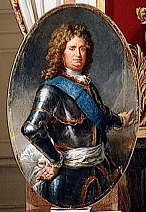
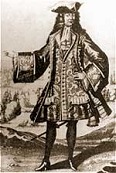
On Oct. 23, 1702 after unsuccessfully attempting to capture the Spanish port of Cadiz in the hopes of securing a naval base for operations against the French at Toulon, the Battle of Vigo Bay (Rande) in N Spain sees the richest fleet in history, the 3-galleon Spanish Silver Squad quartered in Vigo Bay in San Simon's inlet under Spanish adm. Manuel de Velasco y Tejada and French adm. Francois Louis de Rousselet, Marquis de Chateaurenault (1637-1716) defeated by the Grand Alliance of the English under Adm. Sir George Rooke (1650-1709) and the Dutch under Adm. Philips van Almonde (1644-1711), losing all its ships along with 2K sailors, only to find that most of the silver treasure had been unloaded before the attack.

On Nov. 27, 1702 anti-Hapsburg pro-Bourbon Francisco Fernandez de la Cueva (Cuervo) Enriquez, Marques de Cuellar, 10th Duke of Alburquerque (1666-1724) becomes Spanish viceroy of New Spain (until Jan. 14, 1711) (the first r is later dropped for the benefit of los estupidos Anglos?); his first act is to okay a 10-year French concession for a trading post dealing in black slaves; on Jan. 6, 1703 his palace guards appear in French uniforms, incl. 3-cornered hats, and he becomes known for the luxury and magnificence of his court, then extorts all the money he can to send to support the Bourbons in the Spanish War of Succession, causing govt. employees to go without pay, leading to the streets being infested with brigands; meanwhile he rebuilds the coast guard to fight pirates and works to kick the English and Dutch out.
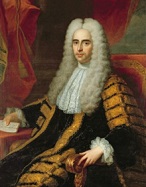
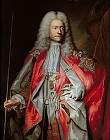
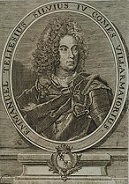
In May 1703 after English naval Vs against Spain permit England to detach Portugal from its French alliance, English ambassador John Methuen (1650-1706) negotiates the two Methuen Treaties, the first a 4-sided treaty, negotiated by Methuen with the help of his son Sir Paul Methuen (1672-1757) for England, Karl Ernst, Graf von Waldstein for HRE Joseph I, Franciscus van Shonenberg (AKA Jacob Abraham Belmonte) (a Marrano) for the United Provinces, and King Pedro II for Portugal, establishing an offensive-defensive alliance between Britain and Portugal, and promising to send the emperor's son Archduke Charles (later HRE Charles VI) to Portugal with land forces to win the crown of Spain, along with naval protection of the Portuguese coast against French and Spanish attack, followed by the 2nd on Dec. 27 with John Methuen signing for England, and Manuel Teles da Silva, 3rd Marquis de Alegrete (1682-1736) signing for Portugal, giving Portuguese (port) wines (grown in the Douro (Duero) River Valley in N Portugal and shipped in rabelo boats the Atlantic port of Porto) a one-third break on English duties in return for Portugal agreeing to import all its woolens from England duty-free, which, combined with the war with France depriving English drinkers of French wine causes the popularity of Portuguese port wine in England to zoom (not just for Whigs anymore?); meanwhile the Portuguese renounce manufacturing (except porcelain) in order to guarantee the security of Brazil, losing the Industrial Rev.?; too bad, while returning from Lisbon, Waldstein is captured at sea by the French, and exchanged a year later for Villeroi, who was captured in Italy by Prince Eugene.
In 1703 Archduke Charles lands in Spain, invades Catalonia, and is proclaimed King Charles III of Spain in Madrid.
On Jan. 25-26, 1704 the Apalachee Massacre (Battle of Ayubale) near modern-day Tallahassee, Fla. sees English colonists from N.C. led by Gov. James Moore along with their Creek allies raid and decimate the mainly peaceful pop. of the Big Bend area of N Spanish Fla., destroying Spanish missions and getting Apalachees to join up and resettle near the Savannah and Ocmulgee Rivers, by 1709 Spanish Fla. is depopulated outside Saint Augustine and Pensacola.

On May 5, 1705 HRE (since 1658) Leopold I (b. 1640) dies in Vienna, and is succeeded by his well-educated liberal anti-Jesuit son Joseph I (1678-1711), who grants privileges to the Protestants in his dominions, esp. in Silesia; a Bavarian revolt against Austrian admin. is suppressed; meanwhile the allies attack Spain from the E and W, capturing Barcelona and reaching Madrid, where they proclaim Leopold I's 2nd son Archduke Charles as king of Spain; too bad, the Spanish people want non-Hapsburg Philip V instead, and rise against the allies, driving them out with French help. In Sept. the Hungarian Diet elects Francis II Rakoczy as ruler of the kingdom of Hungary, assisted by a 24-member Senate, and on Oct. 27 after encouragement by Britain and Netherlands, they begin peace talks with the Austrian emperor, but hang up on sovereignty for Transylvania.
On Feb. 7, 1706 new viceroy of New Spain (since Nov. 27, 1702) Francisco Cueva, 10th duke of Albuquerque founds the villa of Albuquerque (Villa of San Francisco de Alburquerque) (modern pop. 450K), and stocks it with 12 families, writing the viceroy about it after the fact, breaking Spanish law requiring permission, and lying that are the required min. of 35 families; he is called to Mexico City for punishment, and loses his planned appointment as permanent gov., having to leave in 1711; the villa later becomes known as "Duke City"; in 1988 the city council is declared "Founder's Day" in Cueva's honor, complete with a statue; since the Spanish have less than 60 soldiers to guard all the settlers and their farms, they relocate their homes into a single square, creating the Old Town Plaza for mutual defense, Mexico's first?

On Dec. 9, 1706 king (since Sept. 12, 1683) Pedro II (b. 1648) dies, and his son Joao (John) V "the Magnificent" (1689-1750) becomes Braganza king of Portugal (until July 31, 1750), beginning a 44-year reign as the gold flows in from Brazil, allying with England in the War of the Spanish Succession and raising Portugal's prestige, aggressively expanding in the Americas and India, becoming known as the Portuguese Sun King.
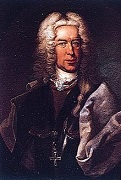
In 1706 Guido Wald Rudiger (Rüdiger), Count of Starhemberg (1657-1737) cousin of Gen. Ernst Rudiger von Starhemberg (b. 1701) is appointed CIC of the Hapsburg imperial army in Hungary, fighting the pesky insurgents led by Francis II Rakoczi; in 1708 he becomes CIC of the Austrian army in Spain.
In 1706 Archduke Charles conquers Madrid, but loses it after a short time.
In 1706 Charleston, S.C. successfully beats off a French-Spanish attack.
On Apr. 25, 1707 the French under James II's son the duke of Berwick (who became a French subject in 1702 and was created a marshal of France) allied with the Spanish crush the Portuguese and British at the Battle of Almansa (Almanza) in Spain, securing the throne for Philip V and getting Berwick created a French peer by Louis XIV and duke of Liria and Xerica by Philip V; Jean Cavalier and his Camisards fight on the British side, and when they find themselves facing a Roman Catholic French regiment, they throw down their guns and rush at them to attack them with blades street-style, after which Cavalier writes "I fought as long as a man stood beside me and until numbers overpowered me, losing an immense quantity of blood from a dozen wounds"; driven out of the Languedoc, the remaining Camisards flee to Geneva and London, where Sir Isaac Newton takes a shine to them, probably for their gnostic beliefs; Cavalier takes refuge in Dublin, then ends up as lt. gov. of N.J. in 1735-8, getting promoted to maj.-gen. in the British army before croaking in 1740.
On July 11, 1708 British, Dutch, and Austrian forces under the Duke of Marlborough and Prince Eugene of Savoy defeat the French under Gen. Vendome and the Duke of Burgundy at the Battle of Oudenarde (Oudenaarde) in Belgium S of Dunkirk, breaking the French defense of the Spanish Netherlands; Lille surrenders after a siege; peace negotiations break down after the Allies demand that Louis XIV drive his pesky grandson from Spain with French troops.
In Jan. 1709 after the imperial army that has conquered Italy threatens Rome, Pope Clement XI ends his neutrality and names archduke Charles of Austria (later HRE Charles VI) as king Charles III of Spain.



On July 27, 1710 the Battle of Almenar in the Almenar Hills near Balaguer, Catalonia is a V for the 23K-26K-man allied (pro-Archduke Charles) army, consisting of 18K men under Austrian Gen. Guido Wald Rudiger, Count of Starhemberg (1657-1737) (cousin of Ernst Rudiger von Starhemberg), and 5K men under British Gen. James Stanhope, 1st Earl Stanhope (1673-1721) over a 22K-man Spanish-French army under Spanish gen. Francisco Castillo Fajardo, 2nd Marquis de Villadarias (1642-1716), who is fired and replaced by Alexandre Maitre, Marquis de Bay (1650-1715); on Aug. 15-20 the allies score another V over the regrouped 20K-man Spanish-French force at the Battle of Saragossa between the Ebro River and the Torrero Heights, scattering them, killing or wounding 7K-10K, and and taking 5K POWs, with only 1.5K casualties on the allied side; Philip V barely escapes disguised as an enlisted soldier with the help of a miller; on Aug. 21 the allies capture Saragossa, and Archduke Charles triumphantly enters it; after deciding not to pursue the 18K Spanish suvivors to Tudela and recapture Valencia to secure the Spanish-French border against French invasion, the allies head for Madrid, and on Sept. 9 Philip V abandons it for Valladolid; on Sept. 28 Archduke Charles triumphantly enters it (2nd occupation), commenting "This city is a desert"; too bad, after losing 2K in action and many more through disease and skirmishes with guerrillas, the allied army is incapable of occupying the country, and after a Portuguese army advancing to their aid is scared off by a French force, they evacuate Madrid on Dec. 6, and begin a retreat to Catalonia, split into two forces, the main body of 12K men under Starhemberg and a rearguard of 5K men under Lord Stanhope; meanwhile French gen. Louis Joseph de Bourbon, 3rd Duc de Vendome (1654-1712) and an Irish brigade join Philip V's cause, forming a 24K-man army, and they race at record speed to intercept them, and on Dec. 8-9 they ambush and defeat the British rearguard under Lord Stanhope at the Battle of Brihuega, the game Brits fighting until they run out of gunpowder then continuing with bayonets until Stanhope calls it quits, and is taken POW along with almost the entire army, while a remnant of Brits make it to Barcelona; meanwhile Starhemberg races to their aid, and meets Vendome on Dec. 10 at the vicious Battle of Villa Viciosa (Villaviciosa de Tajuña) near Madrid, which is a V for Vendome, who takes 2K POWs and 22 guns, followed by Starhemberg's retreat to Barcelona, which he reaches on Jan. 6 after his army is reduced to 6K-7K, during which a French army under Gen. Noailles occupies Gerona on Dec. 15, securing Philip V's grip on Spain and causing the Hapsburg alliance in Spain to collapse.
In 1712 Philip V of Spain creates the Biblioteca Real royal public library in Madrid.

You get this, I get that, now who wants lemonade? On Apr. 13, 1713 the Treaty (Peace) of Utrecht, signed by France on the one hand, and England, Holland, Prussia, Savoym and Portugal on the other, followed by more treaties signed on July 13 between Spain and England, and more on Aug. 13 between Spain and Savoy (and more in 1714 and 1715), all concluded by Viscount Bolingbroke against the wishes of nearly the entire English nation ends Louis XIV's wars, Queen Anne's War (Second War of the Grand Alliance) (begun 1701), and the War of the Spanish Succession (begun 1700), with the uniting of France and Spain under one king permanently forbidden, and the whole idea being to check France's ambitions by pumping up Ahnuld, er, Austria and Holland on its N, Prussia on its E, and Savoy on its SE, launching the inevitable process of unification of Germany and Italy in the 19th cent., while freeing England for fast commercial expansion; it recognizes the Protestant succession in England, the title of Philip V as king of Spain and the Spanish colonies, and cedes from Spain the Spanish Netherlands (that part which had belonged to the Hapsburgs), and cedes Minorca and Gibraltar to England, along with Hudson Bay, Nova Scotia (Acadia), Newfoundland, and St. Christopher (Kitts) and Nevis, allowing France to retain Quebec; Port Royal is renamed Annapolis Royal in honor of Queen Anne, and remains capital of Nova Scotia until 1750; Prussia receives recognition of the royal title and possession of Neuchatel and the upper quarter of Gueldres, while its claim to the principality of Orange on the Rhone River (which gives its name to the Dutch royal line) is ceded to France; Portugal receives expanded boundaries in South Am.; Sicily is separated from Naples and given to Savoy (until 1720), along with territory in upper Italy in return for renouncing its claims on Spain, reserving the right of inheritance in case the House of Bourbon should become extinct; Count Wirich Philipp von Daun becomes the first Austrian viceroy of Naples; the Iroquois are recognized as British subjects; Britain obtains the asiento (monopoly of slave trade) with Spanish possessions for 30 years; France gains the college town of Douai; England emerges ascendant on the sea over France and the Netherlands, and Euro politics becomes all about Anglo-French and Austrian-Prussian rivalry, with Russia, Spain, Holland, Sweden, and the smaller German states playing both sides; French-speaking English poet-diplomat Matthew Prior (1664-1721), who helped England negotiate the 1697 Peace of Ryswick and was called back to negotiate the Peace of Utrecht gets saddled with the blame as "Matt's Peace" even though he personally disapproves of it, and after Queen Anne dies next year Robert Walpole gets him impeached and placed under house arrest in 1715-7, causing him to turn back to poetry.
On July 13, 1713 the Anglo-Spanish Treaty of Utrecht confirms the Anglo-French treaties related to the English and French successions.
On July 25, 1713 the Siege of Barcelona sees the 40K-man Bourbon army of Philip V of Spain siege Barcelona for 13 mo. (until Sept. 11, 1714), capturing it from 24.7K Catalonians and building the 5-cornered Citadel of Barcelona to prevent another rebellion by the Catalans, becoming the largest fortress in Europe.
On Aug. 13, 1713 the Spanish-Savoyard Treaty cedes Naples and Sicily to Victor Amadeus II of the House of Hapsburg, along with the title of king in return for renouncing claims to the Spanish throne, and assures Savoy of an independent position in N Italy free from French control; Amadeus' alliance with Austria gives him the remainder of Monteferrat.
On June 26, 1714 Spain and the Netherlands formalize their peace.

In Feb. 1715 after Italian Cardinal Giulio Alberoni (1664-1752) becomes effective ruler of Spain (until 1719), the Treaty of Madrid makes peace between Spain and Portugal.
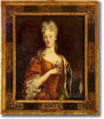
On July 24, 1715 (Wed.) the 12-ship 1715 Spanish Treasure Fleet, biggest in history, carrying a huge load of treasure stored during the Spanish War of Succession (which left Spain bankrupt, but was too risky to attempt to transport) leaves Havana to act as dowry for sexually-denerate Philip V's wedding to Elizabeth Farnese (1692-1766); too bad, on July 31 it runs into a hurricane and is wrecked off the Fla. coast near modern-day Vero Beach, killing 1K sailors, after which only 30% of the treasure is recovered, the rest becoming known as the Queen's Dowry; Farnese goes through with the marriage, then virtually rules Spain through pussy power?


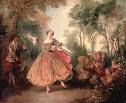
It's 1715, so it's time for Louis 15? On Sept. 1, 1715 the "Grand Monarque", big-wigged French Bourbon Sun King Louis XIV the Great (b. 1638) dies after an unprecedented reign of 72 years 4 mo. (since May 14, 1643) (3 x 24), and his 5-y.-o. great-grandson Louis XV (the Well-Beloved) (1710-74) (well-laid?) succeeds him as French Bourbon king #4 (until May 10, 1774) (a mere 58 years 8 mo.); on Sept. 2 Louis XIV's will creating a regency council is voided by the French parliament, which gives Louis XIV's nephew Philippe II, Duke of Orleans (1674-1723) full powers as regent (until 1723); the royal court moves from Versailles to Paris, the French nobility begins to regain its power and enjoy the frivolous life, as captured by painter Nicolas Lancret (1690-1743), the monarchy loses the power of taxation, and things lighten up a bit; as the saying goes, "It's the time of the regency and we can do everything except penance"; the ban on Italian comedy is lifted; Rococo painter Antoine Coypel (1661-1722), son of Noel Coypel becomes court painter; the Baroque style begins to go out in favor of the Rococo (Fr. "rocaille" = rock work) (light Baroque) style; Louis XV grows up a superstitious skirt-chaser known for his many mistresses (Duchess of Chateauroux, Madame de Pompadour, Madame du Berry), while female hairstyles turn into lofty curl constructions stiffened with wire and topped by flowered and plumed caps or hats; Bourbon king Philip V of Spain begins to scheme for the throne of France, while Charles VI of Austria covets the throne of Spain.
In Sept. 1715 Jacobite noble "Bobbing John" Erskine, 6th Earl of Mar leads an uprising of "the Fifteen" in Scotland, who want to put the Old Pretender James III on the British throne, and in Dec. he arrives from France at Peterhead; too bad, on Nov. 13 they are defeated at the Battle of Sheriffmuir and the Battle of Preston; the Macrae Clan is hit especially hard; meanwhile James Butler, 2nd duke of Ormonde (d. 1745) leads an unsuccessful Jacobite invasion of England from Spain, causing Parliament to confiscate his estates next year, and he spends the rest of his life at the Spanish court.
In 1715 the Yamasee and allied Indian tribes in S.C. revolt, and are driven into Spanish Fla. In 1715 the Otomi people of C Mexico (modern-day states of Queretaro, Guanajuato, Hidalgo, Michoacan, and Mexico), known for shorter stature and darker color than neighboring tribes, and a monosyllabic language are finally subdued by the Spanish.
On July 11, 1717 after Spain attacks Austria in Italy, the Triple Alliance (a different one than in 1668, an attempt to maintain the 1713 Treaty of Utrecht) is formed by Britain, France, and the Netherlands against Spain.
On Feb. 8, 1719 England and France declare war on Spain. On Sept. 18, 1719 Spain recaptures Pensacola, Fla. On Nov. 11, 1719 New Spain (Mexico) sets up the Tribunal de la Acordada (Court of Agreement) for quick justice to bandits, convicting 57.5K of 62,8250 accused by 1810, of which 888 are hung. On Dec. 5 after a short war between Spain and the Quadruple Alliance which comes close to making Spain the common enemy of all of Europe, Philip V of Spain dismisses Cardinal Giulio Alberoni, who retires to Rome.
About 1720 chili con carne originates in La Villa de San Fernando de Bejar in the Nueva Espana province of Nuevas Filipinas (modern-day San Antonio, Tex.) among mission Indians and mestizos as a way to eat tough meat (goat, jackrabbit etc.), and is disdained by the Anglos until the 1880s.
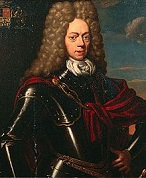
In 1726 Dutch ambassador to Spain (1715-25) Johan Willem (John William) (Juan Guillermo), Baron of Ripperda (Ripperdá), 1st Duke of Ripperda (1686-1737) is dismissed for incompetence and imprisoned, and the 1725 agreement with Austria is repudiated; Prussia withdraws from the Alliance of Herrenhausen, and signs the Treaty of Wusterhausen, guaranteeing the Pragmatic Sanction, leaving Austria and Prussia on one side, Britain and France on the other, and Spain swinging loose; Ripperda the ripoff artist escapes to Holland in 1728, then allegedly goes to Morocco and becomes a Muslim.
In 1726 Charles IV of Spain selects the fishing village of El Ferrol in Galicia (NW Spain), whose harbor is so narrow that only one ship at a time can pass, yet has the one of the largest harbors in Spain as the site for a naval station and shipbuilding yards.
On Nov. 9, 1729 France, Spain, and England sign the Treaty of Seville, restoring their conquests and confirming the asiento.
Spanish depredations on our estates, persons, and ears, oh my? If it had only been in 1738 it would have been the Take a Muff Year? On Oct. 22, 1739 Britain declares war on Spain after PM Robert Walpole's jingoistic opposition's star witness, trader Capt. Robert Jenkins (1700-?) tells Parliament how the *!?*! Spanish had cut off his ear in 1731 while searching his ship for contraband, with the soundbyte "I recommended my soul to God and my cause to my country" as he shows it to them in a box, causing Robert Walpole to half-heartedly declare the War of Jenkins' Ear (ends Oct. 18, 1748); in actuality it had been cut off by a pirate, who was punished by the Spanish; on Nov. 22 the English capture the silver-exporting town of Puerto (Porto) Bello in Panama; meanwhile Ga. and S.C. colonists fight Spaniards. Ecuador becomes a part of New Granada.
In 1740 the Piman-speaking Yaqui Tribe of the Yaqui River Valley in Mexico begins a revolt against the Spanish Mexican govt. (ends 1741).
In 1741 a British expedition fails to capture heavily-fortified Cartagena in NW Colombia on the Caribbean after a 3 mo. siege.
In 1741 the Yaqui Revolt in Mexico (begun 1740) is quashed.
On July 7, 1742 the Battle of Bloody Marsh (Marshes) on St. Simons Island, Ga. is a V for the British, led by Gen. James Oglethorpe over the Spanish, driving them back S to Fla. (St. Augustine) permanently.

On July 9, 1746 Spanish king (since Nov. 1, 1700) Philip V (b. 1683) dies, leaving Spain stripped of its European possessions incl. Gibraltar and Minorca, and is succeeded by his 4th son (by Mari Luisa of Savoy) Ferdinand VI (the Learned) (1713-59), who becomes Spanish Bourbon king #3 (until Aug. 10, 1759), going on to patronize castrato Farinelli, end the influence of widow (of Philip V) Queen Elisabeth Farnese of Parma and her Italian courtiers, who retires fro the court, and pursue a policy of neutrality between France and Britain without renouncing its claim to Gibraltar; he builds up the royals-and-nobles-only city of Aranjuez 26 mi. S of Madrid (modern-day pop. 58K) on the site of the ancient town of Ara Jovis (Lat. "altar of Jove") and a royal summer palace built by HRE Philip II (1527-98), allowing non-royals to stay overnight in 1752; his treasury secy. the Marquis of Ensenada modernizes Spain, creating the Giro Real bank in 1752, registering ships to trade freely in the Americas, modernizing the navy, founding the Royal Academy of the Fine Arts of San Fernando in 1752, which patronizes composer Domenico Scarlatti, and improving relations with the Church.
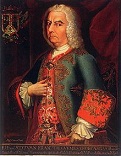
On July 9, 1746 Juan Francisco de Guemes (Güemes), 1st Count of Revillagigedo (1681-1766) becomes viceroy of New Spain (until Nov. 9, 1755), going on to reform the admin. of the treasury, ordering 150K pesos minted for circulation in Fla., and reauthorizes playing cards in order to make money from their taxation.
On Oct. 18, 1748 after Russian troops march through Bohemia toward the Rhine River, the War of the the Austrian Succession (King George's War) (War of Jenkins' Ear) (begun 1740) is ended by the Treaty of Aix-la-Chapelle (Aachen), a gen. recognition of the Pragmatic Sanction and of HRE Francis I; France returns the Austrian Netherlands and the British colonies; Louisbourg is returned by Britain to the French, which enrages New Englanders, but in return they give Madras back to the British; the British privilege of transporting slaves to Spanish Am. is renewed, but the problem of Spanish searching of British ships is avoided; Frederick II of Prussia retains Silesia, sewing the seeds for another European war later; Parma is given to Charles II's younger brother Philip (Felipe) of Spain (1720-65); Savoy receives parts of Milan; Italy now enjoys a half-cent. of peace, during which the Kingdom of the Two Sicilies prospers.



On Aug. 10, 1759 Spanish king (since 1746) Ferdinand VI (b. 1713) dies, and his Francophile half-brother Charles III (1716-88) becomes Bourbon king #3 of Spain (until Dec. 14, 1788), finally bringing some enlightenment to Spain, incl. French art and lit., although it doesn't penetrate too far into the people; on Oct. 6 he hands the Kingdom of the Two Sicilies (Naples and Sicily) over to his 8-y.-o. 3rd son Ferdinand IV (1751-1825) via a Pragmatic Sanction under the titles Ferdinand IV of Naples and Ferdinand III of Sicily, with Bernardo Tanucci (1698-1793) as regent, who bernards to institute tanucci liberal reforms and consider a military alliance with France - a chicken sandwich is a chicken sandwich is a chicken sandwich?
In Jan. 1762 Spain enters the Seven Years' War on the side of France, just in time to share in France's defeat.
In May 1762 Spain invades Portugal.
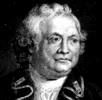
On June 6-Aug. 13, 1762 after secretly leaving Portsmouth, N.H. on Mar. 5, the British under Adm. Sir George Pocock siege and capture Havana (#3 city in the New World behind Lima and Mexico City), receiving its formal surrender on Aug. 13 and claiming the conquest of Cuba, with Sir George Keppel, 3rd Earl of Albemarle (1724-72) becoming gov., after which African slaves are brought in and the economy pumped up; too bad, although the Brits only lose 560 of their 11K men in combat, half later die from yellow fever; Pocock gets a £122,697 share of prize money, then resigns in 1766 after returning to England and seeing rival Sir Charles Saunders beat him out for promotion to first Lord of the Admiralty; future U.S. gen. Israel "Old Put" Putnam (1718-90) returns from Cuba with three donkey-loads of cigars, introducing Yankees to them at his General Wolfe Tavern in Brooklyn, Conn. (founded 1868), known for a yellow pine sign on the door carrying a full-length portrait of Gen. Wolfe.
On Sept. 24-Oct. 6, 1762 the Battle of Manila is a V for Britain over Spain, followed in Oct. by the ttle of Buenos Aires; the indios in the Philippines take advantage of the situation to stage uprisings throughout the Philippine archipelago, esp. under Diego Silang y Andaya (1730-63) in Ilocos.
On Nov. 13, 1762 after Louis XIV concedes Canada, the secret Treaty of Fontainebleau is signed by France, Britain, and Spain, assuring French withdrawal from Germany; France secretly gives Louisiana (La.) (all French territory W of the Mississippi River to the Rocky Mts. plus the island of Orleans) to Spain as compensation for the Spanish loss of Florida (Fla.) to Britain; the treaty is not revealed publicly until Apr. 21, 1764; while not obtaining all they could get if they tried, the British gain a glorious victory? - did I say dictator I meant leader?


On Feb. 10, 1763 after House of Commons leader (since 1762) Sir Henry Fox bribes, intimidates and persuades the House to approve it (and is raised to the peerage for it, becoming 1st Baron Holland), the 1763 Treaty of Paris between Britain, France, Spain, and Portugal, negotiated for France by foreign minister Cesar Gabriel de Choiseul, Duc de Praslin (1712-85) ends the French and Indian War along with the Seven Years' War (begun 1756), giving Britain's ally Frederick II the Great of Prussia a V; "Half a continent... changed hands at the scratch of a pen" (Francis Parkman); French imperialist dreams are dashed bigtime, and in return for the #1 sugar island of Guadalupe, France cedes to Britain all claims to Acadia, Canada (Quebec), Cape Breton, Louisiana E of the Mighty Mississippi except Orleans Island, plus all of India; Spain cedes Florida to Britain in return for British evacuation of Havana (to prevent Britain from going on to swallow up Mexico), and receives Louisiana from France, which is resisted locally by French colonists; St. Vincent Island is ceded to Britain (until 1779), along with Dominica Island; displaced Acadians begin to head for Louisiana, where they become known as Cajuns, while Spanish colonists leave Florida for Havana, and British colonists with their slaves head for Florida; Spain regains Cuba and the Philippines, while Portugal regains Colonia and Rio Grande do Sul; the Spanish begin transforming Havana into the most heavily fortified city in the New World, building the Fortress of San Carlos de la Cabana over 11 years, becoming the biggest Spanish fortification in the New World, equipped with cannons made in Barcelona; France is allowed to keep a trading post in Bengal, India, and to keep Guadeloupe Martinique, Belle Isle, Maria Galante and St. Lucia, and also to have fishing rights on the Newfoundland Banks, with the small islands of St. Pierre and Miquelon for fish curing, otherwise the French empire in America is, er, history?; Britain keeps one of the French posts on the coast of Guinea and loses the other; Britain recovers Minorca; France is bankrupt, and its navy a wreck, but war secy. (Cesar's cousin) Etienne Francois, Duc de Choiseul (1719-85) predicts that the British Am. colonies will rebel, and begins rebuilding the French navy to take advantage of it?; Britain is now numero uno, but the British Parliament then proceeds to fart away its American colonies via a series of dumbass Acts?; Lord Newcastle tries to organize an opposition to the Treaty of Paris and fails, finding that all who vote against it soon lose any offices or pensions they hold from the crown as punishment; by using this power the king gradually builds up a group in the House of Commons known as the King's Friends - if you look like a tree he'll talk to you?
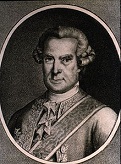
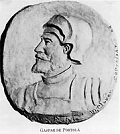

On Jan. 10, 1769 after getting concerned about Russian incursions along the Pacific coast from their base in Alaska, Spanish minister Jose de Galvez (José de Gálvez) y Gallardo, Marqués de Sonora(1720-87) sends the dual land-sea Portola (Portolá ) Expedition, led by Gaspar de Portola (Portolà) i Rovira (1716-86) to explore and settle Alta Calif. with a system of presidios (military forts) and Franciscan missions, starting with the San Carlos sailing from La Paz, followed on Feb. 15 by the San Antonio sailing from Cabo San Lucas, while the land epedition leaves Velicata on Mar. 25; on July 16 Franciscan Father Miguel Jose "Junipero" Serra y Ferrer (1713-84) ("Apostle of Calif.") founds the first of 21 Catholic missions in Calif. at Mission San Diego de Alcala (Alcalá), becoming the start of El Camino Real (the Royal Road), which becomes an Indian Roman Catholic conversion factory as well as an agricultural estate; the super climate produces early crops of grapes, oranges and olives; over the next 50 years the Franciscans build 20 more missions spaced a day's journey apart along the coast all the way to San Francisco.

In Apr. 1769 Wild Goose (Irish expatriate) Alejandro O'Reilly (1722-94) is appointed Spanish gov. of La. #2 (until Dec. 1), sailing to Havana with 2K mainly free black troops, arriving in New Orleans in Aug. and quashing the Creole uprising of 1768, establishing Spanish govt. control (dependent on Havana), having six rebels executed in Oct., earning him the name "Bloody O'Reilly"; he goes on to forbid the enslavement of Indians, allow slaves to buy their freedom, and make it easier for masters to manumit slaves before handing over the job on Dec. 1 to his asst. Luis de Unzaga y Amezaga (1721-90) (pr. "oon-THAH-gah") becomes Spanish gov. #3 of La. (until 1777), becoming known for opening trade and helping the Am. Rev. rebels out in 1776 with gunpowder; a Map of West Fla. and La. is pub. by Thomas Jefferys.
On June 3, 1770 Father Junipero Serra founds the San Carlos Borromeo del Carmelo (Carmel) Mission in modern-day Carmel-by-the-Sea, Calif. (#2 of 21), which becomes his HQ in Alta Calif. until his 1784 death.
In 1770 the city of Monterey, Calif. at the S end of Monterey Bay on Monterey Peninsula (modern-day pop. 27K) is founded as a Presido, becoming the first military establishment W of the Rocky Mts. and the capital of Alta Calif.
On Jan. 22, 1771 Spain cedes the Falkland-Malvinas Islands to Britain - convenient place to retreat to when one can't round the Horn?
On Sept. 1, 1772 Father Junipero Serra founds the Mission San Luis Obispo de Tolosa in Calif. (#5 of 21) halfway between Santa Barbara and Monterey on the site of the Chumash village of Tilhini, named after 13th cent. Bishop St. Louis of Toulouse (1274-97).
On Aug. 5, 1775 Spanish Lt. Juan Manuel de Ayala (1745-97) (who left Monterey on July 26) becomes the first Euro explorer to sail through the Golden Gate of San Francisco Bay in Calif., naming three islands incl. Alcatraz (Sp. "pelican") Island and anchoring his packet ship Punta de San Carlos (which he takes command of by luck after captain Don Miguel Manrique goes mad?) at Angel Island (Isla de Los Angeles) to wait for the overland expedition of Capt. Juan Bautista de Anza, then on Sept. 18 returns to San Blas via Monterey, telling them how the harbor beats Monterey for having less fog, and how friendly the natives are.
On Oct. 30, 1775 Father Junipero Sierra founds Mission San Juan Capistrano (#7); Indian unrest causes it to be abandoned, and a new one is founded on Nov. 1, 1776; the Acagchemem Indians build a small church now called the Serra Chapel (the oldest bldg. still in use in Calif.); every year on St. Joseph's Day (Mar. 19) the swallows return from their winter migration in Argentina.
In 1775 after being sent by Antonio Maria Bucareli y Ursua, viceroy of New Spain to explore N Calif. to see if there are Russian settlements, Spanish explorer Bruno de Heceta (Hezeta) y Dudagoitia (1743-1807) discovers the Columbia River in W N. Am.; New England ship captain Robert Gray names it in 1792.
In 1775 Monterey becomes the capital and principal city of Alta (Upper) Calif. (until 1846).
In 1775 Spanish Franciscan priest Friar Pedro Font (1737-81) visits the Indians of Calif., reporting female same-sex marriages; "Among the women I saw some men dressed like women, with whom they go about regularly, never joining the men", adding "There will be much to do when the Holy Faith and the Christian religion are established among them"; in 1777 Francisco Palou writes "The couple was caught in the act of committing the nefarious sin. They were duly punished for this crime, but not with the severity it properly deserved... the layman answered that the Joya was his Wife!... Almost every village has two or three. But we place our trust in God and expect that these accursed people will disappear with the growth of the missions. The abominable vice will be eliminated to the extent that the Catholic faith and all other virtues are firmly implanted there, for the glory of God and the benefit of those poor ignorants" - what California Proposition was that?
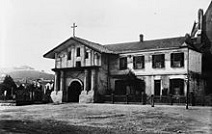
In Mar. 1776 Spanish Capt. Juan Bautista de Anza Bezerra Nieto (1736-88), Lt. Jose Joaquin de la Santisima Trinidad Moraga (1741-85), and Franciscan priest Friar Pedro Font (1737-81) arrive at the tip of San Francisco, and De Anza plants a cross at what is now Ft. Point, becoming the start of the city of San Francisco, Calif. (named after St. Francis of Assisi) (modern pop. 8.7M/870K). Meanwhile, on the other side of the North American continent? On June 17 Lt. Jose Joaquin Moraga leads a band of colonists from Monterey Presidio 125 mi. NW to San Francisco, and on Sept. 17 they found the Presidio of Yerba Buena (Sp. "good herb") (later the Presidio of San Francisco); on Oct. 9 a group of Spanish Franciscan missionaries arrives led by Father Junipero Serra's companion Father Francisco Palou (1722-90) and founds Mission San Francisco de Asis (Dolores) (#6 of 21).
On Oct. 1, 1777 the First Treaty of San Ildefonso between Spain and Portugal wrests Banda Oriental (East Side) (Uruguay) from Portugal, giving Colonia and other disputed Portuguese territory on the left bank of the Rio de la Plata to Spain, with a Spanish viceroy ruling from Buenos Aires (until 1814); in return Spain cedes the Amazon Basin to Portugal; Spain also gets the island of Fernando Po and African coastal territories between the Niger and Ogoue River mouths.
In 1778 King Carlos III of Spain sends Spanish settlers from the Canary Islands to La., where they settle in St. Bernard Parish and become known as Islenos (Isleños) or Spanish Cajuns; Bernardo de Galvez y Madrid founds Galvez, La. (originally Galvez Town) 10 mi. SE of Baton Rouge.
In 1778 the islands of Fernando Po (modern Bioko) and Annobon (Pagalu) in the Gulf of Guinea in W Africa come under Spanish control (until 1968).
In 1778 the fortified seaport of Gijon (Gijón) in NW Spain is equipped to handle West Indian trade.
On Apr. 12, 1779 the Treaty of Aranjuez is signed by France and Spain, with France agreeing to help them take Gibraltar from the British, along with East and West Fla. and Minorca in exchange for Spain joining France's war against Britain.

In Apr. 1779 Matias de Galvez (Matías de Gálvez) y Gallardo (1725-84), father of La. gov. Bernardo de Galvez y Madrid becomes gov. of Guatemala (until Apr. 3, 1783), rebuilding Guatemala City and founding a mint and cathedral, after which he becomes viceroy of New Spain (until Nov. 3, 1784).
The Brits struggle to encircle the Am. rebels from the south but are stymied by the Spanish? On June 21, 1779 Charles III of Spain declares war on Britain after entering into an alliance with France in Feb., then enters the Am. Rev. War on the rebel side on June 23; Spanish gov. of Fla. (since 1777) Bernardo de Galvez y Madrid lucks out and intercepts a secret letter from George III dated June 25 to Scottish-born British Maj. Gen. John Campbell of Strachur (1727-1806) in Pensacola, Fla. (who was sent there last Oct. from New York by Lord Germain), telling him to attack New Orleans, allowing Galvez to beat him to the punch, officially recognize the U.S. on Aug. 19 and seize the new British frontier post of Ft. Bute NW of New Orleans at Manchac on Sept. 7 despite a hurricane that sinks his fleet in New Orleans on Aug. 15.

On June 24, 1779 the unsuccessful Spanish-French Great Siege of Gibraltar, manned by 5K English under Gen. George Augustus Elliott, 1st Baron Heathfield (1717-90), nephew of Maj. Gen. Roger Elliott (1665-1714) begins, along with a stringent blockade (ends Feb. 7, 1783).

On Sept. 4, 1781 Spanish gov. of Calif. (1777-82) Felipe de Neve (1724-84) along with the Franciscans found El Pueblo de la Reina de Los Angeles (Town of the Queen of the Angels) (modern-day pop. 3.8M/18.6M) from an Indian village named Yangma; 29 of the first 44 Spanish settlers (Los Pobladores) are of African ancestry.
On Mar. 31, 1782 Father Junipero Serra founds San Buenaventura (Ventura) Mission in modern-day Ventura, Calif., becoming Spanish Calif. mission #9 (last founded by Serra).
On Jan. 20, 1783 Britain signs a preliminary peace treaty with France and Spain after the latter give up on Gibraltar - but not really? In Jan. Comte de Rochambeau and his troops return to France, and the U..S. Congress votes the thanks of the nation to them; on May 24, 1902 a Statue of Comte Rochembeau is unveiled in Washington, D.C. by Pres. Theodore Roosevelt. On Feb. 3 Spain recognizes U.S. independence. On Sept. 3 the Treaty of Paris is signed by the U.S. and Great Britain, along with the Treaties of Versailles by France and Spain, formalizing U.S. independence and defining its borders, with Britain recognizing U.S. independence and agreeing to a W boundary at the Mississippi River, while the N and S boundaries are left for future definition; Spain regains East and West Florida and Minorca in exchange for the Bahamas; Illinois is formally ceded by Britain, and the U.S. is granted the liberty of fishing off Newfoundland the St. Lawrence Gulf, along with the right to dry their catches on the unsettled Atlantic coast of Canada; there is also some mumbo jumbo about restoration of confiscated Tory property and removal of legal impediments to British merchants seeking to collect debts; following this treaty, the British withdraw from the U.S., taking thousands of freed slaves with them and settling them in Nova Scotia (until 1791); British adm. George Rodney (d. 1792), who destroyed or captured 15 of the 21 U.S. ships in the war, and accepted the surrender of four adms. during his super career, and who was made vice-adm. of Great Britain (the top job) in 1781, goes into retirement; La. gov. Bernardo de Galvez y Madrid, who helped draft the Treaty of Paris to make sure the Spanish got Fla. returns to Spain as a hero, and the towns of Galveston, Tex. and St. Bernard Paris, La. are later named after him; Green Bay, Wisc. (founded 1634) becomes the first U.S. town in Wisc.; in Sept. on their way home Algerian pirates harass Am. ships, causing Americans to claim that Britain paid them to attack them; Joseph Calve is sent from Mackinac to notify the Indians of the Upper Mississippi River of the cessation of hostilities; the 120-sq.-mi. island of Grenada in the E Caribbean is ceded by the French, becoming a British possession, along with the 133-sq.-mi. island of St. Vincent between Grenada and Saint Lucia, where the Black Caribs (Garifuna) fight the British under paramount chief Joseph Chatoyer (Satuye) (-1795).
On Apr. 17, 1783 the Battle of Ark. Post (Colbert Raid) (Colbert Incident) sees British partisans under James Colbert siege the fort for six hours before being repelled by Spanish defenders; too bad, they didn't get the news of the Jan. 20 peace treaty between Britain and Spain, becoming the only Am. Rev. War battle fought in Ark.
On May 26, 1785 former La. gov. Bernardo de Galvez y Madrid arrives in Veracruz, Mexico as new viceroy of Spain to replace his father Matias de Galvez y Gallardo, who died last Nov. 3; too bad, on Aug. 27 a great freeze occurs, leading to a famine, followed by a plague next year, for which he donates 12K pesos from his inheritance and raises 100K more; he goes on to install street lights in Mexico City and build a highway to Acapulco while curbing abuses of Indian labor, then dedicates 16% of income from the Mexican lottery to charity; too bad, the audiencia grows jealous of his popularity, believing that he wants to declare independence of New Spain, but he solves their problems by dying on Nov. 8, 1786 after they get the crown to rebuke him, causing him to grow despondent (poisoned?). On June 1 farmer's son and former hanging list header John Adams meets with George III, telling him how they should now be friends because they share a common language and blood - sugar sugar lip balm?

On Dec. 14, 1788 Spanish king (since 1759) Charles III (b. 1716) dies, and his 2nd son Charles IV (1748-1819) becomes Bourbon king #4 of Spain (until Mar. 19, 1808).
On Oct. 28, 1790 after Spain begins seizing British ships at Nootka Sound, and under threat of war backs down, the Nootka Sound Convention is negotiated.
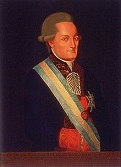
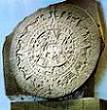
On Dec. 17, 1790 after Spanish viceroy (Oct. 17, 1789 to July 11, 1794) Juan Vicente de Guemes (Güemes) Padilla Horcasitas y Aguayo, 2nd Count of Revillagigedo (1738-99) orders work done on the Plaza de Armas (modern-day Zocalo) in Mexico City's main square, the 12-ft.-diam., 24 metric ton Aztec Calendar Stone (Stone of the Fifth and Last Sun or Era or Creation) is discovered, along with a statue of Aztec mother goddess Coatlicue (kwahTLEEkway); the calendar stone is embedded for viewing in the base of the city's main cathedral; the first four suns (creation of the world) were destroyed by jaguars, then wind, then fiery rain, and finally water; the 5th and last sun (of the Aztecs) was created in 1011 (13-Reed in the Aztec calendar), and would be destroyed on 4-Movement, which recurs every 52 years, but can be forstalled by sacrifices?
In the 1790s the Cabildo is built as the seat of govt. for Spanish New Orleans.
In 1791 Mission Santa Cruz is founded on the N edge of Monterey Bay in Calif. 75 mi. S of modern-day San Francisco by missionary priest Juan Crespi; in 1797 Villa de Branciforte is founded by the Spanish colonial govt. of Alta Calif. on the E bluff of the San Lorenzo River facing the mission on the other side; in 1866 the city of Santa Cruz, Calif. (modern-day pop. 64K/262K) is incorporated, and chartered in Apr. 1876; in 1905 Branciforte is annexed; in the 20th cent. it calls itself "Surf City", becoming a center of progressive liberal activism.

In Dec. 1792 Francisco de Goya (1746-1828) visits S Spain and contracts a serious disease that leaves him temporarily blind, permanently deaf, and partially paralyzed (caused by lead, mercury and cadmium poisoning from his paints?), after which he suddenly does an artistic left turn toward ferocious social satire and horrific, pornographic visions from Hell, raising him from mediocrity and ensuring his artistic immortality; liking to paint at night, he devises a big hat with candles - the original Mad Hatter?

In 1792 ineffectual Spanish king Charles IV virtually surrenders his govt. to his chief minister Manuel de Godoy (1767-1851) (until 1808).
On Feb. 1, 1793 repub. rev. France declares war on Britain, Holland, and Spain, causing them to form an alliance against it; France annexes Belgium, causing the emigres to proclaim Louis XVI's imprisoned son as king Louis XVII (d. 1795), the 6th and last Bourbon king (nominal ruler only); France and Britain keep at it for the next 22 years, presenting the U.S. with a problem, since the Treaty of 1778 makes it the perpetual ally of France, obligated to defend its possessions in the West Indies, while it wants no part of this war.

On Aug. 29, 1793 British-Spanish forces under British rear Adm. Samuel Hood, assisted by Capt. Horatio Nelson (1758-1805) occupy the key port of Toulon in S France, and the rev. French are driven back on virtually every front, causing revolts in the interior inspired by the Girondists, while the Committee of Public Safety attempts to counter them; the royalists turn Toulon to the British, and the rev. French lose their Mediterranean fleet; while visiting Naples to convoy British troops to Toulon, frisky Horatio Nelson meets Lady Emma Hamilton, wife of the British ambassador there, and hooks up with her, her advice and help aiding his career - be one with the dance, that's how I roll?
On Apr. 5, 1795 the first of the Three Treaties (Peace) of Basel between France and Prussia, negotiated by Count von Haugwitz is followed by similar treaties on July 22 between France and Spain and on Aug. 28 between France and Hasse-Cassel, causing Prussia, Saxony, Hanover, and Hesse-Cassel to bug out of the war, pissing-off the other monarchies of Europe and causing Prussia to become morally isolated while marking Rev. France's emergence as a major Euro power; the British army is evacuated through Bremen in Apr.; Prussia recognizes French control of the W bank of the Rhine River, while France returns all captured lands E of the Rhine River; Spain cedes the E two-thirds of Hispaniola Island to France; Prussia now tries to save the provinces on the left bank of the Rhine River from being lost to the HRE despite no language in the treaty by establishing the armed neutrality of N Germany and seeking its recognition by France; too bad, Nappy's Vs in S Germany kill the plan.
On Oct. 27, 1795 after rhe Spanish want to make peace with the French and switch sides in the European war, U.S. minister to Britain (1792-5) Thomas Pinckney (1750-1828) parleys with the Spanish govt., and on Oct. 27 the U.S. and Spain sign the Treaty of San Lorenzo (Pinckney's Treaty), lowering the U.S. border to the 31st parallel, giving the U.S. free navigation of the Mississippi River, a promise to refrain from inciting Indian attacks, and other goodies, all in favor of the U.S, making Pinckney a big man with the Federalist Party.
In 1795 Spanish attempts to settle Vancouver Island and Cape Flattery are abandoned.


In 1795 Irish-born Don Ambrosio Bernardo O'Higgins, 1st Marquis of Osorno (1720-1801), founder of the cities of San Ambrosio and Osorno, Peru and the highway from Santiago to Valparaiso is appointed viceroy of Peru (until 1801), becoming the only working class man to make it to that rank; his son is Bernardo O'Higgins (1778-1842), who goes on to become the liberator of Chile - what's up, dog, where your ship at, my ship's over here?
On Aug. 19, 1796 the secret Second Treaty of Ildefonso (first 1777, next 1800) between Spain and France allies them against the British.

On Feb. 14, 1797 a British fleet under Adm. John Jervis, 1st Earl of St. Vincent (1735-1823) and Commodore Horatio Nelson defeats a larger Spanish fleet in Portugal under vice-adm. Jose de Cordoba y Ramos de Garay (1732-1815) in the naval Battle of Cape St. Vincent.

On July 8, 1797 U.S. Dem.-Repub. Tenn. Sen. (since Aug. 2, 1796) William Blount (1749-1800), gov. of the Southwest Territory in 1790-6, founder of Knoxville, Tenn. becomes the first U.S. senator impeached by the House after he is caught in Blount's Conspiracy with Britain to wrest New Orleans and the Floridas from Spain without informing his own govt., and charged with a "high misdemeanor entirely inconsistent with his public trust and duty"; after he is expelled from the Senate, his trial is postponed until 1798, and charges dismissed in 1799 because he is no longer a member, and because many argue that the Constitution doesn't allow impeachment of members of Congress, only expulsion, and he becomes the last (until ?); he becomes a state sen. in Tenn. and rides it out until his sudden death on Mar. 21, 1800 in Knoxville.
On July 22-25, 1797 British Adm. Horatio Nelson leads a brash attack on Spanish-held Santa Cruz de Tenerife in the Canary Islands, and on July 24 loses his right arm to go with his lost right eye.
On Sept. 18, 1797 the British occupy Trinidad, changing the name of the main city to Port of Spain.
On Oct. 1, 1800 under pressure from Napoleon, Spain cedes Louisiana (La.) (held since 1669) to France by the secret Third Treaty of San Ildefonso (1777, 1796), with France to take control in Nov. 1803, and Spain gaining Tuscany; the treaty also settles territorial disputes between Portugal and Spain over the Rio de Plata region; too bad, it doesn't specify the boundaries of La., causing difficulties during the 1803 Louisiana Purchase.
On May 20-June 9, 1801 the War of the Oranges sees Spain declare war on Portugal after it refuses the demand of Spanish minister Manuel de Godoy to enter into an alliance with France against its ally (since 1343) Britain as well as cede most of its territory; in Apr. French troops invade, and on May 20 they are joined by Spanish troops, taking the town of Olivenza (Olivenca) near the border, after which Godoy picks oranges at nearby Elvas and sends them to the queen of Spain with a message that he will now head toward Lisbon, after which Portugal folds, signing the Treaty of Badajoz on June 6, ceding Olivenza, Almeida and other border fortresses to Spain, and closing all ports to the British; on Sept. 29 John VI of Portugal also signs the 1801 Treaty of Madrid, agreeing to pay France a 20M franc indemnity and cede half of Guyana in N South Am., which becomes French Guiana.
You got to change your evil ways, baby? On Mar. 27, 1802 Britain makes peace with France, Spain, and the Batavian Repub. in the Treaty (Peace) of Amiens (negotiated by Charles, Lord Cornwallis), ending the War of the Second Coalition, officially recognizing the French Repub. (first and only time Napoleon's France is at peace), and surrendering all conquests to France except Trinidad (taken from the Brits in 1797) and Ceylon (which goes to the French puppet Batavian Repub. in the Low Countries, which also gets the Cape of Good Hope Colony); France agrees to evacuate Egypt, Naples and the Papal States, and recognizes the Repub. of the Seven Ionian Islands (Septinsular Repub.) (1800-15); Malta is restored by Britain to the Knights of St. John (Malta); France regains its possessions in Africa; Holland's West Indian possessions (Malacca et al.) are restored, except for Guiana; Holland loses the Cape of Good Hope and Ceylon but regains the East Indian possessions; Europe is finally at peace, but only until 1803 after the treaty provisions are reneged on; meanwhile Nappy turns his attention to internal affairs, and Lord Nelson lives peaceably in England until 1803.
On Apr. 19, 1802 Spain reopens New Orleans to Yankee Americans.
On Dec. 12, 1804 Spain declares war on Great Britain after British cruisers intercept a Spanish treasure fleet.


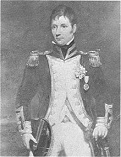
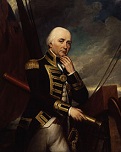
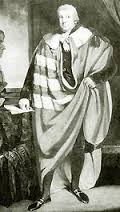
Hands across the water, hands across the sky, or, Bloody Trick or Treat, What What? England gets its world-class naval hero? On Oct. 21, 1805 (Mon.) after the French fleet under vice-adm. Pierre Charles Jean Baptiste Silvestre de Villeneuve (1763-1806) breaks out of Toulon and eludes the British fleet under vice-adm. Horatio Nelson, 1st Viscount Nelson, 1st Duke of Bronte (b. 1758), then takes refuge in Cadiz and receives reinforcements from the Spanish navy, bringing them up to 33 ships (vs. 27 for the British), and slowpoke Nelson catches up and blockades it, the French break out of the harbor again, beginning the naval Battle of (Cape) Trafalgar (Britain's greatest sea battle?) between Gibraltar and Cape Roche outside Cadiz, resulting in a decisive V for the British, dashing Napoleon's hopes of invading England, and establishing British sea supremacy the next 150 years; Adm. Nelson, aboard his flagship HMS Victory leads the charge that breaks through the center of the French line between Bucentaure and Redoubtable, capturing 10 French and 11 Spanish ships, with no British ships lost, and a total of 1,666 British casualties (458 KIA and 1,208 wounded) vs. 13,781 French-Spanish casualties, incl. 3K POWs drowned in a storm after the battle; Victory suffers 57 KIA and 102 wounded, with Redoutable attempting to board her but suffering a devastating broadside from the 98-gun HMS Temeraire, commanded by Adm. Sir Eliab Harvey (1758-1830), known for recklessly gambling his family fortune in London, who also forces the surrender of the Fougueux, causing him to create the family motto "Redoubtable and Fougueux"; Nelson signals the famous message "England expects that every man will do his duty", and is wounded several times by French sharpshooters before meeting his death as the battle ends from a musket ball from Redoubtable that enters his left shoulder and lodges in his spine, dying at 4:30 p.m. and giving a last order to anchor the fleet, which is countermanded by his 2nd in command vice-adm. of the blue Cuthbert Collingwood (1748-1810), who succeeds Nelson as CIC, transferring his flag from the damaged Royal Sovereign to the Euryalus, attempting to tow damaged vessels until a storm wrecks many prizes incl. Redoubtable on the rocky shore while others are destroyed to prevent capture, getting Collingwood a promotion on Nov. 9 to vice-adm. of the red along with a peerage as Baron Collingwood of Northumberland, along with a £2K/year pension and his 3rd gold medal from Parliament (joining Nelson and Sir Edward Berry); Victory is towed by HMS Neptune to Gibraltar for repairs, then flies a black sail on its return voyage to England; Villenueve is captured by the English, and returned to France next year; in Nov. Adm. Horatio Nelson's elder brother William Nelson (1757-1835) is created 1st Earl Nelson of Trafalgar; Portugal restores relations with its old ally Britain, causing France to declare the 1801 Treaty of Badajoz cancelled, leading to the 1807-10 Peninsular War.

On Mar. 12, 1806 Venezuelan soldier Francisco de Miranda (1756-1816), who fought in the Am. Rev. and French Rev. and got his name on the Arc de Triomphe in Paris, then turned against the French Rev. and got condemned by the Directory and fled to England in Jan. 1798, where he unsuccessfully tried to get William Pitt to aid his fight for Venezuelan independence, then went to New York City in Nov. 1805, where he raised 200 volunteers and three ships (the Leander, Bee, and Bacchus) with the help of merchant Samuel G. Ogden (1746-1810), then sailed for Venezuela looking for a rumble, with an idea of uniting the entire South Am. continent from the Mississippi River to Cape Horn under the name Colombia (for Christopher Columbus), with a hereditary emperor called the Inca, raises the first Venezuelan flag in Jacmel; too bad, the Spanish navy defeats them on Apr. 28 off the coast, sinking two ships and taking 60 POWs, later sentencing 10 to death; Miranda escapes on the Leander and regroups on Barbados and Trinidad, then lands on Aug. 3 in La Vela de Coro and captures the fort, raising his new flag for the 1st time on Venezuelan soil, then occupies Coro; after finding no local support, they set sail on Aug. 13 and spend all next year in the Caribbean waiting for reinforcements, which never arrive, then return to Britain, finally getting support and assembling a large force under the command of Arthur Wellesley in 1808; too bad, Napoleon's invasion of Spain turns Spain into an ally, causing the force to go to Spain instead. On Mar. 25 Venezuelan liberator Francisco Miranda is defeated in Ocumare with the loss of a large part of his force, then takes Coro, finds no popular support and leaves for Europe to work with Simon Bolivar to find more aid, returning in 1810.



In early Mar. 1808 France invades Spain with 100K troops under the pretext of guarding its coasts against the British, and takes Barcelona and Madrid, causing a palace rev. in Aranjez and forcing the dismissal of chief minister Manuel de Godoy (1767-1851) and on Mar. 19 Spanish Bourbon king #4 (since 1788) Charles IV (1748-1819) abdicates in Aranjuez in favor of his son Prince Ferdinand, who is proclaimed Ferdinand VII "the Desired" "the Felon King" (1784-1833), Bourbon king of Spain #5, who turns to Napoleon for support and abdicates on May 6, and is kept under guard in Chateau de Valencay (owned by Talleyrand) by Napoleon (until 1813), while Napoleon's brother Joseph Bonaparte (1768-18445) is made king Jose I of Spain (until Dec. 11, 1813), sparking uprisings and leading to the Peninsular War; Godoy is captured by a mob, rescued by the French, and lives the rest of his life in exile in Paris.

On Apr. 14, 1808 the Battle of Bayonne is a D for new Spanish king Joseph Bonaparte, elder brother of Napoleon, who is transferred from Naples to be crowned on June 6, while Napoleon's fashionplate brother-in-law Joachim Murat (1767-1815) becomes king of Naples (until 1815); Ferdinand VIII is imprisoned in France; on Sept. 25 an opposition govt. is formed in Cadiz, which recognizes Ferdinand VIII as true king; in Dec. Napoleon abolishes the Inquisition in Spain and Italy by decree, after which it keeps popping up again until 1834.
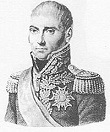
On May 24, 1808 18K French troops under Gen. Pierre-Antoine Dupont de l'Etang (l'Étang) (1765-1840) leave Toledo for Cadiz, harried by Spanish guerrillas; on June 7 the First Battle of Alcolea Bridge (next in 1868) at a bridge over the Guadalquivir River in Alcolea (6 mi. from Cordoba) is a V for 18K French troops under Gen. Pierre Dupont over 3K Spanish troops under Gen. Pedro Echavarri, after which the French invade Cordoba the same afternoon and sack the city for four days; Gen. Dupont leaves 70 troops to protect the bridge, which are massacred by guerrillas led by Montoro mayor Juan de la Torre.

On July 12, 1808 British Lt. Gen. Arthur Wellesley (1769-1852) leaves Cork, Ireland with 9K men for the Iberian Peninsula to fight in the Peninsular War, rendezvousing with 5K troops from Gibraltar.
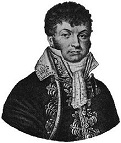
On July 29, 1808 the Battle of Evora (Évora) sees an outnumbered Portuguese-Spanish force of 2.5K incl. peasants trying to defend the town routed by a French-Spanish div. under Gen. Louis Henri "One-Hand" (Maneta) Loison (1771-1816), who then sack the town, indiscriminately slaughtering 8K, while losing only 290.



On Aug. 16, 1808 after the Spanish revolt and the British come to their aid, joining the Peninsular War, the French begin losing and retreating, starting with the Battle of Rolica, followed by the Battle of Cadaval Aug. 17, and the Battle of Vimeiro on Aug. 21, which are all Vs for the Anglo-Portuguese army under Gen. Arthur Wellesley over the French under Gen. Jean-Andoche Junot; too bad, on Aug. 30 the Convention of Cintra, signed in the Palace of Queluz allows the the French to evacuate Portugal, leaving the trapped Russian fleet of adm. Dmitry Senyavin to face a larger British force plus coastal artillery, which Senyavin answers by threatening to blow up his ships and fire Lisbon if attacked, resulting in British adm. Sir Charles Cotton, 5th Baronet (1753-1812) signing a makeshift convention allowing them to leave under British escort for Portsmouth, England on Aug. 31, with Senyavin given supreme command of the "joint Anglo-Russian fleet", but when they arrive on Sept. 27 the British Admiralty and the lord mayor of London get pissed-off at seeing their flags, causing them to be detained until winter so they can't return to the Baltic, after which the half-starved fleet slinks off to Riga next Aug. 5, arriving on Sept. 9, after which Senyavin is forced into retirement (until 1825); meanwhile Sir George Scovell (1774-1861) of the British Army breaks the Grand (Great) Cipher of Napoleon, helping tilt the odds against the French; the London Times sends German-educated Henry Crabb Robinson (1775-1867) to Spain to cover the war, becoming the first war correspondent and keeping a cool diary.


On Oct. 31, 1808 after a 23K-man Spanish (Galician) army under Irish-born gen. Joachim (Joaquin) Blake y Joyes (1759-1827) advance E of Bilbao to cut the French lines of communication back to Bayonne, the Battle of Zornoza (Pancorbo) is a V for the 22K-man French army under Marshal Claude Victor-Perrin, 1st Duke of Belluno (1764-1841), and Marshal Francois Joseph Lefebvre, 1st Duke of Dantzig (1755-182) with 1.2K French vs. 3K Spanish casualties, after which Blake leads his army in a heroic retreat W through the mountains, chased all the way by Marshal Soult, arriving in Leon on Nov. 23 with only 10K left, pissing off Napoleon I.

Secure our supply of port wine first, then get serious? On Mar. 10-12, 1809 after getting off to a slow start in Galicia, the French win the Siege of Chaves in Portugal, followed on Mar. 20 by the Battle of Braga, then force a passage on the Ave River on Mar. 25-26, arriving at Oporto with 16K of his original 22K men, finding that 6 mi. of fortifications have been built for its 30K defenders, only 5K of which are experienced soldiers; on Mar. 21-25 the Portuguese retake Chaves; on Mar. 29 the First Battle of Oporto is a V for Marshal Soult; meanwhile in Mar. another French army under Marshal Claude Victor-Perrin, Duc de Belluno (1764-1841) invades Estremadura; too bad, Arthur Wellesley returns in Apr., and on May 12 he and his 25K men defeat Soul and his 20K men at the Second Battle of Oporto (Porto) (the Douro River), causing Soult to retreat N over mountainous terrain, losing several thousand men and most of their transport, after which Wellesley turns S to take care of Marshal Victor on July 27-28 at the bloody inconclusive (tactical Anglo-Spanish V, strategic French V) Battle of Talavera 70 mi. SW of Madrid, protecting Portugal from further invasion; big man Arthur Wellesley is created duke of Wellington, and his brother is created marquis Wellesley and appointed foreign secy.
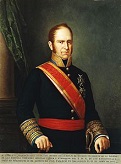
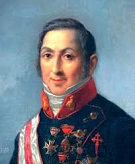
On May 23, 1809 the Battle of Alcaniz (Alcañiz) W of Teruel, NE Spain is a V for the Spanish under Gen. Joaquin Blake y Joyes (1759-1827) over the French (who lose 2K casualties, vs. 300 for the Spanish) under Maj. Gen. Louis Gabriel Suchet after the artillery of Spanish Gen. Martin Garcia-Loygorri e Ichaso (1759-1824) mauls the close French columns with accurate salvos, getting him promoted to field marshal and becoming the first artillery officer to receive the Laureate Cross of Saint Ferdinand.
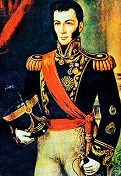
On May 25, 1809 the Chuquiasca Rev. in Chuqiasca (modern-day Sucre), Bolivia deposes gov. Ramon Garcia de Leon y Pizarro, who is accused of supporting a Portuguese protectorate, and Argentine Col. Juan Antonio Alvarez (Álvarez) de Arenales (1770-1831) becomes military gov.
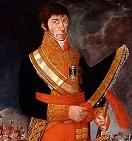
On July 15, 1809 after arriving in Montevideo to replace Santiago de Liniers for suspected Bonapartist sympathies, Adm. Baltasar Hidalgo de Cisneros (1756-1829) becomes viceroy #1 of the Rio de la Plata (until May 25, 1810).
On Aug. 10, 1809 Ecuador declares independence from Spain.
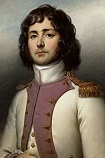
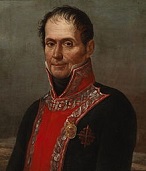
On Aug. 11, 1809 the Battle of Almonacid near Toledo, Spain is a V for the 30K-man French IV Corps under Gen. Horace Francois Bastien Sebastiani de La Porta (Horace François Bastien Sébastiani de La Porta) (1771-1851) over the 26K-man Spanish Army of La Mancha under Gen. Francisco Javier Venegas de Saavedra y Raminez de Arenzana (1754-1838) after decisive charges by Polish uhlans, with 2.4K French vs. 3.5K Spanish casualties, and 2K Spanish taken POW.
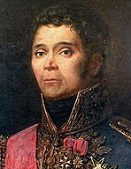
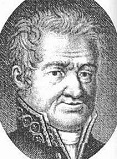
On Nov. 26, 1809 the Battle of Alba de Tormes in Alba de Tormes, Spain 13 mi. SE of Salamanca is a V for the French under Metz-born Gen. Francois Etienne (François Étienne) de Kellermann (1770-1835)o over the Spanish under Diego de Canas (Cañas) y Portocarrero, Duke del Parque (1755-1824) after the French catch the Spanish crossing the Tormes River and rout them on the bank with cavalry, causing them to take refuge in the mountains over the winter.
In the 1810s the Spanish empire in America becomes kaput after revolts in Mexico, led by Father Miguel Hidalgo (1751-1811), Venezuela, and New Granada (Colombia, Ecuador, and Panama), led by Simon Bolivar (Simón Bolívar) (1783-1830) and Francisco de Miranda (1756-1816), and Argentina, Chile, and Peru, led by Jose de San Martin (1778-1850) and Jose Miguel Carrera Verdugo (1785-1821).

On Jan. 19-21, 1810 the French army forces the passes of the Sierra Morena and invade Andalusia, Spain. On Jan. 24 Seville revolts against the Junta Supreme Central, and on Jan. 29 a regency council is installed in Cadiz. On Jan. 27 the British invade Guadeloupe, and capture it on Feb. 3. On Jan. 31 70K French troops under marshal Nicolas Jean de Dieu Soult (1769-1851) capture Seville, Spain, after which they siege Cadiz in S Spain on Feb. 5 (until Aug. 24, 1812), which is defended by only 2K Spanish troops, who are later reinforced by 10K Spanish, British, and Portuguese troops.
On Feb. 8, 1810 Napoleon I creates six military govts. in N Spain, stripping his bro' Joseph Bonaparte of much of his authority - mom liked me best?
On Mar. 29, 1810 the French finally occupy Oveido, Spain after being thwarted by guerrillas.
On Apr. 13, 1810 the French siege Lerida, Spain, and capture it on May 14.
On Apr. 15, 1810 the French defeat the Spanish at the Battle of Zalamea.



On Apr. 19, 1810 a coup in Venezuela achieves de facto independence from Spain, establishing the Supreme Junta of Caracas and deposing Capt. Gen. Vincente Emparan and his colonial administrators, launching the Venezuelan War of Independence (ends 1823); in early June Caracas, Venezuela-born Gen. Simon Bolivar (Simón Bolívar) (Simón José Antonio de la Santísima Trinidad Bolívar Palacios Ponte y Blanco) (1783-1830) and Caracas, Venezuela-born big brain Andres de Jesus Maria y Jose Bello Lopez (1781-1865) (#1 intellectual figure of 19th cent. Latin Am.) travel to England to seek recognition and aid, landing in Portsmouth, England in July, and talking Francisco de Miranda (Sebastian Francisco de Miranda y Rodríguez de Espinoza) (1750-1816) ("the first Universal Venezuelan") ("the Great Universal American") into returning; meawhile Simon Bolivar's brother Vicente Bolivar Palacias et al. visit the U.S. and obtain token support.
On Apr. 22, 1810 the Battle of Margalef is a V for the French over a Spanish army attempting to relieve Lerida.
On Apr. 26, 1810 42K French troops under Marshal Michel Ney siege 5.5K men under Marshal Don Andres Perz de Herrasti in Ciudad Rodrigo, Spain, and capture it on July 9.
On May 15, 1810 16K French troops under Gen. Louis Gabriel Suchet siege a 1K-man garrison under Col. Carbon in Mequinenza, Spain in Aragon at the confluence of the Ebro and Segre Rivers 130 mi. W of Barcelona, and capture it on June 8 - your torilla soup smells so good and I do have a sick kid at home?
On July 20, 1810 Colombia declares independence from Spain.

On July 21, 1810 after Nice, Italy-born French marshal Andre (Andrea) Massena (1758-1817), "the dear child of Victory" (greatest gen. in France after Napoleon) is transferred to Spain (taking his mistress with him dressed as a dragoon), and takes over the 65K-man French army, he invades Portugal - another sock hop?
On Aug. 11, 1810 the Battle of Villagarcia is another French V over the Spanish.


On Sept. 13, 1810 a plot in Queretaro (Querétaro) (160 mi. NW of Mexico City) by Josepha (Josefa) Ortiz de Dominguez (1768-1829) (AKA La Corregidora) (wife of the corregidor or magistrate of Queretaro) for Mexican independence starting on Dec. 8 is discovered by the Spanish govt., and after they lock her in her room so they can capture the other plotters, she makes a loud noise with her heels to cover the sounds of fellow plotter Don Ignacio Perez as he takes off to ride to San Miguel de Allende to warn the others, launching the revolt early; on Sept. 16 (Mexican Independence Day) (early morning) Roman Catholic Father Miguel Hidalgo y Costilla (1753-1811), priest since 1779 of Dolores parish in Guanajuato 170 mi. NW of Mexico City, who the year before joined a patriotic society allegedly devoted to Mexican loyalty to the Spanish crown but really the opposite delivers his Grito de Dolores (Cry of Dolores), beginning the multi-ethnic Mexican Revolt (War of Independence) from Spain (ends Sept. 27, 1821), leading hundreds of parishioners in a successful attack on the local prison to free prisoners while carrying a banner of Our Lady of Guadalupe, patron saint of Mexico; he then forms an army of 80K and captures Guanajuato and Guadalajara, then marches on Mexico City, winning the first battle, then bogging down after being excommunicated and seeing his troops split, causing him to retreat.
On Sept. 14, 1810 the Spanish under Henry O'Donnell supported by a British naval squadron under Francis William Fane win a small V at the Battle of La Bisbal.

On Sept. 18, 1810 the Chilean War of Independence from Spain begins (ends 1821/1826); on Nov. 16 gen. Jose Miguel Carrera Verdugo (1785-1821) becomes pres. #1 of the first Chilean governing council (until Oct. 2, 1814; on July 4, 1812 the Chilean Flag starts out blue-white-yellow, switches on May 26, 1817 to blue-white-red, then settles on Oct. 18, 1817 with white-red with a blue square in the upper left with a white star in it.
On Sept. 24, 1810 the Spanish Cortes convenes in Cadiz.
On Sept. 26, 1810 after capturing Fort San Carlos in Baton Rouge, La., an uprising of white Yankees against Spanish rule in Fla. results in the proclamation of the Repub. of West Florida, the first lone star repub.; on Oct. 27 Pres. Madison orders its annexation into the Lousiana Territory, after which the U.S. army takes St. Francisville on Dec. 6, and Baton Route on Dec. 10, ending the upstart repub.
On Oct. 15, 1810 the Battle of Fuengirola on the Costa del Sol in Andalusia, S Spain sees a 300-man garrison from the 4th Regiment of the Duchy of Warsaw holed-up in the medieval Moorish fortress of Sohail hold off a 4.5K-man Spanish-British force of the famous British 89th (Princess Victoria's) Regiment of Foot under lt. gen. Andrew Thomas Blayney, 11th Baron Blayney (1770-1834) of County Monaghan in Ireland, cmdr. of the 85th Foot Regiment AKA Blayney's Bloodhounds, who is captured, causing Napoleon to award several of the Polish officers the French Legion of Honor.
On Nov. 4, 1810 the French defeat the Spanish at the Battle of Baza.

On Dec. 16, 1810 the French under marshal Louis Gabriel Suchet, 1st Duke of Albufera (1770-1826) siege Tortosa, Spain.
In 1810 after Napoleon conquers Spain, Argentina sets up its own govt. in the name of the Spanish king under the name United Provinces of the Rio de la Plata, with capital at Buenos Aires.
Hey baby, how'd you like to have a little fun? In 1810 15-y.-o. Diego de la Vega is sent to live in Barcelona, Spain to receive a European education, and meets his girlfriend Juliana de Romeu while learning to fence from master Manuel Escalante, later joining the La Justicia movement and developing his masked alter-ego of Zorro, named after his spirit guide, a fox. :)
In Jan. 1811 the army of Father Miguel Hidalgo (b. 1753) is routed near Guadalajara by a small Spanish army, causing him to flee to the N, where he is captured on Mar. 21, then taken to Chihuahua, defrocked, excommunicated and shot on July 30, his head publicly displayed until the end of the Mexican War of Independence (1821), after which in 1824 he becomes a nat. saint, and his town of Dolores is renamed Dolores Hidalgo (plus the town of Guadalupe Hidalgo), and Sept. 16 becomes Mexican Independence Day.
On Mar. 2, 1811 the Junta Suprema de Caracas (formed last Apr.) dissolves itself after calling for a congress of the Venezuelan provinces and setting up a triumvirate; on July 5 (after missing the target date of July 4 to show admiration for the Yanks) the rev. govt. proclaims the First Venezuelan Repub. (ends July 25, 1812), modeled after the U.S. by Simon Bolivar, who visited the U.S. in 1809 and became an enthusiastic admirer, followed by a new constitution on Dec. 21, with Miranda's tricolor as the new flag; meanwhile on Aug. 11 Miranda takes Valencia; too bad, the loss of the Spanish market for cocoa exports causes the economy to tank and the pop. to lose enthusiasm.

On Apr. 11, 1811 Spanish gen. Jose Gervasio Artigas (1764-1850) issues the Mercedes Proclamation, leading a revolt against Spain in Uruguay (ends 1814), joining patriots from Buenos Aires and defeating the Spanish on May 18 in the Battle of Las Piedras, then sieging Montevideo.

On May 3-5, 1811 the Battle of Fuentes de Onoro sees the British-Portuguese army under Gen. Arthur Wellesley defeat the French under Gen. Massena, causing the Peninsular War to decisively turn against them, and the French invasion of Portugal to begin turning into a rout; on May 6 Wellesley sieges Badajoz; on May 8 Suchet sieges Tarragona; on May 10 the French garrison breaks out of Badajoz, causing the Brits to raze their siege on May 12; on May 16 the Battle of Albuhera (Albuera) is a V (push?) for the French and their Vistula Uhlan Regiment against the combined forces of Britain, Spain, and Portugal (a sobering lesson to Napoleon about his forces' limitations?), after which Wellesley resumes his siege of Badjoz on May 25, then begins retreating into Portugal on June 27; meanwhile in July French gen. Auguste Marmont (1774-1852) is hastily summoned to replace Gen. Massena in N Spain.
On Mar. 4, 1811 the French begin retreating from Santarem for the Spanish frontier; on Mar. 5 the Cadiz breakout Battle of Barrosa (Chiclana) near Cadiz, Spain is a push after a single British div. defeats two French divs. and captures their regimental eagle, causing them to reoccupy their siege lines.
On Dec. 20, 1811 the French siege Tarifa in Cadiz, Andalusia, Spain (ends Jan. 14).
On Jan. 8, 1812 the British under Arthur Wellesley siege Ciudad Rodrigo in Spain, capturing it on Jan. 19.
On Jan. 9, 1812 the French under Marshal Louis Gabriel Suchet capture Valencia, Spain.On Jan. 19, 1812 the Battle of Villaseca is a V for the Spanish over the French.
On Jan. 26, 1812 France annexes Catalonia.
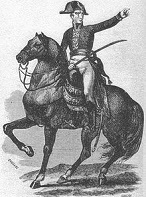
On Jan. 29, 1812 the Battle of Altafulla is a V for 8K French over 4,250 Spanish after Spanish Gen. Joaquin Ibanez (Joaquín Ibáñez), Baron de Eroles (1784-1825), who wiped out a French column on Jan. 18 in Col de Balaguer underestimates the enemy strength in a heavy fog and becomes a big tall fool.
On Mar. 5, 1812 the Battle of La Roda in La Mancha, Castile is a V for the Spanish over the French.
On Mar. 16, 1812 the British under Arthur Wellesley siege Badajoz, capturing it on Apr. 6.
On Mar. 26, 1812 (Maundy Thur.) (2nd anniv. of the founding of the Caracas Junta) Caracas, Venezuela suffers a severe earthquake that kills 12K, doing most of the damage in repub. areas, causing the royalists to call it a punishment from God, further weakening the new Venezuelan Repub.; after the superstitious provinces bite bigtime, they switch to the royal side, and on July 4 the royalists stage a successful uprising in Barcelona, causing neighboring Cumana Province to defect.
On May 8, 1812 after Arthur Wellesley enters Madrid, a nat. assembly elected in Cadiz, Spain promulgates the new democratic 1812 Constitution; in July Wellesley begins a retreat to Portugal.
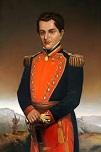
On May 14, 1812 after a triumphant entry into Caracas on Apr. 26 by Francisco Miranda, where he is appointed CIC of the army, he is defeated by a Spanish force under Juan Domingo de Monteverde y Rivas (1773-1832) (a frigate capt. who formed a large army of volunteers) at the Battle of La Victoria in La Victoria, Venezuela on June 20 and June 29 after treachery by Pedro Ponce, then retreats to Cabrera, decides it's hopeless and signs an armistice with Monteverde in Victoria on July 25 without authorization from the Caracas Junta, after which he attempts to flee on a British ship at La Guaira, and is arrested on July 30 in Laguayra as a traitor by the junta, who decide not to shoot him but hand him over to the Spanish, who sent him next year to Cadiz, where he dies in 1816 in the dungeons of the Spanish Inquisition; in June Monteverde becomes capt.-gen. of Venezuela (until Aug. 8, 1813); Simon Bolivar, who fought at Valencia and used Miranda as a bargaining chip for his own freedom flees to Cartagena, where on Dec. 15 he writes the Cartagena Manifesto, calling for a joint effort by Venezuela and New Granada to gain independence from Spain - attempted liberation is heresy?
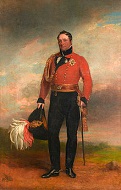
On May 18-19, 1812 the Battle of Almaraz in Spain sees an Anglo-Portuguese army under British Gen. Lt. Gen. Rowland Hill (1772-1842) destroy a French pontoon bridge over the Tagus River, keeping French forces separated.
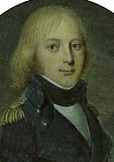
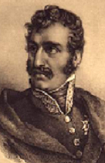
On May 31, 1812 the Battle of Bornos in Bornos, Spain 40 mi. NE of Jerez de la Frontera is a V for the French under Gen. Nicolas Francois Conroux, Baron de Pepinville (Pépinville) (1770-1813) over the Spanish under Gen. Francisco Ballesteros (1770-1832) after they repel a surprise attack.
On June 17, 1812 the British under Gen. Arthur Wellesley siege Salamanca, Spain; on July 22 after several weeks facing each other off, the Battle of Salamanca (Battle of the Arapiles) is a V for the Brits and Portuguese under Wellesley over the French forces of Marshal Auguste Marmont, who is gravely wounded in the right arm and side and retires to France; meanwhile British Gen. Rowland Hill and his 18-man army protect Badajoz.
On Aug. 31, 1812 after an insurrection in his native Nuevo Santander, Mexico was suppressed last year, causing him to travel to the U.S. to seek help for the remaining rebels, blacksmith Jose Bernardo Maximiliano Gutierrez de Lara places an ad in The Herald of Alexandria, La. calling for volunteers for the "Republicans of Nacogdoches", causing U.S. Lt. Augustus William Magee (McGee) (1789-1813) to recruit a force of 130 men in Nachitoches, La. for the Gutierrez-Magee Filibustering Expedition, meeting with La. Gov. William C.C. Clairborne and William Shaler in New Orleans before crossing the border in early Aug. 1812 and capturing Nacogdoches on Aug. 16, recruiting 200 more and taking Trinidad (Santisima Trinidad de Calcedo), Tex. on the E bank of the Trinity River on Sept. 13, followed by Presidio La Bahia in Goliad, where Magee dies of malaria or consumption (poisoned?), causing Am. adventurer Samuel Kemper (-1814) to take over as cmdr.; meanwhile on Dec. 10 de Lara meets with the U.S. House of Reps, who turn him down for fear of jeopardizing relations with Spain.
On Aug. 24, 1812 the French raise their siege of Cadiz (begun Feb. 5, 1810) and begin evacuating Andalusia; on Aug. 27 the Spanish storm Seville.
On Feb. 19, 1813 after a 1.5K-man royalist army under Lt. Col. Francisco Ignacio Elizondo Villarreal (1766-1813) pursues them, the Repub. Army of the North under Samuel Kemper, U.S. Col. Henry A. Perry, and Bernardo Gutierrez de Lara retreat to San Antonio de Bexar, and get ambushed on Mar. 29 while searching for food on Rosillo (Salado) Creek in SE Bexar County, Tex., leading on Mar. 29 to the Battle of Rosillo Creek (Rosalis) 9mi. SE of San Anontio de Bexar near the confluence with Salado Creek, with 100-330 royalist troops vs. six repub. troops KIA, and most of the royalists' arms and ammo captured, causing them to retreat to San Antonio and sign a truce on Apr. 1, after which on Apr. 6 de Lara declares Texas independent from Spain, proclaiming its first constitution, with himself as pres. #1 of the First Repub. of Tex.; on June 20 the 2-hour Battle of Alazan Creek in modern-day Bexar County, Tex. W of San Antonio de Bejar sees the 800-man Repub. army under de Lara and Perry surround the 1K-man army of Col. Ignacio Elizondo at dawn and surprise them during breakfast, wiping them out and inviting Indian allies to scalp them, capturing massive supplies incl. 2K horses and mules, 300 guns and muskets, 5K lbs. of gunpowder, and mucho food; too bad, de Lara is replaced by U.S.-backed Gen. Jose Alvarez de Toledo y Dubois (1779-1858), who leads the men to capture San Antonion on aug. 1, but alienates them with racism, causing them to be defeated on Aug. 18 by Jose Joaquin de Arredondo y Miono (José Joaquín de Arredondo y Mioño) (1776-1837) at the Battle of Medina 20 mi. S of San Antonio, losing 1.3K KIA (vs. only 55 royalists), causing Toledo to flee to La., attempt another invasion in 1814, then flop and reconcile with Spain in 1816, becoming an adviser to Fernandi VII; meanwhile the royalists execute all the captured U.S. citizens, ending hope of U.S. aid.
In May 1813 Simon Bolivar begins a campaign against the royalists in Venezuela, taking earthquake-rocked Caracas (his home town) on Aug. 4, gaining the title of El Libertador, taking dictatorial powers, and on Aug. 7 proclaiming the Second Venezuelan Repub. (ends July 16, 1814); Jose Tomas Rodriguez Boves (1782-1814) starts a guerrilla war on behalf of the Spanish crown, in which atrocities get committed by both sides.
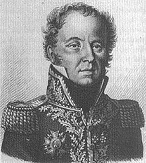
On June 21, 1813 82K allies under the Arthur Wellesley, 1st marquess of Wellington decisively defeat 60K French troops under Gen. Jourdan at the naval Battle of Vittoria (Vitoria) in Spain, then on July 7-Sept. 8 9,750 British and Portuguese troops under Thomas Graham siege San Sebastian in N Spain, defended by 3,380 troops under French Gen. Louis Emmanuel Rey (1768-1846), sacking and burning the town before invading S France, causing Joseph Bonaparte to return to his estate in France without resigning; meanwhile French marshal Suchet is driven out of Valencia and Barcelona.
On July 5-Aug. 11, 1813 the Congress of Prague is a dud when Napoleon declines all terms offered, causing Austria to declare war on France in alliance with Russia, Britain, Prussia, Spain, and Sweden (in return for recognizing their annexation of Norway); the allies adopt a policy of avoiding battles in which Napoleon is personally present; meanwhile Nappy frantically strengthens his army and braces for the counterattack.
On Nov. 10, 1813 after 80K British, Portuguese, and Spanish troops (incl. 20K green Spanish troops) under Arthur Wellesley and Sir John Hamilton chase 60K French troops under Marshal Nicolas Jean de Dieu-Soult from San Sebastian to a defense line on the Nivelle River in France, manning a 20-mi.-long line from the Roncesvalles Pass to the Atlantic Ocean, spreading them thin, the Battle of Nivelle on the Nivelle River in France is a V for the Allies under Arthur Wellesley and Sir John Hamilton over the French under Gen. Nicolas Jean de Dieu-Soult, with 2,2450 British vs. 4,351 French casualties.
On Dec. 5, 1813 (a.m.) the Battle of Araure in Venezuela sees 3.5K-5K Spanish royalists under Gen. Domingo de Monteverde defeated by 3K patriotic forces of Simon Bolivar, who gives a speech with the soundbyte: "Your valor has earned yesterday a name for your corps, and through the midst of the fighting, when I saw you succeed, I named you the Victorious Battalion of Araure. You removed the enemy's flags in the moment of your victory. You have earned the famous, invincible call of Numantia."

On Dec. 11, 1813 former king (1808) Ferdinand VII (1784-1833) is restored to the throne of Spain (until Sept. 29, 1833), and proves to be a reactionary absolutist, backed by the Persians (conservative deputies), soon double-crossing the liberals and abolishing the liberal constitution on May 4, then arresting the liberal leaders on May 10, all of which increases underground radicalism, incl. Masons; Joseph Bonaparte refuses to abdicate even after his little brother Napoleon I recognizes Ferdinand VII, but finally gives up; Ferdinand VII proves "in many ways the basest king in Spanish history" (Stanley Payne).
On Apr. 10, 1814 the Battle of Toulouse sees the French under Marshal Soult dig in and bloodily defend Toulouse, causing Wellington to pull back to reorganize, allowing them to escape, after which Wellington enters the city on Apr. 12 to an open celebration by a fifth column of French royalists; the same afternoon the news of Napoleon's abdication reaches Wellington and Soult, who agree to an armistice on Apr. 17, ending the Peninsular War (begun May 2, 1808) after 5 years, 11 mo., 2 weeks, and 1 day.

On May 3, 1814 after a few military Vs, the Treaty of Lircay in Chile is signed by Bernardo O'Higgins; on July 23 Jose Miguel Carrera stages a coup in Santiago, but O'Higgins refuses to recognize him, and they battle on Aug. 26, agreeing to give up and join forces after hearing of a royalist expedition under Gen. Mariano Osorio (1777-1819) (gov. of Chile in 1814-15) on the way.
Yet another Treaty of Paris (last in 1812, 1810, July 1806, May 1806, 1802, 1796, 1784, 1783...)? On May 30, 1814 the 1814 Treaty of Paris is signed by France and the Sixth Coalition, contracting France to its 1792 boundaries, incl. Avignon, Venaissin, Belgium, and parts of Savoy and Germany; France recognizes the independence of the Netherlands, the German and Italian states, and Switzerland; Britain restores the French colonies except Tobago, St. Lucia, the sugar island of Mauritius, and Malta (along with Cape Province), all of which are formally ceded; the island of Diego Garcia becomes a dependency of Mauritius (until 1965); the Spanish regain title to the Dominican Repub.; the Confederation of the Rhine is kaput; France promises to end its slave trade, and the allies abandon claims to idemnity.
On June 15, 1814 Venezuelan royalists under Jose Tomas Boves defeat Simon Bolivar's army in the Battle of Puerto Cabello (a key port city) with 650 total casualties; Boves is KIA but the royalists go on to take Caracas, and Bolivar flees to Tunja, capital of Nueva Granada, where he is put in command of a rev. army, which he leads in the liberation of (Santa Fe de) Bogota.
On Oct. 1-2, 1814 after Jose Miguel Carrera reneges on attacking the enemy in the rear, the Disaster (Battle) of Rancagua (50 mi. S of Santiago) sees Chilean rebel forces trying to block access to Santiago defeated by Spanish royalists under brig. gen. Mariano Osorio on the streets of Rancagua; on Oct. 3 Bernardo O'Higgins gets past the royalist troops and retreats to Santiago with only 300 of 1.9K troops remaining, and the royalists soon take it, causing O'Higgins and other patriot leaders to flee to Argentina, after which the royalists set up a harsh reconquista rule.
On Mar. 2, 1815 the Junta Suprema de Caracas (formed last Apr.) dissolves itself after calling for a congress of the Venezuelan provinces and setting up a triumvirate; on July 5 (after missing the target date of July 4 to show admiration for the Yanks) the rev. govt. proclaims the First Venezuelan Repub. (ends July 25, 1812), modeled after the U.S. by Simon Bolivar, who visited the U.S. in 1809 and became an enthusiastic admirer, followed by a new constitution on Dec. 21, with Miranda's tricolor as the new flag; meanwhile on Aug. 11 Miranda takes Valencia; too bad, the loss of the Spanish market for cocoa exports causes the economy to tank and the pop. to lose enthusiasm.
On Mar. 4, 1815 the French begin retreating from Santarem for the Spanish frontier; on Mar. 5 the Cadiz breakout Battle of Barrosa (Chiclana) near Cadiz, Spain is a push after a single British div. defeats two French divs. and captures their regimental eagle, causing them to reoccupy their siege lines.
In 1815 the Venezuelan royalists defeat Simon Bolivar at the Battle of Santa Marta, then take Cartagena, causing him to flee Nueva Granada for Jamaica, where he issues his Jamaican Letter, then travel to Haiti and gain support from pres. Alexandre Sabes Petion with his promise to abolish slavery in Venezuela, raising a new army. The British income tax is abolished (until 1842) - hey, we get a piece of them 700 million francs?

In 1815 Gen. Carlos Maria de Alvear (1789-1852) becomes dictator of the Rio de la Plata based in Buenos Aires; meanwhile Argentine Gen. Jose de San Martin (1778-1850) goes to Mendoza to organize an army to liberate Chile.
In 1815 after federalist troops from the Banda Oriental (Uruguay) threaten the country, Dr. Jose Gaspar Rodriguez de Francia becomes dictator ("El Supremo") of Paraguay, isolating the country and fighting annexation threats by both Brazil and the United Provinces of the Rio de la Plata while forcing peasants into slave labor, allegedly to found a dream country a la Rousseau, Robespierre and Napoleon, while he slowly goes mad?



On Jan. 1, 1817 Simon Bolivar lands in Barcelona, Venezuela (Orinoco region) with a small force of refugee insurgents from Haiti in an attempt to liberate it from Spain, promising to free the slaves and give confiscated properties to his victorious troops, and on Feb. 16 he scores a quick V against a Spanish royalist army at the Battle of Barcelona, establishes a rev. govt. at Angostura (founded 1764) (renamed Ciudad Bolivar in 1846), then wins a number of military Vs during the year; in 1824 Angostura Bitters are first made by pro-Bolivar German-born military surgeon Johann Gottlieb Benjamin Siegert (1796-1870) to help his patients; meanwhile Chile becomes independent from Spain after a successful revolt led by Argentinian gen. Jose San Martin (1778-1850) and Chilean gen. Bernardo O'Higgins (1778-1842), whose Army of the Andes, equipped with 10K pack mules crosses the Andes from Mendoza, Argentina and on Feb. 12 defeats the Spanish under Rafael Maroto at the Battle of Chacabuco near Santiago, followed on ? at the Battle of Chalchuapa, allowing them to capture Santiago; next year O'Higgins becomes the first pres. (supreme dir.) of the new Repub. of Chile (until 1823), and founds its navy under ex-Royal Navy rear adm. Thomas "Sea Wolf" Cochrane, whose flagship is the O'Higgins; O'Higgins goes on to abolish titles of nobility, support religious toleration, and impose new taxes, pissing-off merchants with protectionist measures.

On Mar. 16, 1818 5K Spanish troops under gen. Mariano Osorio (1777-1819) defeat 7K rebels in Chile under Jose de San Martin and Bernardo O'Higgins at the Second (Surprise) Battle of Cancha Rayada (first in 1814) near Talca, causing them to have to retreat and regroup in Santiago, scale the Andes, then get revenge on Apr. 5 at the Battle of Maipu (Maipú) near the Maipo River in the Andes with the help of the Virgin of Carmel, winning Chile's independence from Spain.
In Mar. 1818 Simon Bolivar is defeated at the Battle of Puerto Cabello in N Venezuela, causing him to regroup, gather his scattered forces, and secure the services of a foreign legion composed of British and Irish soldiers of fortune.

On Feb. 22, 1819 knowing that it is a paper tiger in Florida, Spanish envoy to the U.S. (1809-19) Luis de Onis y Gonzalez-Vara (1762-1827) proves to be a cream puff, and signs the Adams-Onis Treaty in Washington, D.C., ceding all of Florida (Fla.) to the U.S. in return for U.S. assumption of private Am. claims against Spain up to $5M, extending the W boundary of the Louisiana Purchase along the Sabine River, Red River, and Arkansas River, and from the source of the Arkansas N to the 42nd parallel and then W to the Pacific coast; Spain surrenders its claims to the Pacific Northwest; slave and free states in the U.S. are now evenly balanced at 11 each, but the statehood applications of Missouri and Maine (until now a district of Mass.) threaten the balance; John Randolph of Va. coins the term "Doughfaces" for Northern congressmen who vote with the South on slavery issues after 18 members vote against an amendment to the bill admitting Missouri to the Union that prohibits the further introduction of slaves into the state, with the soundbyte: "They were scared at their own dough faces."
In July 1819 Simon Bolivar sets out across the Andes Mts. to support of fellow revolutionists in New Granada, where royalists had reestablished control, and on Aug. 7 he defeats 500 Spanish royalist forces with his force of 2.5K men at the decisive Battle of Boyaca (Boyacá) River near the town of Boyaca, Colombia 25 mi. S of Tunja, then occupies Bogota on Aug. 10; on Dec. 17 the Congress of Angostura proclaims the Repub. of Gran Colombia (ends 1831), a union of Venezuela and Nueva Granada (Colombia, Ecuador, Panama plus parts of Costa Rica, Peru, Brazil, and Guyana) (the NW neck of South Am. and half of Central Am.), with Simon Bolivar as pres.

On Jan. 1, 1820 the Trienio Liberal (Liberal Triennium) (ends 1823) begins when Carbonari under Lt. Col. Rafael del Riego y Nunez (Nuñez) (1784-1823) stage a successful liberal anti-absolutist revolt in Spain (ends 1823), and on Mar. 10 seize Ferdinand VII, forcing him to restore the liberal constitution of 1812; the bicameral Cortes converts uncultivated and crown lands into private property, dissolves monasteries and convents, and bans emigration.
On Feb. 18, 1820 after Lord Cochrane captures Valdivia and tries to occupy the Chiloe Archipelago, last stronghold of the Spanish in Chile, the Battle of Agui at Ft. Agui in Fuerto de Agui near Ancud, Chiloe is a V for the Spanish royalists over 60 Chilean patriots.

On Apr. 21-24, 1820 Guatemala City is unsuccessfully attacked by Colombian insurgents led by French pirate (now commodore) (friend of Simon Bolivar) Louis-Michel Aury (1788-1821).

In Sept. 1820 taking advantage of the civil war in Spain, Argentine gen. Jose (José) Francisco de San Martin y Matorras (1778-1850) lands an invasion army at the seaport of Pisco, Peru.
On Oct. 20, 1820 the revolts in Spain, Naples et al. cause the Holy Alliance to convene the Congress of Troppau in Silesia to discuss ways to suppress them, signing the Troppau Protocol on Nov. 19 threatening armed action against all revolutionaries who upset the status quo; it adjourns after agreeing to reconvene next Jan. at Laibach (Lyublyana) in Slovenia.
In 1820 an assassination plot against Paraguayan dictator Dr. Jose Gaspar Rodriguez de Francia causes him to destroy the country's creole elite, and close the Seminary, the country's only institution of higher learning.
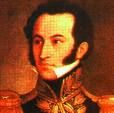

On June 24, 1821 after Simon Bolivar sends gen. Antonio Jose de Sucre (1795-1830) (descended from the Bavarian Jewish Zucker family) to liberate Quito (modern-day Ecuador), he and gen. Jose Antonio Paez (1790-1873) defeat the resurgent Spanish royalists at the Battle of Carobobo, assuring Venezuelan independence, which is proclaimed on Sept. 15, federating with Gran Colombia (founded 1819); meanwhile an independence movement in Panama Province seeks union with Grand Colombia.
On July 12, 1821 Gen. Jose de San Martin leads his army into Lima after Spanish troops abandon it, and on July 28 Peru declares its independence from Spain, followed on Sept. 15 by Costa Rica, Guatemala, Honduras, Nicaragua, El Salvador Santo Domingo, and the Dominican Repub. later; Haiti invades Santo Domingo and occupies it until 1844; large numbers of Spaniards and mestizos migrate to the Philippines, while Mexican independence reduces trade, leading to bankruptcy of the Royal Philippine Co.
On July 17, 1821 Spain cedes Florida (Fla.) to the U.S.
On Aug. 12, 1821 the U. of Buenos Aires is founded in Buenos Aires, Argentina, becoming the largest educational institution in South Am.

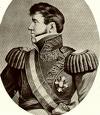
On Aug. 24, 1821 after being sent with an army last year by viceroy (1816-21) Juan Ruiz de Apodaca, 1st Count of Venadito (1754-1835), then deciding to switch sides, Spanish royalist army gen. Agustin (Agustín) de Iturbide (1783-1824) and Indian-Spanish-African mestizo rev. leader Vicente Ramon Guerrero Saldana (Saldaña) (1782-1831) sign the Treaty of Cordoba, recognizing Mexican independence under the Feb. 24 Plan of Iguala, ending the Spanish colony of New Spain (founded 1521), with a new green-white-red flag symbolizing "religion, independence and union", meaning an established Roman Catholic Church (white), an independent monarchic govt. with liberal constitution (green), and unity of native Am. and Euro citizens (red for Castile, showing that the Spaniards will be considered more equal than the indigenous browns, which are a mixture of red and green?); too bad, they permit the royalist Spanish to turn their land holdings into hard currency before departing, depleting Mexico of currency, and causing silver church bells and gold altarpieces to be melted down to save the new nation from bankruptcy.

On Aug. 30-Oct. 3, 1821 the Congress of Cucuta (Cúcuta) in San Jose de Cucuta, Colombia on the Venezuelan border proclaims a repub. constitution for New Granada, with Simon Bolivar as pres., who places Gen. Antonio Jose de Sucre in command of the army, and in Oct. makes Francisco de Paula Santander (1792-1840) his vice-pres.

In Sept. 1821 the Confederation of United Provinces of Central Am. (Federal Repub. of Central Am.) (not the United States of Central Am.) is formed by Honduras, Guatemala, El Salvador, Nicaragua, and Costa Rica (until 1841), with El Salvador-born Gen. Manuel Jose (José) Arce y Fagoaga (1783-1847) as pres. #1 (until 1827); too bad, he becomes a dictator - yes, we have no bananas?
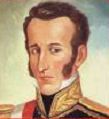
On Sept. 22, 1822 former royalist gen. Jose (José) de Lamar (la Mar) (1778-1830) becomes pres. #2 of Peru (until Feb. 27, 1823).
On Oct. 20, 1822 after a preliminary conference in Vienna in Sept., the Congress of Verona meets, attended by the Quintuple Alliance of Austrian prince Klemens von Metternich, Russian Tsar Alexander I, Prince Hardenberg and Count Christian Gunther von Bernstorff for Prussia, Francois-Rene de Chateaubriand and the Duc de Montmorency-Laval for France, and the Duke of Wellington for Britain after Viscount Castlereagh's unexpected suicide; the three main questions are the Italian question (Austrian rule of N Italy), the Turkish question (Greek revolt), and the Spanish question (French intervention in the Spanish rev.); after Austria, Russia, and Prussia decide to support the French army in suppressing the Spanish rev., Britain refuses to commit, and withdraws from the Quintuple Alliance (Concert of Europe), leaving the others to continue as as Holy Alliance, which lasts until the Crimean War (1853-6), although the order created by the Congress of Verona keeps working to prevent major Euro land wars until WWI; on Nov. 22 secret articles pledge support for monarchical govt. against representative govt. in Spain's foreign colonies, making the Monroe Doctrine necessary?; on Dec. 14 the Military Order of Malta (Hospitalers) is recognized as a sovereign state.
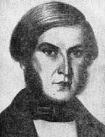
On Feb. 7, 1823 after El Salvador secedes from Guatemala to avoid incorporation into Mexico, and Guatemala invades, the defenders led by Mariano Prado Baca (1776-1837) evacuate San Salvador, camp at his Santa Catalina hacienda near San Vicente, march toward Honduras, and surrender at Gualcince.
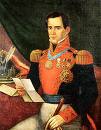
On Mar. 19, 1823 a rebellion in Mexico led by Veracruz-born criollo Antonio Lopez de Santa Anna (Antonio de Padua María Severino López de Santa Anna y Pérez de Lebrón) (1794-1876) forces Emperor Augustus I to abdicate; El Salvador regains its sovereignty, with Mariano Prado as pres. on June 17 (until Apr. 22, 1824, then Oct 1-Dec. 13, 1824, and Nov. 1, 1826-Jan 30, 1829); a faction in Costa Rica attempts to annex with Mexico, starting a civil war; too bad, the ex-emperor is granted safe passage out of the country under penalty of death for returning, and after moving to London via Italy and writing his memoirs, the dope returns next July 15, and is shot by the authorities in Padilla, leaving 10 children.
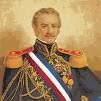
On Apr. 4, 1823 Gen. Ramon (Ramón) Freire Serrano (1787-1851) is made the pres.-dictator #3 of Chile by a military junta (until July 9, 1826); on Jan. 25, 1827 he becomes pres. #3 of Chile (until May 8, 1827).
On July 4, 1823 San Francisco Solano in Sonoma becomes the 21st and last Spanish mission founded in Calif.; San Diego de Alacala was the first in 1769.
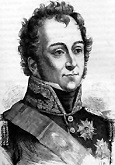
On Aug. 31, 1823 after the crowned heads of Europe approve a French invasion of Spain by the 60K-man Hundred Thousand Sons of Saint Louis (Spanish Expedition), led by the Duke of Angouleme (son of future king Charles X) to reinstate his absolute power, the Battle of Fort Trocadero is a V for the French, followed on Sept. 20 by Fort Sancti-Petri, which turn their guns on Cadiz, causing it to fall on Sept. 28, and the Cortes to dissolve itself and hand over Ferdinand VII to the French before surrendering on Sept. 30, ending the Spanish Liberal Rev. of 1820 and restoring Ferdinand VII as king of Spic 'n' Span Spain, who on Oct. 1 breaks his oath and revokes the liberal Constitution of Cadiz of 1812 and all legislation enacted by the pesky rev. govt., going on to rule with an iron hand, hanging pesky Rafael del Riego on Nov. 7; on Nov. 5 the Duc d'Angouleme leaves his 45K-man force in Madrid under the command of Gen. Louis-Auguste-Victor, Count de Ghaisnes de Bourmont (1773-1846), who evacuates Spain completely by 1828; French foreign affairs minister (since Aug. 28, 1822) Francois-Rene de Chateaubriand approves of the invasion despite opposition by the Duke of Wellington, getting him removed on Aug. 4, 1824 by new PM Jean-Baptiste de Villele.
On Dec. 2, 1823 (Tues.) after Austria suggests that the European monarchs should assist Spain in its struggle against Simon Bolivar's revolt, the Monroe Doctrine is announced by Pres. Monroe in his 1823 annual message to Congress, declaring the preeminence of the U.S., and prohibiting European expansion (colonization) in the Western Hemisphere, warning that any extension of the European system there will be regarded as a hostile act; U.S. secy. of state J.Q. Adams contests "the right of Russia to any territorial establishment on this continent", rejecting the tsar's 1821 claims to the Pacific coast; France and E European powers attempt to get Britain to join a congress to discussion the suppression of revolts in the Spanish-Am. colonies, but Britain refuses, saying that it is Spain's sole responsibility; British sea power combines with the Monroe Doctrine to let the revolutions succeed.
In 1823 Andres (Andrés) Novales (1800-23) leads a revolt in the King's Own Regiment in the Philippines, deepening ethnic divisions and leading to Philippine nationalism.
In 1823 the French occupy El Ferrol naval base in Spain.

In 1823 a U.S. fleet under Commodore David Porter (1780-1843) is sent to the West Indies to suppress piracy (until 1825); too bad, after one of his officers is jailed, Porter invades Fajardo, Puerto Rico, causing him to be court-martialed and resign in 1826, after which he joins the Mexican Navy, becoming its CIC in 1826-9; when he croaks in 1843, his younger son David Dixon Porter and adopted son David Farragut go on to become U.S. admirals, and his elder son William David Porter becomes a commodore.

In 1823 Am. businessman William Wheelwright (1798-1873) is shipwrecked near Buenos, Aires, and decides to stay in South Am., going on to develop a steamship line on the W coast in 1840, discover coal and copper deposits in Chile, and build one of the first railroads in South Am. along with the first telegraph line.
On Sept. 15, 1824 Guatemala proclaims independence from Spain of all of Central America; in Dec. Costa Rica becomes a repub. with a new constitution, the Pacto de Concordia, and Spain is down to Puerto Rico and Cuba in the New World - need to lose weight too, it's really hard?


On Oct. 4, 1824 the repub. of the United Mexican States is proclaimed, with a constitution based on the 1814 Acta Constitucional of Jose Miguel Ramos Arizpe (Arispe) (1775-1843), "Father of Mexican Federalism"; on Oct. 10 epileptic Gen. Jose Miguel Ramon Adaucto Fernandez y Felix renames himself Guadalupe Victoria (1786-1843), and becomes pres. #1 (until Apr. 1, 1829), going on to abolish slavery and establish the Colegio Militar (Military Academy), and establish diplomatic relations with all major powers; Mexico passes a colonization act granting hundreds of huge "rancho" estates to Mexican settlers in Calif., where the rancheros develop a luxurious lifestyle on the backs of Indian slave labor - time for Zorro?
On Dec. 9, 1824 the Battle of Ayacucho sees Simon Bolivar and his Creoles kick aristocratic Spanish butt and secure Peru's independence from Spain; Simon Bolivar is proclaimed emperor ("supreme dictator") of Peru (until 1827).
In Feb. 1825 after leading the military forces of S Peru to victory and independence from the Spanish, Simon Bolivar is elected pres., and on Aug. 16 S Peru declares independence and takes the name of guess-what, Bolivia; the Peruvian Flag is a white vertical stripe surrounded by two vertical red stripes, allegedly aspired by a flock of flamingos taking wing, but also symbolizing blood shed for independence and peace and/or red from the flag of Chile and white from the flag of Argentina.

On Aug. 25, 1825 rebels in Uruguay, led by Juan Antonio Lavalleja y de la Torre (1784-1853) declare independence from Brazil, and gain the help of Argentina (ends 1830).
In 1825 the state of Coahuila-Texas (Coahuila y Tejas) on the E coast of Mexico passes a colonization law offering large tracts of rich cotton land to empresarios who promise to sponsor immigrants; by 1830 there are 20K white settlers and 1K black slaves there.
In 1825 Buenos Aires signs a treaty with Britain to suppress the slave trade, and starts a war with Brazil to liberate the Banda Oriental.
In 1825 the govt. of law-and-order Spain introduces tariffs, and in 1831 establishes the Bolsa de Madrid stock exchange in Madrid.
In 1825 the manufacture of Spanish dollars (pieces of eight) ends.


On July 9, 1826 after expelling the last Spanish troops from its territory, Chile elects Manuel Jose Blanco y Calvo Encalada (1790-1876) (son of a Spanish father and Chilean mother) (a Freemason) as pres. #1 of a new repub., which works 9-to-5-what-a-way-to-make-a-living to kiss up to the elitist agrarian social structure; on Sept. 9 he is succeeded by Augustin Manuel de Eyzaguirre (1768-1837) (until Jan. 25, 1827).
In Sept. 1826 Simon Bolivar drafts a new 1826 Bolivian Constitution, vesting supreme authority in a life pres., which is adopted by a congress on Nov. 26 in Chuquisaca (Sucre); on Dec. 29 his close friend Gen. Antonio Jose de Sucre becomes pres. #1 (until Apr. 18, 1828), after which Simon Bolivar leaves Peru, hoping to maintain the political unity of his Repub. of Colombia, composed of Venezuela, New Granada, Ecuador, and Bolivia; too bad, separatist movements are beginning to gather steam.

On Aug. 22, 1827 after a military junta overthrows Bolivar's regime in Peru and secedes it from Colombia, then draws up a provisional constitution (adopted in 1828), it chooses former pres. #2 (1822-3) Gen. Jose (José) de Lamar (la Mar) (1778-1830) as pres. #8 (until June 7, 1829).
On Mar. 8, 1828 a decree in Mexico expels all Spaniards.
On Apr. 1, 1828 after a liberal revolt in Mexico led by Vicente Guerrero overthrows Augustin de Iturbide, Guerrero becomes pres. #2 (until Dec. 17), with Gen. Anastasio Bustamante as vice-pres. and army CIC.


On May 5, 1828 Federalist liberal Gen. Francisco Antonio Pinto Diaz (1785-1858) is elected pres. #4 of Chile, taking office on May 8 (until Nov. 2, 1829); meanwhile conservatives, led by Gen. Jose Joaquin Prieto Vial (1786-1854) and Gen. Diego Jose Pedro Victor Portales y Palazuelos (1793-1837) begin a civil war (ends 1831).
In Aug. 1828 after Antonio Sucre is expelled from Bolivia, Simon Bolivar resigns as pres. of the Repub. of Colombia, then assumes dictatorial control in Sept. in an attempt to stifle separatism, but troubles in Venezuela begin getting out of hand.

In 1828 a military coup in Buenos Aires led by unitarian Gen. Juan Galo Lavalle (1797-1841) executes gov. Manuel Dorrego after he accepts the independence of the Banda Oriental.
In 1828 Uruguay becomes independent of Brazil following the Treaty of Rio de Janeiro.
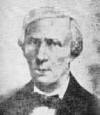
On Jan. 30, 1829 conservative mayor of San Vicente Jose Maria Cornejo Merino y Guevara (1788-1864) succeeds Mariano Prado as pres. of El Salvador, withdrawing it from the Central Am. Federation, causing federal troops under Gen. Francisco Morazan to invade, depose him next Feb. 16, and put Prado back in power.
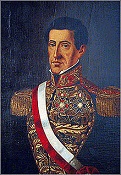
In Feb. 1829 an invasion of Gran Colombia by Peruvian forces is repulsed, causing Gen. Jose de Lamar to become the fall guy and get deposed on June 7 by a coup led by marshal Agustin (Agustín) Gamarra Messia (1785-1841), fleeing to exile in Costa Rica, while Gamarra becomes pres. #10 of Peru on Sept. 1 (until Dec. 20, 1833, then pres. #14 on Aug. 25, 1838-Nov. 18, 1841).
On Apr. 17, 1830 conservative Gen. Joaquin Prieto defeats liberal gen. Freire at the Battle of Lircay, ending the Chilean Civil War of 1828, causing the nat. congress to confirm Prieto as pres. next Sept. 18 (until Sept. 18, 1841), with Diego Portales as vice-pres.

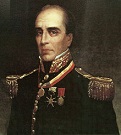
He freed a lot of people but the good die young? A little unstable around the middle are we? On Apr. 27, 1830 Simon Bolivar (b. 1783) relinquishes power after failing to pacify the separatist factions, then dies on Dec. 17 after liberating six countries and seeing his rule challenged all over Greater (Grand) Colombia; on May 6 Venezuela dissolves Greater Colombia, secedes, and sets up a repub. under dictator gen. Jose Antonio Paez Herrera (1790-1873), who has himself elected pres. (until 1846), and whose govt. slides into decades of revolt, dictatorship, and corruption; Ecuador follows suit and declares independence from Spain with British backing, proclaiming a new 1830 Ecuadorian Constitution giving the vote only to men with education and property, and declaring all Indios wardens of the Roman Catholic clergy; Ecuador goes on to have 48 presidentes and 18 constitutions during its first 131 years as a repub.; poor widowed Colombia suffers an economic collapse, causing a military coup in May led by gen. Rafael Jose Urdaneta y Faria (1788-1845), whho becomes pres. #4 of Gran Colombia on Sept. 5 (until Apr. 30, 1831).

On Nov. 6, 1830 the Republica Oriental del Uruguay is founded, with Montevideo (founded 1726) as capital, and Gen. Jose Fructuoso Rivera y Toscana (1784-1854) as pres. #1 (until Oct. 24, 1834); two parties take turns running the country (into the ground?), the right-wing conservative Partido Nacional (Blancos) (Whites), and the moderate libeal Partido Colorado (Colorados) (Reds); Colorado Rivera is a brilliant military leader but proves an inept political one?

In 1830 Mexican vice-pres. Gen. Bust A Move, er, Anastasio Bustamante (1780-1853) leads a revolt against pres. Mexican pres. Vicente Guerrero, and has him executed, becoming pres. (until 1833).
In 1830 Francisco Morazan becomes pres. of the Central Am. Confederation (until 1840).
In 1830 the civil war in Chile causes itinerant commissions of justice to be created to deal with rural banditry (until 1832).
In 1830 the problem of too many gringos flocking into Texas prompts the Mexican govt. to forbid further immigration and move troops to the frontier in a vain attempt to stop the flow of illegal aliens - they should know?
On Apr. 11, 1831 Salsipuedes (Sp. "get out if you can") Massacre in Uruguay sees bola-carrying mounted Charrua Indians invited to a meeting with pres. Fructuosa Rivera's brother Bernabe, then you know what, exterminating the tribe, after which there is a govt. coverup, the remaining handful taken to Paris in 1833 as circus attractions.



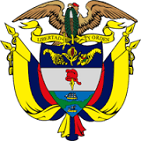
On Nov. 21, 1831 after a civilian-military govt. coup to reestablish a constitutional govt., Domingo de Caycedo (Caicedo) y Sanz de Santamaria (1783-1843) becomes pres. #1 of the new (Oct. 20) Repub. of New Granada (ends Apr. 11, 1858 1858), with capital at Santa Fe de Bogota, comprising modern-day Colombia and Panama plus portions of surrounding countries, with a red-blue-yellow flag; gen. Jose Maria Ramon Obando del Campo (1795-1861) becomes vice-pres. #1; on May 9, 1834 the new Colombian Coat of Arms is adopted, featuring a cool Andean condor (symbolizing freedom) holding a ribbon saying "Libertad y Orden" (Liberty and Order); too bad, it goes through 17 presidentes by 1858.
On Feb. 28, 1832 after El Salvadorian pres. Jose Maria Cornejo and Manual Jose Arce proclaim the separation of El Salvador from the Central Am Federation, federation troops under pres. Francisco Morazan attack San Miguel, El Salvador; on M ar. 17 the towns of Chalatenango in Metapan in El Salvador proclaim loyalty to the federation; on Mar. 14 the Battle of Jocoro is a V for the federals, followed by another V on Mar. 28 in San Salvador; Cornejo is taken POW, and Morazan takes control of El Salvador, calling for elections, which on July 25 elect Mariano Prado as pres. and Joaquin de San Martin as vice-pres. (until July 1, 1833); meanwhile the Insurrection of the Nonualcos ("mutes") (ends 1833) in El Salvador against forced labor, land seizure, oppressive taxes and landlords is led by Nonualco chief Anastasio Martir "Indio" Aquino (1792-1833), who assembles an army of 2K-5M men armed mostly with lances instead of firearms, attacking the hacienda in Jalponguita and advancing along the Comalapa and Lempa Rivers.

On Mar. 10, 1832 law prof. Jose Ignacio de Marquez Barreto (José Ignacio de Márquez) (1793-1880) of the Moderate Liberal Party becomes pres. of New Granada (Colombia) (until Oct. 7).

On Oct. 7, 1832 gen. Francisco Jose de Paula Santander y Omana (Francisco José de Paula Santander y Omaña) (1792-1840) of the Liberal Party becomes pres. #5 of New Granada (Colombia) (until Apr. 1, 1837).



On June 30, 1833 Spanish king (since Mar. 19, 1808) Ferdinand VII (b. 1784) abrogates the (Hillary-ous?) males-only Salic Law in favor of his infant daughter Isabella (the infanta or crown princess), then dies on Sept. 29, after which Isabella II (1830-1904) is proclaimed queen of Spades, er, Spain (until 1868), with her mother Maria Christina as regent; too bad, on Sept. 29 the First Carlist War in Spain begins (ends Aug. 31, 1839) (known for a series of battles beginning with A)? when the liberals back Isabella II while the reactionaries back Ferdinand VII's brother Don Carlos Maria (1788-1855), who at first can't actively participate since he's involved in the Portuguese civil war until next year.
On Apr. 20, 1834 Spain passes the Estatuto Real, dividing the country into 49 admin. provinces and giving the Cortes financial power, with the royal govt. retaining the right of dissolution and control of the ministry; the liberals split into the Moderados and the Progresistas, the first group having been been giving amnesty beforehand, and the second given amnesty afterward because of their insistence on restoring the 1812 charter - we are the champions? On Apr. 22 the Battle of Alasua (Altsasu) is a V for the Carlists under Gen. Tomas de Zumalacarregui over the Liberals under Gen. Vicente Genar de Quesada, after which the unit called the Guias de Navarra is formed from Liberal POWs. British Foreign Secy. Lord Palmerston negotiates the Quadruple Alliance between England, France, Spain, and Portugal to support Queen Maria II of Portugal and Queen Isabella of Spain against the pretenders to their thrones - now if anybody out there can sing or dance or tell jokes?
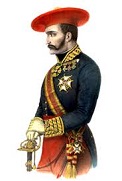
On Oct. 27, 1834 the Battle of Allegria de Alava (Alegría de Álava), the first battle of the First Carlist War in Chinchetru near Allegria de Alava (Alegria-Dlantzi), Alava, Spain is a V for the Carlists under Basque Gen. Tomas de Zumalacarregui e Imaz (Tomás de Zumalacárregui) (1788-1835) and Manuel Iturraide over the Liberals (Isabelinos or Cristinos) under Manuel O'Doyle, who lose 600 casualties.
On Apr. 20-22, 1835 after the Carlists assemble an army of 30K N of the Ebro River, the Battle of Artaza sees 22K Liberal troops under minister of war Jeronimo Valdez decimated by 5K Carlist troops under Basque Gen. Tomas de Zumalacarregui, who hide in the brush in the mountains and ambush them, inflicting 700 casualties; too bad, after being ordered to siege Bilbao to give Don Carlos a seaport to facilitate his recognition by Euro nations, he is wounded in the calf by a musket ball, and has quack doctor Petriquillo treat him, hastening his death on June 24.
On Jan. 16-18, 1836 after conquering Legutiano (Villareal de Alava) the Battle of Arlaban (Arlabán) between Alava and Guipuzcoa sees the Liberals under Luis Fernandez de Cordova supported by the British and French driven back by the Carlists with a large number of casualties.

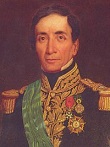
In 1836 Peruvian pres. #12 (1834-5) Luis Jose de Orbegoso y Moncada-Galindo, de Burutaran y Morales (1795-1847) and Bolivian pres. #7 (1829-39) Marshal Andres de Santa Cruz y Calahumana (1792-1865) create the Peruvian-Bolivian Confederation, but Santa Cruz is overthrown in 1839 and the confederation disbanded.
On Sept. 19, 1837 the Battle of Aranzueque in Aranzueque, Spain is a V for the Liberals over the Carlists, ending their Expedicion Real.
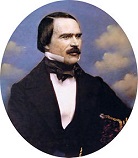
On Aug. 31, 1839 the Convention (Embrace) of Vergara is signed in Vergara (Bergara), Gipuzkoa, Basque Spain by Gen. Baldomero Esartero for the Isabelinos and Gen. Rafael Maroto for the Carlists, ending the First Carlist War (begun Sept. 29, 1833), recognizing the ranks and titles of 1K Carlist officers but pissing-off the Basques with its perfunctory treatment of home rule, causing Carlist gen. Ramon Cabrera y Grino (Ramón Cabrera y Griñó) (1806-77) to continue fighting in C Spain, holding out to next July, when his troops flee to France along with pretender Don Carlos Maria, waiting for the chance to return (1848).
In 1839 Guatemala breaks with Spain and becomes a repub., with Rafael Carrera as virtual dictator for life (1865), backed by mestizo Indians and the Roman Catholic Church; he reinstates ecclesiastical privileges and abolishes the head tax, allowing Indians to keep their communal properties.
In 1839 Uruguay declares war against Argentina, launching the Uruguayan Civil War (Guerra Grande) (ends 1851).

In Oct. 1840 yet-another-proud-Spaniard Gen. Baldomero Espartero (1793-1879) leads a revolt in Spain, forcing Maria Christina to abdicate and flee; Espartero becomes regent of her daughter Isabella II and controls the govt. (until June 1843).
On Nov. 18, 1841 the Battle of Ingavi in Bolivia sees a Bolivian force under Gen. Jose Ballivian defeat an invading Peruvian army under Marshal Agustin Gamarra (b. 1785), who is KIA, ending his vision of a united Peru and Bolivia.
In June 1843 Gen. Baldomero Espartero of Spain is ousted by a military coup of Moderados and Progresistas, and 13-y.-o. Isabella II (1830-1904) is declared of age, becoming queen of Spain (until Sept. 30, 1868).

On July 12, 1844 the Haitians are thrown out of the E half of Hispaniola, and the Dominican Repub. is established, with wealthy cattle rancher and soldier Pedro Santana Y Familias (1801-64) as pres. #1 on Nov. 14 (until Aug. 4, 1848); meanwhile uprisings and Haitian attacks continue, while the pop. splits into a faction that wants to return to Spanish rule and another that wants to be annexed by the U.S., allowing capable Santas to consolidate rule as a dictator (until Mar. 18, 1861).
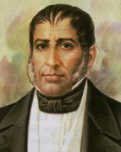
On Sept. 12, 1844 the military revolts, and Gen. Jose Joaquin (José Joaquín) Antonio de Herrera (1792-1854) becomes pres. #14 of Mexico (until Sept. 21, followed by Dec. 6, 1844-Dec. 30, 1845, and June 3, 1848-Jan. 15, 1851), proving a political moderate.
In Sept. 1846 the War of the Matiners (Madrugadores) (Sp. "early risers") (Second Carlist War) sees 10K Carlists led by Gen. Ramon Cabrera stage harassing actions against 50K Liberals, usually in the early houts in support of the proposed marriage between pretender Don Carlos and Isabella II, which never takes place; in 1848 Cabrera returns from exile in England; in June 1849 after the rebels in Catalonia are put down by Capt.-Gen. Fernando de Cordova, amnesty is granted after a total of 3K-10K casualties.
On Apr. 4, 1847 the Gran Teatre del Liceu (AKA Liceo) in Barcelona opens, becoming the #1 opera house in Spain.
In 1847 Basque mercenary and heartbreak hero Don Jose Oyanguren vanquishes fierce Datu Bago and annexes Davao Gulf (Bagobo "Daba-Daba" = fire) on Mindanao for Christian Spain.
On Mar. 16, 1851 the Spanish govt. signs a Spanish-Vatican Concordat

On Nov. 11, 1851 after four other supreme dirs. come and go, Jose Laureano Pineda Ugarte (1802-53) becomes supreme dir. of Nicaragua, and sticks around until Apr. 1853, moving the capital to Managua to end the rivalry between Leon and Granada.

In 1851 a civil war led by liberal mine owner Pedro Felix Vicuna (Félix Vicuña Vicuña) Aguirre (1805-74) erupts in the N mining districts of Chile to protest British control; the conservatives respond by putting ultra-conservative Manuel Montt Torres (1809-80) in power as pres. (until 1861), and he shows his stripes by nullifying a treaty promising amnesty next year.
In 1851 the Colorados conclude an alliance with Brazil and the State of Entre Rios, which had revolted against the Argentine Confederation, then defeat Manuel Oribe and the Blancos, bringing Jose Fructuoso Rivera and the Colorados to power in Uruguay, with the Blancos continuing to challenge them for the rest of the cent., but never gaining control for long.
In 1851 Honduras and Guatemala go to war.
In 1851 Spain attacks Sulu (which still runs a large slave market), destroys the capital at Jolo, and forces the sultan to make concessions and acknowledge Spanish suzerainty.
In 1852 a constitutional reform in Spain virtually eliminates the powers of the Cortes.
The White Is Ostensibly Right Manifesto ends up being stopped by fear of another U.S. slave state? On Oct. 18, 1854 at the request of secy. of state William Learned Marcy, the U.S. ministers to Great Britain (James Buchanan), France (John Young Mason), and Spain (Pierre Soule) (Pierre Soulé) draft the Ostend Manifesto at Ostend, Belgium, calling for the U.S. to buy Cuba from Spain, and, if Spain refuses to sell, "then, by every law, human and divine, we shall be justified in wresting it from Spain"; after an outcry by anti-slavery forces, Marcy repudiates the doctrine, causing Soule (who had originally begun negotiations with Spain to purchase it without authorization, causing the Ostend Conference to be ordered) to resign.

In 1854 the Self-Acting Mule Rev. begins in Spain, started by a gen. strike of textile workers over the introduction of the self-acting mule (spinning machine) and the loss of wheat supplies from Russia caused by the Crimean War, which causes a famine in Galicia; the govt. in Madrid is overthrown by Irish-born Gen. Leopoldo O'Donnell, 1st Conde de Lucena (1809-67); on July 14 after Isabella II threatens to abdicate, Gen. Baldomero Epartero resigns in favor of Gen. Leopoldo O'Donnell, who becomes Spanish PM #44, forming the Union Liberal Party which combines Carlist, moderate, and progressive factions, going on to promote laissez-faire policies and confiscate Church land, reestablishing the 1845 constitution; too bad, a reaction begins, and on Oct. 12 O'Donnell is dismissed, followed by two years of violence. On June 30, 1858 after working to improve Spain's railways, increase industry in Navarre and Catalonia, and promote a new aggressive imperial policy in Africa, Gen. Leopoldo O'Donnell becomes PM #48 of Spain (until July 10, 1866).
On Dec. 10, 1859 Ateneo de Manila U. in the Philippines is founded by the Jesuits, and opened to all ethnic groups, breeding an intellectual elite known as the ilustrados who go on to promote Philippine nationalism.

On Oct. 23, 1859 the Argentine Confederation under Justo Jose Urquiza defeats Buenos Aires under gen. Bartolome (Bartolomé) Mitre Martinez (1821-1906) at the Battle of Cepeda, forcing it to join.

In 1859 Guayaquil-born European-educated politician Gabriel Garcia Moreno (1821-75) overthrows the govt. of Francisco Robles in Ecuador and seizes power after deciding that the Roman Catholic religion is the answer to class and race conflict, going on to be officially elected pres. in 1861, then rule as a dictator behind two puppet presidents until 1869, and finally rule openly until death, while centralizing the govt., reducing corruption, strengthening the economy, and giving policy planning over to the Roman Catholic clergy - all my friends say I partied too much until you walked in?
On Jan. 1, 1860 after landing its first column last Dec. 17, the Battle of Tetouan (Tétouan) (Tetuán) in Morocco sees a Spanish expeditionary force of 41 ships and 36K men led by Gen. Leopoldo O'Donnell, the 1st Conde de Reus et al. attack the Port of Guad al Gelu, stopping the Moroccan offensive on Jan. 31 and taking Tetouan on Feb. 6, causing O'Donnell to be created the 1st Duke of Tetuan.

In 1860 Spanish pretender Don Carlos Luis (1818-61) and his brother Ferdinand land in Spain in an attempt to start an uprising, but it fizzles and they are captured, and Don Carlos renounces his claims; when he dies next year his youngest brother Don John (Juan) inherits his claims.
In 1865 the Dominican Repub., occupied by Spain since 1858 becomes independent again, and former pres. Buenaventura Baez returns from Europe to begin a 3rd term; too bad, the U.S. Senate refuses to ratify his proposed treaty of annexation, leaving him swinging in the wind, and he is toppled by a second coup next year, and bounces back for two more terms before running out of bounce.







She's got a ticket to ride, but she don't care? On June 22, 1868 (a.m.) the Mutiny of San Gil in Spain sees artillery sgts. led by Capt. Baltasar Hidalgo shoot their officers, causing Gen. Leopoldo O'Donnell y Jorris, 1st Duke of Tetuan, 1st Count of Lucena (1809-67) to order the execution of 60 sgts., leading on Sept. 19 to the Glorious (Liberal) Rev. of 1868 (ends Sept. 28), led by adm. Juan Bautista Topete y Carballo (1821-85), marshal Francisco Serrano y Dominguez, Count of San Antonio (1810-85), and Gen. Juan Prim y Prats (1814-70); on Sept. 28 the royalists under Gen. Manuel Pavia are defeated by the rebels under Gen. Serrano at the Second Battle of Alcolea (first in 1808); on Sept. 30 Isabella II (1830-1904), who succeeded her father Ferdinand VII in 1833 is forced to leave Spain for France and is declared deposed, and in 1870 she abdicates in favor of her son Alfonso XII (1857-85) - who's alone at the end of the evening?


On Oct. 10, 1868 after making his Grito (Cry) of Yara, sugar mill owner Carlos Manuel de Cespedes (Céspedes) (1819-74) stages a failed uprising in Cuba with a 147-man army after freeing and arming his slaves; Cuban atty. Calixto Garcia y Iniguez (Íñiguez) (1839-98) becomes brig. gen. and CIC of the Cuban revolt against Spain, starting the Ten Years' (Great) War (of 1868) (ends 1878), led by Cuban-born planters and wealthy natives.
In 1868 Spanish pretender Don Juan, brother of Don Carlos Luis resigns his claims to his son Don Carlos Maria de los Dolores de Borbon (1848-1909). John Stuart Mill loses his reelection and returns to Avignon, France until his 1873 death.
In June 1870 the First Spanish Internat. Congress in Barcelona, attended by delegates from 150 workers' assocs. rejects the Spanish repub. govt.


On Nov. 16, 1870 after the Spanish Cortes elects him, Amadeo of Savoy, 2nd son of Victor Emmanuel II of Italy is proclaimed king Amadeo (Amedeo) I (1845-90) of Spain (until Feb. 11, 1873); meanwhile pretender Don Carlos Maria de los Dolores, Duke of Madrid (1848-1909) asserts his claims as Don Carlos VII, while his Carlists wait in the wings.

On Jan. 20, 1872 a mutiny of the garrison at Cavite Arsenal in the Philippines is supressed, and Father Jose Apolonio Burgos (b. 1837), leader of the secularizing priests is executed as a scapegoat on Feb. 17, along with other martyrs, causing a number of ilustrados (native intellectuals) to flee to Spain, later founding the Propaganda Movement, seeking rep. in the Spanish Cortes and awareness of Tagalog culture.
On Apr. 21, 1872 the Third Carlist War (ends Feb. 27, 1876) begins when the Carlists begin revolting against the govt. of Amadeo I and his Liberal supporters; the Hidalgo Affair begins when gen. J. Hidalgo, who ordered the sgts. to fire on the officers at San Gil 1868 is made capt.-gen. of the Basque Province, and his artillery officers all go on a sick strike, causing Amadeo I to sign decrees firing them and promoting sgts. in their places, leading to his abdication next Feb.

On Feb. 10, 1873 after the Hidalgo Affair causes a radical rev., king (since Nov. 16, 1870) Amadeo I abdicates, and on Feb. 11 the First Spanish Repub. (ends Dec. 29, 1874) is proclaimed by a radical majority in the Cortes, who elect Estanislao Figueras i de Moragas (1819-82) as pres. #1 (until June 11), and on May 10 a new constituent Cortes is elected to write a federal constitution; the Carlists capture several provinces, and Don Carlos attempts an invasion, but fails and cries no harm no foul, still waiting in the wings; meanwhile the repub. goes through five presidentes in 23 mo., and after they attempt to create a 1-party repub. the radicals are kicked out of the Cortes by the repubs.
On Oct. 30, 1873 the Virginius Affair begins when the Cuban blockade runner ship Virginius, captained by Joseph Fry is captured by the Cuban naval ship Tornado, who puts the crew on trial in Santiago de Cuba as pirates, getting them convicted and sentenced to death, causing protests, after which British sloop HMS Niobe under Sir Lambton Loraine, 11th Baronet (1818-1917), who arrives and stops the executions at 53; the affair ends on Feb. 7, 1875 after Spanish pres. Francisco Serrano pays $80K in reparations; meanwhile the Spanish ironclad Arapiles anchors in New York Harbor for repairs, freaking out U.S. naval authorities with the realization that they have nothing to defeat it, causing five new ironclads to be built, which are used in the 1898 Spanish-Am. War.



On Jan. 3, 1874 after a year of anarchy, Madrid Capt.-gen. Manuel Pavia y Rodriguez (Pavía y Rodríguez) de Alburquerque (1828-95) stages a coup in Spain and calls on all parties except the federalists and Carlists to form a new nat. govt., causing Emilio Castelar y Ripoll (1832-99), pres. #4 of the new First Spanish Repub. (since last Sept. 7) to be replaced by marshal Francisco Serrano y Dominguez, Duke de la Torre, Count of San Antonio (1810-85) (who had been conspiring to overthrow the repub. until then) becomes pres. #5 (last) of the 1st Spanish Repub. (until Dec. 29), working to gain Euro and U.S. recognition but proving unable to save Spain from a restoration of the Bourbon monarchy. On Nov. 28 ex-Queen Isabella II's I-can't-wait-forever time-won't-let-me 18-y.-o. son Alfonso XII (1857-85) declares himself of age, and comes out in support of a constitutional monarchy, gaining support from moderates and liberal unionists; on Dec. 29 a group of Spanish gens. rallies to him, ending the First Spanish Repub. of 1873, and he is crowned king of Spain (until Nov. 25, 1885); ousted pres. Marshal Francisco Serrano plays footsie with Alfonso XII and dies in Madrid on Nov. 26, 1885, 24 hours after him.

In Mar. 1875 Catalonian Gen. Ramon Cabera y Grino (Ramón Cabrera y Griñó) (1806-77), former hero of the First Carlist War of 1833-9, who ended up in a long exile in England suddenly flops and calls on pretender Don Carlos and his adherents to submit to the monarchy of Alfonso XII, who gives him the rank of capt.-gen. and the title of Count of Morella, causing the Carlists to call him a traitor and demote him but lose their mojo; he croaks in London on May 24, 1877.
On Feb. 21, 1876 the Spanish-Sulu War (ends July 22, 1878) begins when the Spanish attempt to occupy Jolo to curb slave trading with a force of 9K soldiers, 11 transports, 11 gunboats, and 11 steamboats under Adm. Jose Malcampo.

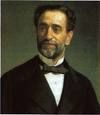
Doctor my ojos? In Feb. 1876 the Carlists in Spain are defeated and Don Carlos flees, moving about Europe for 33 years trying to drum up support for his lost cause for himself and his son Lame, er, Jaime; Pope Pius IX abandons his recognition of Carlos in favor of Alfonso XII after the latter closes Protestant schools and churches, abolishes civil marriages, and increases the govt.'s Roman Catholic Church budget, promulgating the Spanish Constitution of 1876 on June 30, which establishes a new Cortes consisting of a lower house elected by electoral communities, and an upper house (senate) representing the crown, nobles and Church (ends 1923), with a ministry selected by the king, which ends up alternating between the Conservatives, led by Antonio Canovas (Cánovas) del Castillo (1828-97), and the Liberals, led by Praxedes (Práxedes) Mariano Mateo Sagasta y Escolar (1825-1903).
On July 22, 1878 the Spanish-Sulu War (begun 1876) ends with a V for Spain, which establishes suzerainty but never manages admin. control; Sulu's possessions in North Borneo are leased to Britain; Spanish Col. Juan Arolas coins the term "Ajuramentado".
In 1878 rebel leader Calixto Garcia Iniguez is released, returns to Cuba and resumes the Ten Years' War, then is captured again and taken back to Spain (until 1895), ending the Ten Years' War (begun 1868).

In 1881 after decades of enjoying industrial superiority while failing to get the rest of Spain to lead them, Valenti (Valentí) Almirall y Llozer (1841-1904) et al. begin agitating for a separate Catalan state in Spain, organizing Catalan congresses and founding the Catalan Center (political party) in Madrid next year.
In 1884 Spain creates a protectorate in the coastal areas of Morocco.


On Nov. 25, 1885 Spanish king (since Dec. 29, 1874) Alfonso XII (b. 1857) dies, and his wife Queen Maria Christina Henriette Desideria Felicitas Raineria of Austria (1858-1929) becomes regent (until 1902) for his posth. son (born next May 17) Alfonso XIII (the African) (1886-1941), not taking an active part; before he dies the Catalan Memorial (Memorial de Greuges) is sent to Alfonso XII by the Catalan Center, begging for a separate you know what; too bad he doesn't last the year? On May 17, 1902 16-y.-o. Alfonxo XIII (b. 1886) assumes rule (until Apr. 14, 1931)

In 1885 the Treaty of Berlin is signed, becoming the first to use the term "spheres of influence", meaning white Euro powers claiming to own black African areas (and their people?); Germany annexes Tanganyika and lets Britain have Zanzibar in exchange for Heligoland in the North Sea, and asserts rights to German East Africa, German Southwest Africa, Cameroon, and Togoland, sending explorer Gustav Nachtigal (b. 1834) as special commissioner to annex them (he dies on the return voyage on Apr. 20); Germany relinquishes its claims to Madagascar in favor of France, and Britain pledges not to interfere, dooming its independence, freaking Queen Ranavalona III out, and causing her to send trinket-style gifts (silk clothes, ivory pin, woven basket) to U.S. Pres. Grover Cleveland next year in vain hopes of help (send the Marines for more?); Britain claims a protectorate in Nigeria and Bechuanaland S of the Molopo River, also Zanzibar and British East Africa; after they draw their lines in the sand and start playing step over the line, the West African Wars begin (end 1903); Belgium declares the Congo Free State (Belgian Congo), inhabited by Negrito peoples (Pygmies) open to trade and settlement, but personally owned by Belgian king (since 1865) Leopold II (1835-1909), who benefits from treaties made with native chiefs by U.S. correspondent Henry Morton Stanley when he navigated the Congo River in 1877, and now begins to rule it with an iron hand, murdering and multilating 10M?; borders of the Portuguese colony of Angola are fixed, permitting development of the interior; Spain receives Rio Muni on the W coast of Africa, creating Spanish Guinea (modern Equatorial Guinea); the peace terms of England with the Boers are modified to delete all references to British suzerainty.
In 1886 the Jesuit U. of Deusto in Bilbao, Spain opens; in 1916 it founds the first business college in Spain.
In 1892 after Pope Pius IX proclaimed the dogma of the Immaculate Conception of the Virgin Mary on Dec. 8, 1854, Maria Cristina of Austria (Maria Christina Désirée Henriette Felicitas Rainiera von Habsburg-Lothringen, und Österreich), Queen Regent of Spain proclaims Mary of the Immaculate Conception patroness of the entire Spanish infantry.









On Feb. 15, 1898 the U.S. battleship USS Maine mysteriously blows up in Havana Harbor, killing 260+ officers and crew; the mast is later placed in Arlington Cemetery; after William Randolph Hearst's New York Journal and Joseph Pulitzer's New York World vie to sensationalize the event and inflame public opinion, and Pres. Fuzzy Roosevelt opines about saving the poor Cuban people from Spanish oppression, war becomes inevitable, and McKinley is powerless to stop it; Hearst telegraphs artist Frederic Remington in Havana in Mar.: "You furnish the pictures and I'll furnish the war"; the slogan "Remember the Maine and to Hell with Spain" becomes popular; on Apr. 21 the Spanish-Am. War ("the Journalist's War") begins (ends Aug. 13), turning the U.S. into an imperialist power; too bad, it is later determined that the Maine blew up because of an onboard accident; during the war U.S. soldiers introduce the Water Cure (Torture). On Mar. 19-May 24 the battleship USS Oregon races to join the naval squadron of Commodore Winfield Scott Schley (1839-1911) (flagship Brooklyn) at Key West; it arrives after a 68-day 13K-mi. voyage just in time to help destroy the Spanish fleet outside Santiago on July 3, where U.S. Navy officer Richmond Pearson Hobson (1870-1937) becomes a hero for trying to trap the Spanish fleet by sinking a collier, then is mobbed and kissed by herds of hysterical women in the U.S., and goes on to become a U.S. rep. from Ala. in 1907-15 and introduce the first proposed prohibition amendment to the You Ass Consti Tush; the voyage is later used to drum up support for a new isthmian (Panama) canal. On Apr. 24 after Pres. McKinley flip-flops from trying to head off war with Spain to supporting it (causing House Speaker Thomas Brackett Reed to split ranks with him, then resign from Congress in 1900), Spain declares war on the U.S. after rejecting an ultimatum to withdraw from Cuba, causing the U.S. to send 40K troops to Yellow Fever Land. On May 1 after U.S. Navy asst. secy. Theodore Roosevelt orders him and his Pacific Fleet to take up position in the Philippines without direct authorization of his superiors, U.S. Commodore George Dewey (1837-1917) steams safely past the supposed fortress of 1 mi. x 4 mi. Corregidor Island in Manila Bay (which separates the channel into two, Boca Chica and Boca Grande), then gives the command "You may fire when you are ready, Gridley", destroying the Spanish fleet in the Battle of Manila Bay, blockading the city and waiting for land forces to arrive, which leave San Francisco, Calif. on May 16, and arrive in Cavite on June 30, July 17, and July 30 (12K total); after the city pop. swells from 10K to 70K, threatening starvation, on Aug. 13 Spanish gov.-gen. Basilio Augustin surrenders after a mock battle, making Dewey a hero and keeping the Philippines from total rebel control; after news of the V reaches them, Schlitz Brewing Co. in Milwaukee, Wisc. sends Dewey thousands of bottles of Schlitz beer to celebrate, causing Dewey to order another trainload (67 cars); by the end of the war they ship 219 carloads (700K barrels), pissing-off the Nat. Women's Christian Temperance Union (WCTU). On May 11 the torpedo boat USS Winslow attacks Cardenas Harbor, and is disabled by Spanish gunboats, resulting in the death of black cabin cook Elijah B. Tunnell, who becomes the first U.S. casualty of the Spanish-Am. War, and ensign Worth Bagley (b. 1874), who becomes the first and only U.S. naval officer to die in the war, plus three others. On May 19 Gen. Emilio Aguinaldo returns from exile to Manila, and reconstitutes the Philippine Rev. Army; on May 28 (10:00 a.m.) the 5-hour Battle of Alapan in Cavite Province is a decisive Filipino V for 18K Philippine rev. troops over 3.1K Spanish troops, after which Aguinaldo unfurls the Philippine Flag and declares Philippine independence from Spain; May 28 becomes Philippine Flag Day, and Cavite holds an annual Kalayaan Festivel; on July 1 Spanish forces surrender to the Filipino rebels; Apolinario Mabini y Maranan (1864-1903) drafts a nationalist platform guaranteeing the property rights of the ilustrados (intellectuals), weakening Aguinaldo's position with the rank and file. On June 1 the U.S. fleet under Adm. William Thomas Sampson (1840-1902) begins blockading Santiago harbor in Cuba; on July 3 the Spanish fleet under Adm. Pascual Cervera y Topete (1839-1909) attempts to break out, and is destroyed in a 5-hour battle.


On June 15, 1898 the Am. Anti-Imperialist League is formed in New England (until 1921) by Mark Twain (1835-1910), Andrew Carnegie (1835-1919), Grover Cleveland, Jane Addams, Ambrose Bierce (1842-1914), John Dewey (1859-1952), Charles Francis Adams Jr., Samuel Gompers, William James (1842-1910), liberal journalist Oswald Garrison Villard (1872-1949) (son of New York Evening Post owner Henry Villard and grandson of William Lloyd Garrison) et al. to fight against U.S. annexation of the "insular areas" (the Philippines), with former U.S. treasury secy. (1869-73) George Sewall Boutwell (1818-1905) as pres. #1 (until 1905); too bad, the founders are mainly for the gold standard and free trade, and in 1900 the league backs anti-imperialist but anti-gold-standard William Jennings Bryan for pres., causing Villard to split and form the short-lived Nat. Party; after endorsing U.S. entry into WWI, it disbands in 1921.



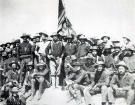

On June 20, 1898 cruiser USS Charleston captures the island of Guam from the Spanish. Caney or can't they? Only their what knows for sure? On July 1 the Battle of El Caney in Cuba sees 500 Spanish solders under Gen. Joaquin Vara del Rey hold off 8K U.S. soldiers for 12 hours, preventing them from taking San Juan Hill while killing 80 and wounding 350 Yankees and taking only 150 casualties of their own, proving that the Spanish coulda been a contender if they had better generals?; the heroics of Calixto Garcia Iniguez cause him to be named Cuban rep. to the U.S. commission on Cuba at the end of the war, although he is denied entrance to Santiago de Cuba after the Spanish surrender. On July 1-2 the Battle of San Juan Hill during the naval Battle of Santiago helps capture the port of Santiago, and gives Col. Theodore Roosevelt (1858-1919) and his Rough Riders (1st U.S. Volunteer Cavalry) (after he resigns as asst. secy. of the Navy this year to organize it) a claim to fame, even though they really go up Kettle Hill because San Juan Hill is too well defended, and fight dismounted in Cuba due to logistical problems; Teddy's fame is mainly the work of Am. war correspondent Richard Harding Davis (1864-1916); since many cowboys from N.D. are in the unit, N.D. becomes known as the Roughrider State; Teddy's superior officer and Rough Riders organizer is brig. gen. Dr. Leonard Wood (1860-1927), personal physician to presidents Cleveland and McKinley, after whom a military base in Mo. is later named; after being mustered out in the summer, Roosevelt is elected gov. of New York in Nov. by a plurality of 18,079 votes. On July 1 the Siege of Baler (last action of the Spanish-Am. War) begins (ends June 2, 1899), after a small Spanish garrison of 50 soldiers begins holding out against 800 Philippine insurgents in a church despite lack of provisions, becoming known as "the last Spanish troops in the Philippines".
On Jan. 21, 1899 the First Philippine Repub. is declared under Pres. Emilio Aguinaldo, with its own Malolos Constitution, drawn up by the ilustrados on the U.S. model, incl. separation of powers and separation of church and state; the U.S. refuses to recognize it, and annexation forces in Congress win by a narrow margin after a fierce debate; on Feb. 4 U.S. sentry William Grayson kills a Filipino soldier, starting the Philippine-Am. War (ends July 2, 1902), in which atrocities are committed by both sides; in Mar. the U.S. sends the 5-man First Philippine (Schurman) Commission, headed by Jacob Gould Schurman (1854-1942), promising self-govt. under U.S. authority; at the same time the Moro Rebellion by separatist Muslims in S Philippines begins (end 1913).
On Dec. 14, 1900 a Franco-Italian Agreement gives France a free hand in Spanish Morocco in return for a free hand for Italy in Tripoli.

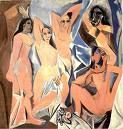
In 1901 Malaga, Spain-born artist Pablo Picasso (1881-1973) outgrows his naturalistic period and enters his Blue Period, followed in 1904 by his Rose Period, followed in 1907 by his African Period, incl. Les Demoiselles d'Avignon (1907), followed in 1909 by this Cubist Period, followed in 1912 by his Crystal (Synthetic Cubist) Period (ends 1919); becoming the rival of French artist Henri Matisse as the leaders of modern art; in the early 1920s he goes Neoclassical, switching in the mid-1920s to Surrealism.
On May 17, 1902 having attained the age of majority, 16-y.-o. Spanish king (since 1886) Alfonso XIII (1886-1941) assumes rule (until Apr. 14, 1931).
On May 20, 1902 Cuba, administered by the U.S. since 1898 gains full independence from Spain.
On Nov. 8, 1902 Spain rejects a French offer of a substantial part of N Morocco as a sphere of influence for fear of antagonizing Britain.

On Apr. 8, 1904 British foreign secy. (1900-5) Sir Henry Charles Keith Petty-Fitzmaurice, 5th Marquess of Lansdowne (1845-1927), having approached France to end past colonial differences last July (and speeded up by the Russo-Japanese War) signs the Anglo-French Entente Cordial, giving Britain a free hand in Egypt while receiving British guarantees regarding the Egyptian debt and the 1888 treaty providing for free navigation of the Suez Canal, and France a free hand in Morocco, which has given them mucho trouble in the past, and is divided into zones of French and Spanish influence in anticipation of a future partition; France gives up ancient rights on the shores of Newfoundland, while retaining fishing rights, and in return receives territory near French Gambia and E of the Niger River; spheres of influence in Siam are defined, and disputes over Madagascar and the New Hebrides are settled - all tidy now?



On Mar. 31, 1905 the First Moroccan (Tangier) Crisis (ends May 1906) begins after French foreign minister (since 1898) Theophile Delcasse (Théophile Delcassé) (1852-1923) excludes Germany from the Moroccan negotiations, causing Count Bernhard von Bulow and foreign advisor (1890-1906) Friedrich August von Holstein (1837-1909) to decide to make mineral-rich Morocco into a test of the Anglo-French Entente, and German Kaiser Wilhelm II makes his inflammatory Tangier Speech concerning his rivalry with France over Morocco, leading to the fall of Delcasse after the French cabinet rejects his hasty proposal to form an Anglo-French front against Germany without Russia's backing and with only hazy correspondence with the Brits on May 17 and May 25; on Apr. 6 von Bulow falls ill in the Reichstag, causing Lord Fitzmaurice of Britain to compare him to Lord Chatham (a compliment); on June 5 Opportunist Maurice Rouvier (1842-1911) disses Delcasse for imprudence over Morocco, and after a heated discussion Delcasse resigns, and Rouvier succeeds him, attempting to avoid a rupture with Germany; on June 6 (no coincidence) Bulow recovers, and is raised to prince (to become equal to Bismarck) on the occasion of the marriage of the crown prince, while the world is rocked by Germany's humiliation of the French; on July 8 after the U.S. agrees to back them, Rouvier meets with Germany, securing an agreement accepting the internat. conference proposed by the sultan of Morocco on the assurance that Germany will recognize the special nature of the interest of France in maintaining order on the frontier of its Algerian empire; after lengthy discussions a new convention results on Sept. 28 which contains the program of the proposed conference, and in Dec. Rouvier makes a statement of the whole proceedings in the chamber, receiving the assent of all parties, setting a new conference for next Jan., giving the French some time to get their soggy ducks in a row.
On Jan. 16-Apr. 7, 1906 after German chancellor Bernhard von Bulow ignores the advice of foreign advisor Friedrich von Holstein to break the French-British entente for fear of war with Britain, causing von Holstein to resign, leaving Germany isolated, the secret Algeciras Conference on Morocco results in the Act of Algeciras, reaffirming the independence and integrity of Morocco while internationalizing it economically, giving France and Spain police control of it while limiting France's privileges; British Liberal PM Sir Henry Campbell-Bannerman authorizes staff talks (without commitments) with France, worsening relations with Germany, which is sided with only by Austria.
On May 16, 1907 the Pact of Cartagena between Britain, France,, and Spain maintains the status quo in the Mediterranean and the part of the Atlantic that touches Europe and Africa, and is aimed at German designs in the Balearic and Canary Islands.

On July 11, 1909 Spain decides to send troops to Morocco, announcing a gen. conscription, resulting in Tragic Week (July 25-Aug. 2) as the spontaneous protests over the inequalities of military service lead to riots and strikes all over Catalonia esp. Barcelona; well-known anticlerical anarchist Francisco Ferrer (y) Guardia (Francesc Ferrer i Guardia) (b. 1859), who set up a school in Barcelona to propagate his views and was imprisoned in 1906-7 then released on charges of plotting to assassinate Alfonso XIII and Queen Victoria is again arrested on trumped-up charges of planning a revolt and executed by firing squad on Oct. 13, causing internat. outrage (3 years later he is exonerated and his property returned to his heirs); on Oct. 7 Spanish Gen. D'Amade is placed on reserve for criticizing Spanish encroachment on French territory in Morocco; PM Maura is ousted, and the Liberal Party is invited by the king to form a govt.

On Feb. 9, 1910 Liberal Party head Jose Canalejas y Mendez (1854-1912) becomes PM of Spain (until Nov. 12, 1912), going on to work to turn Spain into a true democracy, curbing the power of independent political bosses, weakening the excess of the Roman Catholic clergy, and wooing the working class.
On July 1, 1911 the Second Moroccan (Agadir) Crisis between France and Germany begins when the German gunboat Panther arrives in Agadir (Berber "fortified granary") (120 mi. SW of Marrakech) and issues a dispatch claiming that German firms in the country requested protection, then starts a press campaign to grant Germany formal concessions there; David Lloyd George delivers a speech warning Germany that Britain now supports France, threatening hostilities, causing Germany to back down to avert a likely war; on Nov. 4 a convention is signed granting Germany territorial rights in the Congo while keeping Morocco in French hands; meanwhile on Aug. 9 German Social Dem. leader August Bebel tells the Reichstag that a European war will lead to revolution, causing laughter, with one MP shouting "After every war things are better" - Europe has Bette Davis eyes for war?

On Mar. 30, 1912 Morocco sultan (since 1908) Moulay Abd al-Hafid signs the Treaty of Fez, making Morocco a French protectorate, ending the Agadir Crisis of July 1, 1911; Spain keeps its coastal protectorate, and assumes protection over the N and S Saharan zones; Germany receives territories in the Middle Congo, becoming known as Neukameron (which is captured by the Allies in WWI), giving them in return a small area SE of Fort Lamy in modern-day Chad; too bad, the treaty sparks the Fez Riots (Mutiny) (Uprising) (Bloody Days) (Triti), causing Abd al-Hafid to flee to Rabat and abdicate in favor of his son Moulay Youssef ben Hassan (1881-1927), who becomes sultan of Morocco (until Nov. 17, 1927); too bad, on Apr. 17 (a.m.) the 5K Moroccan askars (infantrymen) in Fez mutiny against the remaining 1.5K French troops, spilling into the Euro and Jewish quarters, surrendering on Apr. 19 after killing 66 Euros, 42 Jews, and 600 Moroccans.
On Nov. 12, 1912 Spanish PM (since Feb. 9, 1910) Jose Canalejas (b. 1854) is assassinated by anarchist Manuel Pardinas while window-shopping a bookstore in Madrid, depriving Alfonso XIII of his top statesman, and starting the slide to the Spanish Civil War of the 1930s?

On Oct. 27, 1913 A Coruna, Galicia-born Eduardo Dato e Iradier (1856-1921) becomes PM of Spain (until Dec. 9, 1915, then June 11, 1917-Nov. 3, 1917, then Apr. 28, 1920-Mar. 8, 1921), serving as pres. of the Spanish Congress of Deputiex 4x; too bad, he becomes a symbol of the establishment, making him a target for anarchists.
On Oct. 18, 1919 Madrid, Spain opens a subway system.
On Jan. 28, 1920 El Tercio de Extranjeros (Sp. "Regiment of Foreigners"), later the Spanish Legion is established by decree of King Alfonso XIII of Spain.
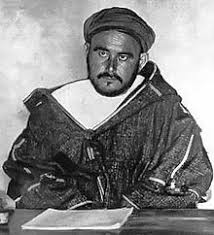
In 1920 after tens of thousands of French colonists emigrate to Morocco, and begin buying agricultural land and modernizing mines and harbors, stirring nationalist resentment, the Second Moroccan (Rif) War (ends 1927) begins between Spain (later France) and the Berbers of the Rif Mts. in N Morocco led by Abd el-Krim (Muhammad Ibn Abd al-Karim al-Khattabi) (1882-1963), who wins the early battles using guerrilla tactics and captured weapons, but is eventually overwhelmed and surrenders in 1926 and is exiled; his guerrilla warfare tactics later influence Mao Tse-tung, Ho Chi Minh, and Che Guevara.

On Mar. 8, 1921 Spanish PM (since Apr. 28, 1920) Eduardo Dato e Iradier (b. 1856) is assassinated by three Catalan anarchists while leaving Parliament in Madrid, becoming the first Spanish PM assassination since Jose Canalejas in 1912.
On July 22-Aug. 9, 1921 in Morocco Gen. Fernandez Silvestre and 20K-23K Spaniards are disastrously defeated by 3K Riffians under Abd-el-Krim at the Battle (Disaster) of Annual; the Spanish lose 13K casualties vs. 800 Riffians, Silvestre commits suicide, and the Spanish ministry falls; a Spanish parliamentary commission submits a report on the disaster in 1922, recommending the execution of several generals and ministers, and is suppressed - I'll do anything, I'm your puppet?

On Sept. 12, 1923 the Spanish garrison in Barcelona, Spain mutinies, and a separatist movement breaks out; on Sept. 13 Catalonian Capt. gen. Miguel Primo de Rivera y Orbaneja (1870-1930) stages a military coup with the approval of the king, taking Barcelona, followed by Madrid on Sept. 15, then on Sept. 15 dissolving the Cortes (until 1931) and proclaiming martial law (until 1927), becoming the dictator of Spain, suspending civil liberties and causing the exile of writers Miguel de Unamuno (in 1924), Vicente Blasco-Ibanez (in voluntary exile in France since WWI) et al.; the Confederaciones Sindical Hidrografica, a public works program runs up a 1B peseta budget deficit by 1928.
On Dec. 18, 1923 the Tangier Protocol (Convention regarding the Organisation of the Statute of the Tangier Zone) is signed by Britain, France, and Spain, creating an internat. zone in the port of Tangier, Morocco that is permanently neutralized and demilitarized (ends 1956).
On Nov. 19-28, 1924 Alfonso XIII of Spain and Pres. Primo de Rivera visit Rome in return for a visit of the king and queen of Italy next June, and establish friendly relations with the Fascisti.
On June 22, 1925 France and Spain agree to join forces against Berber (Rif) leader Abd El-Krim (1882-1963) in Morocco, with Marshal Henri Philippe Petain as French CIC (ends 1926).
On Sept. 8, 1925 the Alhucemas (Al Hoceima) Landing in Alhucemas, Morocco by 13K Spanish army troops becomes the first amphibious landing using tanks and seaborne air support in history, defeating 9K Riffians led by Abd el-Krim, helping end the Second Moroccan Rif War (begun 1920).

On Jan. 28, 1930 after rapid inflation causes him to lose the support of the army, Spanish dictator (since Sept. 15, 1923) gen. Miguel Primo de Rivera (b. 1870) resigns, claiming bad health, then conveniently dies on Mar. 16 in Paris; on Jan. 30 Gen. Damaso Berenguer y Fuste (Dámaso Berenguer y Fusté) (1873-1953) takes power in Spain, becoming PM (until Feb 14, 1931) and attempting a policy of conciliation, granting amnesty, restoring rights, and removing censorship in Sept., earning his regime the nickname "dictablanda" (dictatorship lite); too bad, it only causes students and republicans to agitate more vociferously.


Spain becomes a happy family for awhile? On Feb. 8, 1931 Spanish king (since May 17, 1902) Alfonso XIII (1886-1941) announces a restoration of the constitution, and sets elections for Mar.; on Feb. 14 Gen. Damaso Berenguer resigns; on Apr. 12 municipal elections result in an overwhelming V for the Repubs.; Repub. leader Niceto Alcala (Alcalá) Zamora y Torres (1877-1949) calls for the king's abdication; on Apr. 14 Alfonso XIII leaves Spain without abdicating, saying he wants to wait for the expression of popular sentiment; on Apr. 14 the Second Spanish Repub. is proclaimed in Eibar, Barcelona, and San Sebastien with Zamora as provisional pres.-PM; on June 28 elections give the Repub.-Socialist coalition a huge majority in the new unicameral Cortes; on Nov. 12 the assembly declares the king guilty of high treason and forbids his return to Spain, confiscating his royal property; in Oct. Zamora resigns in protest against extreme anticlerical legislation; on Dec. 9 the 1931 Spanish Constitution is adopted, completely separating church and state and nationalizing church property (confiscating $500M worth by next year), as well as giving the govt. power to nationalize public utilities, socialize estates, and expropriate private property; Zamora is elected pres. #1 (until 1936), and Manuel Azana (Azaña) Diaz (1880-1940) becomes PM #55 (until Sept. 6, 1933); too bad that free spending causes deflation and economic depression? In Aug. anti-monarchist groups in Spain sign the Pact of San Sebastian demanding a republic and declaring their unity.

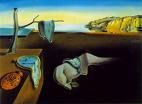
In Aug. 1931 Figueres, Catalonia, Spain-born surrealist artist Salvador Dali (Salvador Domingo Felipe Jacinto Dalí i Domènech, Marquis of Dalí de Púbol) (1904-89) paints The Persistence of Memory (AKA Melting Watches), putting him on the map as a leader of modern art.

On Aug. 10, 1932 after being demoted from head of the civil guard to head of customs, toothbrush mustachioed Gen. Jose Sanjurjo y Sacanell (1872-1936), a political opponent of Manuel Azana joins the Carlists in the rightist monarchist Sanjurjada Revolt in Spain, seizing Seville, but Repub. troops quickly suppress it after it fizzles in Madrid; Sacanell is captured and given a death sentence, commuted to life imprisonment, after which on Apr. 20, 1934 he is granted amnesty and goes into exile in Estoril, Portugal.
On Jan. 8, 1933 a radical (anarchist, syndicalist) uprising in Barcelona, Spain spreads to many other large cities incl. Bilbao, Madrid, Saragossa, and Seville before it is suppressed; on Dec. 2 there are more anarchist uprisings in Catalonia and Aragon - you are open and now you are closed? On Jan. 12 a peasant revolt in the Spanish village of Casas Viejas is brutally suppressed, stinking up the govt., and on Apr. 23 municipal elections show a distinct veering to the right.
In Jan. 1934 elections in Catalonia, Spain give a complete V to moderate leftist groups.

The original Rocky and Bullwinkle with Boris and Natasha? On July 12, 1934 White Rusian adventurer Boris Mikhailovich Skossyreff (1896-1944) declares himself sovereign prince Boris I of Andorra, and declares war on the bishop of Urgell, getting him arrested on July 20 by Spanish authorities and expelled; during the Spanish Civil War France stations troops in Andorra, and it remains neutral in WWII, becoming an important smuggling route between Vichy France and Spain.
On Oct. 7, 1934 ex-Spanish pres. Manuel Azana is arrested and imprisoned in Barcelona; next Apr. 6 he is acquitted. In Oct. a Spanish cabinet is formed which incl. rightists and monarchists, causing a gen. strike in C and N Spain by the Socialist trade union UGT in combo with the anarchists and Communists; Catalonia proclaims its independence, causing the govt. to react with an iron hand and crush them, killing thousands.
In Sept. 1935 the Workers' Party of Marxist Unification (Partido Obrero de Unificacion Marxista) (POUM) is founded in Spain by Andres Nin and Joaquin Maurin via a merger of the Trotskyists and the Workers-Peasants Bloc; English writer George Orwell serves with the party's militia; after reaching 30K members in 1936 it is dissolved in 1980.

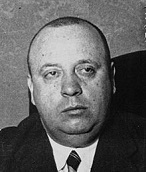


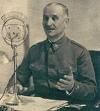






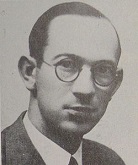
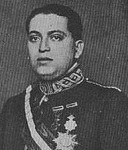


Spain turns into a chessboard with Hitler and Stalin making the moves, and Mussolini and Franco acting as pieces, while anti-fascists from all over the world try to get in the game? On Jan. 6, 1936 the Spanish Cortes is dissolved, and elections are scheduled for Feb.; meanwhile in Jan. Germany signs contracts to buy the output of Spanish mines for use in their military machine, and after the new Spanish govt. cancels them in Feb., pissed-off Hitler begins plotting with Gens. Jose Sanjurjo y Sacanell (1872-1936), Emilio Mola y Vidal (1887-1937), Gonzalo Queipo de Llano y Sierra (1875-1951), and Francisco Paulino Hermenegildo Teodulo (Teódulo) Franco y Bahamonde, Salgado y Pardo de Andrade (1892-1975) to overthrow them, meeting with them in Berlin in Mar., after which in Dec. Germany receives its first iron ore shipments from Spanish Morocco, followed by 1M tons of iron, tin, antimony, copper and ignite by the end of 1939, giving him the resources to take over Europe; meanwhile Britain refuses to help France fight Spain because of their longtime rivalry. On Jan. 11 the Socialist and Communist Parties of Spain sign an electoral pact; on Jan. 15 Manuel Azana organizes the Popular Front (Frente Popular) left-wing coalition before being appointed PM #63 of Spain by Pres. Niceto Alcala Zamora on Feb. 19 (until May 10). On Feb. 16 elections in Spain see the new Popular Front, consisting of leftists, incl. Communists, Socialists, Syndicalists, and Liberal Repubs. defeat the rightists, incl. Conservative Repubs., clericals, and monarchists; the winners vow to implement a massive social reform program, and the Cortes goes back to the days of 1931 with social legislation; meanwhile the forces of fascism wait in the wings - she'll have fun, fun, fun until her daddy takes the T-bird away? On Feb. 21 the Spanish Cortes grants amnesty to all Spaniards charged with insurrection; on Feb. 22 Gen. Francisco Franco is relieved of command and sent to the Canary Islands, and on Feb. 27 the offices of the Falange Espanola in Madrid are closed, causing Franco to meet with Gens. Emilio Mola, Juan Yague, and Jose Sanjurjo y Sacanell on Feb. 28 to discuss tactics; too bad, on Feb. 28 Mola is relieved of command and sent to Pamplona. On Mar. 14 the Falange Espanola is banned by the Popular Front govt. of Spain, and former pres. Jose Antonio Primo de Rivera is arrested and charged with trafficking illegal firearms, and sentenced on May 28 to 5 mo. in prison. On Apr. 4 Spanish PM Manuel Azana presents details of his reform legislation. On Apr. 7 Spanish Pres. Niceto Alcala Zamora is deposed. On Apr. 13 Spanish Gens. Emilio Mola and Gonzalo Queipo de Llano meet to discuss plans for a military coup; on Apr. 18 the Cortes makes it illegal for military officers to attend secret political meetings. On May 8 former PM #55 (1931-3) and #63 (1936) Manuel Azana (Azaña) Diaz (1880-1940) is elected pres. #2 (last) of the 2nd Spanish Repub., taking office on May 10 (until Mar. 3, 1939), offering the post of PM to Socialist minister of public works (since Dec. 16, 1931) Indalecio Prieto Tuero (1883-1962) (pres. of the Spanish Socialist Workers' Party (PSOE), who refuses, and is shot on May 31 at a Socialist rally in Ecija, after which he becomes minister of defense on May 17, 1937-Apr. 5, 1938. On May 20 the govt. of Spain orders the closing of Roman Catholic schools to protect them from arson attacks, and on June 2 the Cortes passes legislation protecting agricultural tenants from eviction. On June 9 over 1M workers in Spain go on strike. On July 6 nationalist leader Primo de Rivera (b. 1903), whose Spanish Falange won only 0.7% of the vote in the Feb. election, then grew to 40K members is captured by the republicans, then executed in Alicante on Nov. 20. On July 6 Spanish envoy Luis Antonio Bolin Bidwell (1897-1969) has Gen. Francisco Franco flown to from Croyden, Canary Islands to Tetuan, Spanish Morocco in a de Havilland Dragon Rapide piloted by Capt. Cecil Bebb, with his daughter Diana and one of her friends coming along posing as tourists. On July 12 Repub. Assault Guards (Guardia de Asalto) officer Jose Castillo (Jose del Castillo Sáez de Tejada) (b. 1901) is assassinated by four Falangist gunmen, causing monarchist leader Jose Calvo Sotelo (b. 1893) to be murdered in revenge on July 13 by police capt. Fernando Condes et al. in a police van while being brought into the station for interrogation. On July 12 after being asked to become the leader of the nationalist rebellion by envoy Luis Bolin, exiled Spanish Gen. Jose Sanjurjo y Sacanell (b. 1872) utters the soundbyte that he wishes "to make political parties disappear, to sweep from the national spheres every liberal structure and to destroy their system"; too bad, on July 20 he dies in a plane crash shortly after takeoff as he tries to fly back from Estoril, Portugal to Spain in a small biplane piloted by Juan Antonio Ansaldo, caused by overloading the plane with luggage esp. clothes, after allegedly uttering the immortal soundbyte: "I need to wear proper clothes as the new caudillo of Spain." On July 17/18, 1936 (Fri./Sat.) the Spanish Civil War (ends 1939), a rightist revolt against the leftist Popular Front govt. begins with the revolt of the Morocco garrison under gens. Emilio Mola and Francisco Franco, spreading to army towns in Spain, incl. Cadiz, Seville, Saragossa, and Burgos, and gaining the support of the bulk of the Spanish army; Madrid is initially held by the loyalists under Gen. Jose Miaja Menant (1878-1958) (until 1937), and Barcelona under ?; on July 23 the Junta de Defensa Nacional sets up in Burgos as the seat of Franco's nationalist govt. until the capture of Madrid in 1939; Franco's hometown of El Ferrol in Galicia, NW Spain is captured by his forces soon after the war begins for a moral V; on July 20 Gen. Jose Sanjurjo (b. 1872), the leader of the rightist revolt is killed in a plane crash in Estoril, Portugal when he overloads the plane with baggage, uttering the immortal soundbyte "I need to wear proper clothes as the new caudillo of Spain"; lucky Francisco Franco becomes the new leader of the rightists, quelling rumors that he you know what to get his promotion; the war splits Europe into fascist and anti-fascist camps, with Hitler and Mussolini aiding Franco, and Stalin aiding the loyalists, who hastily organize a militia composed of workers from labor groups; the war causes Chilean poet Pablo Neruda (1904-73) to turn to Communism, while the loyalists put out a call to the Communist Internat. for volunteers, recruiting from many countries, incl. the U.S.; Mussolini sends 50K-75K volunteers to Spain along with armaments, forcing him to devalue the lira on Oct. 5 and raise taxes; the Abraham Lincoln Battalion (Brigade) is formed by 3,015 volunteers from the U.S., 681 ending up KIA or dying of wounds or sickness by 1938. On July 28 the repub. loyalist govt. of Spain confiscates all Roman Catholic Church property, pissing-off Pope Pius XI and causing him to recognize Franco's Fascist govt. on Aug. 27, 1937. On Aug. 2 France calls on the world to not intervene in the Spanish Civil War. On Aug. 3 the U.S. State Dept. urges Americans to leave Spain because of the civil war. On Aug. 14-15 Gen. Franco wins the Battle of Badajoz, his first major V, and begins a major offensive through the Tagus River Valley towards Talaverna and Toledo, where a Nationalist garrison is being sieged by loyalists. On Sept. 4 the Nationalists occupy Irun in N Spain; meanwhile Spanish trade unionist politician Francisco Largo Caballero (1869-1946) forms a Popular Front govt. in Madrid, including Catalan and Basques in his cabinet. On Sept. 5 a loyalist militiaman at Cerro Muriano (N of Cordoba) is allegedly photographed by Hungarian-born Robert Capa (1913-54) at the moment of death, becoming world famous; too bad, in 2009 Jose Manuel Susperregui pub. "In Shadows of Photography", claiming that he faked it 35 mi. away. On Sept. 9 the 27-nation (incl. Germany and Italy) Non-Intervention Committee meets in London (until 1939) to discuss the prevention of foreign intervention in the Spanish Civil War, and draw up a plan; too bad, they can't stop it, as Germany and Italy end up sending 75K troops to help Franco. On Sept. 12 the nationalists capture San Sebastian (Donostia), Spain on the Bay of Biscay 12 mi. from the French border, gateway to the Basque region of Spain. On Sept. 28 the Spanish nationalists relieve a 10-week siege of Toledo and its Alcazar Fortress by the loyalists. On Oct. 1 Gen. Francisco Franco is proclaimed chief (caudillo) of the Spanish state and leader of the Nationalist movement, causing Germany and Italy to withdraw recognition of the loyalist Spanish govt. and recognize him on Nov. 18.


On Jan. 2, 1937 Britain and Italy sign an agreement for mutual respect of interests and rights in the Mediterranean and the maintenance of the independence and integrity of Spain; the actual situation isn't affected. On Feb. 3-8 the Spanish Nationalist rebels backed by Italy win the Battle of Malaga (Málaga) and occupy it. On Apr. 26 the German Luftwaffe and Italian air force bomb the sacred Spanish Basque city of Guernica at Gen. Franco's request, killing 400-1.6K civilians, pissing-off Pablo Picasso, who in June produces the painting Guernica, which immortalizes it in a mural for the Spanish exhibit at the 1939 Paris World Exhibition. On May 3-8 Barcelona May Days sees factions of the repub. side incl. the Communist Party of Spain and the Comintern-affiliated Unified Socialist Party of Catalonia fight each other in the streets, with Joseph Stalin attempting to engineer a coup against the anarchists and replace "Spanish Lenin" Largo Caballero with Social Dem. finance minister Juan Negrin, who promises to eliminate non-Comintern Marxists and end Catalan autonomy, causing Caballero's govt. to fall and its four anarchist ministers to exit; on May 17 Manuel Azana appoints Socialist finance minister (former physiology prof.) Juan Negrin y Lopez (Negrín y López) (1892-1956) as PM #67 of Spain (until Apr. 1, 1939) in an attempt to move toward the center as WWII looms, becoming the last Loyalist PM of Spain; too bad, Negrin is forced into Stalin's arms to fight the anarchist wing. On May 31 the Repub.-held seaport of Almeria, Spain in E Granada is severely bombarded by five German warships after Loyalist airplanes attack the German warship Deutschland and the Italian warship Barletta - a couple of centuries ago you could have substituted worship for warship? By mid-year Franco's forces have completely occupied NW Spain, and begun to force the loyalists into a triangle from Madrid to Valencia to Catalonia, with Barcelona and Madrid as the main military objectives. In Oct. Franco's nationalists take the port of Gijon (Gijón) in NW Spain, causing the Spanish royalist govt. to flee to Barcelona, while Franco begins a naval blockade. On Dec. 5 the loyalists in Spain begin a counteroffensive against Franco and his nationalists, and on Dec. 17 they capture the stronghold of Teruel.
On Jan. 12, 1938 Austria recognizes the Franco govt. in Spain. In July the loyalists attack Franco's army from the rear, beginning an offensive along the Ebro River in NE Spain, halting the progress of Franco's forces for the rest of the year, during which Mussolini withdraws some troops from Spain, leaving 40K; too bad, the loyalists are too weak to press their attack.

On Jan. 26, 1939 Gen. Franco with Italian aid and a nasty bombardment conquers Barcelona, causing the loyalist resistance to collapse, and 200K to cross the French frontier, where they are disarmed; within a couple of weeks Franco overruns all of Catalonia - thath bah-thah-lone-uh with ah bee? On Feb. 22 the Netherlands recognizes the Franco regime in Spain, followed by Great Britain and France on Feb. 27; on Feb. 28 Pres. Azana resigns in exile in Paris. On Feb. 27 British PM Neville Chamberlain recognizes the Spanish govt. of Gen. Franco. On Mar. 4 a Communist military coup in Madrid is led by Juan Negrin and Gen. Segismundo Casado Lopez (1893-1968); on Mar. 7-8 the Communists are defeated in Madrid by the Repub. First Corps under Gen. Luis Barcelo; causing suspected Stalin puppet PM Juan Negrin and his colleagues, to flee to France on Mar. 12. Here comes the Sun, or, You're the one that I want, ooh-hoo-hoo? On Mar. 27 after Nationalist Gen. Emilio Mola y Vidal (1887-1937) announces that Franco's forces are advancing on Madrid in four columns, and that a "fifth column" of sympathizers is waiting in the city (causing the phrase to catch on), loyalist-held Madrid surrenders, followed on Mar. 30 by Valencia, and the Spanish Civil War (begun July 17, 1936) ends after nearly 1M deaths, incl. 700K lost in battle, 30K executed or assassinated, and 15K killed in air raids; "Caudillo" (Spanish for Fuehrer) Franco becomes "supreme chief, responsible only before God and history", ruling with an iron hand, ending civil rights and eliminating all opposition while giving the Church and landed aristocrats all they want; on Apr. 1 the U.S. recognizes the govt. of Gen. Franco, who announces the end of the Spanish Civil War; Pope Pius XII congratulates and blesses Franco's Holy V; the Repub. fleet escapes from Cartagena and takes refuge in the Tunisian port of Bizerte, where the French intern it; the new regime's policy is "peace with honor", but the Communists begin a civil war in Madrid, which is quashed, followed by a failed attempt to compromise with Gen. Franco, who forces unconditional surrender; Franco's govt. sets up special tribunals that convict hundreds of loyalist leaders, thumbing their noses at Britain and France? On Apr. 7 Spain announces its adherence to the German-Italian-Japanese Anti-Comintern Pact. On May 20 a victory parade in Madrid signals the withdrawal of 10K German and 40K Italian troops from Spain. On Sept. 3 Spain proclaims neutrality in the Danzig and Poland conflict, and remains neutral throughout WWII.
On June 13, 1940 Gen. Franco announces a new Spanish policy of non-belligerency, implying all aid to Germany and Italy short of military involvement (until Oct. 1943).
On June 14, 1940 Spanish troops occupy Tangier, Morocco; Franco ignores calls by Spanish nationalists to annex it, and in Nov. after a diplomatic dispute with Britain over the former internat. zone (1923) guarantees British rights, promising not to fortify it; the occupation ends on Oct. 11, 1945.
On June 21, 1941 the Blue Div. of 45K Spanish troops (incl. volunteers and conscripts) begins operation on the Eastern Front (until Mar. 21, 1944) incl. 1K men of the Portuguese Legion under the Spanish flag, going on to be awarded a medal by Adolf Hitler for impeding the advance of the Red Army.
In July 1942 Gen. Franco reestablishes the 1876 Spanish Cortes (abolished by Franco during the Civil War) as the supreme organ of the state, composed of 438 members (Procuradores) in 10 groupings, most of whom are appointed to office: the nat. council (103 members), the reps of the authoritarian nat. syndicates (142 members), reps of the provincial capitals and muncipalities (102 members), 13 cabinet ministers, 12 univ. heads, 6 reps of various professions, and 50 appointees of the chief of state (him).
On Oct. 11, 1945 the Spanish-held city of Tangier is liberated and restored to pre-war status, with the internat. zone of 1923 restored (until 1956).
On Apr. 29, 1946 the U.N. Security Council votes 10-0-1 (U.S.S.R.) to condemn the Franco regime in Spain.
On Nov. 4, 1950 the U.N. Gen. Assembly votes 37-10-12 to reverse its 1946 diplomatic isolation of Spain.
On Sept. 26, 1953 Spain and the U.S. sign an agreement providing U.S. military and economic aid in exchange for U.S. use of Spanish air and naval bases; Greece signs a similar agreement with the U.S. on Oct. 12.
On Apr. 14, 1955 the U.N. Security Council votes 8-0-3 (Belgium, U.S., Repub. of China) to admit Albania, Jordan, Ireland, Portugal, Hungary, Italy, Austria, Romania Bulgaria, Finland, Ceylon, Nepal, Libya, Cambodia, Laos, and Spain.
In 1956 France and Spain recognize the independence and sovereignty of Morocco, and abolish the Tangier internat. zone created in 1923.
On May 14, 1962 in Athens Juan Carlos I of Spain (1938-) marries Princess Sophia (1938-) of Greece, who gives up her right to succession to the Greek throne - Spanish olives are as good as Greek?
On Sept. 25, 1962 after record snowfall earlier in the year, a flash flood in Barcelona, Spain kills 441.
In 1962 the Palacio de la Zarzuela becomes home to newlyweds Juan Carlos and his wife; Francisco Franco lives in the Palace of El Pardo, and the king lives in the Royal Palace of Madrid; after Franco's death El Pardo is used by foreign state guests, and the Palacio de la Moncloa becomes the residence of the Spanish pres.
On Dec. 16, 1968 the Spanish govt. finally revokes its 1492 ban on Jews, and reads the declaration at the opening of the first synagogue built in the country in 600 years.
On Jan. 4, 1969 Spain agrees to return Ifni Province to Morocco by June 30 in a treaty signed in Fez.
On Jan. 24, 1969 citing civil unrest, Franco's govt. declares a "state of exception" and suspends five articles of the constitution, then closes the U. of Madrid and arrests 300+ students.
In May 1969 Britain promulgates a new 1969 Gibraltar Constitution for Gibraltar (ceded from Spain in 1713), declaring defiance of Spanish pressure for its return; on June 8 Spain closes its border with Gibraltar, keeping 4,730 Spanish workers from going to their jobs there; Britain fails to comply with a U.N. request to end the situation by Oct. 1, and Spain cuts telephone links and sends a small fleet to demonstrate outside the harbor; on June 8 Gen. Franco closes Spain's frontier with Gibraltar.
In 1969 anti-Spanish riots in Rio Muni in Equatorial Guinea (the part on the west African mainland) cause 5K Spanish to flee, and diplomatic relations with Spain to be strained; Pres. Francisco Macias claims a plot to overthrow him, seizes dictatorial powers, and arrests 80 opposition politicians, followed by two-thirds of the Nat. Assembly, then turns the country into a slave state hellhole (ends 1979); his Youth Marching with Macias (a militia recruiting members at age seven) begins terrorizing, torturing, executing, and enforcing Macian Law - better concentrate on your footwork?
On July 3, 1970 a British charter jet crashes near Barcelona, Spain, killing 112.



On June 9, 1973 pro-Franco Spanish PM Adm. Luis Carrero Blanco, 1st Duke of Carrero-Blanco (b. 1903) (an Opus Dei supporter) becomes PM #69 of Spain; too bad, on Dec. 20 he is assassinated by the ETA Basque separatist group as he returns from church in his Dodge 3700 after they place explosives in a tunnel; on Dec. 20 pro-Franco Torcuato Fernandez Miranda y Hevia, 1st Duke of Fernandez-Miranda (1915-80) becomes PM #70 of Spain (until Dec. 31); on Dec. 31 pro-Franco Madrid mayor (since 1965) Carlos Arias Novarro (1908-89), AKA "Old Pusillanimous" becomes PM #71 of Spain (until July 1, 1976), going on to survive into the Juan Carlos I era and lead the pusillanimous pro-Franco hardliners. On Jan. 2, 1974 interior minister (1973-4) Carlos Arias Navarro (1908-89), a former hardliner in the White Terror is sworn-in as the first civilian PM (#71) of Spain since Franco's seizure of power in 1939 (until July 1, 1976); since he had been Spain's top cop in 1957-65, and mayor of Madrid in 1965-73, he replaces 11 of 19 cabinet ministers with the same old same old men loyal to Franco?
On Nov. 6, 1975 after the Internat. Court of Justice rules that the Sahrawi people of sparsely-populated desert Western Sahara N of Mauritania and S of Morocco and Algeria (which has been ruled since 1884 as Spanish Sahara, and have been getting increasingly vocal since 1973) have a right to independence and self-determination, 300K unarmed Moroccans begin the Green March, crossing the border en masse from Tarfaya in S Morocco to back Hassan II's contention that it is part of Morocco; on Nov. 14 after signing a secret agreement with Morocco and Mauritania, the Spaniards abandon the territory, and the other two move in and annex their claims, with Morocco getting the N two-thirds (Southern Provinces), and Mauritania getting the S third (Tiris al-Gharbiyya); the Algerian-backed independence movement called the Polisario Front begins fighting them both, causing Morocco in Aug. 1980-Apr. 1987 to begin building the 2.7km-long 3m-high Moroccan Wall (Western Sahara Berm) (AKA Wall of Shame), a sand wall to keep them out, while on Feb. 27, 1976 the Polisario Front founds the Sahrawi Arab Dem. Repub. in the Free Zone to the E (until ?); the Western Sahara War drags on until Sept. 6, 1991.

On Nov. 20, 1975 after 36 years of absolutist rule (1939-75), Spain's Genalissimo Francisco Franco (b. 1892) dies, and on Nov. 22 Prince Juan Carlos Alfonso Victor Maria de Borbon, grandson of king Alfonso XIII (acting head of state since Oct. 30) becomes Juan Carlos I (1938-) of Spain (until June 19, 2014), its first king in 44 years, the crowds chanting "Viva el rey"; by the new constitution the kingship becomes hereditary again.
In 1980 large numbers of Middle Easterners (many Muslim) begin immigrating to the U.S.; Muslims begin immigrating to Catalonia, Spain, reaching 4%-6% of the pop. by 2005, and openly talking about reversing the Reconquista - play the Darth Vader music?
On Apr. 26, 1981 Syrian embassy cultural attache Hassan Dayoub survives an assassination attempt in Madrid, Spain.
In 1981 the Spanish Rapeseed Scandal sees adulterated rapeseed cooking oil kill or injure 20K while the world yawns.

On May 30, 1982 Spain becomes member #16 of NATO, and the first country to join since West Germany in 1955. On Sept. 15 Black Sept. seizes the Egyptian embassy in Madrid, Spain; after the ambassador signs a renunciation of the Sinai Agreement, they leave, and he reneges. On Oct. 28 parliamentary elections in Spain give Seville-born Felipe Gonzalez Marquez (1942-) and his Spanish Socialist Workers' Party an overwhelming V with 48.3% of the vote and 202 out of 350 deputies, burying Spain's Franco past, complete with dancing in the streets of Madrid; on Dec. 1 Gonzalez becomes PM of Spain (until May 4, 1996) (longest-serving until ?); modernizers rather than radicals, they limit nationalization to the high-tension power grid.
On Sept. 14, 1982 the 1982 Renteria Attack sees Basque ETA terrorists ambush several Spanish police officers on the roadway in Errenteria, killing four and wounding one.
On Nov. 27, 1983 Colombian Avianca Airlines Flight 11 (Boeing 747) crashes near Barajas Airport in Madrid, Spain, killing 183.
On Dec. 7, 1983 an Aviaco DC-9 and an Iberia Airlines B-727 collide in fog on the runway at Madrid Airport, killing 85, incl. Mexican actress Fanny Cano (b. 1944).
On Dec. 17, 1983 Alcala 20 Disco in Madrid, Spain catches fire, killing 81.
On Mar. 24, 1985 thousands demonstrate in Madrid against the NATO presence in Spain.
On Apr. 12, 1985 (22:30 local time) the El Descanso Bombing in Madrid sees a restaurant bombed by terrorists, killing 18 and injuring 82 of 200 diners and employees, becoming the worst attack in Spain since the Spanish Civil War; the injured incl. 15 Americans from the nearby Torrejon Air Base.
On Apr. 10, 1989 Spain and the U.K. reopen the border between Spain and Gibraltar that was closed in 1969.
On Apr. 16, 1995 Canada and the European Union reach an agreement on fishing rights, ending a six-week dispute between Canada and Spain over turbot fishing off Newfoundland.
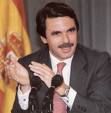
On May 4, 1996 Jose Maria Aznar (1953-) becomes PM #76 of Spain (until Apr. 16, 2004), its first conservative leader since Franco (1975).
In Dec. 1997 the Saudi royal family builds a massive white mosque at the foot of Gibraltar in the British Overseas Territory of Gibraltar - a proclamation of the coming Reconquista?
On Sept. 16, 1998 the Basque separatist group ETA announces an "indefinite" ceasefire in its 30-year war of independence from Spain which has killed 800+.
On Mar. 11, 2004 the 2004 Madrid Train Bombings see 10 RDX bombs explode in quick succession across the commuter rail network in Madrid, Spain, killing 192 and injuring 2,050, becoming the deadliest terrorist attack in Europe since WWII; the Muslim response to the Jan. 2, 1492 ouster of the Moors?; the attack is linked to al-Qaida, incl. Moroccan immigrants in Spain; on Aug. 17, 2005 Serbian police arrest 22-y.-o. Abdelmajid Bouchar in connection with it; in May, 2004 Oregon atty. Brandon Mayfield (1966-) is arrested and jailed for two weeks by the U.S. govt., which admits it made a fingerprinting mistake and apologizes to him and his Egyptian immigrant wife, agreeing to pay him $2M.

On Mar. 14, 2004 opposition Socialists score a dramatic upset win in Spain's gen. election, claiming that conservatives brought on the Madrid bombings by supporting the U.S. war in Iraq, and on Apr. 16 Jose Luis Rodriguez Zapatero (1960-) becomes PM of Spain (until Dec. 21, 2011), going on to piss-off the George W. Bush admin. by pulling out Spanish troops from Iraq, but compensating by increasing troops in Afghanistan, legalize same-sex marriage, reform abortion law despite Vatican abortion, attempt peace negotiations with the separatist ETA, refurm the Statute of Catalonia, and attempt to appease Islam by co-sponsoring the Alliance of Civilizations with Turkish PM Recep Tayyip Erdogan.

On Nov. 20, 2011 elections in Spain boot out the Socialists in a landslide in favor of the conservative Popular Party led by Mariano Rajoy Brey (1955-), who on Dec. 21 becomes PM of Spain (until June 1, 2018).
In 2013 after petitioning the Holy See in 2004 and 2006 to allow Muslim prayers in the Cathedral of our Lady of the Assumption in Cordoba, Spain (formerly a mosque), and demanding it during a 2007 summit in Cordoba on "Ialamophobia" by the Org. for Security and Cooperation in Europe (OSCE), the Platform for the Mosque-Cathedral of Cordoba, backed by the Spanish Socialist newspaper El Pais presents a petition with 350K signatures, with the ultimate goal of seizing it for exclusive Muslim use?

On June 19, 2014 76-y.-o. king (since Nov. 22, 1975) Juan Carlos of Spain (b. 1938) abdicates in favor of his 46-y.-o. son Crown Prince Felipe of Asturias, who becomes king Felipe VI (1968-) of Spain (until ?).
On June 29, 2014 (1st day of Ramadan) the Islamic State of Iraq and Syria/Levant (ISIS/ISIL) releases an audio message by Abu Muhammad Al-'Adnani declaring a new Islamic caliphate under the name Islamic State (ISIS) (Daash), with leader Abu Bakr Al-Baghdadi (Ibrahim Awwad Ibrahim Ali al-Badri al-Samarrai) (1971-) as caliph, ordering all Muslims to pledge allegiance "so that you may return to [the position] you once held for ages", becoming the first such declaration in the Arab world since the fall of the Ottoman Empire, announcing "the end of Sykes-Picot"; on July 1 Al-Baghdadi announces that all Muslims capable of immigration to the Islamic State are required to do so; meanwhile the Syrian Observatory for Human Rights announces that ISIS crucified eight rebel fighters in Aleppo Province, Syria on June 28 for being too moderate; on June 30 the Islamic State raises its flag in Tell Abyad, Syria near Akcakale, Turkey; at the start of Ramadan Adnani announces a plan to reconquer Spain by 2020. On July 1 ISIS releases a video promising to liberate Spain, with the soundbyte: "Spain is the land of our forefathers, and Allah willing, we are going to liberate it, with the might of Allah."
On Feb. 17, 2015 the govts. of the U.S., U.K., France, Italy, Germany, and Spain issue a Joint Statement on Libya, strongly condemning all acts of terrorism incl. the murder of the 21 Egyptian Copts, which it only calls citizens.
In Feb. 2015 to deal with hundreds of thousands of Muslims incl. 15% radicals, Spain enacts a new penal code, with 35-year sentences for anyone carrying out a terrorist attack, 20 years for supplying weapons to terrorists, and 10 years for funding terrorist networks.
On Mar. 5, 2015 the Madrid Declaration on Developing Energy Interconnections is signed by Spain, France, Portugal, and the EU.
On June 24, 2015 Spain passes Law 12/2015 permititng Sephardi Jews with Spanish roots to apply for citizenship after a residency, causing U.S. crypto-Jews to race to beat the deadline.
In 2016 NATO launches its Very High Readiness Joint Task force, headed by Spain.
In 2017 the Muslim pop. of Spain is 2M, vs. 100K in 1990; there are 1.4K mosques in Spain (incl. 112 in Madrid), 21% of the total places of worship. In 2017 Spain receives 13K+ illegal immigrants from Africa, vs. 12K in 2016; Italy: 97K (vs. 181K in 2016, 600K since 2013). On Aug. 17 a jihadist van ramming attack in the Las Ramblas area of Barcelona, Spain kills 14 and injures 88; one terrorist is killed by police in a shootout, and two more are arrested; the driver is 22-y.-o. Younes Abouyaaqoub, who is killed by police on Aug. 21 in Subirats near Barcelona; ISIS claims responsibility; on Aug. 18 (early a.m.) another van ramming attack in Cambris, Spain 70 mi. S of Barcelona fails, and after it stops the police kill four knife-wielding jihadists with fake suicide vests; on Aug. 16 their bombmaking factory in Alcanar 120 mi. S of Barcelona exploded, killing one and injuring 16, forcing them to go with van ramming; the suspected ringleader is Ripoll imam Abdelbaki Es Satty; meanwhile Barcelona's chief rabbi Meir Bar-Hen utters the soundbyte: "This place is lost", urging his congregation to emigrate to Israel; Pawel Soloch of the Polish Nat. Security Office announces that Poland will no longer be accepting Muslim immigrants, with the soundbyte: "We are convinced by the latest attacks that there is a natural base for terrorists where a large number of poorly integrated Muslims live." On Oct. 27 Catalonia declares independence, causing massive celebrations, while the Spanish govt. declares it a criminal act; on Oct. 29 a pro-Spain demonstration is held in Barcelona.
On Feb. 9, 2018 a U.N. committee urges Spain to ban children under 18 from bullfights and bullfighting schools to prevent "harmful effects". On Apr. 15 hundreds of thousands of Catalan separatists rally in downtown Barcelona, Spain to demand the release of high-profile leaders. On Apr. 24 the jihadist cell Islamic Fraternity, Group for Preaching Jihad in Terrassa (30 km. from Barcelona), Spain is convicted of plotting a terrorist attack on Barcelona using intel from Operation Caronte (Greek ferryman of Hades). On May 4-5 Spanish sailors rescue 476 migrants from Africa on 15 small boats attempting to cross the Mediterranean Sea; meanwhile on May 6 the Spanish nonprofit group Proactiva Open Arms rescues 105 migrants near Libya. On June 1 after a corruption scandal, Spanish PM (since Dec. 21, 2011) Mariano Rajoy is ousted in a no-confidence vote in parliament, becoming the first in modern Spanish history. On June 7 Felipe V of Spain swears in a new pro-EU Spanish govt., with women holding most of the ministerial posts, 11 out of a cabinet of 17 under Socialist PM Pedro Sanchez, whose party holds only 84 out of 350 seats in congress. On June 10 new Italian interior minister Matteo Salvini orders Italian ports closed to a ship carrying 629 migrants, pissing-off French pres. Emmanuel Macron, causing Italy to threaten to cancel a planned summit with France; Spain takes the migrants in, docking the ship in Valencia, then forcing numerous students to vacate their paid accomodations to make room for them. On July 26 thousands of African migrants begin storming the fences between Morocco and Ceuta, Spain; on Aug. 22 seven policemen are burned by acid and quicklime thrown by the pesky migrants. On Sept. 23-Oct. 15 Category 1 (90 mph) Hurricane Leslie arises in the N Atlantic Ocean, merging with a frontal system on Sept. 25 and intensifying over the N Atlantic, becoming the strongest cyclone to hit the Iberian Peninsula since 1842, killing 1 in Portugal and 13 in France.
On Jan. 15, 2019 a jihadist cell in Catalonia, Spain is broken up after 100+ police raid five locations in Barcelona and Igualada, becoming a V for Operation Alexandra, launched May 2017. On Feb. 10 45K right-wingers and others protest in Madrid, Spain against PM Pedro Sanchez, demanding that he step down for his handling of the Catalonia crisis. On June 29 thousands protest in Madrid, Spain over the suspension of curbs on polluting cars, becoming the first rollback of an environmental policy by a major Euro city.